
- Best Hikes In The World
- Appalachian Trail
- European Hikes
- Nepal Hikes
- Patagonia Hikes
- See All Hikes
- Mount Kenya
- Mount Kilimanjaro
- Mount Toubkal
- See All Mountains
- South Africa
- New Zealand
- Switzerland
- United Kingdom
- Packing Lists

Annapurna Circuit – Nepal’s Classic Circuit Trek
Asia , Hikes , Nepal
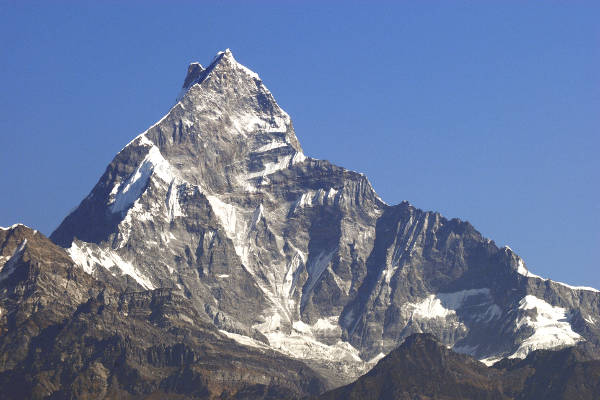
The Annapurna Circuit is one of the most popular and most epic treks in Nepal . This classic trek meanders through Himalayan foothills and over high passes, offering picturesque mountain views along the way.
Annapurna Circuit Trek
Route overview.
The Annapurna Circuit is one of the greatest treks in Nepal, if not the world.
Although road construction over the past two decades has severely impacted the trekking experience (more on this later).
Note: if you are a mountain biker, the road on the western side makes for one of the most exhilarating and scenic mountain biking experiences!
Where Does The Annapurna Circuit Start and End?
The trek begins at Besisahar (which is a 7-8 hour drive from Kathmandu) and concludes in the Kali Gandaki Gorge – the disputed highest gorge in the world that separates Dhaulagiri (8,176 meters) in the West and Annapurna (8,091 meters) in the East.
The circuit is traditionally followed on an anti-clockwise trail – for acclimatization reasons – that circumvents the Annapurna Massif. It takes trekkers through the Annapurna, Manang and Mustang region of central Nepal.
Route Details
At its pinnacle, the trek crosses the Thorung La Pass (5,416 meters) before descending down to the town of Muktinath. From here the road construction activities (2004 -2008/09) have had a measurable impact on the Annapurna Circuit trekking experience.
The Nepalese government have realized that the road on both the Western (Pokhara-Muktinath) and Eastern (Chame-Manang) side of the circuit has had a negative impact on trekking tourism. Thus, they have created a number of New Annapurna Trekking Trails (called NATT-trails).
These NATT-trails, marked blue and white or red and white, take trekkers away from the dusty and unpleasant roads. The alternative routes provide a much more pleasant trekking experience.
How Long Is The Annapurna Circuit?
The Annapurna circuit typically takes between 16-20 days to complete. This is depending if you decide to tack on a diversion to Annapurna Base Camp and the Annapurna Sanctuary ). It covers between 150-240 km depending on when you decide to end the tour or use transportation vehicles.
Scenery and Landscape
The scenery on the Annapurna Circuit is extraordinarily beautiful. Trekkers pass through rice terraced paddy fields, subtropical forests, and glacial environments.
You will see a number of major mountains including the Annapurna Massif (I-IV), three 8,000 metre peaks – Dhaulagiri (8,176 meters), Manaslu (8,156 meters) and Annapurna I (8,091 meters). There are numerous other peaks of 6,000 to 7,000 meters.
Please Note: The Annapurna Circuit is situated in the Annapurna and Mustang regions of central Nepal. It is home to the Annapurna Massif. The schematic below illustrates Nepal’s trekking regions (not to scale).
Annapurna Regional Map
The Annapurna Circuit is situated in the Annapurna and Mustang regions of central Nepal. It is home to the Annapurna Massif. The schematic illustrates Nepal’s trekking regions (not to scale)
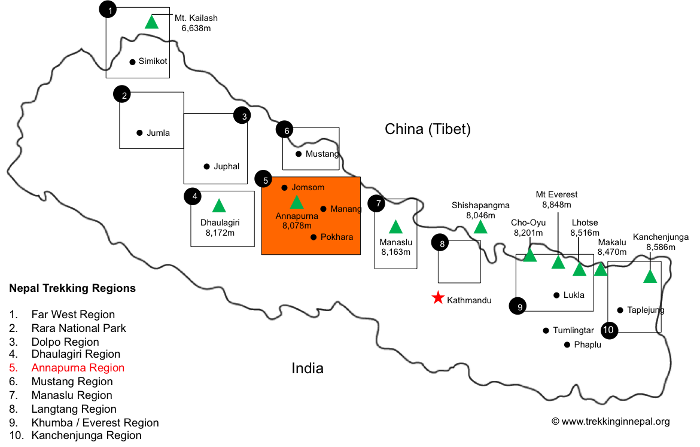
Annapurna Trek Altitude Profile
The schematic diagram below shows the route altitude profile for the Annapurna Circuit.

Annapurna Circuit Itinerary
Below is a detailed Annapurna Circuit itinerary. Where possible we have highlighted the NATT-Trails that can be used to avoid the road. Please note that this is a typical Annapurna Circuit itinerary. Some tour operators offer variations on this route.
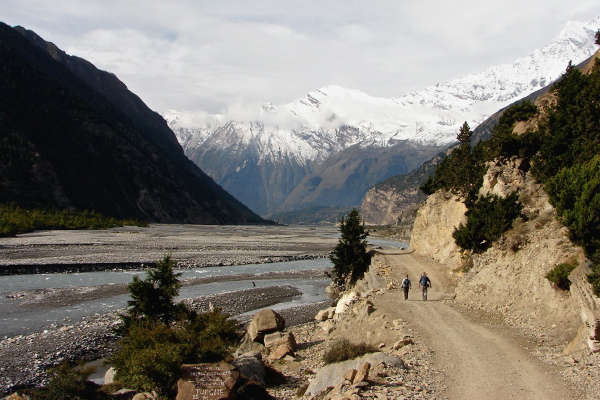
Day 1-2: Arrive Kathmandu (Drive to Besisahar / Fly to Pokhara)
Arrive in Kathmandu, usually spend a day sightseeing in the capital city.
See more in our guide on what to do in Kathmandu .
Drive from Kathmandu (1,300 meters) to Besisahar / Khudi (circa 800 meters) via bus. The trip takes between 7 and 8 hours, meandering through countryside villages.
The Annapurna Circuit typically starts at Besisahar, an hour’s trek from Khudi. Some operators may drive you to Khudi and commence the trek from there.
Day 3: Trek from Besisahar (820 meters) to Khudi and onto Bahundanda (1,310 meters)
Trek from Besisahar (820 meters) to Khudi and onto Bahundanda (1,310 meters). This traditional route has been impacted by the road construction so some operators have started using new trails that bypass the road. Instead, you go to the village of Sikrung (2,200 meters).
The latter is a fairly steep climb to a rather high altitude. But it does offer a more untainted Annapurna trekking experience. Expect to trek between 6-7 hours.
Day 4: Trek from Bahundanda (1,310 meters) / or Sirung (2,200 meters) to Jagat (1,300 meters) or potentially Chamje (1,410 meters)
Trek from Bahundanda (1,310 meters) / or Sirung (2,200 meters) to Jagat (1,300 meters) or potentially Chamje (1,410 meters). If on day 4 you followed the traditional route to Bahundanda, you will trek to Ghermu (1,130 meters) and onto Jagat. You might stay the night here or take a steep hour-long trek up to Chamje (1,410 meters).
We recommend staying the night at Chamje instead of Jagat, which is a dirty and crowded village. If on day 4 you stopped at Sikrung, you will likely follow a route via Syange (1,100 meters) to Jagat and up to Chamje.
Expect to see great rice terraced landscapes and views of the Manaslu Range during early stages of this day’s trekking.
Day 5: Trek from Jagat / Chamje (1,300 / 1,410 meters) to Dharapani (1,960 meters)
Trek from Jagat / Chamje (1,300 / 1,410 meters) to Dharapani (1,960 meters). Continuing north into the Manang region, you will trek through agricultural fields of corn and potatoes and then forests of rhododendrons.
Eventually reach the quaint village of Tal (1,700 meters). From Tal you will trek for another 6 kms (circa 3 hours) via Karte to the village of Dharapani (1,960 meters).
Day 6: Trek from Dharapani (1,960 meters) to Chame (2,710 meters) via Bagarchap and Danakyu, and then either along the lower trail or upper trail to Koto (2,640 meters)
Trek from Dharapani (1,960 meters) to Chame (2,710 meters) via Bagarchap and Danakyu, and then either along the lower trail or upper trail to Koto (2,640 meters).
From Koto you trek a further hour to the busy village of Chame. Some trekkers and operators prefer an overnight stay in the quieter village of Koto. On this rather steep trekking day you will get some great views of Annapurna II and IV, as well as Lamjung Himal.
Day 7: Trek from Chame (2,710 meters) to Pisang via Bhratang (2,850 meters) and Dhukur Pokhari (3,240 meters)
Trek from Chame (2,710 meters) to Pisang via Bhratang (2,850 meters) and Dhukur Pokhari (3,240 meters). From Dhukur Pokhari the trail splits and you may either trek to Upper Pisang (3,310 meters) or to Lower Pisang (3,250 meters) for an overnight stay.
If you take the latter to Lower Pisang we highly recommend re-joining the upper trail on day 8. This provides arguably the best views of the whole Annapurna Circuit.
Day 8: Trek using the upper trail from Pisang (3,310 meters) to Manang (3,450 meters) via Ghyaru (3,730 meters), Ngawal (3,680 meters), Humde (3,330 meters and Bhraga (3,450 meters)
Trek using the upper trail from Pisang (3,310 meters) to Manang (3,450 meters) via Ghyaru (3,730 meters), Ngawal (3,680 meters), Humde (3,330 meters and Bhraga (3,450 meters).
The mountain views on this portion of the Circuit are exceptional, as are the quaint villages along the trail. A visit to Barge monastery is worthwhile before the final stretch to Manang.
Day 9: Acclimatization day in Manang
Manang is one of the main towns on the Circuit. Many trekkers take this opportunity to spend a rest acclimatization day in the town.
Short excursions to the Gangapurna Lake and Bhojo Gompa (a Buddhist ecclesiastical fortification of learning) are common among trekkers. There are also day trips around the town. You might want to consider visiting the offices of the Himalayan Rescue Association for a talk on high altitude risks.
Day 10: Trek from Manang northwest out of the Marshyangdi Valley and up to the small village of Yak Kharka (4,110 meters)
Trek from Manang northwest out of the Marshyangdi Valley and up to the small village of Yak Kharka (4,110 meters). If you haven’t started feeling the effects of altitude yet, you might start doing so from today. Some trekkers continue onto the tiny village of Letdar (4,200 meters). Teahouse accommodation is limited in both these villages.
Day 11: Trek from Yak Kharka (4,110 meters) to High Camp (4,850 meters)
Trek from Yak Kharka (4,110 meters) to High Camp (4,850 meters). This is a fairly tough and steep day. Some tour operators will stop for the night at Thorang Phendi (4,450 meters). This is a good idea if trekkers are struggling with the altitude.
However, continuing on to High Camp is, in our opinion, preferable. This is because it makes the next day’s treks to Muktinath (3,800 meters) a lot shorter and easier. Accommodation facilities and amenities in Thorang Phendi and High Camp are both good. Please note: continuing onto High Camp means sleeping at high altitude, which is not advised if you are suffering from acute mountain sickness (AMS) symptoms .
Day 12: Trek from High Camp (4,850 meters) across the Thorung Pass (the highest point on the trek at 5,416 meters) and then back down to Muktinath (3,800 meters) via Charabu (4,230 meters)
Trek from High Camp (4,850 meters) across the Thorung Pass (the highest point on the trek at 5,416 meters). You then go back down to Muktinath (3,800 meters) via Charabu (4,230 meters). Prepare for a tough, icy-cold day of trekking. The descent from Thorung Pass is steep and trekking poles come in handy. Muktinath, although an important pilgrimage site for both Hindu’s (see the Vishnu Temple) and Buddhists (see the Monastery), is a rather characterless village. Depending on your operator, you will likely stay overnight in Muktinath. For independent trekkers, the Bob Marley Guesthouse in the center of town is a great shout!
Day 13: Trek from Muktinath (3,800 meters) to Marpha (2,665 meters) via the awesome village of Kagbeni (2,800 meters)
Trek from Muktinath (3,800 meters) to Marpha (2,665 meters) via the awesome village of Kagbeni (2,800 meters). From Kagbeni to Jomsom we recommend taking a jeep to avoid the unpleasant dusty roads.
Once you get to Jomsom you can join the ne NATT-trail (which is 2 hours longer than the road option) to Marpha. Marpha is famous for being the centre of the apple region in Nepal. Do try the apple brandy if you get a chance.
Day 14: Trek from Marpha (2,665 meters) to Kalopani (2,530 meters), via Chokhopani, and continue to Kokhethanti to avoid the road
Trek from Marpha (2,665 meters) to Kalopani (2,530 meters), via Chokhopani, and continue to Kokhethanti to avoid the road. Some trekkers grab a jeep from Marpha all the way to Tatapani (see day 15).
Day 15: Trek from Kolapani (2,530 meters) to Tatapani (1,200 meters)
Trek from Kolapani (2,530 meters) to Tatapani (1,200 meters). Using a new NATT-trail (marked in red and white), you can avoid the road and follow a trail that climbs steeply before joining a path that will take you through the towns of Kopochepani, Rupsechhahara, Dana and finally Tatapani.
Day 16: Trek up from Tatapani (1,200 meters) to Ghorepani (2,870 meters)
Trek up from Tatapani (1,200 meters) to Ghorepani (2,870 meters), via the towns of Ghara, Sikha and Chitre. You will most likely stay overnight in Ghorepani in preparation for an early start the next day.
Day 17: Trek from Ghorepani (2,870 meters) up Poon Hill (3,870 meters) and back down to Tadapani (2,710 meters)
Trek from Ghorepani (2,870 meters) up Poon Hill (3,870 meters) and back down to Tadapani (2,710 meters). You will start this days trekking early so as to get up Poon Hill for the impressive sunrise. First light illuminates surrounding rice terraces and Annapurna and Dhaulagiri massifs. The classic Annapurna Circuit trek then descends to Tadapani for an overnight stay.
Note: we have heard that instead of heading up Poon Hill, the hill opposite in the direction of Chomrong provides an equally impressive (if not better view) without any crowding issues.
Day 18: Trek from Tadapani (2,710 meters) to Naya Pul (1,070 meters) via Gandruk and then catch a short bus ride back to Pokhara
Trek from Tadapani (2,710 meters) to Naya Pul (1,070 meters) via Gandruk and then catch a short bus ride back to Pokhara. This is the end of the Annapurna Circuit and an extraordinary 18 days!
Note: It is possible to follow the old Annapurna Circuit from Ghorepani to Phedi via Landruk, although this takes an extra 2 days compared to the direct exit from Ghorepani to Naya Pul.
Please Note: From Muktinath onwards the classic Annapurna Circuit has been severely impacted by the road that joins Jomsom to Muktinath. If you choose to trek this route be prepared for an unpleasant and dusty experience, as jeeps wiz by you. Thankfully there are alternative options via the New Annapurna Trekking Trails (NATT-trails).
Suggested route options from Muktinath
If you are not on a set tour we suggest the following route:
- Trek to the charmingly wonderful town of Kagbeni (2,800 meters) for an overnight stay. We recommend taking the high trail out of Muktinath via Jhong, as this offers better mountain views
- From Kagbeni to Jomsom take a jeep as dust driven from the common winds in this region and the constant flow of vehicles on the road make for unpleasant trekking
- From Jomsom take the new NATT-trail (marked in red and white) to Marpha (2,665 meters) where you can stay overnight and then continue following the route set out from Day 13 below
Also Note: As the road starts in Muktinath, you can cheat and catch a truck all the way to Jomsom. Continue your trek or catch a flight to Kathmandu if you need to shorten your trek (we highly recommend not skipping Kagbeni though). You can also get a bus from Muktinath all the way back to Pokhara if you have run out of time. If you are a mountain biking fanatic you can rent a mountain bike to take one of the most amazing rides down and out of Muktinath – this area of Nepal is fast becoming mountain biking Mecca
Annapurna Route Variations
There are a number of route variations on the Annapurna Circuit. Here are three worth mentioning.
If you don’t have much time in the Annapurna Circuit you may want to consider the Poon Hill Trek , The Royal Trek or the Ghorepani Poon Hill Trek (also called the small Annapurna Circuit). Nepal is heaven for trekkers and has some of the best thru-hikes in the world .
- Annapurna base Camp Trek
- Naar-Pho Valley
- Tilicho Lake
It is possible to include a five day diversion to Annapurna Base Camp onto the Annapurna Circuit trek. This involves continuing north from Tadapani so as to join the old Annapurna Circuit at Landruk.
Read more about the Annapurna Base Camp Trek
A variation to the Annapurna Circuit that has been growing in popularity since opening to foreigners in 2002 is the Naar-Pho Valley.
The route begins near Koto (on day 5/6 of the classic Annapurna Circuit) and follows a trail via two distinctly Tibetan villages – Phugaon and Naar – which are both located at over 4,000 meters. After nine days trekking the route exits via the Kang La Pass (5,300 meters) to Ngawal, where you re-join the Annapurna Circuit on your way to Manang. The detour via the Naar-Pho Valley in effect adds seven days to the traditional Annapurna Circuit as you would have spent two days trekking from Koto to Ngawal and on to Manang had you stayed on the main track.
A special permit, which can only be organised through a trekking agency, is required to enter the Naar-Pho Valley. You will also need to take a guide as tourist infrastructure is poor. Most trekkers opt for the traditional camping style of trekking with porters, tents and cooks.
A 3-4 day trek to Tilicho Lake (4,920 meters), one of the highest lakes in the world, has become a relatively popular diversion on the Annapurna Circuit.
The trek starts in Manang, and follows a path on the northern side of the valley to Khangsar (note: there are maps that show a path on the southern side of the valley but we recommend avoiding this as it is in poor condition and prone to landslides).
From Khangsar there are two paths that leave the town – the lower and upper path. Take the upper path, as it is safer, until you reach Shree Kharka where you can overnight at one of the two teahouses there.
From Shree Kharka walk about 45 miuntes until you reach point where the path splits into a lower and upper trail. Make sure to take the lower trail (the upper trail is marked ‘Danger’). A further 3 hours trekking and you will arrive at Tilicho Base Camp where you can stay overnight at one of the teahouses.
Depart Tilicho Base Camp early the next morning to avoid the high winds and clouds that roll in by mid-morning. The trek up to the lake is steep and tough. It takes about 3 hours and can be very cold due to the altitude, so dress warmly. The descent follows the same path back to Base Camp (approx. an hour) or to Shree Kharka (4 hours from the lake). Overnight at Shree Kharka.
The next day take a trail (which is signposted) directly to Yak Kharka via Old Khangasar, where you re-join the Annapurna Circuit.
Recommended Guidebook

Need an up-to-date guide book with maps that include the NATT-Trails? We recommend either Andrées de Ruiter and Prem Rai’s guide, Trekking the Annapurna Circuit , or Sian Pritchard-Jones and Bob Gibbons guide, Annapurna: A Trekker’s Guide .
Annapurna Circuit FAQ
How much does it cost to hike the annapurna circuit.
The cost of an Annapurna Circuit varies depending on which route variation you take. It also depends when you trek (out of season tends to be a little cheaper) and whether to trek with a local or western trekking agency, or indeed independently.
We have provided a detailed Annapurna Circuit Cost article here but in summary you should budget for the following key expenses:
Visa, Vaccinations, Insurance etc: ~$300-$500
Equipment (buying and hiring): ~$500-$800
Flights to Kathmandu: ~$1,000
Tour Agency: ~$1000 for a cheap local agency to ~$3,000 for a pricey Western trekking agency. You could do an independent trek for ~$700 employing a local guide
check out our list of Nepal trekking companies recommendations .
Tips: ~$200-$300
Misc (additional food, unplanned travel / hotels ect): $200
Total Costs: $2,500 – $5,000
Do I need a permit for the Annapurna Circuit?
Yes. An Annapurna Conservation Area Project permit and Trekker Information Management System registration are required for the Annapurna Circuit trek.
If you are joining an organised tour, these will be arranged for you. If you are looking to go it alone you will have to bring four passport-sized photographs and go to the offices of the Nepal Tourism Board in Kathmandu to apply. We recommend bringing copies of your passport and insurance policy. The offices follow government working hours and days, and are not open on Sunday.
When is the best time to hike the Annapurna Circuit?
The best time to trek the Annapurna Circuit is either in the Spring (March to Mid May) or in the Autumn (mid / late September to December). Unfortunately these also happen to be the busiest times of the year as they are the best time for Nepal trekking ..
Towards December the weather starts getting particularly cold and the routes get distinctly quieter. If you are a hardened trekker a winter Annapurna Circuit (late December through February) can provide a very authentic Nepal trekking experience.
The main challenge of a winter trek, apart from the cold, is the snow and ice that often obstructs the higher trails and the Thorung Pass. During bad winter seasons these trails may be closed.
Unlike the Everest region that gets very wet during the rainy monsoon season, the Annapurna and Mustang regions stay relatively dry, making June through September, a relatively good time to trek as well.
Here’s a detailed article on weather on the Annapurna Circuit .
Is altitude sickness a risk on the Annapurna Circuit?
Yes, some trekkers do suffer from altitude sickness on the Annapurna Circuit as it is a high altitude trek. At its highest point, Thorung Pass, you will reach an altitude of 5,416 meters (17,769 feet).
Fortunately because of the circuits length the opportunities for appropriate acclimatisation are good. Hence, the prevalence of moderate or sever altitude sickness is low.
Nonetheless, it is important to have a detailed understanding of the risks associated with high altitude trekking and how the body acclimatises.
We recommend you read our detailed article on Altitude Sickness and Acclimatisation .
How difficult is the Annapurna Circuit hike?
The Annapurna Circuit trek is challenging. You will be trekking for 4-7 hours a day for over two weeks, so you will need to be peak physical condition. The best way to prepare is to get as many kilometres under foot on hikes in your home country.
What do I need to pack for the Annapurna Circuit trek?
Trekking in the Annapurna region requires a number of essential pieces of trekking clothing and equipment. AC is a long and tough trek. You will be exposed you to a range of altitudes where temperatures fluctuate dramatically between night and day.
Many pieces of equipment can be rented or bought in Kathmandu or Pokhara. Even so, we recommend bringing the most important pieces of gear with you.
We've written a detailed Annapurna hiking packing list .
Insurance Information
Trekking insurance is a must in Nepal. This is particularly the case in the Annapurna Region, which at stages is very remote. If an accident should occur that requires medical assistance and evacuation you will definitely want trekking insurance that can cover the costs of air ambulance and treatment.
Moreover, it is prudent to have insurance that covers you for any travel related risks. insurance should cover stolen, damaged or delayed baggage; flight delays and interruptions; and tour operators default.
This article on travel and trekking insurance in Nepal provides detailed information on what type of insurance you need.
About the author
Mark Whitman
Mark has trekked extensively in Asia, Europe, South America and Africa. He founded Mountain IQ in 2014 with the sole aim to be the best online information portal to some of the most popular mountain destinations around the world. When not writing for Mountain IQ, Mark is out exploring the outdoors with his wife!
Leave a Reply
Your email address will not be published. Required fields are marked
Thanks for the useful information. Really helpful!
Hi Mark, this is a really nice blog with very comprehensive information!!
I'd like to do the trekking on my own, as an independent trekker, but I've heard that there are some new regulations comming for this year (2023) and that a local guide or agency is mandatory to do the central part of the annapurna circuit. Also, that the TIMS can not be got by independent trekkers but only if you hire an agency. Would you have any up to day news about it?
Hi Daniel, thanks for checking in. I’m not aware of the new regulations, but it is definitely possible. Nepal authorities have been talking about this for years. Here’s the latest from the Guardian: https://www.theguardian.com/travel/2023/mar/30/nepal-imposes-ban-on-mountain-trekking-without-a-guide
We work with local guides to offer great value adventures at unbeatable prices
- Meet the Team
- Work with Us
- Czech Republic
- Netherlands
- Switzerland
- Scandinavia
- Philippines
- South Korea
- New Zealand
- South Africa
- Budget Travel
- Work & Travel
- The Broke Backpacker Manifesto
- Travel Resources
- How to Travel on $10/day
Home » Asia » Nepal » The Annapurna Circuit and Beyond: Ultimate Guide to Hiking in Nepal (2024)
The Annapurna Circuit and Beyond: Ultimate Guide to Hiking in Nepal (2024)
Until 1951, Nepal was off-limits for foreign travellers; a secretive, isolated kingdom kept under wraps from outsiders…
But a change of regime gave birth to a new era of travel, and Nepal has remained a magnet for intrepid adventurers for over 70 years.
It was the summiting of Annapurna I – before that of Everest – that captivated the world of mountaineering and turned the spotlight on Nepal as an outdoor-lover’s haven in the Indian subcontinent.
This guide will offer everything you need to know to explore the majestic Annapurna region and get to grips with experiencing Nepal on foot. There’s a magical culture of generosity and kindness to discover, against a backdrop of some of the most impressive peaks to be found anywhere on earth.
There are three main routes we’ll cover here – the Annapurna Circuit , the Annapurna Base Camp ( Sanctuary ) trek, and the Mardi Himal Trek . These are each superb journeys in their own right, and escape the much heftier permit fees that visits to some parts of the Annapurna Conservation Area require.
Read on for all you need to wander your way through the Annapurna massif.
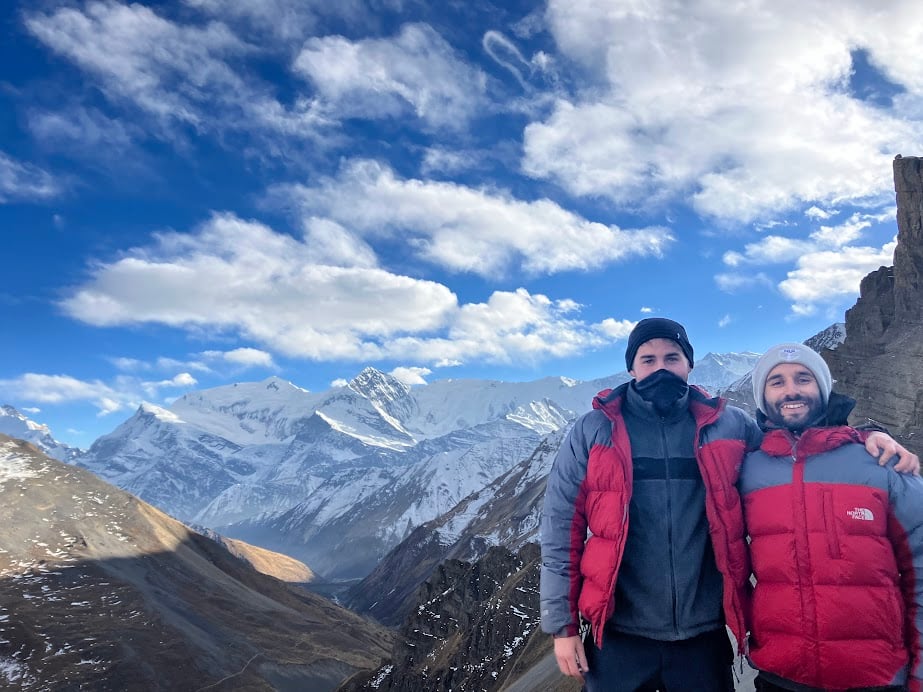
Do You Want to Travel FOREVER??
Pop your email in below to get a FREE copy of ‘How to Travel the World on $10 a Day!’.
Where is the Annapurna Region?
A household name when it comes to backpacking Nepal , the Annapurna Conservation Area covers nearly 3000 square miles of stunning terrain, and spans five districts in the central part of the country.
This includes the Annapurna massif, a monstrous range of mountains home to thirty peaks over 6000m. Here you’ll find Annapurna I , the tenth-highest mountain in the world, and the first over 8000m on earth to be summited.
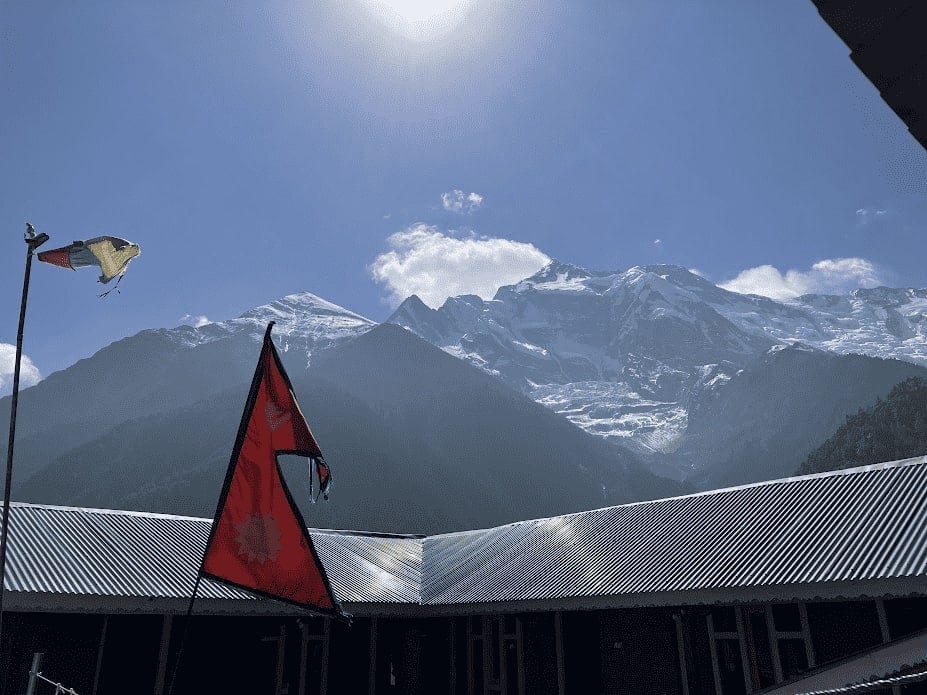
If that’s not enough, the Khali Gandaki gorge – which the Annapurna Circuit weaves through – is believed by many to be the deepest gorge in the world . Across the gorge lies Dhaulagiri , the world’s seventh-highest peak at 8167m.
As you’d expect, it’s a ridiculously impressive and unique part of the world that feels almost ethereal at times.
The starting points for most treks in the area are easily reached from Pokhara . This backpacker hangout is also an ideal place to sort your stuff. Shop for nearly-genuine but well-made outdoor equipment for your foray into the mountains, and stash any surplus travel gear while you’re away.
When is the best time to visit the Annapurna Conservation Area?
There are two main trekking seasons in Nepal: Autumn and Spring .
The Autumn season includes September, October and November , when clear skies should permit superb panoramic views of the jagged skyline. Temperatures are typically quite mild and the chances of heavy snow are relatively low. The trail and teahouses may well be quite lively. Across October, you’d also catch the festivals of Dashain and Tihar , giving rise to an abundance of kites, lights, and bamboo swings.
The Spring season covers March , April and May . As it melts, the preceding snowfall breathes new life into the rhododendrons (Nepal’s national flower), and, like Autumn, the temperatures should be manageable. The weather can be changeable, however. For example, this year, a relatively dry and mild February gave way to heavy snow and extremely nippy weather throughout March. Pack wisely, whatever season you’re aiming for.
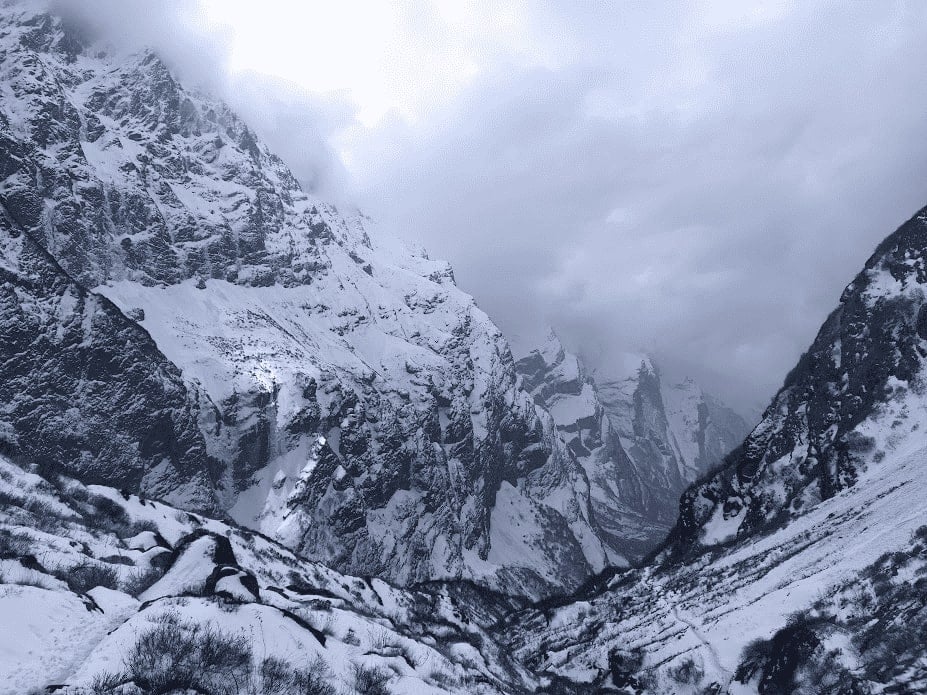
Trekking in Winter is less common, but certainly possible: December, January and February can be uncompromisingly chilly. We’re talking lows of minus 20 degrees Celsius. On the Circuit, be prepared for the possibility of days spent in teahouses waiting for the pass to reopen, and invest in a proper winter sleeping bag (read on for the low down on gear).
But there are enough teahouses that remain open to take on the treks discussed here, and your resolve will be rewarded with clear views of snow-capped peaks and a relatively empty trail.
Last and least appealing, is the monsoon season ( June, July and August) . The rains obscure the views, the trails become sodden and mudslide-y, and the leeches come out to nibble. (If you want to trek in the summertime, you’re better off heading to the Karakoram Mountains of Pakistan , the Indian Himalayan region, such as Ladakh or Himachal Pradesh, or Nepal’s Upper Mustang which is protected from the rains.)
Introducing the Routes…
I would urge you not to overthink which trek to do: the main thing to consider is time, as something like the Circuit takes a good chunk of the calendar, and it’s better not to be rushing around. Each route has its charms and challenges, which are likely to change on each and every journey on foot. Read on and see which takes your fancy.
1. The Annapurna Circuit
The Annapurna Circuit Trek is one of the most renowned and cherished trekking routes in the world, found on many travellers’ bucket lists.
First opened in the late 70s, the circuit takes you high into the Annapurna massif and right to the edge of the Tibetan plateau, crossing the Thorong La Pass at 5417m. This is one of the highest mountain passes in the world . Not too shabby.
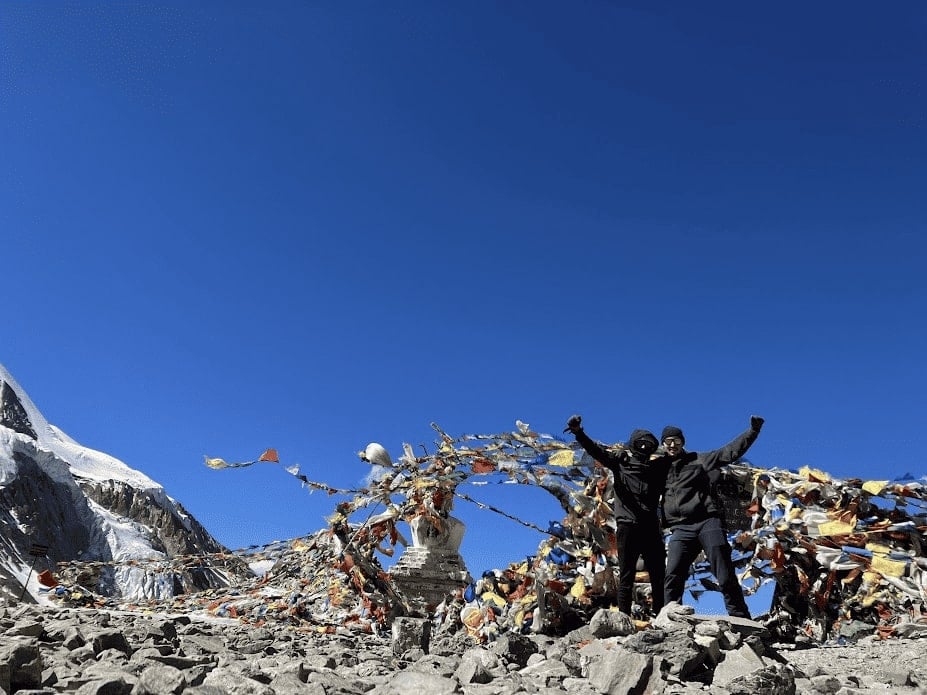
The circuit is a significant undertaking. Completing the full route usually takes around three weeks. However, this can be shortened by taking a jeep up and down the valleys either side of the pass for some of the way…
If you have time, it’s certainly worth going all in by starting in Besisahar and finishing in Nayapul. It’ll be better for both the body and gaining respect from hippie-trail hikers who did it back in the day…
Get ready for a stunning stroll: the Annapurna Circuit is a classic for a reason.
How many days does the Annapurna Circuit trek take?
The full circuit takes around 20 days, while variations on the route can massively reduce the distance covered and time taken to around 10 days.
It may be tempting to skip walking parts of the ‘road’ section, but to be honest, the traffic is usually minimal on the track and the views are still excellent so don’t be too quick to hop in a 4×4. Climbing from the original start point of Besisahar or nearby will pay dividends in terms of acclimatisation.
Suggested Annapurna Itinerary and Notes
The trail is well supplied, with teahouses scattered relatively frequently along the path. The below table contains a suggested itinerary but can also be used to plan your own, using the village names, altitude and distances between them.
Keep things flexible on your trek, both by stretching, and building in some leeway in case you need an extra day of acclimatisation (or just don’t fancy leaving the hot springs in Tatopani).
How do I visit Tilicho Lake?
On the Annapurna Circuit, you’ll have the option for an out-and-back trip to Tilicho Lake, the highest glacial lake in the world !
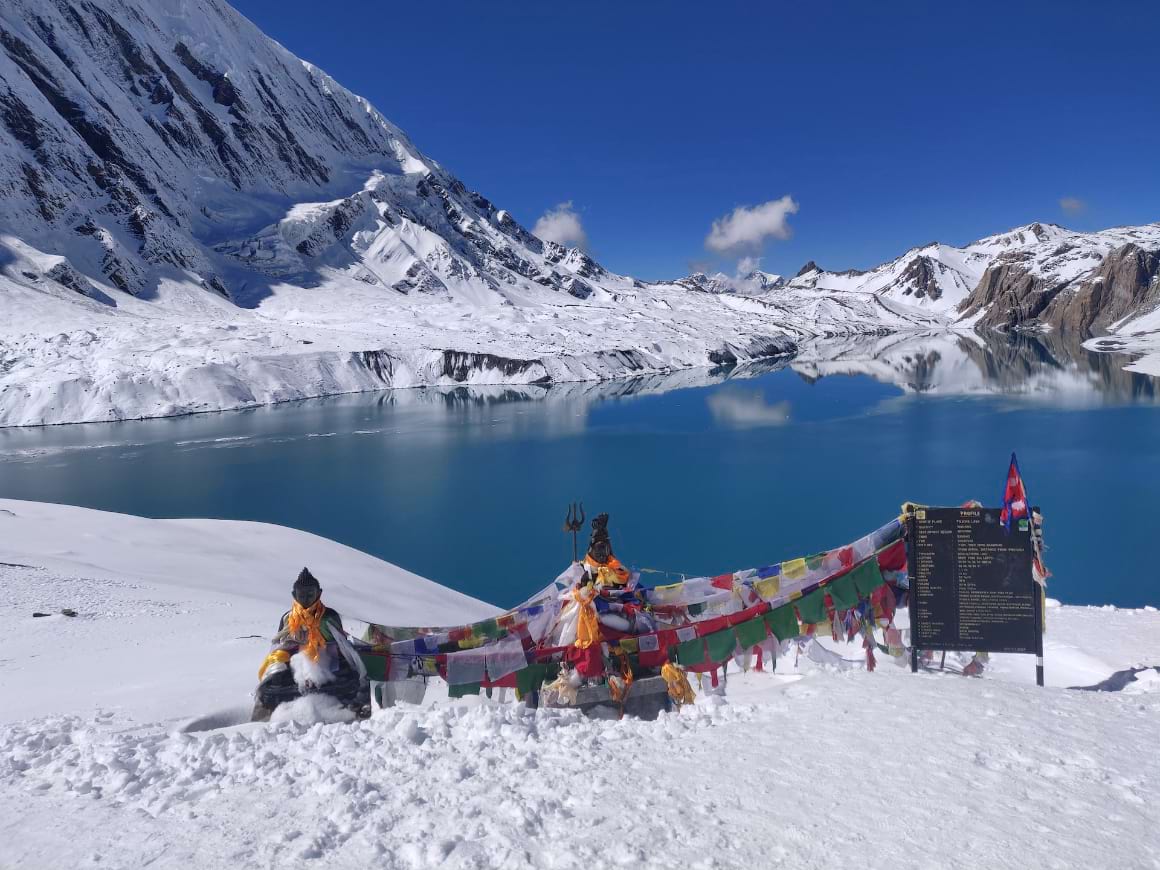
It’s not an easy side-quest. You’ll start from Manang at 3519m, and climb up to above 4900m to reach Tilicho, usually over two or three days. Along the trail you’ll find Shree Karka and Tilicho Base Camp for overnighting, as you can’t stay at the lake itself.
In winter, don’t be too surprised or disappointed if the water is frozen…it’ll still be a wicked couple of days out.
2. Annapurna Base Camp (Annapurna Sanctuary)
The Annapurna Base Camp lies right in the heart of the ‘Annapurna Sanctuary ’ which is a protected area but not an official Nepali national park .
The full trek can be completed in around a week, covering 100km and reaching 4130m, although route variations can be made.
This place is something special, both physically, and culturally. Held as sacred by the Gurung people, this glacial basin is only accessible via a thin pass between the peaks of Hiunchuli and Machhapuchhre .
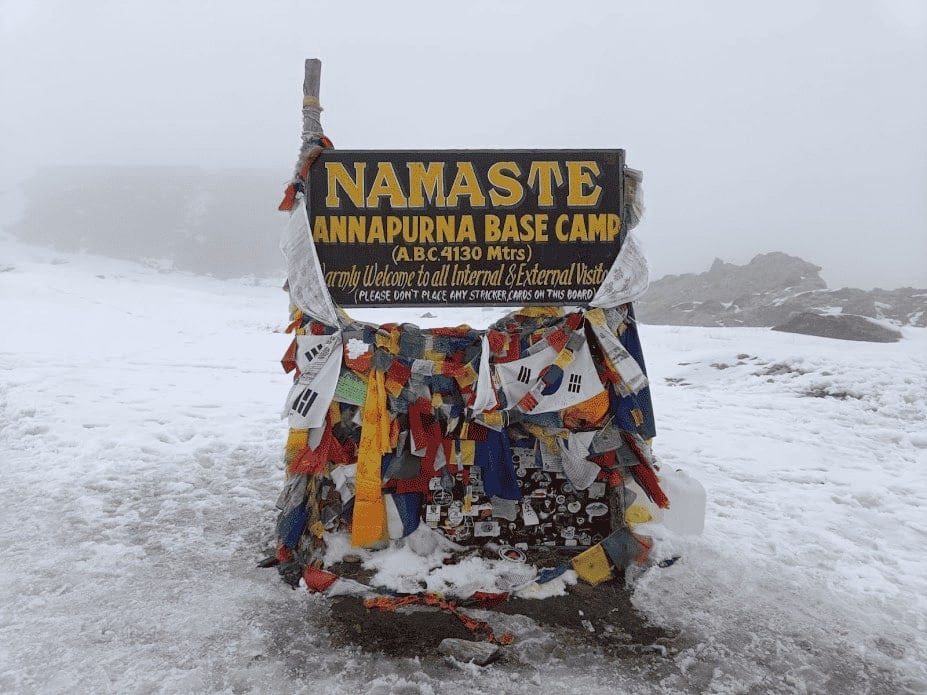
The Base Camp itself can feel quite bizarre. You’ll find statues of climbers lost on epic expeditions in years gone by, yet today, you might wake up to skiers and wedding parties being dropped off by helicopter to catch the morning sun…
However, you’ll sip your chai with a sense of satisfaction having reached this surreal spot on foot and braving the weather. Watching the sunrise hitting the dramatic skyline is a just reward for taking on this outstanding Nepali adventure.
How many days does the Annapurna Base Camp (Sanctuary) trek take?
The Annapurna Base Camp trek can take between 7-10 days, depending on fitness, whether you’ve previously acclimatised to the altitude, and route options. See the suggested itinerary below for inspiration, but don’t be afraid to use the list of villages to create your own plan (being mindful of altitude gain).
Suggested Itinerary and Notes
It would be very difficult to get lost on the Annapurna Base Camp trek, as all villages tend to lie on the single trail leading to the basin. A list of places to stay can be found below.
Popular ‘linkages’ include adding on a day at Ghorepani for a sunrise at Poon Hill, or joining the Base Camp route at Ghorepani having completed the Annapurna Circuit anti-clockwise.
These options are noted on the table below.
3. Mardi Himal
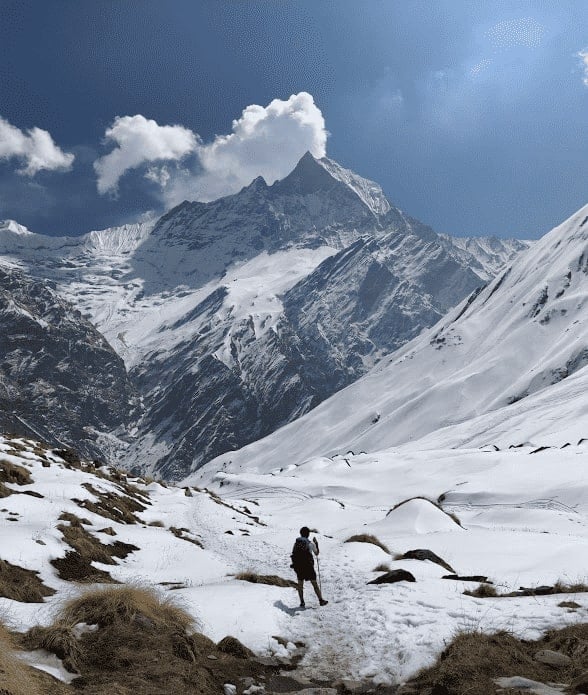
Mardi Himal is a relatively new trekking route, and it’s an absolute cracker.
On the Annapurna Base Camp trek, you look across the valley at an imposing landscape that appears unattainable. This is where the Mardi Himal route takes you.
Passing through rich rhododendron forests, you’ll eventually reach the High Camp teahouses, which seem to be dotted precariously on the ridgeline. It’s a truly remarkable place , and the final push to Mardi Himal Base Camp is equally majestic.
Plus, if you’re short on time, the trek can be completed in well under a week, and the Himalayan views are up there with the very best to be found.
What’s not to like?!
How many days does the Mardi Himal trek take?
The Mardi Himal trek is usually completed in 4 days. The elevation gain is quite fierce if you head straight from Forest Camp to High Camp, so if you’re struggling at all with fitness or the altitude, add in an extra sleep at Low Camp.
For the immersion in the mountains you’ll be rewarded with, this it’s a superb shorter trek option that’ll take you up to 4500m.
Like with the other routes discussed, you can use the following list and a paper map to devise your own plan, however, you can’t sleep at the Base Camp, so sleeping at High Camp is certainly the best option.
The itinerary for the way back just depends on personal preference and speed, but don’t go so quick you miss savouring the views.
After an early out and back to Mardi Himal Base Camp, you can then stay again at High Camp.
Alternatively, there’s certainly time to continue back down the trail towards Low Camp, or even get a 4×4 back to Pokhara that same evening from Sidhing (public bus from Lumre) if you’re speedy.
Beware, in the depths of winter or otherwise, if the snow is thick, it may well be that reaching the Base Camp isn’t possible and that the Upper Viewpoint stops you in your tracks. The trail can easily disappear in the snow and clouds, and it can become unclear what is solid ground and what is the edge of a steep drop.
Don’t take stupid risks at this point in trying to push on. Even if the viewpoint is the furthest trekkable point, it’s still super exciting being up on the ridgeline freshly covered in snow.
The Mardi Himal Trek is gaining in popularity, and rightly so. It almost feels as though you can reach out and touch Machhapuchre (‘fishtail’) from the upper reaches of the trail, while the dense forest below provides some cool variation in terrain.

We’ve tested countless backpacks over the years, but there’s one that has always been the best and remains the best buy for adventurers: the broke backpacker-approved Osprey Aether and Ariel series.
Want more deetz on why these packs are so damn perfect? Then read our comprehensive review for the inside scoop!
A Few Other Options in Annapurna Region…
Here’s a quick overview of some other trekking routes in the region to consider. There are so many ridiculous spots in this area, grab a map and head somewhere – it’s likely to be a winner.
4. Manaslu Circuit
An epic 12-14 day excursion over the Larke Pass, reaching 5100m . This route is more expensive than the Annapurna Circuit, as additional permits are required.
These include the Annapurna Conservation Area Permit (needed for the ABC, ACT and MH treks too), the Manaslu Conservation Area Permit (MCAP), and a Restricted Area Permit (RAP). During the Autumn season (September to November), the RAP is $100 for the first week and then $15 for each extra day in the restricted area.
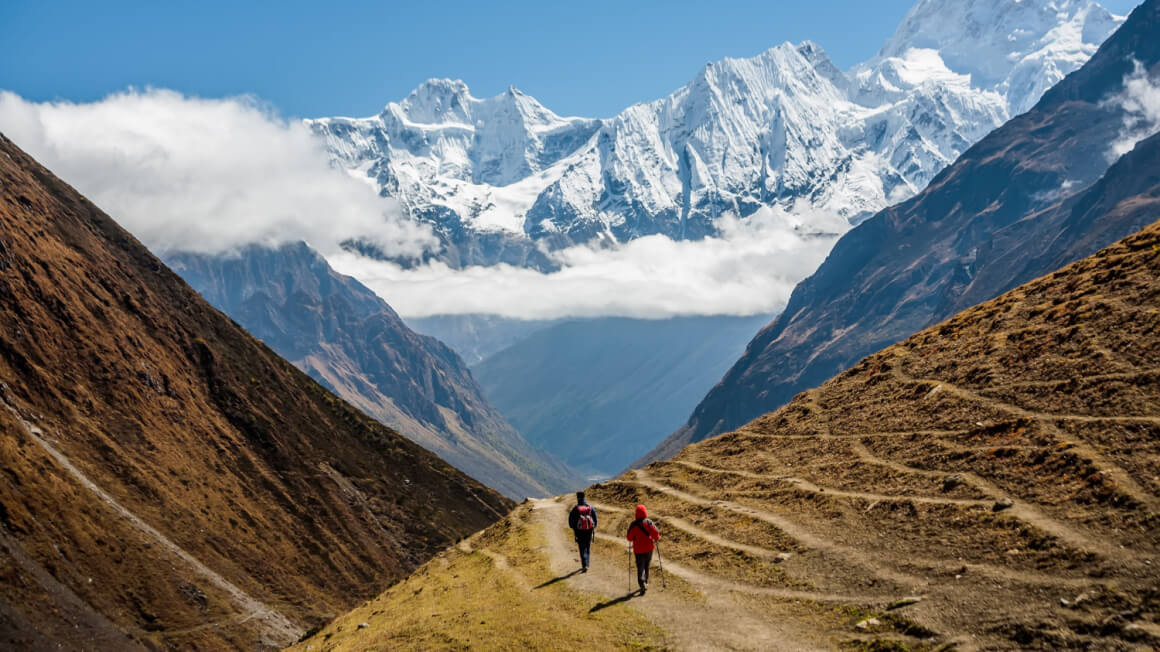
These figures are lowered to $75 and $10 for the rest of the year. It’s also rightly essential to take a guide on this route – this was always the case, well before the recent rule changes, due to the area being restricted and more remote than other routes.
If you’re able to shell out for the permits and guide, this beast of a trek is guaranteed to be a grand adventure.
5. Poon Hill
Poon Hill is an introductory-level trek, over 3 or 4 days. The climax is waking up early in Ghorepani to witness sunrise at Poon Hill, offering panoramic views of both Annapurna and Dhaulagiri.
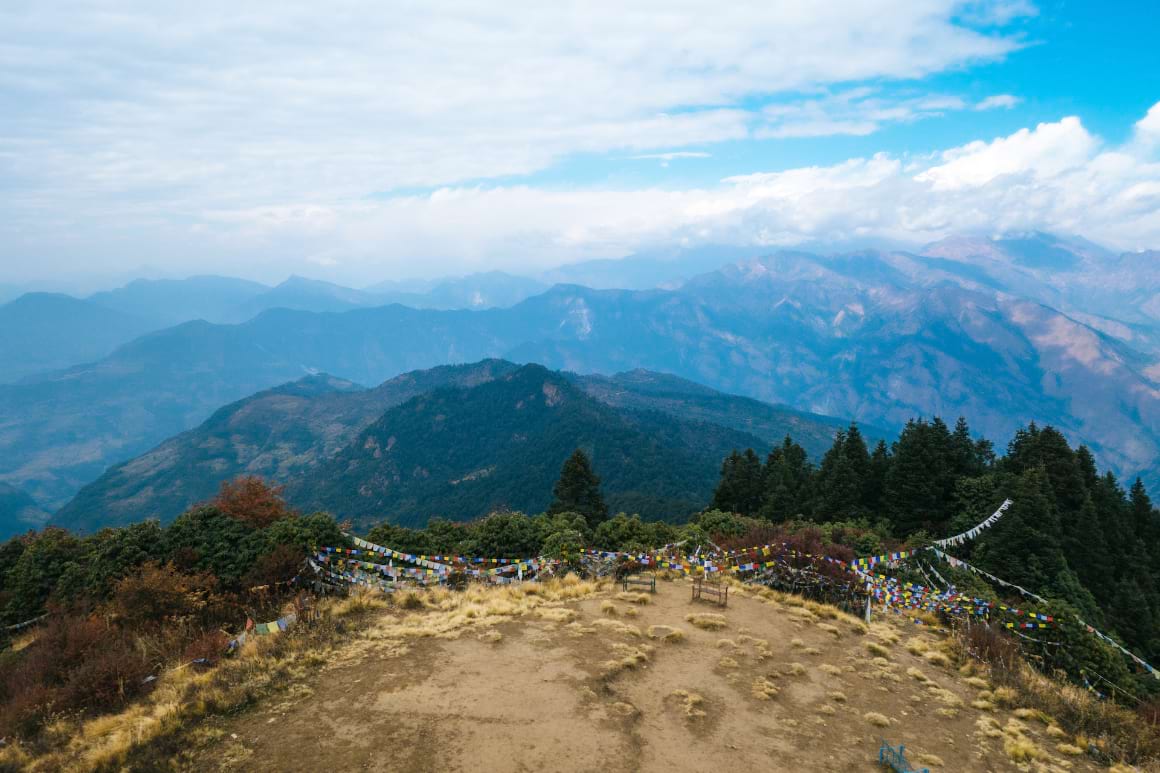
Be ready for a chunky number of stairs on the first day from Nayapul, and some potentially busy trails: this route can become quite a highway in busy season. But if you’re short on time or new to trekking, the reward/effort ratio is strong as the views are still spectacular.
6. Mohare Danda
A fantastic alternative option for a short trek, just outside the Annapurna Conservation Area, which requires no permit or guide! The route is much more off the beaten path than the likes of Poon Hill, which means quieter trails, more peace and lower costs. It is outside the Annapurna Conservation Area, but still affords enviable views of the Himalayan ranges.
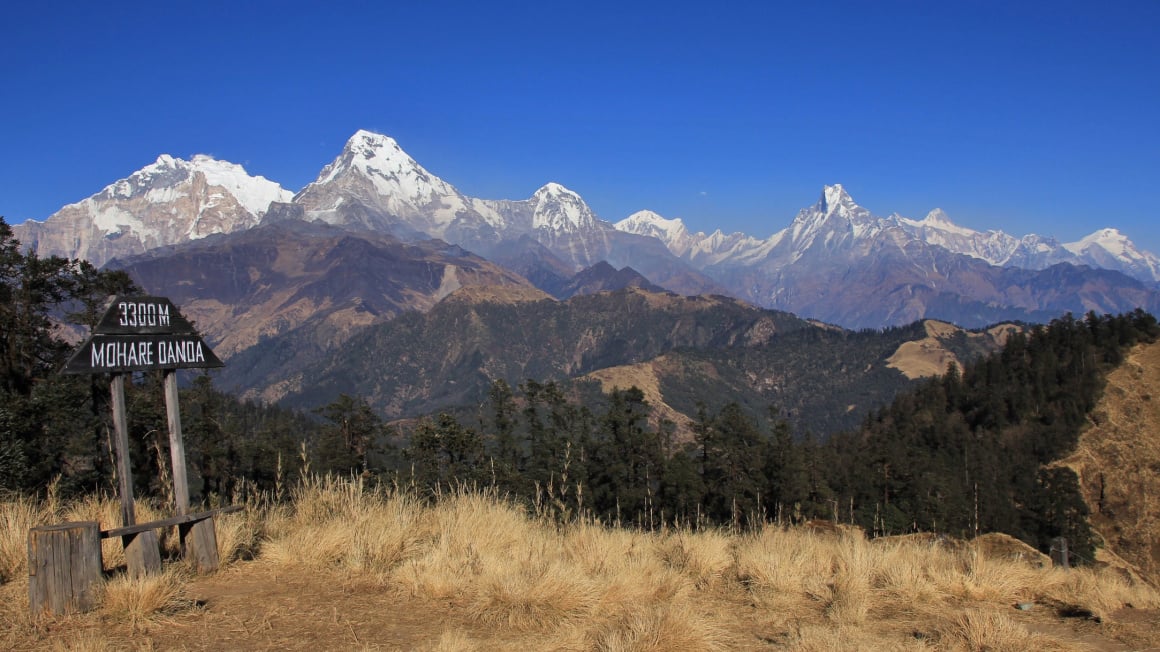
This 3-4 day route is reached from Pokhara by taking a bus to Beni. The trek peaks at the 3300m station of Mohare Danda (‘Danda’ is equivalent to hill in Nepali) for a scenic sunrise across Annapurna and Dhaulagiri. Finish in Tiplyang (buses run back to Pokhara).
This local outing should not be overlooked!
Once you’ve got the hang of it, why not try and construct your own route? Be mindful of the permit zones – this is easier outside of the Annapurna Conservation Area – but don’t be afraid to head to places off the tourist trail.
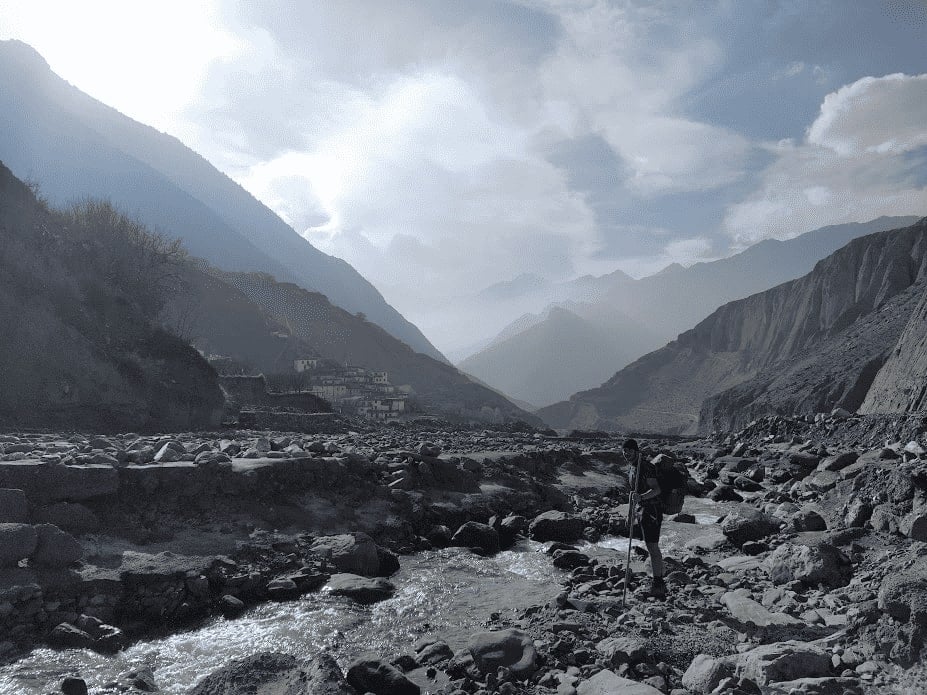
Spending 10 days on foot in the mid-hills between Pokhara and Kathmandu was one of the best travel experiences I’ve ever had. The kindness of Nepali villagers means you’ll be treated like family, and after your trip, longing to return soon!
Permits, Rules and Regulations
In April 2023, new rules were introduced that compel all trekkers to hire a guide when undertaking treks in the Annapurna Conservation Area. This decision was made citing (reasonable) safety concerns for FITs (‘free independent trekkers’), but remains controversial. This means there are three things to sort out for the routes covered in detail here: a TIMS card , an ACA permit , and a guide .
On the usual trekking trails, there are ‘checkpoints’ in certain villages, where you’ll have your ACAP permit checked and stamped (this has always been the case, before the new rules were introduced).
You must obtain this permit before starting the trek, at the Immigration Offices in either Pokhara or in Kathmandu (opening hours are reduced during off-seasons; check on the door in advance of your trek). This is also where you’ll grab your TIMS card. Take your passport, insurance policy details, and passport photos if you have some (if not, you can usually get them taken in the office for free).
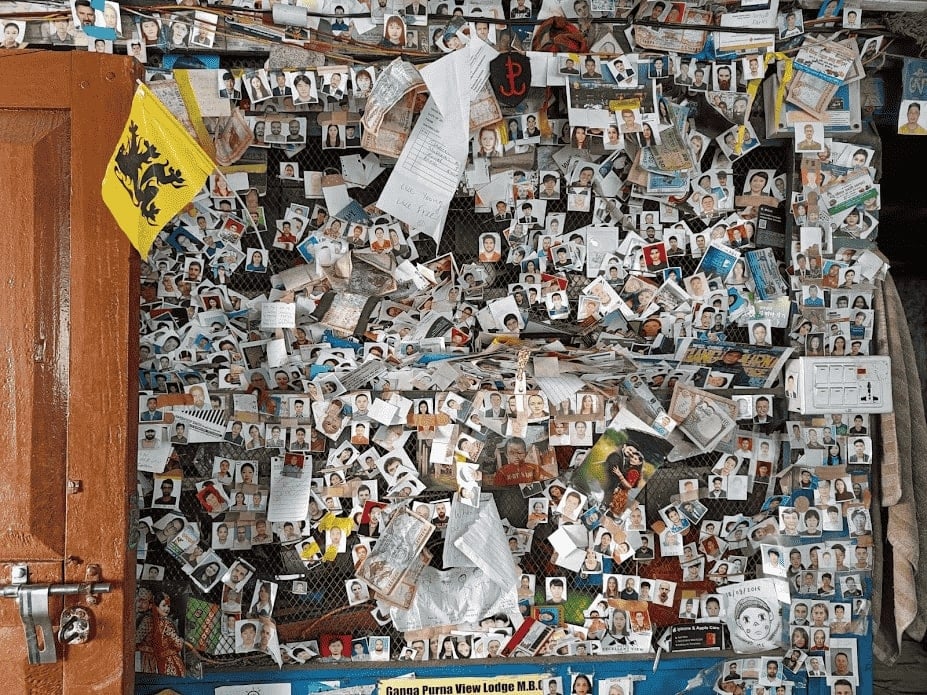
The ACAP costs 3000 rupees and the TIMS card 2000 rupees, for a total set-back of around $38.
In addition, hiring a guide can cost between $20-40 per day, meaning the new rules add greatly to the backpacker’s budget.
On one hand, the news rules seem to benefit trekking agencies. On the other hand, many teahouses and local restaurants are concerned less FITs will lead to reduced income for their businesses and families.
However, some trekkers have recently been completing the circuit independently, and reported having no issues at all when getting their permits checked, despite being guideless. This is obviously not guaranteed, and the situation is likely to evolve over the coming months and seasons.
The Annapurna Circuit Trek group on Facebook is a useful source for the latest deets on what’s happening week-by-week .
Here are some commonly raised pros and cons of hiring a guide:
- You’ll gain added insight into Nepalese culture and history.
- You’ll have experience and expertise on hand for navigating more risky areas like the Thorong La Pass.
- Guides will usually help organise permits and the trekking itinerary – less admin for you.
- Significantly increases daily costs (extra $20-40 per day).
- Limited flexibility on schedule in case of altitude sickness or individual preference (particularly if in a group).
- Guides often have deals with tea-houses that may limit your choice.
Preparing for your Annapurna Trek
Preparing for a big trek may seem like a daunting task. There are things to prepare, like gear, route-planning and some permit-related admin.
Fortunately, you don’t need to be a sponsored athlete, master orienteer or avid form-filler to swiftly get your ducks in a row and be ready to head high into the mountains.
Aside from gear, it’s also extremely important to be aware of weather conditions before hitting the trail or even starting the trek. On 14 October 2014, a record-breaking storm dumped nearly 1.8 meters of snow in the Annapurna region which led to a series of devastating avalanches that resulted in the deaths of at least 43 people, 21 of these trekkers.
While mountain weather can change quickly, I highly recommend having a satellite device with you, and to ensure you get updates on conditions at each teahouse you stop at.
What should you pack for Annapurna trekking?
Firstly, if you’re reading this on the bus and realise you’ve left something at home on the bed, rest assured you can find all you need for trekking at the shops in Pokhara or whilst backpacking Kathmandu .
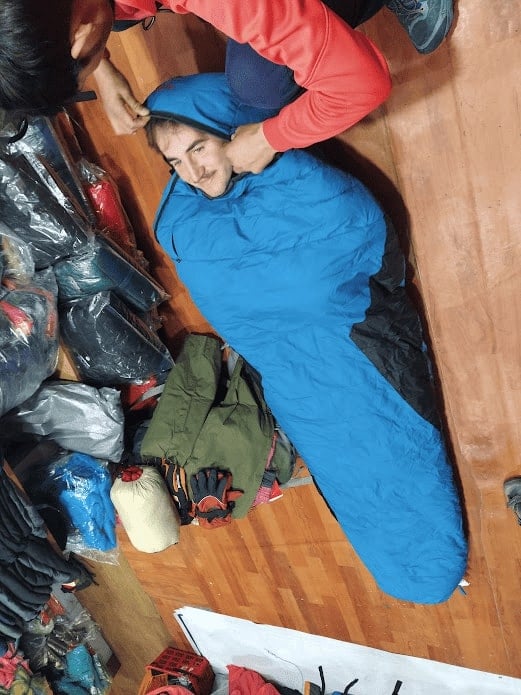
What to pack exactly will depend on personal preference and weather. Use the list below as a checklist.
A word of warning/comfort: don’t pack a different t-shirt for every day, there’s simply no need.
If desired, you can hand-wash items along the way and dry them above the fire in a teahouse, but nearly everyone stinks to high heaven by around day eight, so don’t overly stress. You’ll be in good – probably nose-blind – company.
If you’re looking to make a long-term investment in some clothing for multi-day hiking, check out merino . It’s a breathable, temperature-regulating and odour-resistant blessing for backpacking in colder climates.
There’s usually a healthy supply of gear circulating in the hostels on Lakeside, with backpackers selling, trading or giving away items after finishing their treks. Kiwi Backpackers Hostel on 5th Street is a hub of backpacker activity, and one of the best hostels I’ve ever stayed in.
What to Pack for an Annapurna Trek:
Here’s exactly what you should bring on any trek in the Annapurna Region.
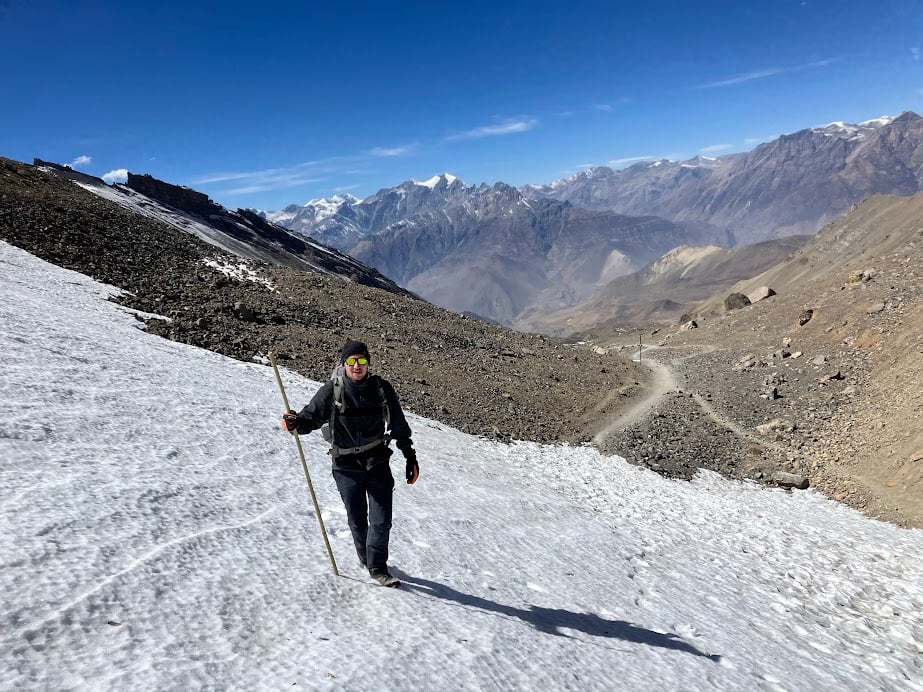
- Osprey Aether Backpack : Sturdy and comfy, with good support and a rain cover. It’s truly the best pack out there.
- Clothing : (Ideally) lightweight, quick-drying shirts, trousers, and shorts.
- Base layers : It can be numbingly chilly at the high points of each route.
- Mid Layer(s) : Go for fleece or soft shell.
- Arc’teryx Beta AR Jacket : Or hiking poncho (good for keeping cool).
- Waterproof Trousers : Ideally can be put on over shoes.
- Patagonia Down Sweater Hoodie : Like a portable hug.
- Hat and Gloves : Sun hat if desired; warm beanie and gloves for higher elevations.
- Abaco Sunglasses : Protect your eyes!
- Water Bottle(s) : At least two litres of capacity.
- Marmot Never Summer Sleeping Bag : Rated at 0F and -18 C, you can’t be better prepared than with this epic bag.
- Water Treatment : Purification tablets or a water filtration system (like the Grayl Geopress).
- First Aid Kit : Grab basic medications and blister treatment from a pharmacy before leaving. Consider Diamox (see altitude section).
- Lip Balm : Chops may otherwise become drier than a moth sandwich.
- Headtorch : With spare batteries/ charger. A real adventure isn’t complete without one.
- Sunscreen : High SPF for sun protection.
- Hanging Toiletry Bag : Toiletries themselves are cheaper in Pokhara than on the trail.
- Physical Map : Found all over the place (shops, hostels, etc).
- Micro Fibre Towel : Compact, dries fast and gets the job done.
- Footwear : More to follow…
- Black Diamond GTX Gaiters : Particularly if wearing low-rise walking shoes or trail runners.
- A good travel camera : The scenery justifies the extra weight.
- Black Diamond Carbon Trekking Poles : Can be an absolute boon on uphill sections. Alternatively, pick up a sturdy bamboo stick en route, with which you will become inseparable.
- Kahtoola Microspikes : ‘Micro-spikes’ can be found cheaply in Pokhara. Highly recommended in Winter.

Wanna know how to pack like a pro? Well for a start you need the right gear….
These are packing cubes for the globetrotters and compression sacks for the real adventurers – these babies are a traveller’s best kept secret. They organise yo’ packing and minimise volume too so you can pack MORE.
Or, y’know… you can stick to just chucking it all in your backpack…
Can I rent rather than buy gear for my Annapurna Trek?
Yes ! The trekking shops on Lakeside in Pokhara and Thamel in Kathmandu will allow you to rent all sorts of gear without breaking the bank.
A down jacket and sleeping bag will each cost around 150-200 rupees to rent per day ($1.15-$1.50), and if you want to stay out in the mountains for longer than planned, you can usually just pay the difference on returning. (Just in case, take photos of the condition of the gear you hire as you leave the shop.)
What footwear is best for Annapurna trekking?
A hotly debated topic.
What type of footwear to go for is largely down to personal preference, within the reasonable bounds of frostbite prevention.
Hiking boots are the most popular choice, as they provide top-notch ankle support, superior weatherproof protection in case of snow, and shielding from rocky ground beneath. Be sure to wear them in advance though, to prevent a blistery first few days on the trail.
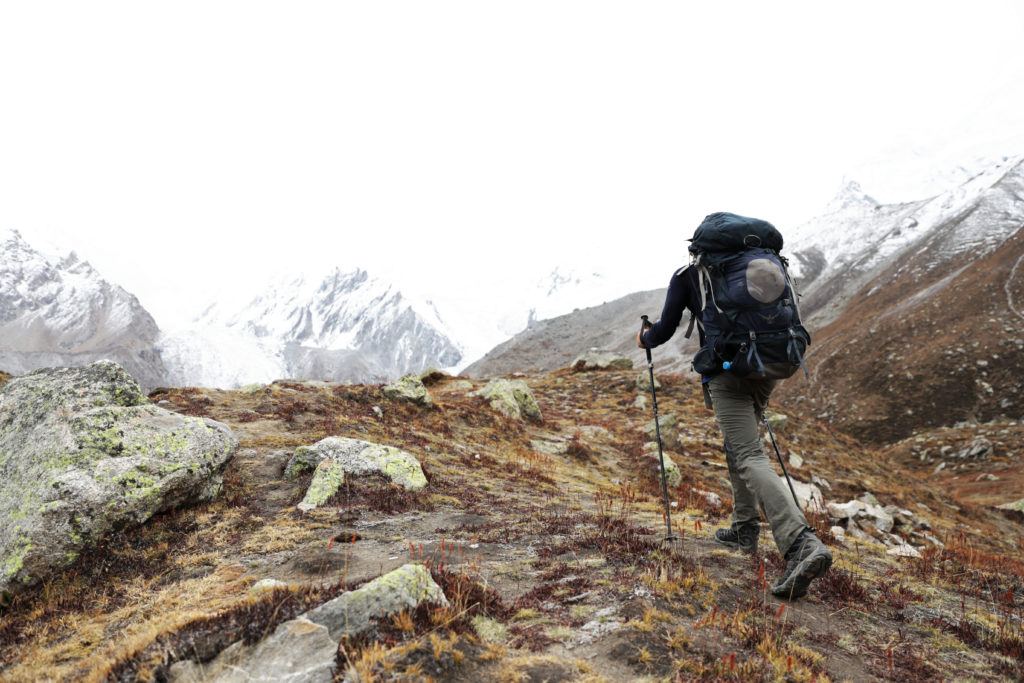
Boots are a shrewd choice. However, they can feel clunky, and you may find yourself hankering for something more nimble.
An increasing number of trekkers are using trail running shoes, when not in the depths of winter. A pair of waterproof (look for Gore-tex) trail running shoes can provide solid support while remaining light and agile. You’ll want a pair with deep treads (grip) on the sole and a sturdy construction. Combine with a pair of gaiters in case of snow.
Chuck in some flip-flops/ jandals/ slippers for downtime in the teahouses. Your feet will be eternally grateful.
Why You Should Travel With a Water Bottle
As travellers, we have a joint responsibility to reduce the environmental impact of our excursions, and plastic waste is one of the biggest problems facing Nepal’s Annapurna Region.
Travelling with a filtered water bottle is a wise move. There’s no better option than the Grayl Geopress: this water bottle and filter system removes all manner of threat, including viruses and heavy metals – no mean feat. This bottle is a popular choice amongst trekkers and backpackers in Asia.
It’ll last for years, reduce plastic waste, and save you money. The Grayl Geopress is a sound investment for anyone taking on some Annapurna trekking.

Drink water from ANYWHERE. The Grayl Geopress is the worlds leading filtered water bottle protecting you from all manner of waterborne nasties.
Single-use plastic bottles are a MASSIVE threat to marine life. Be a part of the solution and travel with a filter water bottle. Save money and the environment!
We’ve tested the Geopress rigorously from the icy heights of Pakistan to the tropical jungles of Bali, and can confirm: it’s the best water bottle you’ll ever buy!
Life on the Trail
Are there places to stay on an Annapurna Trek?
On all treks discussed in this guide, there are a plethora of accommodation options available. This means you won’t need a tent or shelter to take on these Annapurna treks. Luxury!
These are in the form of teahouses – some large, some small – and you’ll find them in the villages along the trails, plus some extras dotted in between.
What’s more, your room for the night is usually offered very cheaply or even for free, provided you eat dinner and breakfast at the teahouse where you stay. Here are a few things to keep in mind when choosing your residence for the night:
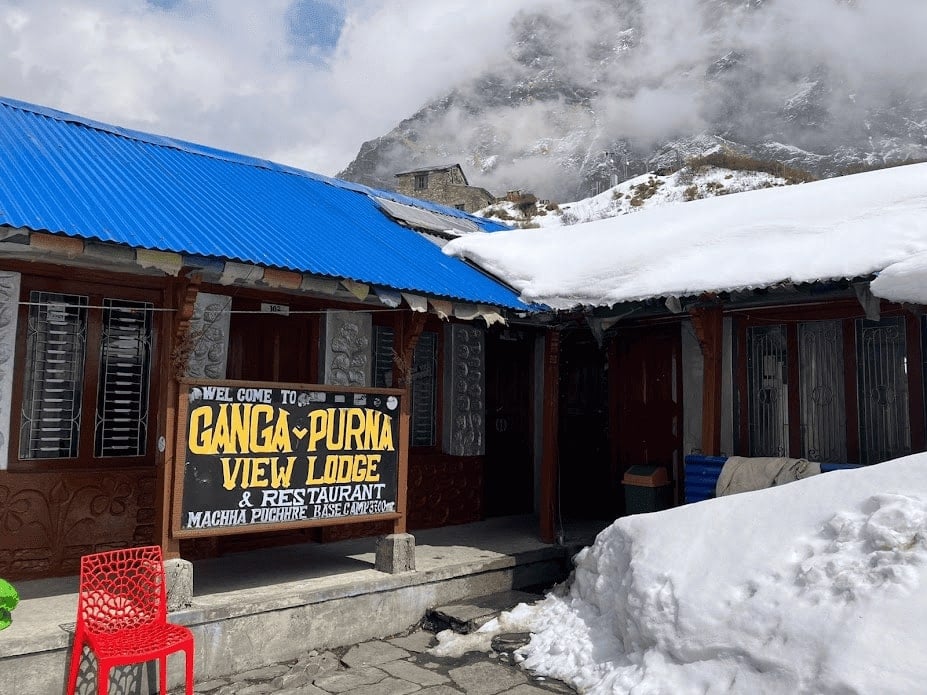
- Check out the views for sunrise and sunset!
- Ask if using a hot shower, wi-fi and e lectricity is available and included in the rate agreed, or whether you’d have to pay extra. You can often strike a ‘package deal’ if you chat to the owner.
- If it’s cold, a fire to sit around is an unrivalled treat. (Even if it’s a yak dung inferno..)
- Of course, the price !
You’ll be given a simple private room for the vast majority of stays, which come with beds, blankets and pillows.
You’re more likely to get a plug socket at lower altitudes. Otherwise, there’ll probably be a shared extension cable in the kitchen area but you may have to pay.
Gas-heated showers can be found throughout the treks, except near the highest points of each route. Toilets are a mix of squat style toilets and Western designs, but take your own loo roll! It grows crushingly expensive further up the hillside, and splashing your behind from a bucket of icy shards in the early hours might not be ideal.
Sitting round the table in a teahouse after a long day’s trek is a quintessential part of a Nepali trekking experience; playing cards and sharing tales with locals and fellow travellers is sure to leave lasting memories to treasure.
What food is available while trekking in the Annapurna Region?
The Nepali word ‘Annapurna’ can be translated as ‘everlasting food ’, which certainly seems fitting when it comes to Dal Bhat.
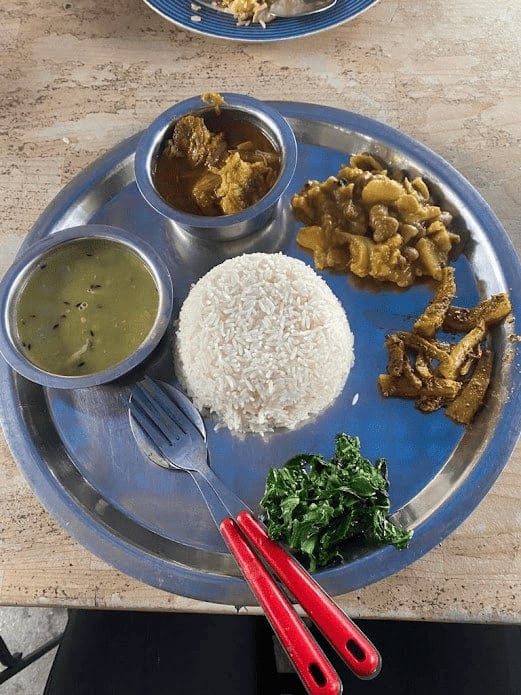
This national dish is a staple for people all across Nepal, and is likely to become a dearly treasured feed when trekking in the Annapurna region.
Dal bhat consists of steamed rice paired with dal (cooked lentils or other pulses), accompanied by a varying array of saag (spinach cooked in spices), papad (poppadom), vegetable tarkari (seasonal vegetables) and pickle amongst other things. You can order small bowls of meat to go with it too.
And, in very healthy news for us lovers of value, most elements of dal bhat can be replenished at no extra cost!
You’ll also find things like fried rice, noodle soup, curry and even some surprisingly good pizza, cooked on a stove. Try thukpa, a classic Nepali noodle soup with a warm broth.
Porridge, omelettes and toast are all usually there too. At least once, give ‘Tibetan bread ’ (or ‘Gurung bread ’) a go, with honey. For breakfast, this is an absolute triumph.
Food is expectedly more pricey than in Pokhara but not outrageously so. See an example menu below, typical of those found on the Annapurna Base Camp trek. For reference, one US dollar is currently equal to around 130 Nepalese rupees.
Dealing With the Altitude While Trekking in Nepal
Trekking in the Annapurna region naturally means you’ll be dealing with some serious loftiness.
For example, Thorong La – the pinnacle of the Annapurna Circuit – is just about the highest mountain pass in the world .
The sub-par oxygen levels found here are likely to have some kind of effect on all trekkers, and the severity of its impact doesn’t seem to be linked to physical fitness. Your gym-obsessed mate could find themselves back of the pack, being overtaken by heavy smokers flying up the hills.
While it’s a bit of a lottery in that sense, there are things you can do to reduce your risk of feeling groggy or worse, which I’ll cover here. Altitude sickness is not something to mess about with, and one of the most dangerous aspects of Nepal , so here’s a breakdown of some key tips and information surrounding AMS , HACE , and HAPE .
What is altitude sickness?
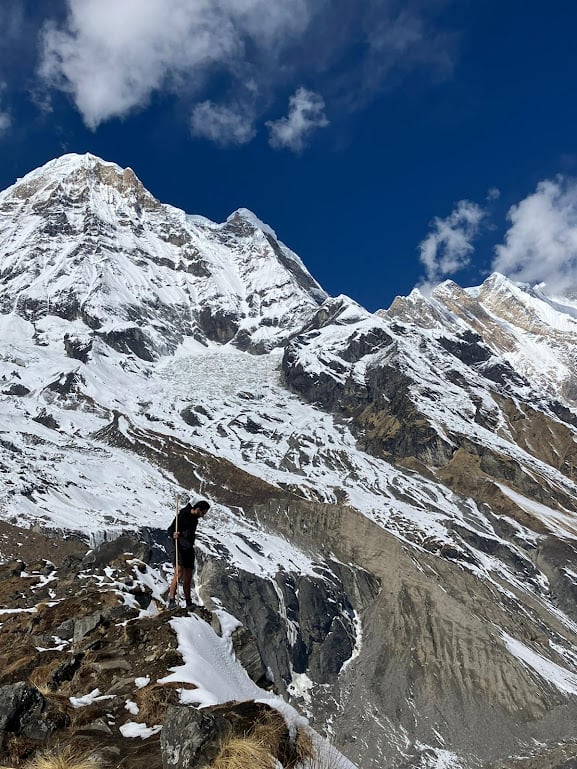
Altitude sickness essentially refers to the ill effects on the body of being exposed to lower levels of oxygen.
Acute mountain sickness (AMS) is the mildest form of altitude sickness, but should certainly not be ignored. Symptoms include:
- Nausea/vomiting
- Loss of appetite
If these crop up, it’s important to STOP ascending. Acclimatisation and rest can give the body sufficient time to adjust to the conditions, before continuing with care.
On the other hand, the more serious high-altitude pulmonary edema (HAPE) and high-altitude cerebral edema (HACE) require rapid descent, and are life-threatening emergencies. HACE refers to fluid buildup in the brain, while HAPE refers to fluid buildup in the lungs.
Symptoms of HACE include:
- Severe weakness
- Acting drunk
- Personality changes
- Balance issues
Symptoms of HAPE include:
- Pink sputum
- Breathlessness at rest
Keep an eye on each other and report any symptoms to mates and locals at teahouses. HAPE and HACE require immediate attention. Descend down the mountain right away, while limiting physical exertion as much as you can while doing so.
How to Minimise Risk of Altitude Sickness:
As mentioned previously, developing symptoms of altitude sickness when trekking is seemingly unrelated to overall fitness. However, there are things you can do to reduce your risk. Here are some tips for trekking in the Annapurna region:
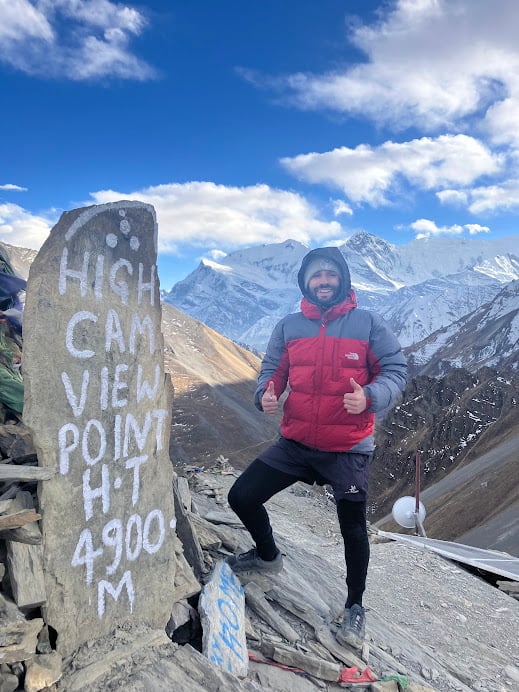
- Limiting daily ascent when above 2500m is the best way to reduce your risk. Ascending no more than 500m a day is optimal, while more may be manageable for some. It’s quite common for trekkers to climb more than this in a day on occasion , but be careful in doing so, and be sure to stop and rest for a day or more if you develop symptoms.
- Drink loads of water ! Increase your intake as you ascend.
- Consider using Diamox (acetazolamide). This is by no means essential, but taking Diamox a day or two before ascending to high altitudes can speed up acclimatisation. (If you have any other health conditions, check with your doctor before doing so). Side effects can include tingling fingers and lips – a quite odd, but not particularly troublesome sensation.
- Keep plans flexible to build in any acclimatisation days that become necessary.
- Walk high, sleep low ! Walking to a new ‘high point’ but sleeping below it when possible can be great for your body.
- Look after your mates ! Check in on one another and keep an eye out for anyone struggling or showing changes in personality.
Getting Insured BEFORE Trekking Annapurna
Altitude sickness is no joke. Make sure you’ve got some good travel insurance before heading up there!
ALWAYS sort out your backpacker insurance before your trip. There’s plenty to choose from in that department, but a good place to start is Safety Wing .
They offer month-to-month payments, no lock-in contracts, and require absolutely no itineraries: that’s the exact kind of insurance long-term travellers and digital nomads need.

SafetyWing is cheap, easy, and admin-free: just sign up lickety-split so you can get back to it!
Click the button below to learn more about SafetyWing’s setup or read our insider review for the full tasty scoop.
How Much Does it Cost to Complete an Annapurna Trek?
This will greatly depend on whether you opt for a ‘package tour’ or not.
For broke backpackers, going without a tour is certainly the more budget-friendly option, and you can easily meet trekking mates on the route itself, or in hostels before setting off.
Without a package tour, a decent budget is around $25-30 per day , excluding the cost of hiring any gear and a guide . Rooms are very cheap ($2-3 per night) or even free when you eat there, so the main daily costs go on calories and any toiletries.
A guide costs around $20-35 a day, which can be shared amongst a group.
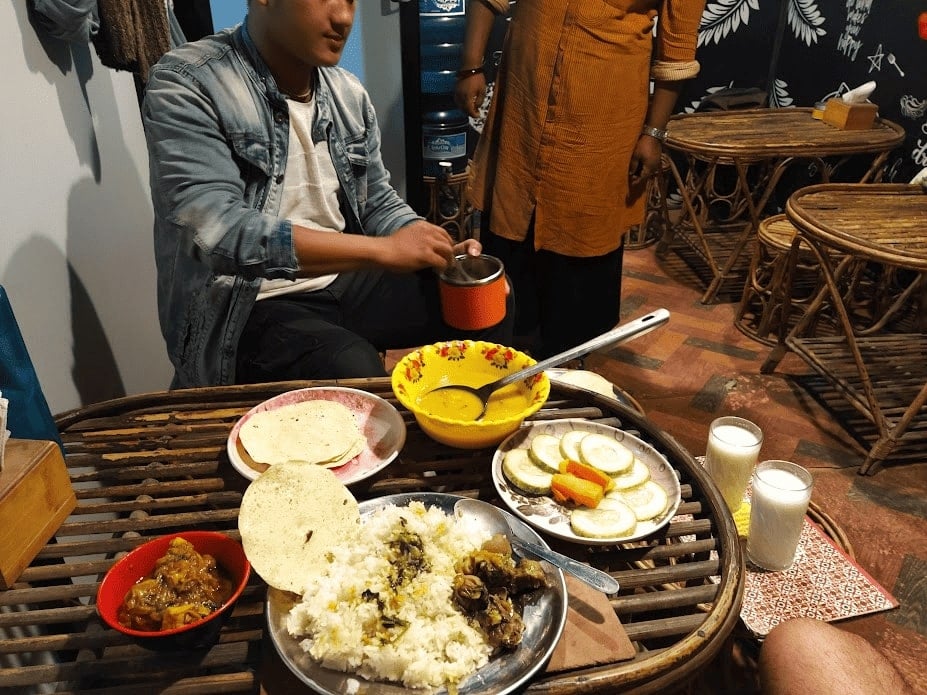
There are no ATMS on the circuit – take more cash than you think you’ll need! You never know if you might need an extra day of rest due to altitude, or fancy the occasional beer. (My mate and I didn’t heed this advice, got addicted to Snickers, and ended up with a budget of $7 each for the last couple of days, which was far from ideal.)
Another key money-saving tip: take your own loo roll! Its price seems to rise exponentially with the trail.
Overall, trekking in the Annapurnas isn’t a great deal more expensive than backpacking in other parts of Nepal, largely thanks to the generous portions of Dal Bhat served up of an evening.
Nepali Customs and Phrases
Travelling in Nepal is an immense privilege. Along with some introductory Nepali to get to grips with, here are some tips to help you remain a conscientious rambler.
- Order food together , and if asked, make breakfast choices the night before. This will reduce the amount of fuel needed to heat food.
- Minimise plastic waste! Take a filter bottle instead of buying water as you go.
- Ask before taking photos of anyone.
- Reduce your meat intake, as most is not fresh and carried up the mountains from lower villages.
- Learn some lingo!
Nepali is not a particularly difficult language to learn for English speakers, especially for a handful of essential phrases. Make an effort and it’ll be hugely appreciated!
- Namaste = hello/ greetings (polite).
- Dhanyabaad = thank you.
- Kasto cha = how are you?
- Ramro cha = it is nice/ beautiful/ good.
- Baya tira = leftwards.
- Daya tira = rightwards.
- Bhaato = ‘path’ or ‘way’.
- Mitho = tasty/delicious.
- Deraye = very (e.g. Deraye mitho = very tasty).
- Pheri bhetaula = see you again.
- Kukhura ko maasu = chicken meat.
- Bhaisi ko maasu = buffalo meat.
- Pani = water.
- Tarkari = vegetable curry.
- Shauchalaya = toilet.
- Kati tadha = how far?
- Tapaaiko nam ke ho ? = what is your name?
- Mero nam —– ho . = my name is ——.
- Bhetera khoosi laygo = nice to meet you.
Final Thoughts on Trekking the Annapurna Circuit
Stuck in a rainy city, fantasizing about booking that travel extravaganza, your mind might conjure up images of pristine beaches and pina coladas. ‘Landlocked’ may not seem conducive to your dreams of a blithe, hostel-hopping existence…
But trust me: central Nepal is as laid back and inviting as anywhere on the planet, offering a simply unrivaled combination of its superb lakeside hostel scene and the best mountainous scenery around. The fact this guide is full of “ Xth biggest/longest/tallest in the world ” says enough in itself.
Memories forged on the trails over endless portions of dal bhat and games of cards are bound to be precious, as are any moments spent in the company of the ever-hospitable Nepalese people. The routes featured in the guide have been found on backpackers’ bucket-lists for generations, for very good reason.
Backpacking has changed greatly in many places in recent years, as mobile data and online bus booking systems abound. Traveling on foot through the mountains, with an actual, physical, paper map is a uniquely gratifying experience that no technological advancement can replace.
Trekking in the Annapurna Region -whether you choose the classic Annapurna Circuit or one of the other majestic options – is guaranteed to be an epic adventure that you should not think twice about booking!
Just don’t forget to wear in your boots first…
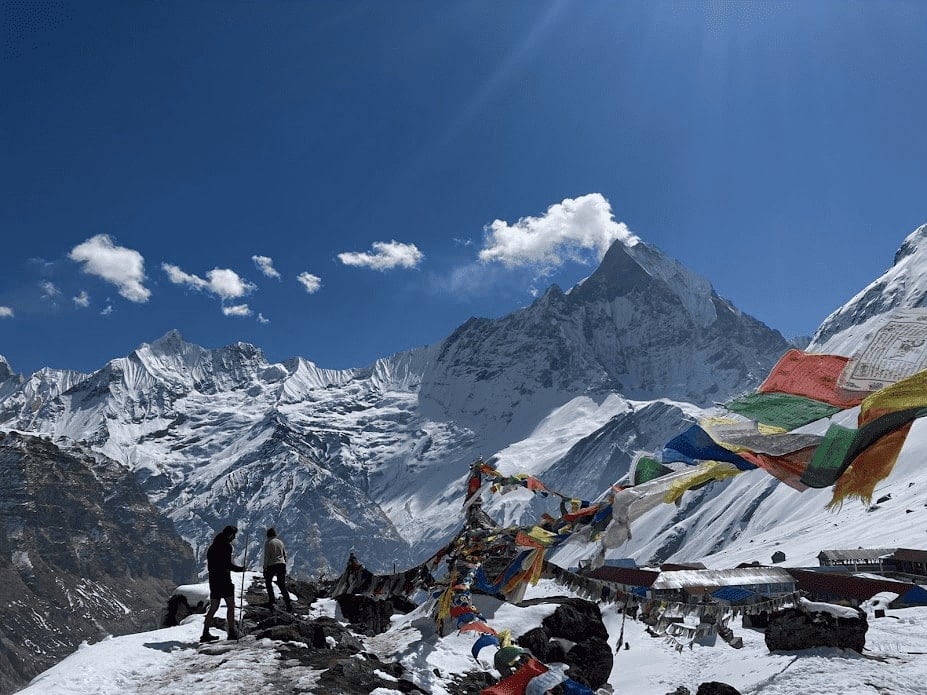
And for transparency’s sake, please know that some of the links in our content are affiliate links . That means that if you book your accommodation, buy your gear, or sort your insurance through our link, we earn a small commission (at no extra cost to you). That said, we only link to the gear we trust and never recommend services we don’t believe are up to scratch. Again, thank you!
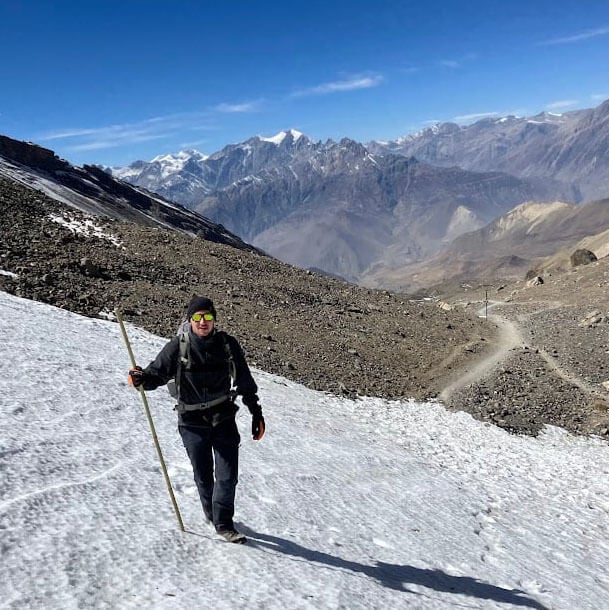
Share or save this post

Leave a Reply Cancel reply
Your email address will not be published. Required fields are marked *
Save my name, email, and website in this browser for the next time I comment.
Notify me of followup comments via e-mail.
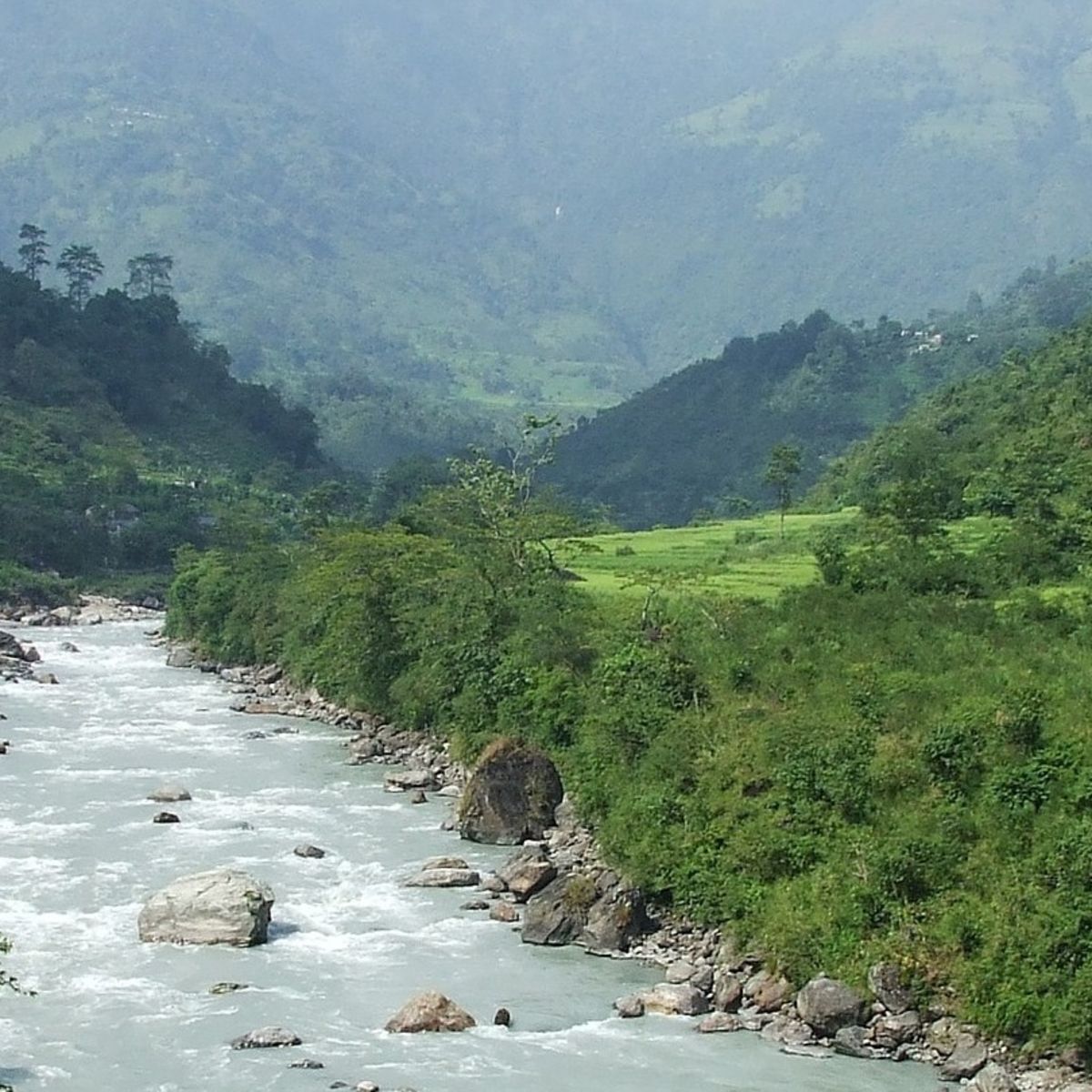
When is the best time to hike the Annapurna Circuit?
The Annapurna Circuit can be trekked all year round. But spring and autumn offer the best trekking conditions – that's February to May, and September to early December. We discuss the different seasons' temperatures, rainfall, visibility and crowds.
Most people choose to trek the Annapurna Circuit in spring or autumn, as these seasons offer more moderate weather and better hiking conditions. We use this post to discuss matters of weather, trail and trekking conditions, crowds, seasonal plants and animals, packing requirements, and costs. This is done in a bid to help you decide when you’d most like to go. We also give our advice and opinion on what we think is the best time of the year to hike the Annapurna Circuit.
Spring and autumn offer more moderate weather and better hiking conditions in the Annapurna mountain range.
Best time to hike the Annapurna Circuit
This graph gives an overview of the seasons of the Annapurna Circuit. For a more detailed analysis of when is the best time to hike the Annapurna Circuit, please keep reading!
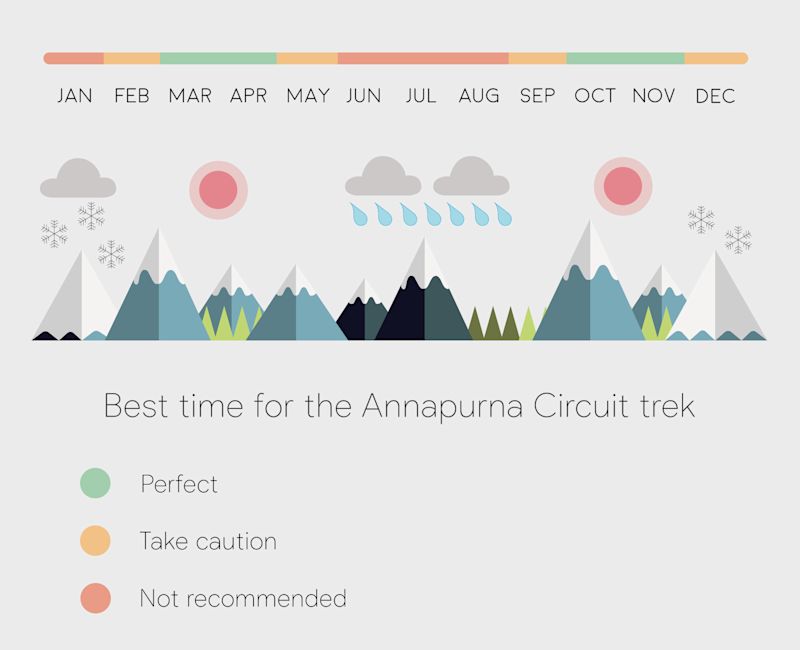
Annapurna Circuit weather
It’s not actually all that easy to talk about the weather of the Annapurna Circuit. This is because the trail winds through a vast region within which the landscape experiences dramatic changes. The original multi-week Annapurna Circuit route (which is far longer than the route most of us trek nowadays) began in the subtropical zone. It took some days before hikers climbed up into temperate valleys and then ascended into the mountain zone. Having climbed to Thorung La, which at 5,416 m above sea level is the trek’s highest point, trekkers descended back to temperate and, eventually, subtropical areas. The Annapurna Circuit has always been about variety, and the changing landscape and climate are at the heart of it all.
As just mentioned, most people no longer trek the entire route. One of the key reasons for this is the growing infrastructure in the area over the past couple of decades, which has made all but the highest portion of the trek route accessible by road. The earliest and latest stages of the trek route have consequently lost some of their appeal. Further, not all of us have the luxury of taking time off for a three-week trek.
At Follow Alice we’ve put together an exciting 12-day Annapurna trip that sees us trekking for a week in the highest and most remote part of the Annapurna trek route.
How high does the circuit go?
The graph below shows where we as a group join and exit the Annapurna Circuit, as well as important natural features along the way. One of these is Kicho Tal, or the Ice Lakes, which is a pristine set of lakes tucked up high among the mighty mountains. By studying the great changes in elevation along the trek route, it’s easy to appreciate how much the climate zones and weather systems of the route change too.
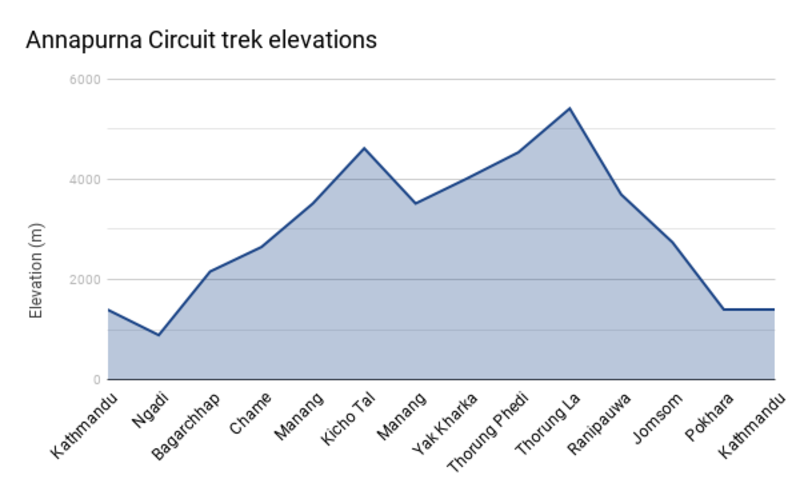
Annapurna Circuit elevation
The three climates of the circuit
As you now know, the Annapurna trek route encompasses subtropical, temperate and mountain climates. While we only start hiking in the temperate zone, we witness the monkeys, banana trees and rice paddies of the low-lying subtropical area during our drive time before and after the trek.
High-altitude trekking requires more careful consideration and planning than low-altitude trekking. this is because mountain weather can be dangerously fierce and changeable. Fortunately we’ve put down all the key facts you need to know about the weather of the Annapurna region in this blog post, so your research has been done for you! The main things to consider weather wise for a high-altitude climb are rainfall and temperatures.
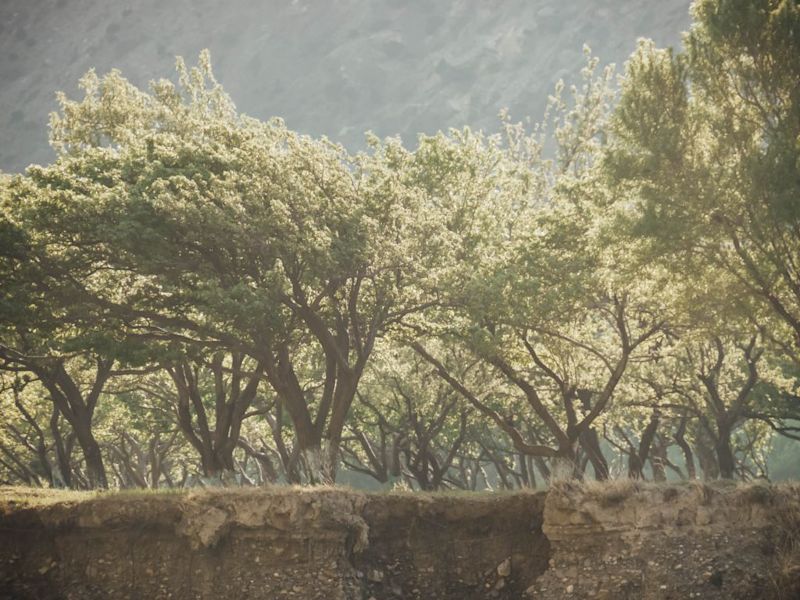
Not everyone realises how many trees and forests you walk through on the Annapurna Circuit trek – as well as how beautiful they are!
How much rain does the Annapurna range receive?
The higher portion of the Annapurna Circuit lies within a rain shadow. A rain shadow is an area cut off from rain systems by a natural barrier (in this case, the Annapurna Massif). This means the highest part of the Annapurna Circuit is largely unaffected by the summer monsoon that affects the rest of Nepal.
Being in a rain shadow, the higher part of the Annapurna route is 'trek-able' all year round from a rainfall point of view. However, to get to this area you have to trek through the temperate zone, which receives heavy monsoon rains. July and August in particular are incredibly wet months. March, June and September also receive a good deal of rain.
The graph below shows the mean annual rainfall for Upper Pisang, which is in the temperate zone. We walk through this village on our second day of trekking.
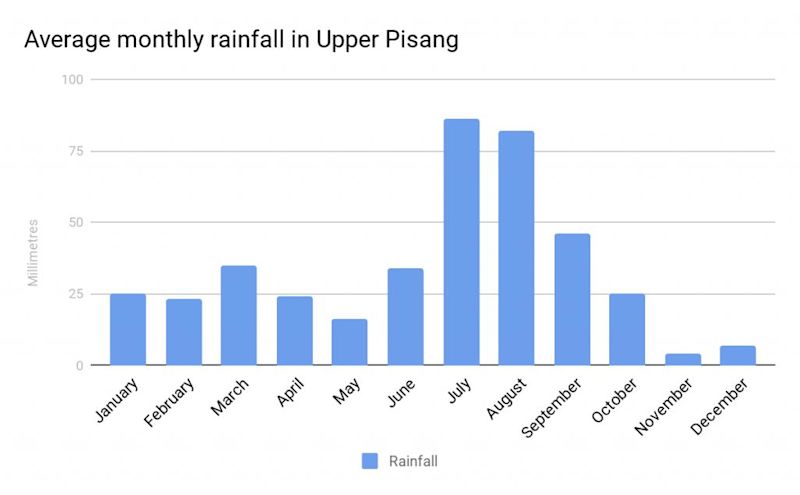
Average monthly rainfall in Upper Pisang
As you can see, one wants to avoid Annapurna during summer, as well as perhaps March, given the extremely high precipitation during these months. And yet that doesn’t mean any other month of the year is our playground, as a rainfall assessment doesn’t take into account that all-important issue of temperature.
How cold is the Annapurna Circuit?
In the colder months of the year the temperatures in Annapurna’s temperate and mountain zones can be decidedly frosty. Temperatures regularly drop below freezing point along the portion of the trail that we trek. This is a result of the altitude as well as the influence of the winter monsoon, which brings icy winds from northern Asia.
In a town like Manang, for example, where we spend two days acclimatising to the altitude, night-time winter temperatures are generally always below freezing. And while daytime temperatures tend to rise a little above freezing point, the wind chill can easily give a real feel that’s back below freezing. The coldest months in the Annapurna are generally December to February, with November and March also being very cold at times.
To give you a feel of the dramatic changes in temperatures that take place at our major pitstops, look at the graph below. Note that we’ll also be trekking to even colder locations than those shown above, such as when we climb to the Ice Lakes and Thorung La Pass.

Annapurna Circuit average temperatures in November
When can I hike the Annapurna Circuit?
The trekking conditions along the Annapurna Circuit vary according to location and season. Many want to know if there’s a best season for trekking the Annapurna Circuit? Below we consider how trekking conditions are affected by the different seasons, and explain why we think autumn is the best season for hiking in Annapurna.
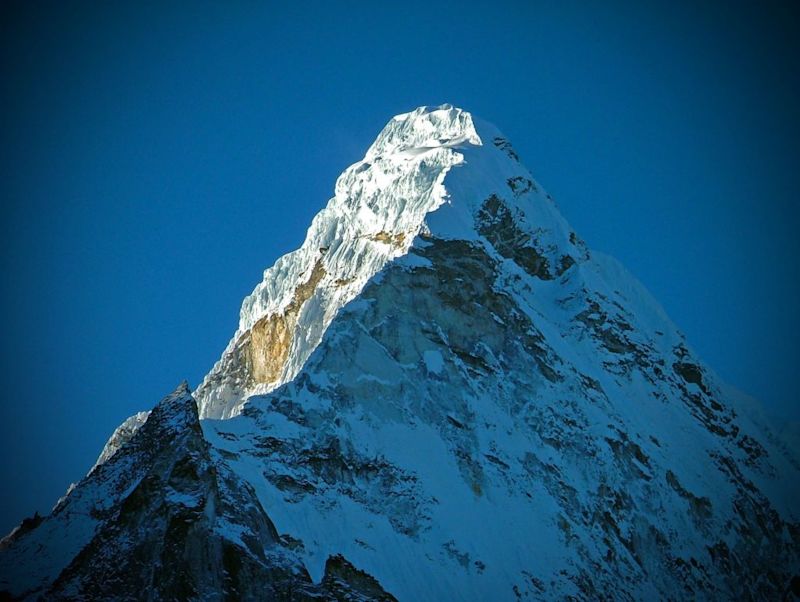
November generally offers clear views of the mountains on the Annapurna Circuit
Summer Annapurna trekking conditions
In summer, when the monsoon rains wash across much of the circuit, the lower paths can become a slippery mess. Much of the trail is rocky and gravelly, and slick rocks are nobody’s friend. There’s also a heightened chance of land- and rockslides in summer. Further to this, you’d be hiding under your waterproof gear much of the time but getting wet nonetheless, because these aren’t delicate drizzles but monsoonal downpours.
Rains and downpours also mean limited or no mountain views, and that sounds pretty tragic to us. The entire point of an Annapurna trek is marvelling at the height and drama of the Himalayas. Even when the rains let up, there’s a strong chance of haze and humidity. Given these subpar trekking conditions, we feel it best to leave the Annapurna mountains to themselves in summer. We'll visit them at other times of the year, thankful for all the life-giving rain that we missed witnessing firsthand!
Trekking conditions aside, we also want relatively safe driving weather when we travel from and to Kathmandu on either side of the trek. Further to this, we overnight in the lakeside city of Pokhara on the way back to Kathmandu, and we want to enjoy the scenery and beautiful outdoors there too.
Autumn Annapurna trekking conditions
When the rains let up in October and November, trekking conditions along the Annapurna Circuit become wonderful. The days are warm, the visibility is great, and the paths are no longer little rivers. Of course most people know this, which does mean sharing the trail with a number of other trekkers. This bothers some, but others enjoy the camaraderie and buzz of the peak season. You’ll also be sharing the paths with locals (and sometimes their herds), but standing back for a yak or a drove of goats is surely part of the charm of visiting this part of the world.
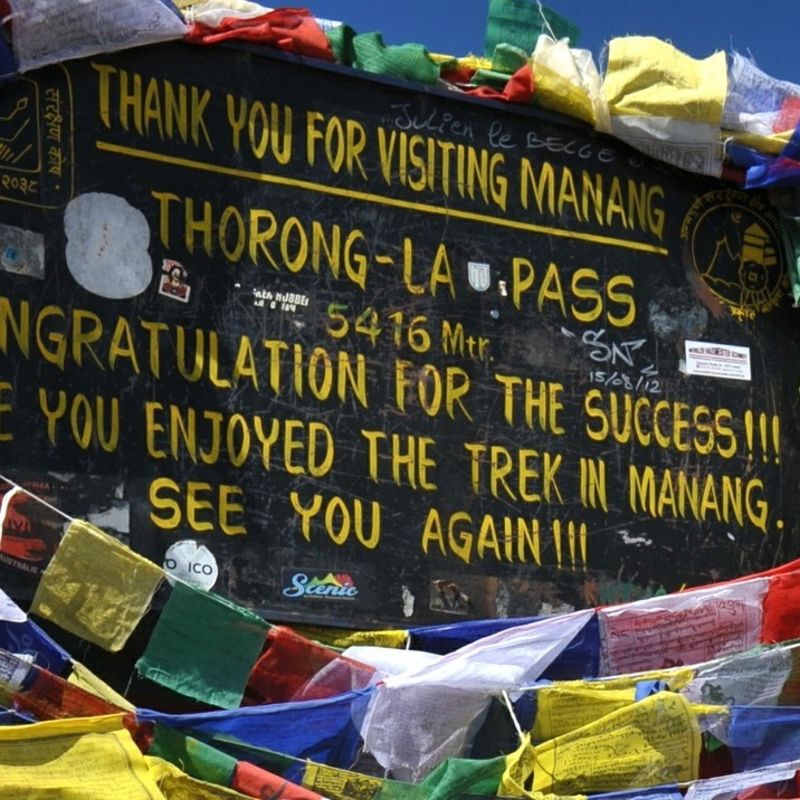
Safety is always our primary concern at Follow Alice. When embarking on a fun yet somewhat daring adventure like a high-altitude trek, safety simply has to be a key focus. Autumn is one of the safer periods to do the Annapurna trek as the temperatures are milder, the mountainsides less water-clogged and likely to slide, and the paths compacted by many feet. Some of the paths we hike are narrow contour paths that permit only one person at a time, and often the drop-off to the one side is steep. It’s important that the paths and mountainsides be as stable as possible.
Safety is always our primary concern at Follow Alice.
Note that that trekking in October or November doesn’t preclude the possibility of trekking in snow, especially at the higher elevations. We recommend bringing trekking poles to help with your footing. Trekking poles also take some of the strain off your knees when we descend from Thorung La to Ranipauwa, a one-day descent of over 1,500 m.
Winter Annapurna trekking conditions
Winter is a popular trekking month with a few hardcore trekkers because the trail is much emptier and the views crisp. For newbies, or relatively new trekkers, we don’t advise hiking the Annapurna Circuit in such extreme conditions. The danger level is that much more, and even even if you relish the prospect of sub-zero hiking conditions, the fact that Thorung La Pass is sometimes closed when the weather is bad might put you off. Most of us can’t afford to hunker down in place without it affecting our travel itinerary problematically.
Note: most teahouses will give you an extra blanket if you ask for one.
Spring Annapurna trekking conditions
Spring is a good time of year to trek the Annapurna Circuit. Temperatures thaw, the rivers swell and create picturesque waterfalls, flowers go bonkers, birds are busy doing their thing, and the path is relatively stable. Spring also offers clearer skies and better views, though there can sometimes be a haze at lower altitudes. Spring also brings back the crowds, so the hiking trail becomes busy again.

No matter when you choose to do the Annapurna Circuit trek, Thorung La Pass is always cold!
Best time to hike for greenery and flowers
For those of who love trekking partly because of the trees, plants and flowers it allows us to see, then knowing which species are on show, and when, is important.
Spring and summer
It probably won’t surprise you to hear that winter isn’t the time for flowers in Annapurna. When the winter snows melt and spring arrives, that’s when the flowers come out to play. Some of the spring and summer flowers to look forward to are buttercups, cinquefoils, orchids, rhododendrons, magnolias, blue irises, primulas, and Himalayan poppies. But there are many more.
For instance, and deserving a paragraph all its own, you might get the incredible privilege of seeing the Himalayan blue poppy, also known as the Queen of the Himalayas. The blue poppy grows in the Annapurna Conservation Area (ACA), but it is the snow leopard of the floral world, being very hard to find. It has a wonderfully delicate, cool blue and partly transparent bloom.
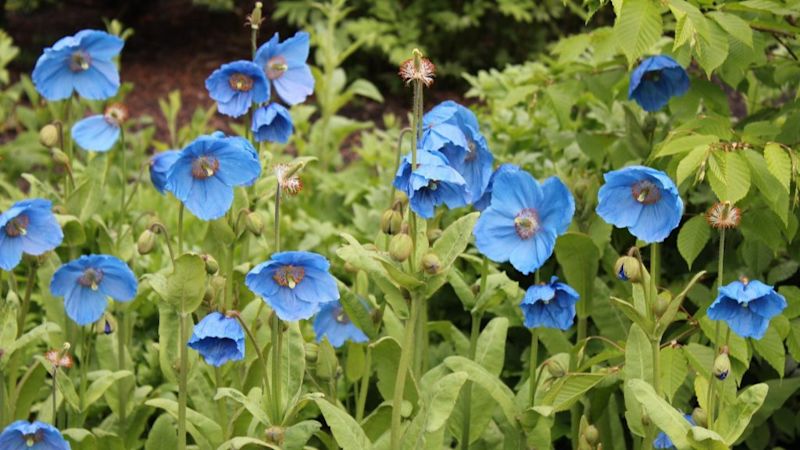
Himalayan blue poppies
Spring and summer are wonderful seasons to visit the Annapurna mountains.
Spring and summer are wonderful seasons to visit the Annapurna mountains if you love to be surrounded by green. Even in the temperate zone you’re surrounded by greenery, which surprises some. March or April is the best time of year to hike the Annapurna Circuit if you want to see the flowering rhododendrons, which are the national tree and iconic to the Himalayas.
While every season offers some plant life to enjoy, overall spring and summer are the best times of year to hike the Annapurna Circuit if you love your flowers.

Spring means flowers, and the Annapurna Circuit has plenty to show you
In autumn, many of the flowers are gone, though you do get beautiful flowering cherry trees. In the alpine region there are gorgeous, stately forests made up of trees such as junipers, pines and oaks. The beauty of the forests is that they’re there for us to enjoy all year round.
How should I prepare for the circuit?
Your packing list for the Annapurna Circuit doesn’t vary much by season. This is because you have to come prepared for any eventuality, including a surprise downpour outside of monsoon season, snowfall during the warmer months, a heatwave, and an unseasonal cold spell. In 2019 the weather felt rebellious and did all sorts of unexpected things. For instance, it soared above 30° C in May in Manang when it usually stays in the mid 20s. In January, the minimum temperature averaged 8° C compared with its usual 0 to -1° C. Also, visibility from January to June in 2019 was an extra 2 to 3 km when compared with the same period of every other year in the preceding decade.
Not all the climate surprises are limited to the year 2019, of course. The summer rains for each year between 2015 and 2019 clocked in between 400 and 600 mm per month. Those of the years between 2009 to 2014, on the other hand, never exceeded 180 mm per month. Some years the wind gusts are more than three times the strength of those of other years.
Winter versus summer equipment
If you travel during winter, or in the months alongside it, you do have to pack more (and in some respects higher quality) clothes and equipment than if you were to trek the Annapurna Circuit in summer or near to it.
A winter sleeping bag, for instance, with its superior insulation, sets you back more than a light summer bag. (You can learn more about the sort of sleeping bag you need for this trek in The best sleeping bags for trekking in Nepal .) But you most certainly need a winter sleeping bag to be warm and safe on an Annapurna Circuit trek!
You also need a winter jacket, warm over pants, winter gloves, a beanie, and plenty of thermal inner wear.
You can rent one of our Follow Alice down winter jackets for the trek if you don't have a suitable jacket of your own.

You can see one of our Follow Alice red-and-black down jackets in this summit pic
That said, most of the equipment, like backpacks, trekking poles and hiking boots, are the same whenever you trek.
And while you may not ever need that down jacket, you still have to pack for just in case. Anything can happen in the Himalayas, and you need to pack to ensure you’re ready for it all. So the packing list for each of the four seasons doesn’t vary much.
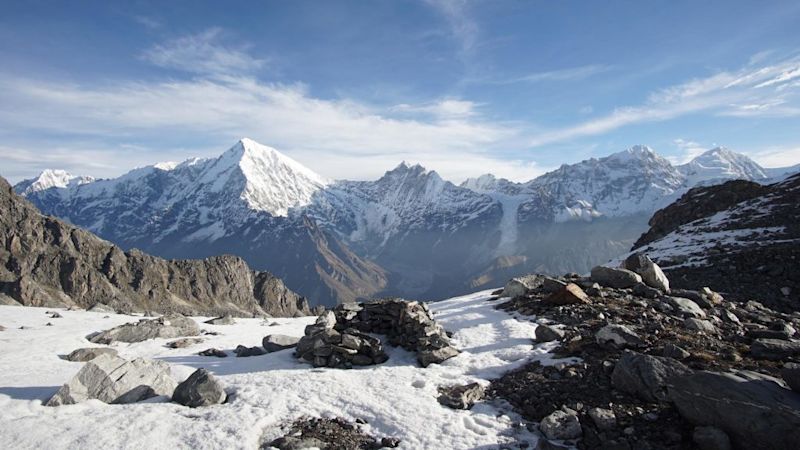
In winter, the temperatures on the Annapurna Circuit plummet to well below freezing at night
Cheapest time to hike the circuit
Many looking for the best time to hike the Annapurna Circuit would also like to go when it’s most affordable. Life is expensive, right? Given that autumn and spring are the peak trekking seasons, you might be wondering if trekking in one of these months makes the trip any cheaper or more expensive.
Cost of flights
The cost of flights to Nepal varies according to your departure destination, when you book, and more. This means you’ll need to do a little online research to determine when the cheapest times of year are for you to fly to Nepal from your part of the world.
Another of the keys to obtaining affordable flights to Nepal is purchasing them in advance. Try to buy your tickets at least three weeks before your planned travel date. And if you know your travel times well in advance, you can also keep an eye open for specials.
Keep a look out for flight specials – these can really reduce your overall costs.
Cost of trekking permits
The trekking permit for the ACA, which costs 3,000 Nepalese rupees (NPR) or about €23 as of December 2021, is the same throughout the year. The same goes for the Trekkers’ Information Management System (TIMS) card, which is 2,000 NPR (or €15). Both of these permits are obtained for you by the Follow Alice team, and the fees are covered by your Follow Alice package fee.
Cost of accommodation
Accommodation along the Annapurna Circuit is blessedly affordable, costing only a handful of euros a night. Most teahouses (lodges) make their primary income from the sale of food and drink. It’s understood that you’ll purchase meals from the establishment where you’re staying. All accommodation and meal costs are included in your Follow Alice package fee.
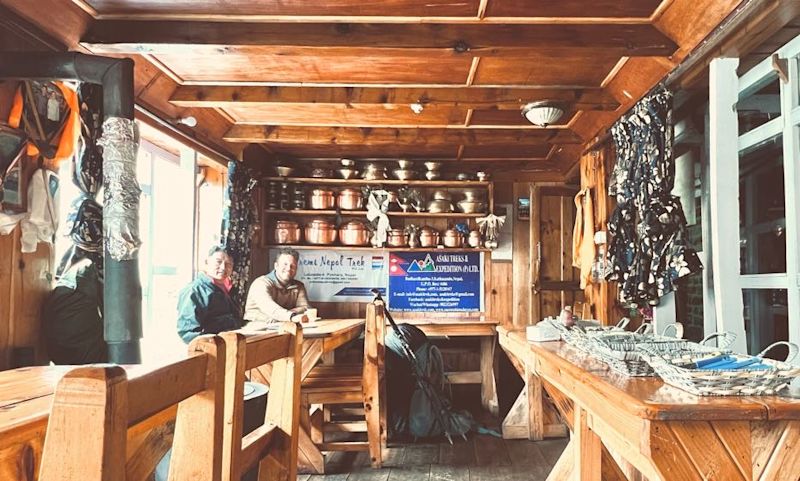
Our client Hala took this snap inside a teahouse on this Annapurna Circuit trek
If you hike the Annapurna Circuit in winter, some of the teahouses and other establishments like grocery stores will be closed. Those that are open are sometimes amenable to bargaining, as numbers are low. But if your budget isn't too constrained, you might consider not bargaining, since your income is sorely needed, especially in the wake of the coronavirus when there were months with no trekkers at all. In peak seasons, accommodation is usually booked up by trekking groups, and there’s no space for bargaining.
If you’re really looking for the most affordable Annapurna Circuit experience, then winter is a good time to go, as flights are usually cheaper (depending on your starting destination) and you could save a few pennies on accommodation and food. Personally, however, we don’t feel the price difference between seasons is at all great enough to really warrant finances becoming a deciding factor. Especially in light of the other, generally more important variables.
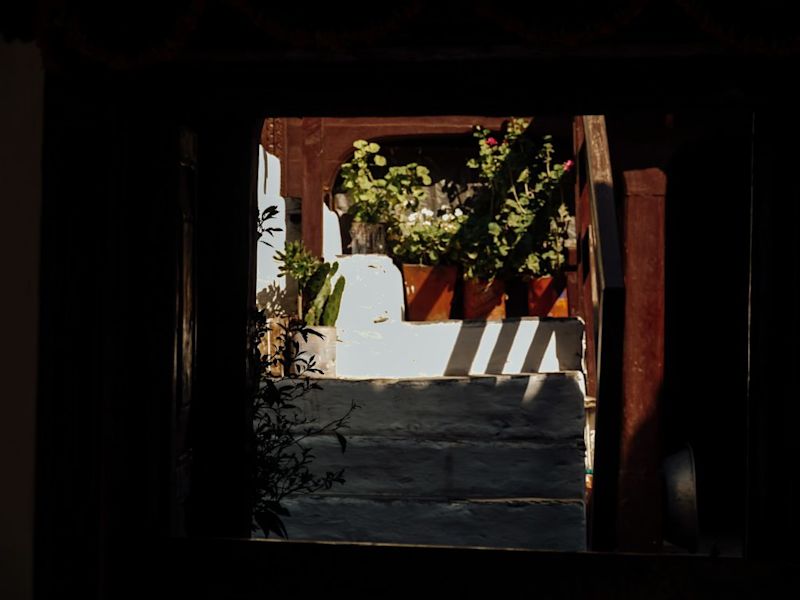
Part of the charm of the Annapurna Circuit is staying in independent teahouses
Summary of the best time to hike the circuit
There’s no definitive best time to hike the Annapurna Circuit. Every trekking group or individual decides which factors are the most important or are deal-breakers. We’d sum up the appeal of each season as follows:
- Winter is for crisp views and no crowds.
- Spring is for flowers and mild temperatures.
- Summer is for an empty trail.
- Autumn is for clear skies and mild temperatures.
Annapurna Circuit peak seasons
The busiest time of year along the Annapurna Circuit is October and November, as previously mentioned. This is because the monsoon rains have washed and refreshed the landscape, day-time temperatures are mild, and there is great visibility. The day and night skies are also very clear, allowing for sunny day-time pictures and night-time stargazing. The other peak season is late March to May.
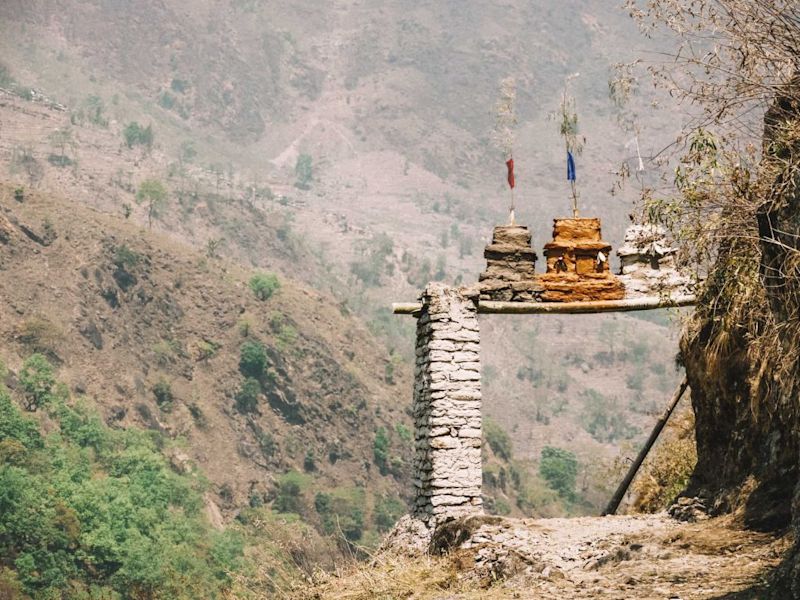
The sights of the Annapurna Circuit trek will stay with you for a lifetime!
We at Follow Alice don’t think it necessary to freeze our toes off at night, so we prefer not to trek in winter. The higher trekker numbers also aren’t always a bad thing – it’s fun to meet people from all around the world with a similar passion for hiking in world-class landscapes. Further, we always veer towards safety, as mentioned. Always, always.
What we really want is for you to have an experience that ends with beautiful memories.
What we really want is for you to have an experience that ends with beautiful memories, not grazed hands or a rattling cough. We want you to leave Nepal scheming your next trekking adventure because it was just too fun to not repeat. For these reasons we think that the best time to hike the Annapurna Circuit is in autumn, as this is when the weather is mild and the trek route most secure.

10 things I wish I knew before hiking the Annapurna Circuit
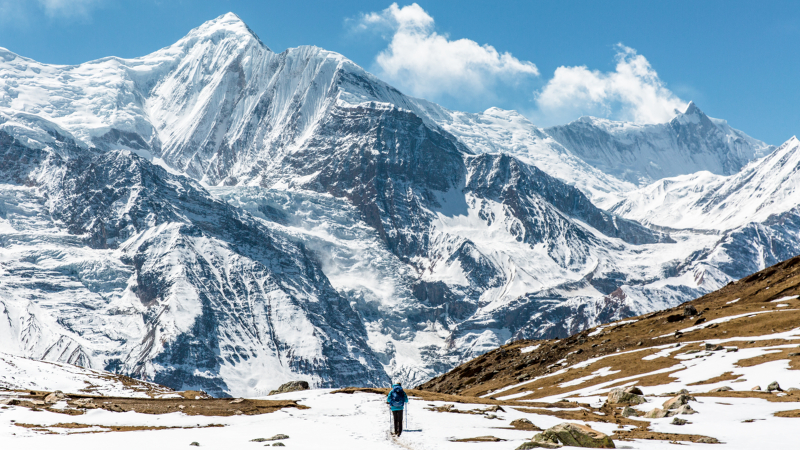
It’s one of the world’s classic long-distance hiking trails, and still one of Nepal’s most popular treks.
The Annapurna Circuit , a 12 to 21-day route that begins in the lush green villages of the Himalayan foothills. Taking trekkers over the 5,416m Thorong La Pass and down to the Tibetan-influenced temples and communities of the Mustang Valley.
If you want to experience a little bit of everything Nepal has to offer, this is perhaps the best trek to set off on, but it’s certainly no easy feat. The circuit is very tough at times, and the high altitude and unpredictable weather of the Annapurna mountain range can make crossing the Thorong La Pass a dangerous task – particularly if you’re not prepared.
Thankfully, I’ve got your back! So, here are ten things you should really know in order to complete the amazing Annapurna Circuit safely and with a smile on your face.
Check out Intrepid's Annapurna treks
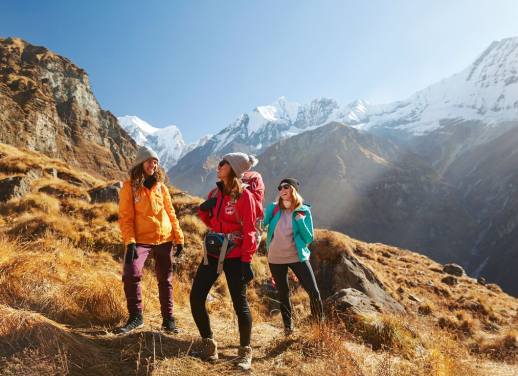
1. Plan the time of year right
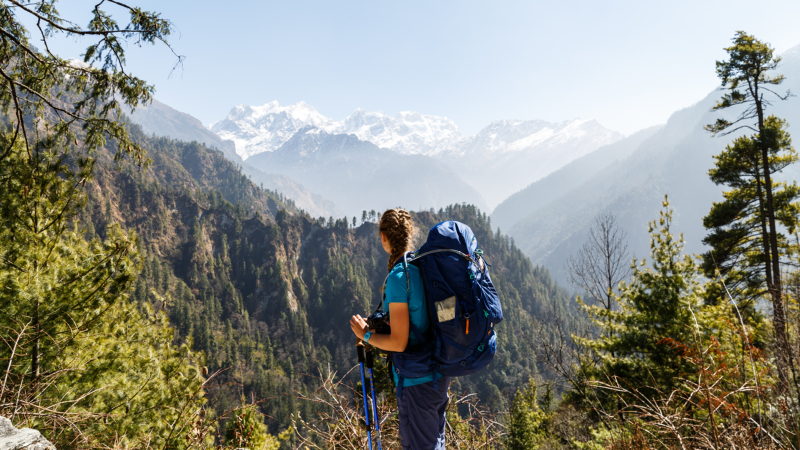
Photo captured by Annapurna Mellor
Like with many of the treks in Nepal, there are certain times of year when the weather conditions are ideal. For the Annapurna Circuit, October and November or April and May are widely considered to be the best times for trekking. The weather during these two seasons is generally clear and dry, and so it’s not too cold when heading into high altitudes. These two seasons are also the busiest times to be on the trail, with many other trekkers from across the world heading into the Himalayas.
You can also trek at other times of the year, but you will need to be a little more prepared for adverse weather conditions. The winter season, December to March, can also have clear skies and spectacular views. But it can be incredibly cold at higher altitudes, with thick snow on the ground that can often cause the Thorong La Pass to close at short notice. If you decide to trek during the winter season, make sure you have extra layers, a thick sleeping bag suited to temperatures of at least -20°C and crampons, which can be bought in Kathmandu and Pokhara.
GO NOW: EXPERIENCE THE BEAUTY OF THE ANNAPURNA CIRCUIT ON THIS 16-DAY ADVENTURE
2. Bring only what you need, leave the rest behind
When trekking on the Annapurna Circuit with Intrepid, Nepalese porters will carry 10kg of your gear. Anything extra will need to be carried on your own back, so packing as lightly as possible is essential. There are some things you need, such as a good quality sleeping bag, warm jackets, medicines, thermal layers and a head torch. But leave your jeans, laptop and makeup back in Kathmandu. You really don’t need them on the trail, and your back will thank you for it!
SUBSCRIBE TO OUR NEWSLETTER FOR THE LATEST TREKKING NEWS, OFFERS AND COMPETITIONS
3. The altitude should not be underestimated
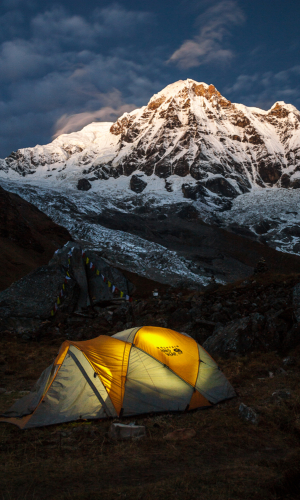
Altitude sickness can happen anytime above 2,500m. It doesn’t matter how fit you are, it can affect anyone and does so randomly. You can stay prepared by taking Diamox, an altitude medication, but aside from that just take it slow, drink lots of water and listen to your body. Before you set off on the trail, read up on the symptoms of altitude sickness so you’re aware of them if you start to feel the effects. Your guides will also be very knowledgeable about altitude and can be an essential source of help if you aren’t feeling well. The Annapurna Circuit reaches over 5,000m, that’s seriously high, and almost everyone will experience some mild symptoms like headaches or difficulty sleeping.
RELATED: ANNAPURNA OR EVEREST? YOUR DEFINITIVE TREKKING GUIDE
4. Be prepared for all weathers, whatever the time of year
While certain times of the year have much more suitable trekking weather (see point one), it is vital to be prepared for all possible conditions, no matter when you decide to go. High in the Himalayas, the weather is unpredictable, and snow, rain or storms can happen at any time. Climate change also means that weather patterns have become even more erratic over the last few years. Even if you’re trekking in October, be prepared for snow or storms on the trail. Pack enough warm clothing, make sure your boots are waterproof and don’t forget your sun cream or a sunhat.
GO NOW: DISCOVER THE HIGHLIGHTS OF THE ANNAPURNA CIRCUIT ON THIS 16-DAY ESCAPE
5. Eat well and look after your body
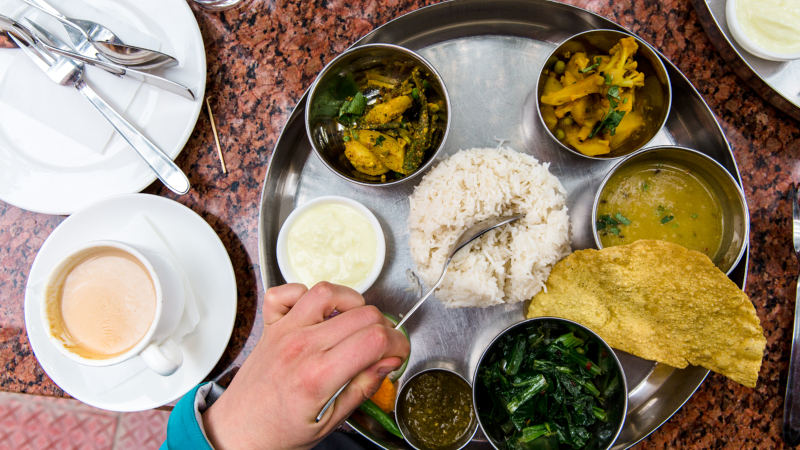
One of the best things about the Annapurna Circuit is the food and hospitality you will receive in the teahouses. Each evening, after a long day of trekking, you will be delighted to sit down in front of a roaring fire and tuck into a plate of dal bhat (a traditional Nepali meal of rice, lentils, vegetable curry and pickle). The food is delicious and very filling, and your body will be grateful for it the next day when you feel revived and ready to head out on the trail again. Other common offerings in guesthouses include garlic soup, a local remedy for altitude sickness and much better than it sounds. As well as, fried potatoes, spaghetti with local vegetables and of course apple pie – which is the Annapurna Circuit’s desert of choice due to the apple orchards growing in many of the villages along the trail. For snacking, I recommend stocking up in Kathmandu, as the cost of items like chocolate bars can get very high on the circuit.
RELATED: 8 NEPALI DISHES YOU HAVE TO TRY
6. It’s good to have a way to purify water
Plastic is a big problem on trekking routes across Nepal, as most of these small villages have no waste disposal system. This is leaving mountainsides cluttered with discarded plastic bottles, which is really not how we want to be treating these areas of striking natural beauty! You can’t drink the tap water in Nepal, and you really do need to be drinking a lot on the trail as you are walking long distances at high altitudes.
I recommend getting a steel reusable water bottle in Kathmandu. Along the trail, there are many villages with purified drinking water stations. Here you can refill your bottle and it actually works out much cheaper than buying bottled water. You can also use water purification tablets or buy a steripen. During the evenings, we would often order pots of hot water or tea and drink that, you can also fill up your bottle with any remaining in the pot and it’ll still be good to drink the next day.
TAKE ME THERE: EXPLORE OUR FULL RANGE OF ANNAPURNA CIRCUIT BREAKS
7. Learn some cultural respect
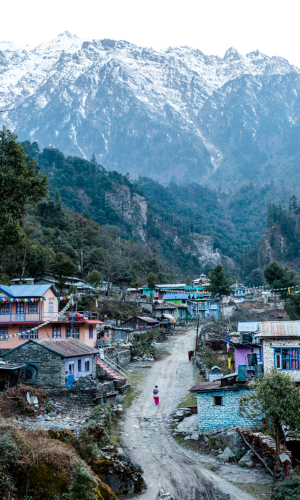
For many people, trekking in Nepal is about mountain views and hiking. But this is also a cultural trail, and it’s important to respect the people that call these villages their home. I recommend learning a little more about the cultures you are passing through. Speak to the families running the teahouses and go visit local gompas or temples. Opening your eyes to the cultures, religions and heritage of the trail will make it a much more enjoyable and meaningful experience, and it also means a lot to the local people when trekkers take an interest in their lives.
RELATED: MY INCREDIBLE MEETING WITH A HERMIT ON A NEPAL MOUNTAIN TREK
8. Don’t run out of cash
Once you leave Besisahar, there are no cash machines on the Annapurna Trail until you reach Jomsom after the Thorong La Pass. So, you need to be prepared and carry all the money you will need for the journey. While food and drinks in the teahouses can be cheap in the lowlands, they increase significantly as you increase in altitude and the road disappears. In Kathmandu, dal bhat is likely to cost you around 200 rupees, but this can grow to around 800 when you get above 3,500m. Western food such as burgers, pasta and burritos (yes, all food you can get on the trail), also tends to be very expensive as you get higher. I would recommend taking at least $20 per day for the trek, and if you’re a big eater or want to drink alcohol, $30-$40 per day is better.
GO NOW: TACKLE ANNAPURNA AND EVEREST ON THIS 31-DAY EPIC
9. Prepare yourself for the Thorong La Pass
Crossing the Thorong La Pass was probably the hardest day of my life! Waking up before sunrise and heading over narrow ridges in thick snow. Then climbing continuously for hours before finally reaching the prayer flags on the pass, breathless and completely relieved. Ok, maybe I’m not selling it so well. But it is essential to be prepared for this day, which will really push even the fittest hiker to the limits.
As long as you’re prepared, wearing enough warm clothes and have acclimatised enough to ensure your body comfortably makes the journey, then reaching the Thorong La Pass is going to be one of the most joyous moments of your trekking trip! Plus, once you’ve reached the top, you get to descend 1,600m to Muktinath, where the air is thick in oxygen and there are even hot showers to look forward to.
GO NOW: LIMITED ON TIME? OUR 5-DAY WALKING TOUR THROUGH THE ANNAPURNA RANGE
10. Be positive, take it slow and enjoy the journey!
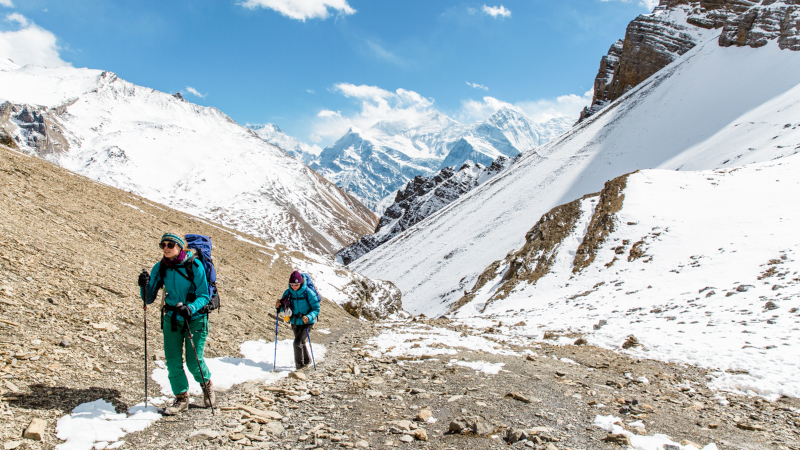
Travelling is meant to push you and challenge you in so many ways and trekking the Annapurna Circuit in Nepal will certainly do just that. While this is a difficult trek at times, it is also an incredibly enjoyable journey and one that can be completed by people of all ages and all fitness levels. The most important thing throughout the trek is to stay positive. Even when your body aches and you’re craving a hot shower, positivity will drive you on and it won’t be long before a breath-taking Himalayan panorama makes you remember why you’re here pushing yourself to the limit. It’s these incredible views, the wonderful hospitality of the local people and the company of your trekking buddies, which really make this a journey you will remember for the rest of your life!
RELATED: WHY CHALLENGING YOURSELF IS SUCH AN IMPORTANT PART OF TRAVELLING
Think you’re ready to take on the Annapurna Circuit? Take a look at our selection of trekking tours that’ll take you there . Already tackled it and looking for a new challenge? Check out our range of walking and trekking holidays from around the world.
Annapurna Mellor
Annapurna Mellor is a photographer, writer and storyteller. Her travels have taken her across Asia, Northern Africa, along the Trans-Siberian Railway and around Europe - always taking the road less travelled and always aiming to go a little deeper into the heart of local culture and people. Her photography work has been featured in National Geographic Traveller Magazine, Lonely Planet Guide Books and in campaigns for many travel brands around the world. Although she is usually dreaming about adventures afar, she is based, most of the time, in Manchester, England.
You might also like
The 7 best places to go on a..., 5 reasons to visit sri lanka in the..., why 2024 is the best year to see..., yellowstone vs yosemite: which national park to visit, 6 unique experiences you can have in el..., from delhi to udaipur, here are the five..., cinque terre vs amalfi coast: which destination to..., love at first bite: 10 famous sandwiches from..., galapagos or madagascar which unique destination should be..., central vs south america: how to plan your..., 4 reasons you should take a road trip....

Ultimate Guide to the Annapurna Circuit Trek
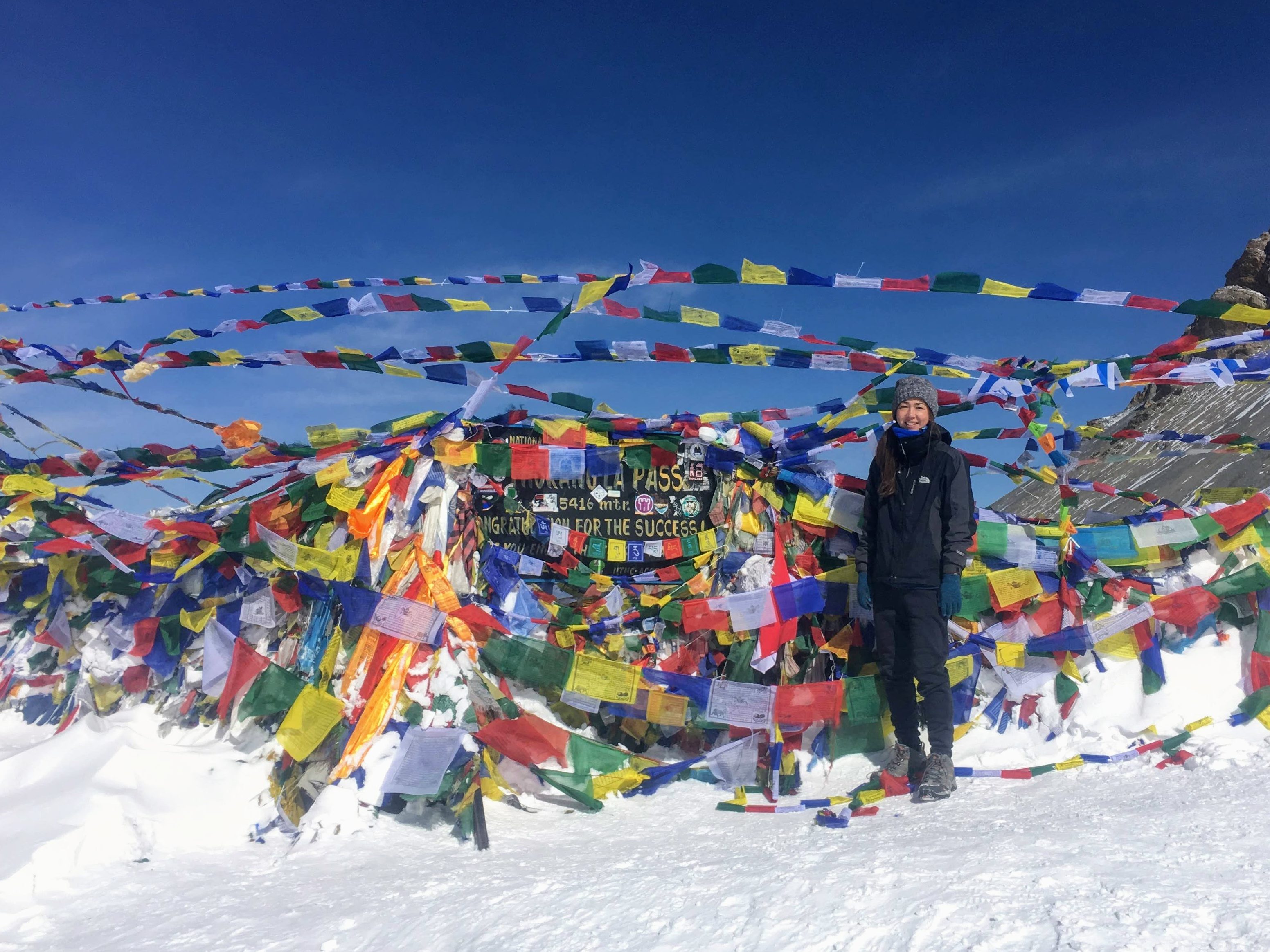
What started years ago as just a collection of trails between isolated Nepali villages in the mountains has turned into one of the most popular, iconic treks in all of Nepal : the Annapurna Circuit . If you are planning a trip to Nepal and have 2-3 weeks to trek, I recommend the Annapurna Circuit Trek (it’s better than Everest Base Camp !).
You’ll be rewarded with changing scenery every day: from snow-capped mountains, rivers and waterfalls and glaciers. There are fields of yaks and goats, and villages covered in colorful prayer flags fluttering in the wind. You’ll meet and stay with local Nepali families at their guesthouses, eat meals with trekkers from around the world and make many new friends.
To reach the highest point of the Annapurna Circuit, Thorong La Pass , is a great physical feat that you’ll remember for the rest of your life.
Here’s all you need to know before you embark: your Ultimate Guide to the Annapurna Circuit Trek!
Skip to Ultimate Guide to the Annapurna Circuit Section:
Overview Guided vs Unguided Duration Itinerary Samples Getting To and From the Circuit Insurance Permits Food & Accommodation Budget & Money Packing List WiFi/SIM card Safety Concerns Comparison to Everest Base Camp
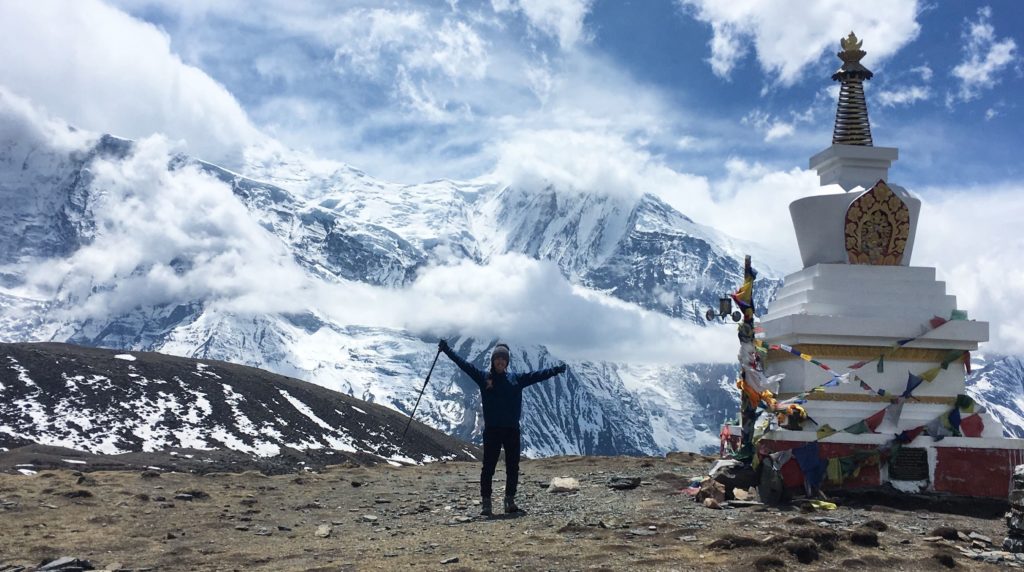
Overview of the Annapurna Circuit Trek
Duration: 8 – 21 days (depends on transportation used – see Duration section below) Change in Altitude: 790m at Besisahar to 5416m at Thorong La Pass Distance per day: 10+ km Total Distance: 230 km from Besisahar to Birethani Best season: April-May, September-November Budget: $20 USD or 2000 rupees/day. At low altitude, $5-7/day. At high altitude, $25-$30/day
See my full packing list here !
The landscape on the Annapurna Circuit changes from lush greenery and Nepali agricultural fields at low altitude, to rocky riverside valleys and snowy mountain tops at high altitude. Sometimes the trail opens up to wide plains, where you can see the Annapurna mountain range and glacier formations in the distance.
If you’re at low altitudes during the right time of the year, there’ll be a lot of colorful wildflowers. At higher altitude you’ll be above the tree line, so there are small bushes and shrubs along side you, with yaks grazing nearby. You may also experience trekking through snow at 4000m+.
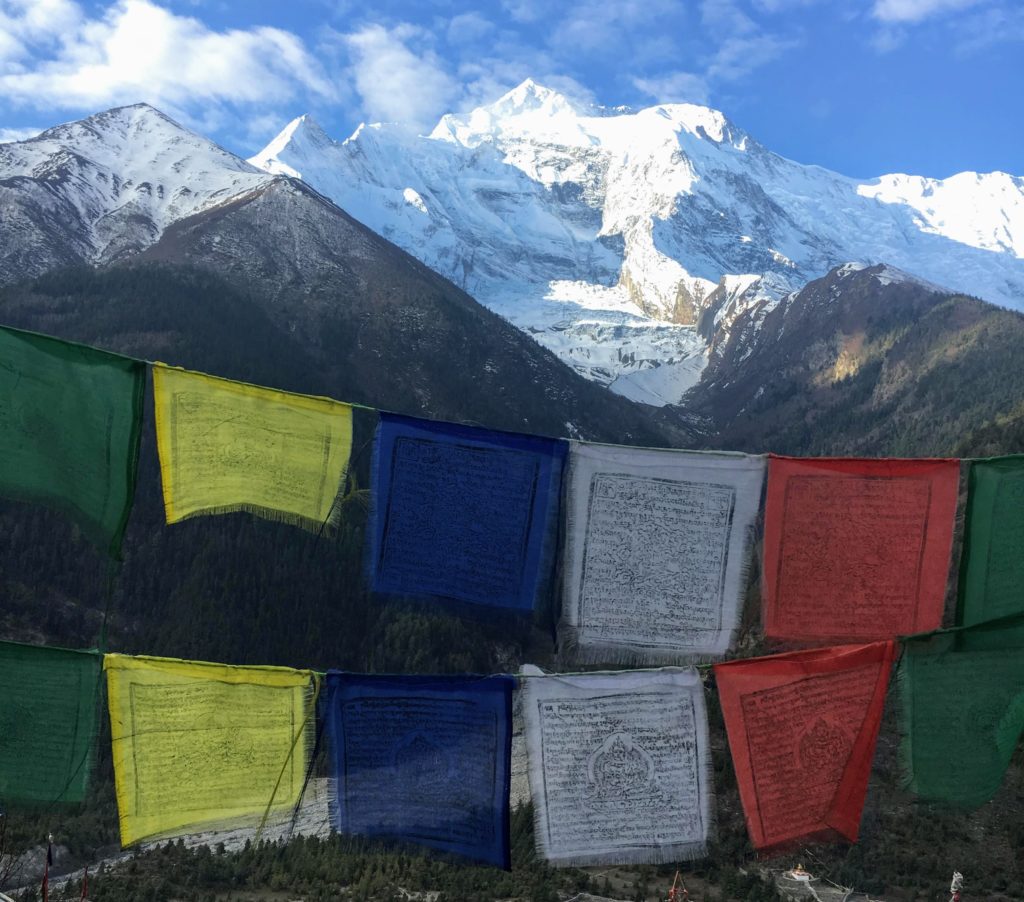
Trekking the Annapurna Circuit Guided vs Unguided
I trekked the Annapurna Circuit unguided , and I think it’s safe to do so. The entire trek follows a river that’s dotted with villages, so you’re never far from civilization. There are almost always locals or trekkers nearby who can point you in the right direction if you get lost. The trails are clearly marked, and you can follow maps.me trails to double check if you’re going the right way.
Getting a guide is helpful if you’re really worried about losing your way. A guide can also explain to you more about the local people and traditions of the region, give you accurate estimates on how far and for how many hours you’ll be trekking that day. Guides can also communicate with guesthouse owners for you about meals and accommodation, but I experienced little language barrier in the mountains.
Annapurna Circuit hiking tip: Be sure to meet your guide before you start the trek ! Guide quality and experience varies greatly.
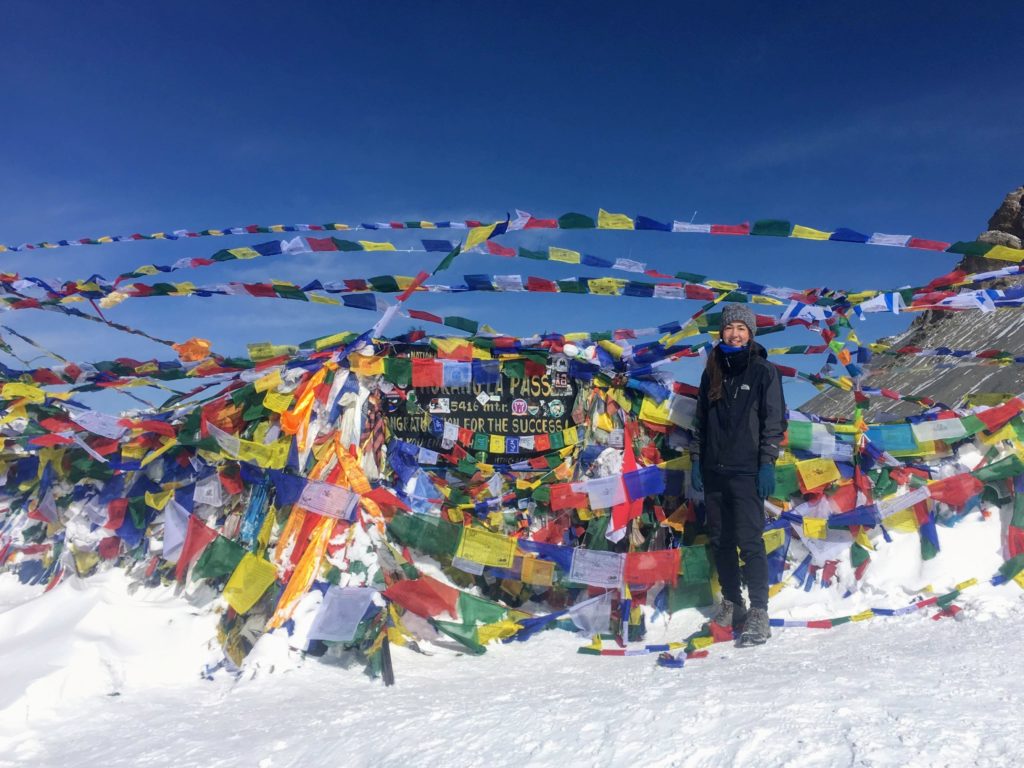
Most people who trek the entire Annapurna Circuit could complete it in 14-21 days. However the duration depends on the side treks you want to do, and the distance you want to cover each day.
Theoretically you can do just the highest altitude section of the Annapurna Circuit in 8-10 days , if you jeep up to Chame, then Jeep back down from Jomsom. This increases the chances of getting altitude sickness because your body has very little time to adjust to the high altitude. I personally don’t recommend it, also because you skip some beautiful sections of the trek, but for those on a tighter schedule this may be an option.
I trekked the Annapurna Circuit in 13 days because I started in Tal, and sped through the last section to Nayapul after Khagbeni. This included an acclimatization day in Manang, and a detour to Khagbeni after Thorung La pass. The group of trekkers I hiked with started in Tal then took a jeep down from Jomsom, so they were trekking the Annapurna Circuit for 10 days.
A woman on the trail was doing every single side trek possible because she was loving the Annapurna range so much. She was on day 30 when I met her outside of Tatopani!
Annapurna Circuit 8-day, 13-day, and 18-day Itinerary Samples
Annapurna Circuit 8-day sample itinerary Day 1: Pokhara -> Besisahar (bus) -> Chame (jeep) Day 2: Lower Pisang/Upper Pisang Day 3: Bhraka/Manang Day 4: Manang (acclimatization day) Day 5: Yak Kharka Day 6: Thorung Pedi Day 7: Muktinath Day 8: Jomsom -> Pokhara (jeep)
Annapurna Circuit 13-day sample itinerary (this is how I trekked the Circuit) Day 1: Pokhara -> Besisahar -> Tal (jeep) Day 2: Koto/Chame Day 3: Lower Pisang/Upper Pisang Day 4: Bhraka/Manang Day 5: Manang (acclimatization day) Day 6: Yak Kharka Day 7: Thorung Pedi Day 8: Muktinath Day 9: Khagbeni Day 10: Larjung Day 11: Tatopani Day 12: Ghorepani Day 13: Poon Hill side trek -> Birethani -> Pokhara (bus)
Check out my more detailed 13-day itinerary here !
Annapurna Circuit 18-day sample itinerary (Full Circuit plus Tilicho Lake side trek ) Day 1: Pokhara -> Besisahar (bus) -> Bhulbhule Day 2: Jagat Day 3: Danakyu Day 4: Chame Day 5: Lower Pisang/Upper Pisang Day 6,7: Bhraka/Manang (acclimatization day) Day 8: Tilicho Lake Base Camp (side trek) Day 9: Tilicho Lake/TIlicho Lake Base Camp (side trek) Day 10: Yak Kharka Day 11: Thorung Pedi Day 12: Muktinath Day 13: Khagbeni Day 14: Marpha Day 15: Ghasa Day 16: Tatopani Day 17: Ghorepani Day 18: Poon Hill side trek -> Birethani -> Pokhara (bus)
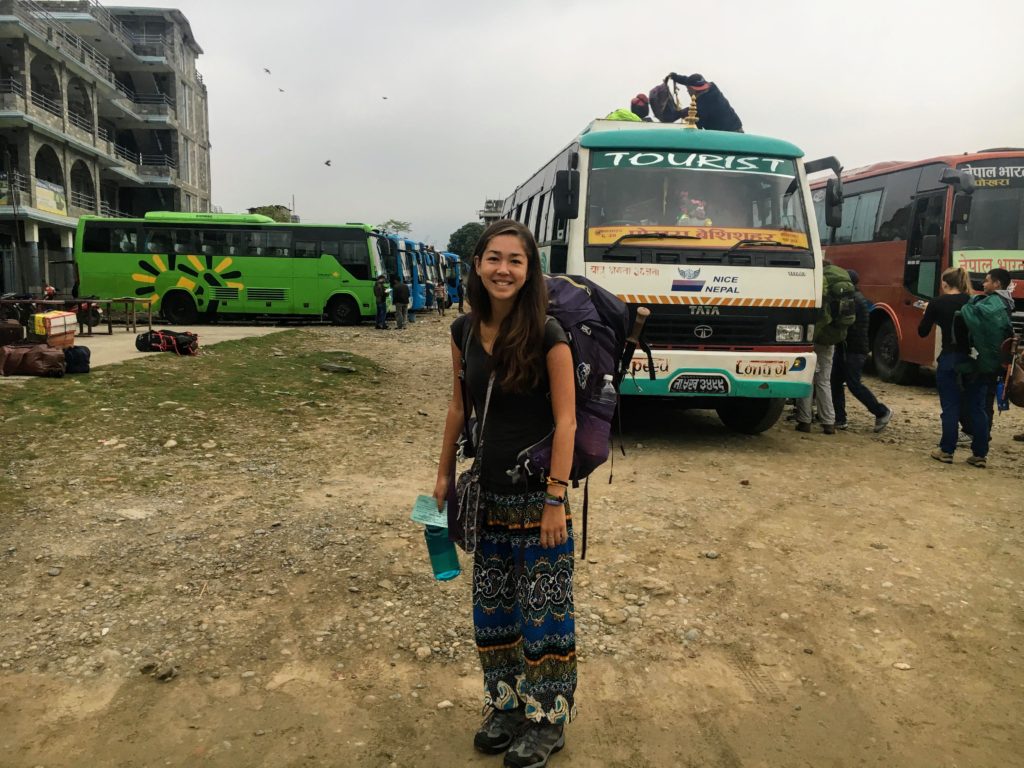
Getting To and From the Annapurna Circuit
Getting to besisahar from pokhara/kathmandu.
To get to the Annapurna Circuit, you’ll take a bus from Pokhara or Kathmandu to a village called Besisahar .
From Pokhara, you can take a bus from the tourist bus station to Besisahar (book a ticket in advance, and negotiate on the price) for 500-600 rupees. The bus leaves once per day at 6:30am and takes about 5 hours.
To get from Kathmandu to Besisahar, a microbus that leaves at 6:45am from the front of BG mall. It takes about 7 hours can costs 550 rupees ($5.50). Alternatively, you can catch any tourist bus heading to Pokhara from Kathmandu and ask to be dropped off at Dumre. From there, catch the local bus or a taxi to Besisahar.
*Bus schedules may change so ask any tourist agency to point you to where you can catch these busses!
Ultimate Guide to the Annapurna Circuit Tip: Once you reach Besisahar, there are many jeeps that take people up to a higher elevation starting point on the Annapurna Circuit such as Tal or Chame.
Getting back to Pokhara from Nayapul
The “finish line” of the Circuit is Birethani, after which there is a 30 minute walk to Nayapul.
From Nayapul you can take the local bus back to Pokhara for 120-200 ($1-$2) rupees. There are also many taxi drivers waiting to take trekkers back to Pokhara.
If you prefer, you can spend 2-3 days walking back from Birethani to Pokhara because there are many villages in between.
Just in case you encounter serious altitude problems while you’re on the trek, make sure you have traveler’s insurance .
Ultimate Guide to the Annapurna Circuit Tip: It’s important to check if your insurance will cover you up to 5416m in elevation also – many will have an elevation limit that’s below 5000m!
World Nomads insurance allows you to purchase insurance with them even when you’re already abroad. They have a “Standard” insurance plan and an “Advanced” one for extreme sports/traveling activities and high altitude!
Permits for the Annapurna Circuit
There are two different permits that you need to purchase before departing on the trek, the TIMS and the Trekking permit. There is nowhere on the Circuit where you can buy these, so you need to go to the tourist office in Kathmandu or Pokhara ahead of time. There are a multitude of checkpoints along the entire circuit, so don’t try to trek the Annapurna Circuit without these permits!!
You can get your TIMS and Trekking permit in Kathmandu or Pokhara . I got mine in Kathmandu – the office is about an hour walk away from Thamel. The tourist office in Pokhara is near the tourist bus station, which is a short taxi ride from the main part of town known as Lakeside Pokhara.
Bring at least 4300 rupees with you, and 4 passport photos to get your permits for the Annapurna Circuit trek. Passport photos can be purchased at many stores around Thamel. I got 8 small pictures for 200 rupees ($2).
The TIMS costs $20 or 2000 rupees, and the Trekking Permit costs $23 or 2300 rupees.
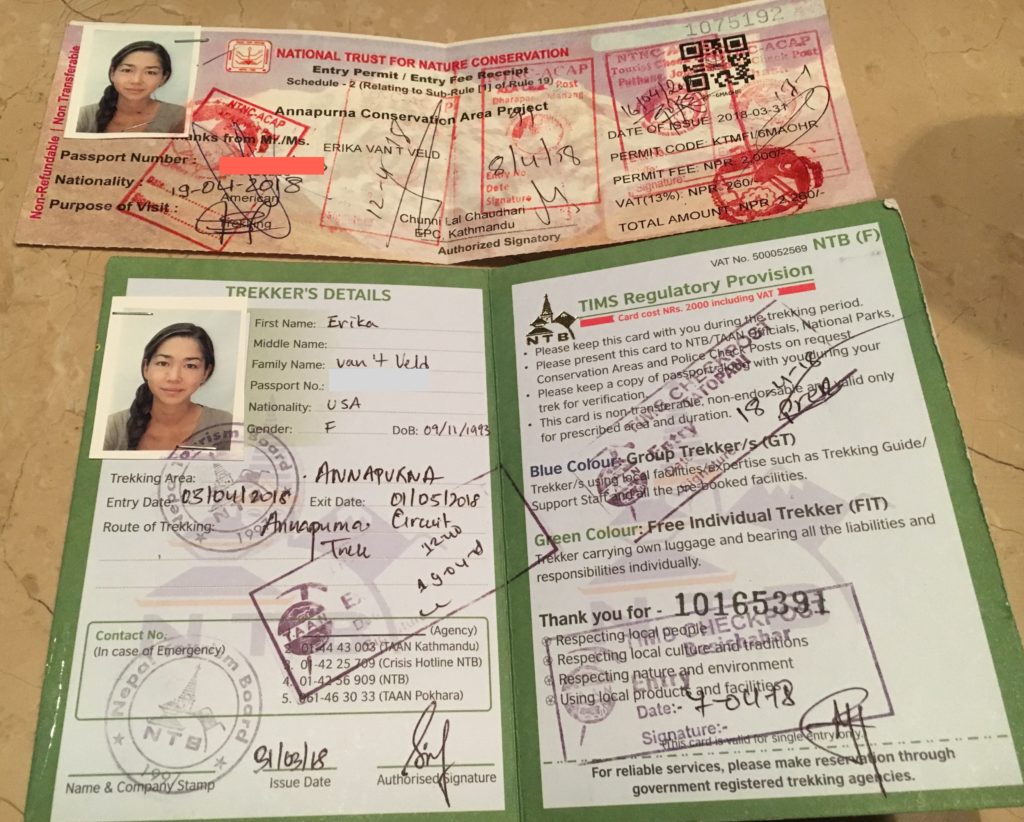
To fill out the permit forms, aside from personal and passport information, you need to include the following information to get the trekking permits. There’s no wifi at the Kathmandu office so make sure you have everything you need saved on your phone!
- Expected Trek Start Date and End Date (This can be approximate. It is best to overshoot how many days you think you’ll actually spend in the area)
- Expected Trek Start Location and End Location. For the Annapurna Circuit, it’s Besisahar to Nayapul (But I just put Pokhara for both, and had no issues)
- Insurance Policy Number (I didn’t have this on hand when I went to apply so I put a random string of numbers down that I found in an email with the insurance company, and had no issues.)
- Route of Trekking (Annapurna Circuit)
- Trekking Area (Annapurna Circuit or Annapurna Region)
- Purpose of Visit (Trekking)
Food and Accommodation on the Annapurna Circuit Trek
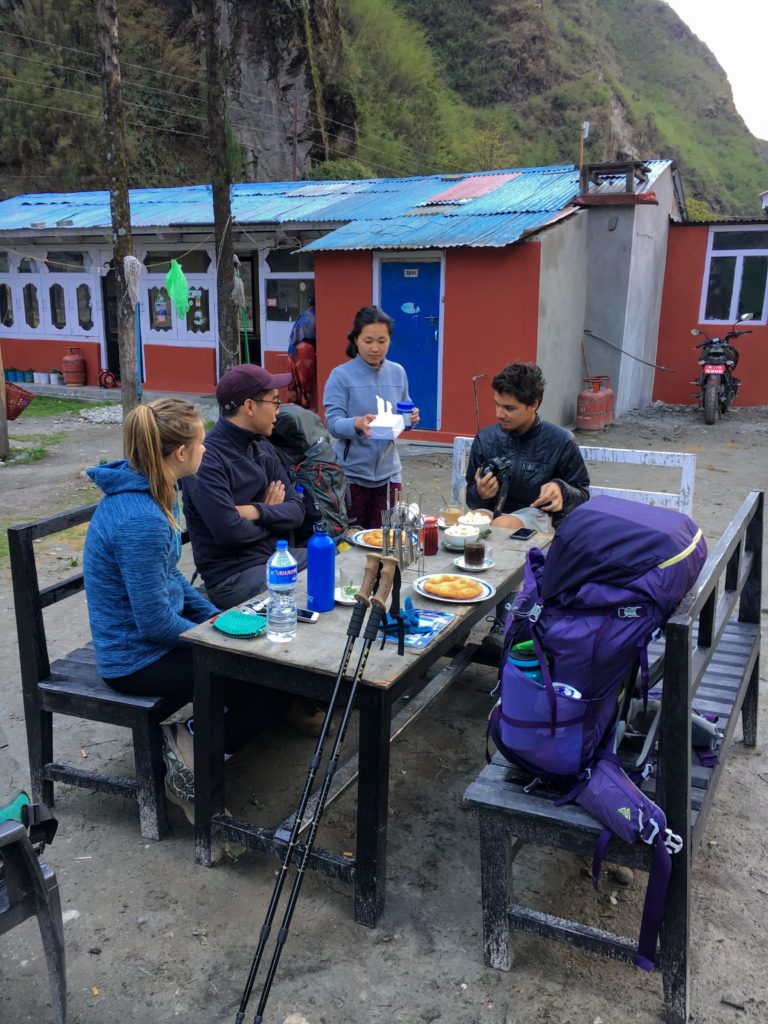
One of the many perks of trekking in Nepal is the teahouses or guesthouses that you’ll be staying in along the Annapurna Circuit!
Traditionally, trekkers stay for free at teahouses in exchange for eating meals there. Meals should include dinner after you arrive, and breakfast before you leave for the next day of trekking. In the villages on the Circuit there are rarely any restaurants that are not part of a guesthouse. So you would be taking your meals at the place you stay anyways. It’s a win-win!
The typical Nepali dish that locals eat and is available at every guesthouse is Dal Baht – a curry and rice dish that usually includes an extra serving in the price!
Pasta, fried noodles, fried rice, pizza, noodle soups, and burgers are also standard dinner items at guesthouses when trekking the Annapurna Circuit. Breakfast options include yogurt with muesli, fried Tibetan bread, porridge, and pancakes.
Don’t expect to be able to cook for yourself along the trek. Since the guesthouses are letting you stay for free, you should really eat the food that they provide for you there . Lunch is a different story though, and you may be able to ask some places for 1 liter of boiled water if you wanted to make something easy like ramen noodles or oatmeal.
Accommodation
The majority of my accommodation on the Annapurna Circuit, I stayed for free . It’s easy to spot which buildings in the villages are the guesthouses because of signs outside their properties. When you find whoever manages the guesthouse, ask if they have rooms available. If they say yes, phrase your next question like this: “Can we stay for free if we eat dinner and breakfast here?”
Guesthouses on the Annapurna Circuit may charge 100-200 rupees for a room if you’re trekking solo, which I had happen to me on some occasions. If you stay in fancier, more hotel-like lodges, they may charge extra for a room as well. Large lodges will usually have a bit more luxury for the higher price you pay, such as an attached bathroom, a gas shower, and/or free, fast wifi.
What to expect:
Accommodation on the Annapurna Circuit range from having attached bathrooms in the rooms to shared toilet shacks out back, and from having nice thick, insulated walls to just planks of wood nailed between you and the outdoors. They’ll always have more duvet covers if you need them, sometimes at a premium.
The guesthouses always have a common room/restaurant area to take meals in or to chill out in until you retire for the night. These usually have a stove (powered by yak dung!) to heat the area, and sometimes there are benches around the kitchen stove where you can warm up as well.
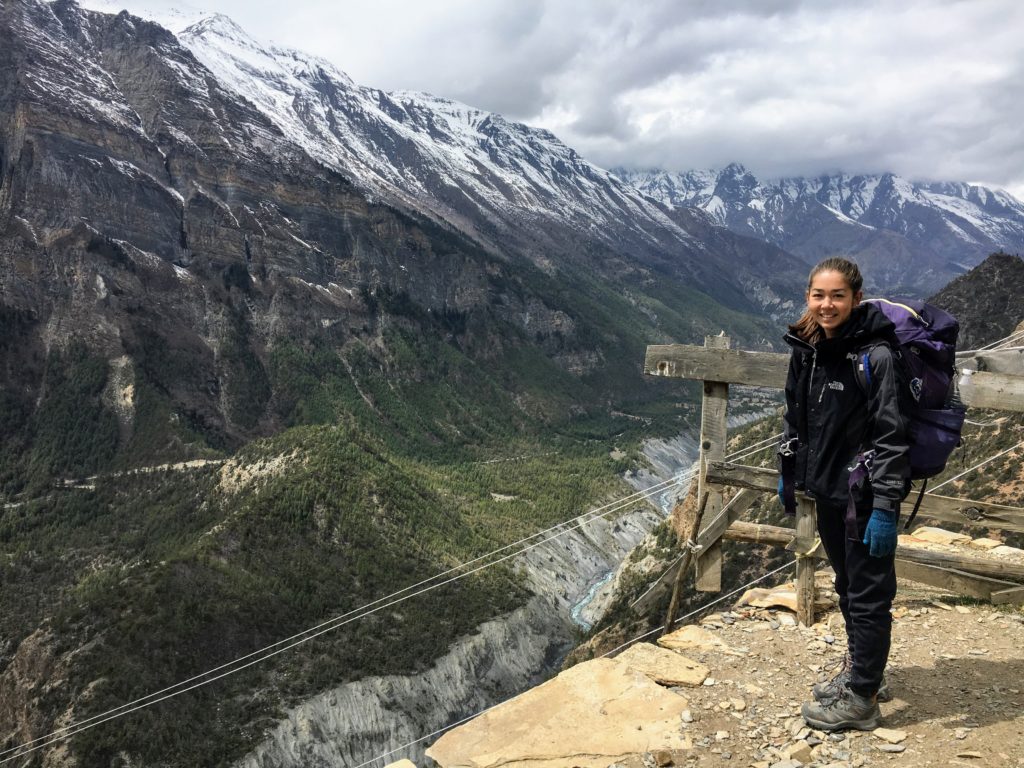
Budget & Money on the Annapurna Circuit
Ultimate Guide to the Annapurna Circuit Tip: Bring with you all of the money that you plan to spend on the Annapurna Circuit from Pokhara (or Kathmandu). There are plenty of ATMs in Pokhara to withdraw money from, but t he only ATMs available on the Annapurna Circuit are in Jomsom, which is passed the halfway point of the Circuit.
I personally brought 40,000 rupees with me ($400), and only spent about 25,000 ($250) in 13 days . This does not include the cost for the permits (4300 rupees or $43), nor the cost for the gear that I bought in Kathmandu and Pokhara.
The cost for food and snacks changes drastically from the start of the trek at low altitude vs at high altitude. At the start of the trek I spent about $6-8 day , and close to Thorung La Pass I was spending $20 per day on the same meals and for accommodation.
Ultimate Guide to the Annapurna Circuit Budget: Bring about 2000 rupees ($20) per person per day. My Annapurna Circuit budget was $400 for 14 days, and I spent $250.
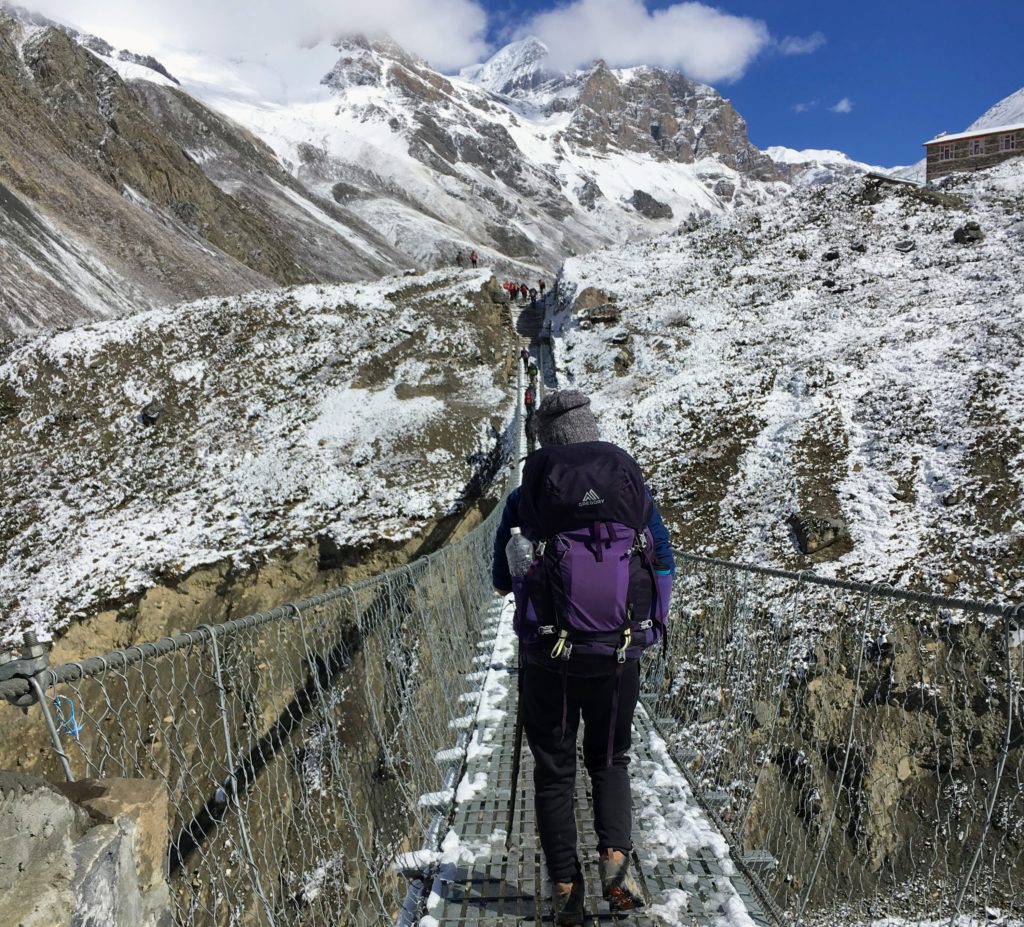
Packing List for the Annapurna Circuit
I’ll divide this section of my Ultimate Guide to the Annapurna Circuit into four different parts: Ph armacy, Clothing, Gear, and Other . This is a list of things that I brought on the Annapurna Circuit, minus things I didn’t wear or use.
Check out my full Trekking in Nepal Packing List!
Remember the goal is to be as efficient as possible when packing, so you don’t need to carry so much around with you.
Feminine products 16x Cough drops (wish I had brought more!) 10x Band-Aids 5x Rehydration Salts (Awful taste but really important) 1x Diamox strip (I didn’t use these but many people do) 1x Paracetamol strip 50x Water purification tablets (I used about 40 of these) Sunscreen! Deodorant Toothbrush/toothpaste Packet of baby wipes Lotion Razor Hair ties Toilet Paper
1x long-sleeved under armour 1x long-sleeved heat-tech shirt 1x long heat-tech leggings 1x thick under armor sweatpants 1x T-shirt 6x underwear 2x bras 3x thick trekking socks 1x normal socks 1x fleece 1x Goretex thick North Face jacket 1x thin windbreaker 1x thin gloves 1x thick gloves 1x hat 1x neck wrap
1x 55-65L backpack 1 pair of mid hiking boots 1 pair of Chacos/ trekking sandals 1 pair of trekking poles 1 pair of microspikes
Reusable water bottle
Quick-dry towel
Sleeping bag
Battery pack !! Phone + charger GoPro + charger Kindle Flashlight or Headlamp
Optional to bring:
Microspikes/Crampons Knee braces (450 rupees from pharmacy in Kathmandu – these saved my life!) Small day bag Flip flops Dry shampoo Honey Ear plugs Snickers bars Sunglasses
There are many hostels in Kathmandu and Pokhara that will let you leave your luggage at their hostel for a small daily fee, or even for free (I left a bag in Kathmandu’s Shantipur Hostel , then a second bag at Pokhara’s Pokhara Youth Hostel, both for free). It’s important to take advantage of these services, or else you’ll have a hell of a time hiking at 5400m with a 15kg bag!
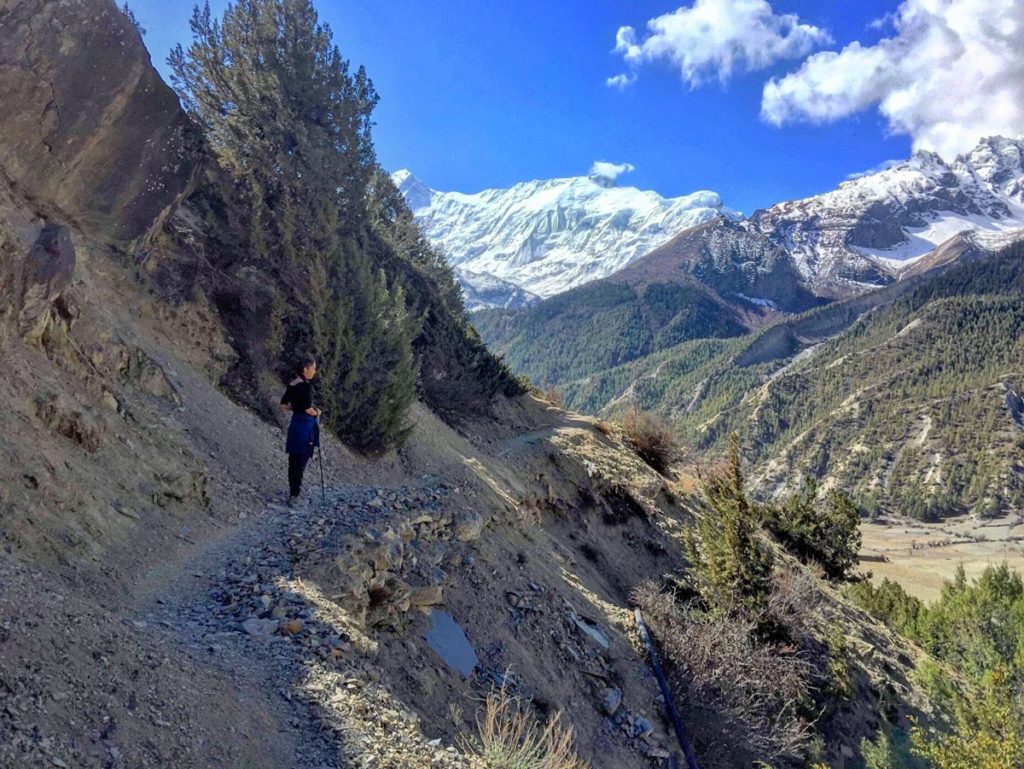
Wifi/SIM card
Before I left Pokhara, I messaged my family and friends saying that I would be without WiFi for the next 14 days, and not to worry if they don’t hear from me. Little did I know WiFi is a common luxury at guesthouses around the Annapurna Circuit !
Most guesthouses on the Annapurna Circuit have poor quality WiFi that you can use for free, or for a small fee per device. Don’t expect much, but it’ll be enough to send some messages to the outside world.
Before leaving Pokhara I purchased an NCell SIM card . It was 1500 rupees ($15) for 10 GB of data. I didn’t have service on most of the East side of the circuit before Thorong La Pass (but free Wifi was common). But I had service sporadically on the West side of the circuit, including in Muktinath, Jomsom, and Tatopani.
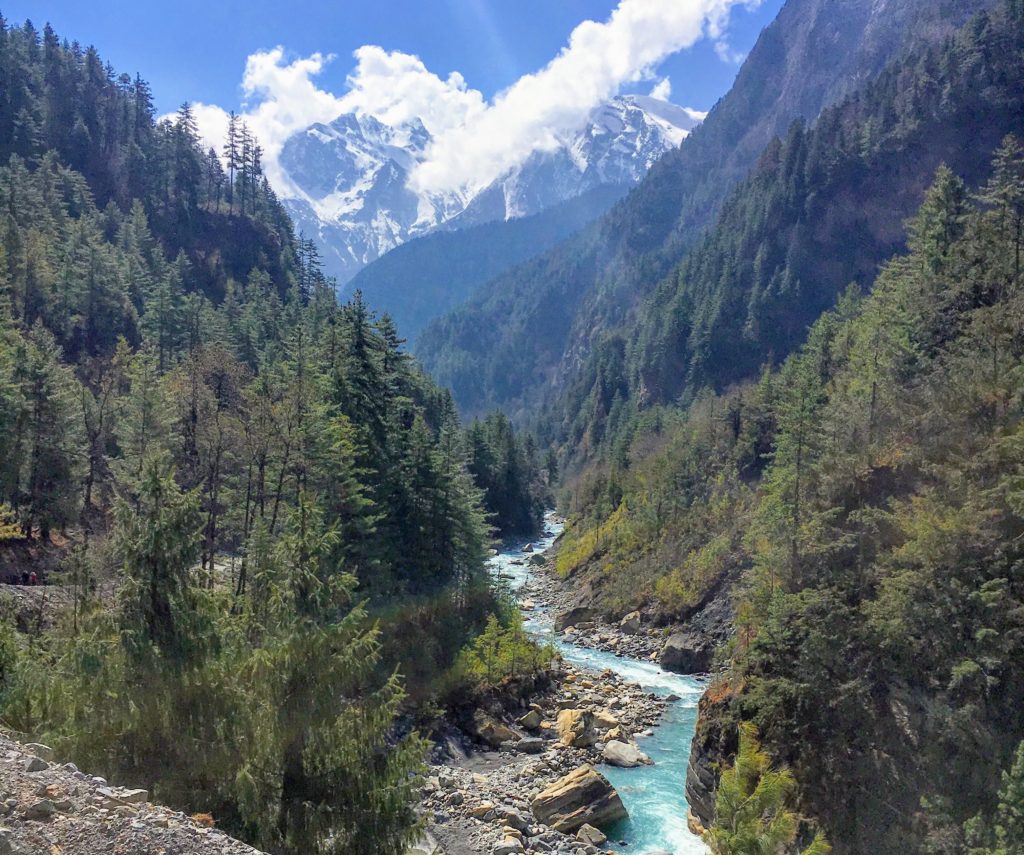
Safety Concerns on the Annapurna Circuit
I remember one sleepless night in Kathmandu where I thought about everything that could possibly go wrong on the Annapurna Circuit. Having finished the trek, let me assure you there is nothing to worry about! Skip down to any worries you might have and put your mind at ease.
Getting “Taken”/General women’s safety
Nepali people are so friendly along the Annapurna Circuit. On your first day, any worries about getting mugged, kidnapped, etc will disappear immediately. Think of all the solo female trekkers who did the Circuit before you and were fine! Unlike some parts of India, it’s common to see local women walking around alone everywhere, and they even run many of the guesthouses on their own or with their daughters.
Getting lost forever on the Annapurna Circuit
Not possible. The trails for the most part are clear to see and clearly marked. During the high season there will almost always be someone in the distance you can follow, or someone behind you who you can wait to ask for directions. The entirety of the trail goes alongside a river except for Thorong La Pass Day when everyone is bunched together in a group anyways. As long as you keep the river and other trekkers in sight you’ll know where the villages and civilization are.
Avalanches at Thorong La Pass
Not happening. The pass itself is very wide and the mountains on either side are far enough away that there is nothing of this sort to worry about. There are some sections where you walk over snow on a steep incline. If you’re worried about slipping, bring crampons!
There are sections that have warnings about landslides. These occur for mostly if there is someone or something running around above you in a landslide area and rocks come loose.
Check above you if there are any goats or sheep before you cross a landslide section. If you’re walking across a landslide section, keep distance between you and the person in front of you. Walk on the inside of the trail. Remember that yaks and horses use these same trails. If they can make it without causing a landslide, so can you.
Freezing
Don’t worry. Your body will stay surprisingly warm while you’re trekking. I brought a pair of snow pants with me that I used only on Pass Day, but took off after an hour because I was getting too hot. When you arrive at the guesthouse your body temperature will start to drop, so huddle up in your sleeping bag or next to the heater in the common area.
Snow and extreme weather
If it’s blizzarding outside, it’s best to wait until it clears, to continue on the Annapurna Circuit. The only day where I had to trek through snow for a significant amount of time was on Pass Day, and still the path was obvious. If the weather starts to change at the top, ask any of the guides what is best to do. Worst case scenario, there’s a warm tea shop next to Thorong La Pass where you could wait out a storm.
Not being able to find a guesthouse
The villages along the Annapurna Circuit are covered in guesthouses. Sometimes there are random guesthouses dotted along the trails as well. If you are trekking outside of the high season, you will have no problem finding a room at a guesthouse along the Annapurna Circuit.
If you are trekking in October without a guide, it might be a good idea to start trekking early to beat the others. And if all of a town’s guesthouses are full, it’s never too far to the next village. Some guesthouses may let you stay with your own sleeping bag in their common area too.
Altitude Sickness
Almost everyone experiences some form of altitude sickness while on the Annapurna Circuit, but they are mostly just mild nuisances. If you take it slow on the Annapurna Circuit and always listen to your body, serious altitude sickness won’t be an issue.
Signs of acute altitude sickness include headache, dizziness, nausea, and shortness of breath. There are other symptoms like tingling in the hands and face.
If any of these symptoms worsen, it’s a good idea to take a rest day, or drop altitude and wait for it to get better. The human body is damn tough, and it will adjust along the trail to the lower oxygen levels as long as you are giving it time to do so.
If you think your body will be prone to altitude sickness, take some Diamox pills with you. I didn’t use these, but many people took them every day once they reached 4000m or above. Consult your doctor before you take any sort of medication!!
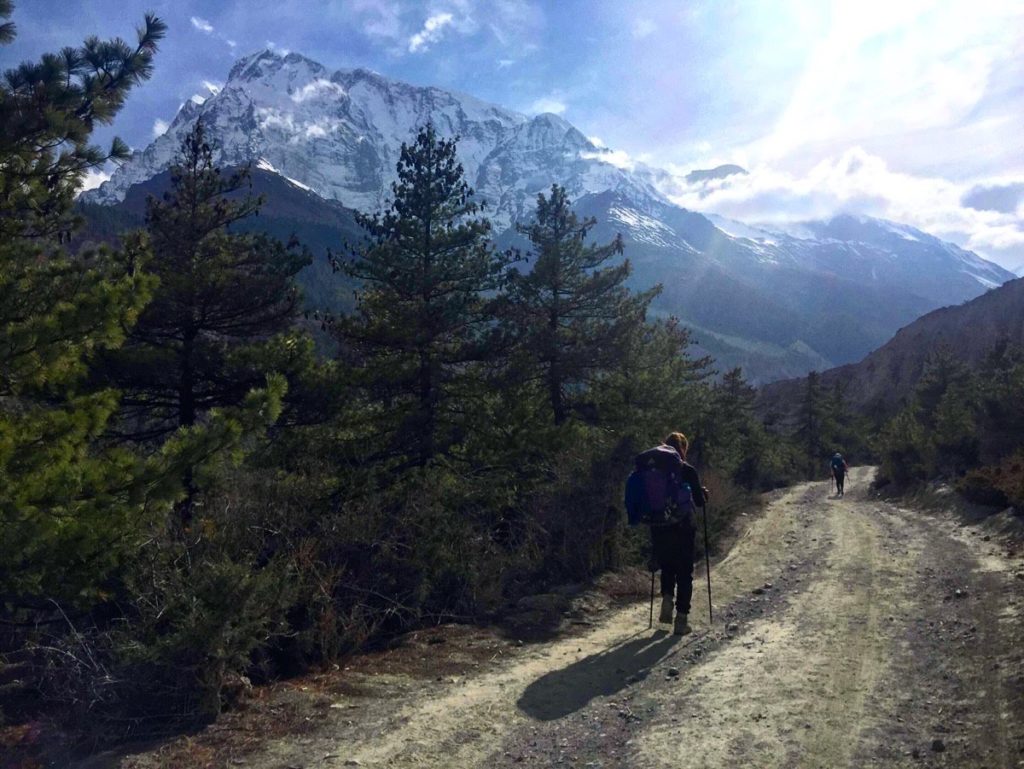
Comparing the Annapurna Circuit vs Everest Base Camp
Annapurna’s competing iconic trek in Nepal is the Everest Base Camp Trek . In terms of duration, it takes a similar amount of time to complete (12-16 days) and you’ll experience a similar climate as the Annapurna Circuit. In terms of the trekking experience, the Annapurna Circuit and Everest Base Camp treks are quite different. If you only have time for one, I recommend the Annapurna Circuit over Everest Base Camp trek.
See my blog post comparing the Annapurna Circuit Trek vs the Everest Base Camp Trek !
Alternatively, if you are choosing between the Annapurna Circuit and the Three Passes Trek + EBC , I would choose the Three Passes Trek because of its epicness!! This trek is more off-the-beaten-path, and takes you to higher elevations and greater views than the EBC trek alone does. Check out the vlog by Intrepid Road about the Three Passes Trek!
In Conclusion...
The Annapurna Circuit was one of the most rewarding, beautiful treks I’ve ever done in my life (and I grew up in the Rocky Mountains!). To spend so many days in the wilderness but not have to worry about food and a bed at the end of the day gives you a chance to enjoy nature and reflect on your life in a way that only Nepal can offer.
What are you waiting for?? Get your packing list together and go!
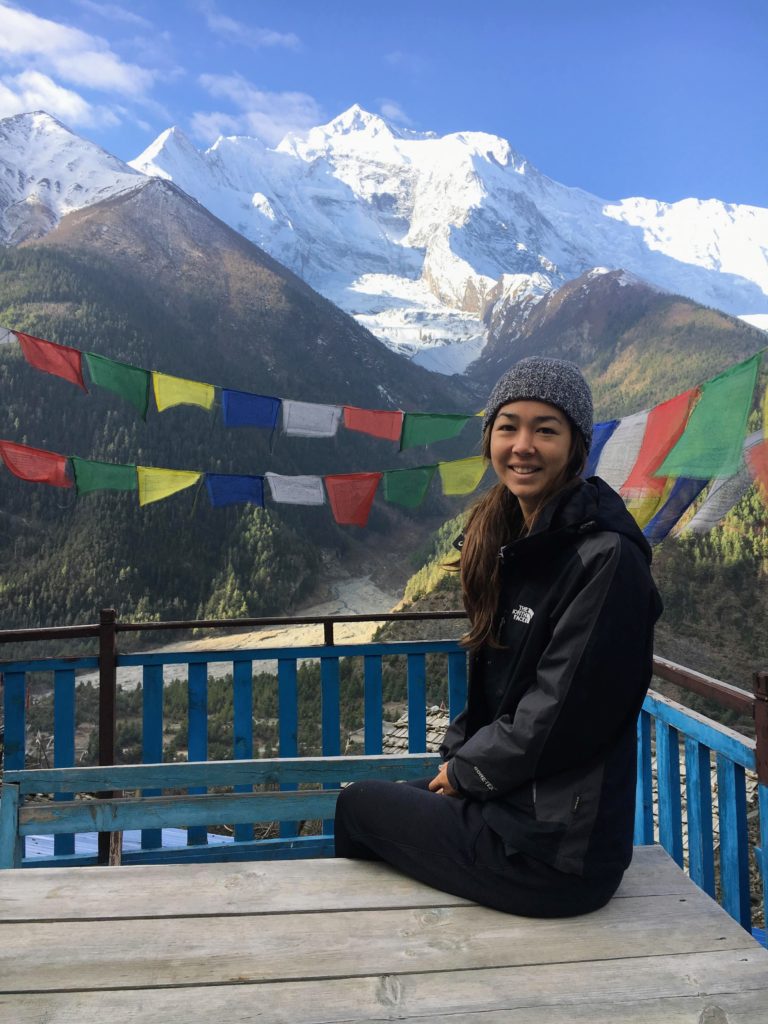
Pin this Annapurna Circuit Ultimate Guide for later!
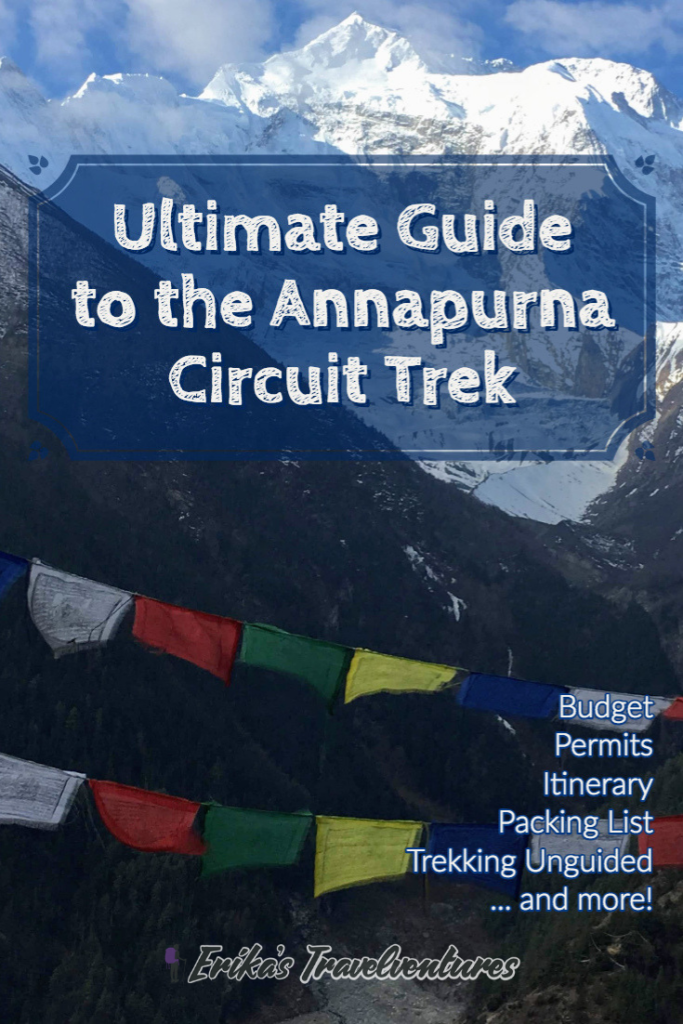
You might also like:
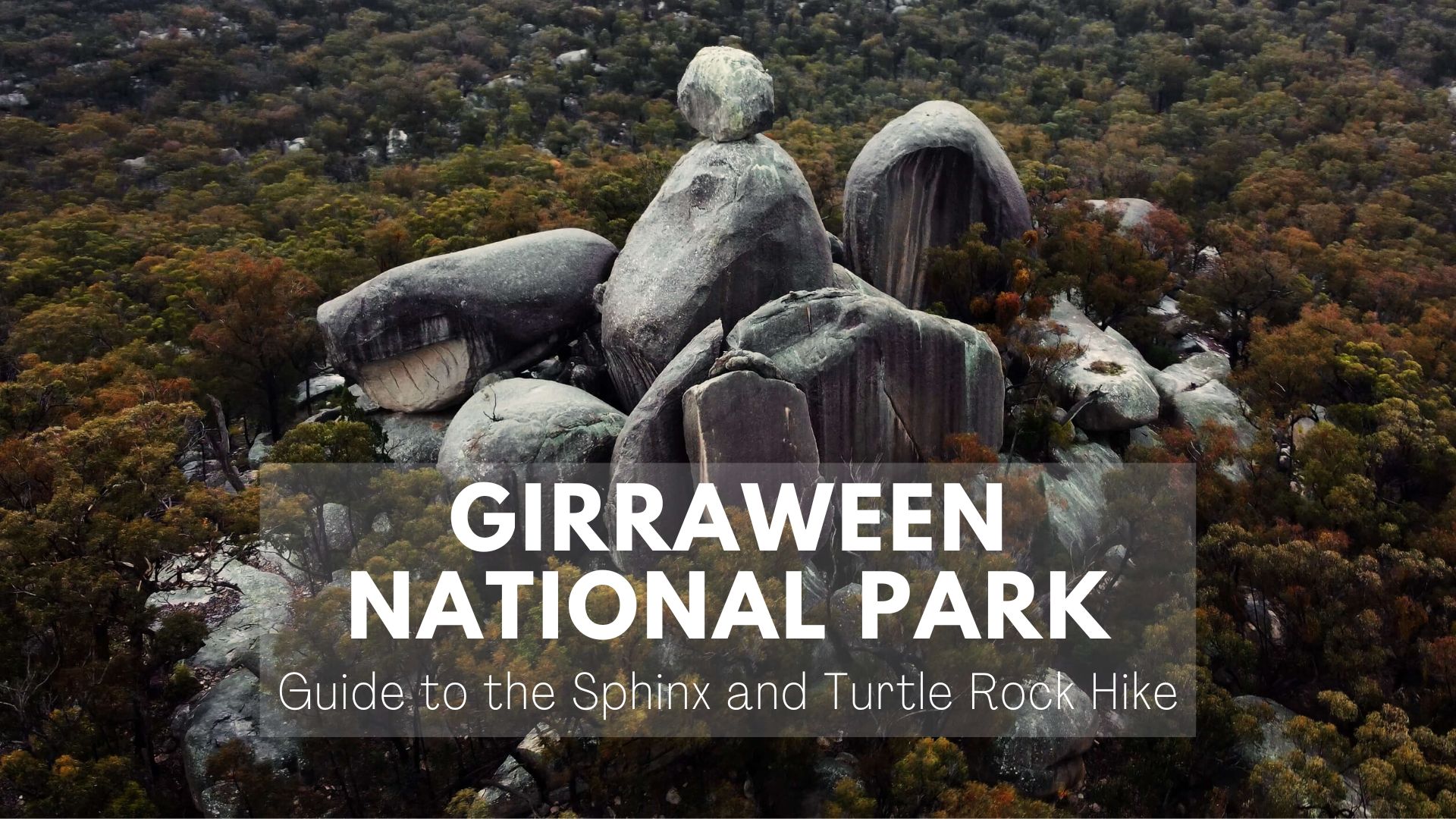
Turtle Rock and The Sphinx Hike at Girraween National Park
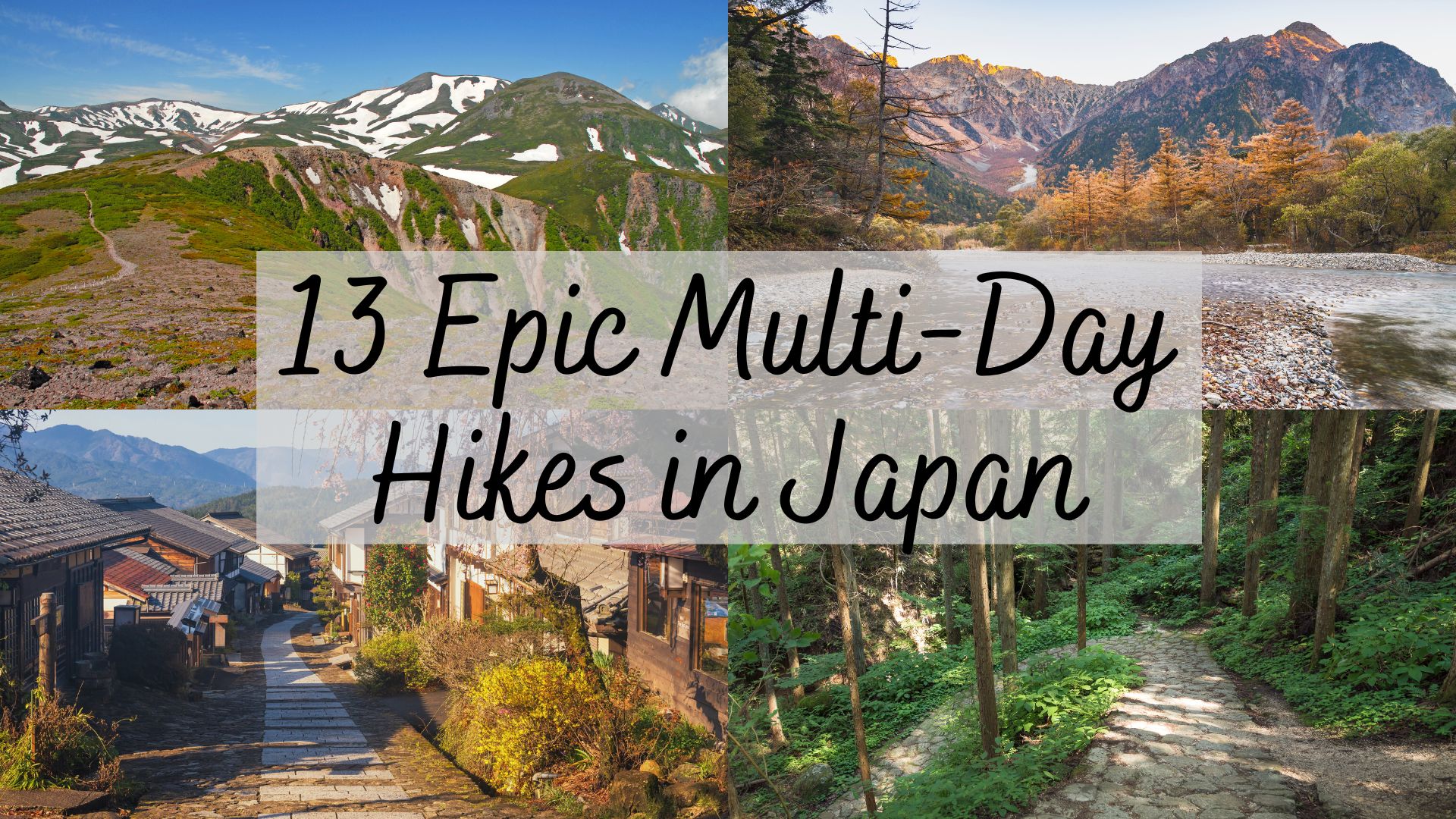
13 Best Multi-Day Hikes in Japan
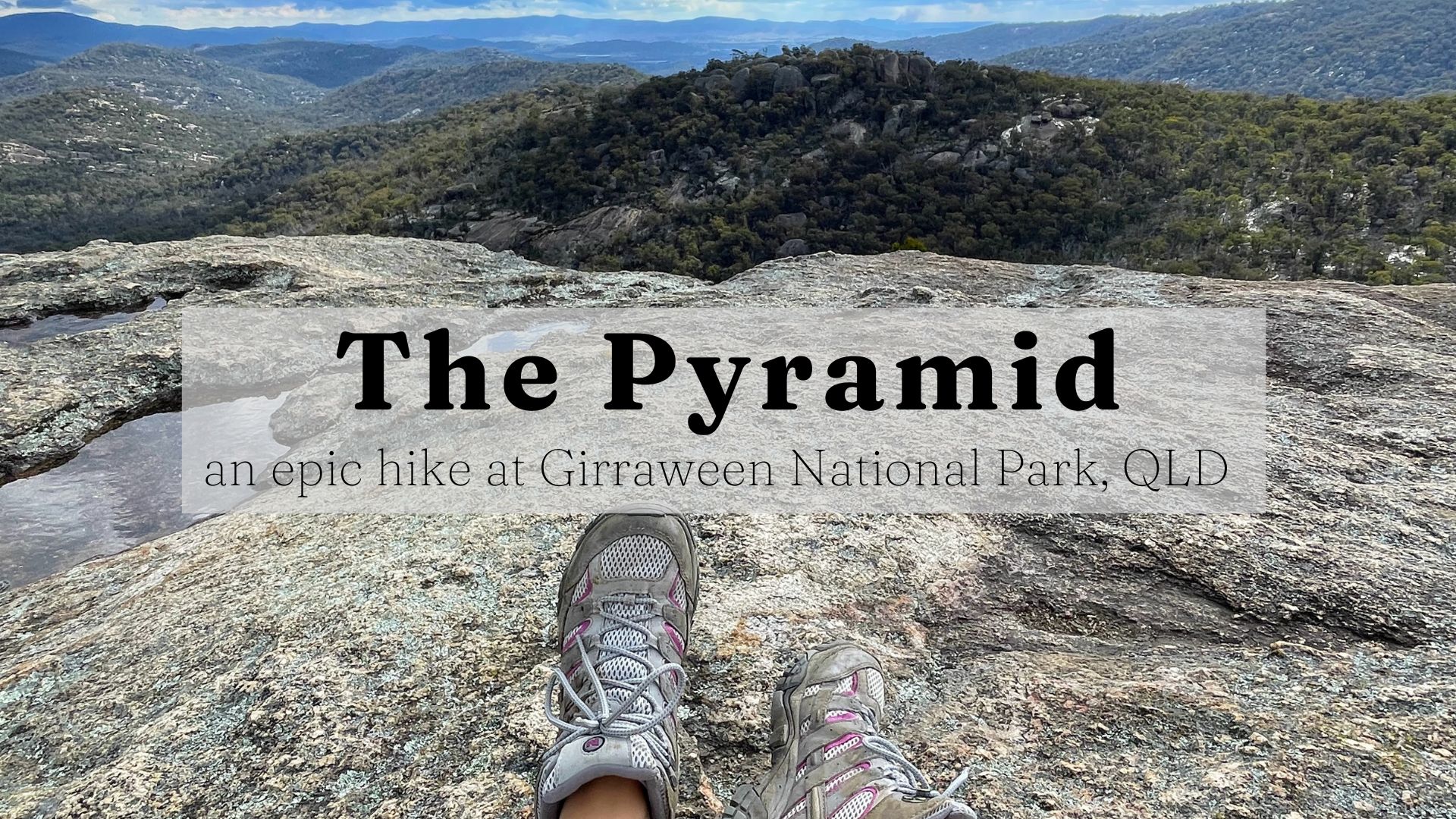
Guide to Hiking the Pyramid at Girraween National Park
One thought on “ ultimate guide to the annapurna circuit trek ”.
Erika, Happened across your blog today.Heading off to Annapurna Sanctuary in October.Did the Circuit in 2014 ,EBC in 2018, and the Markha Valley in 2019 .Really like your work and even though the Trek is 10 months away and we’re all in our 60’s,material like yours is getting me quite motivated. Hoping to do some walking in Japan in the future.Keep up the good work.
Leave a Reply Cancel reply
Your email address will not be published. Required fields are marked *

Annapurna Circuit Trek in Nepal: The Ultimate Guide
Jackson Groves
Posted on Last updated: October 20, 2023
Categories NEPAL , HIKING
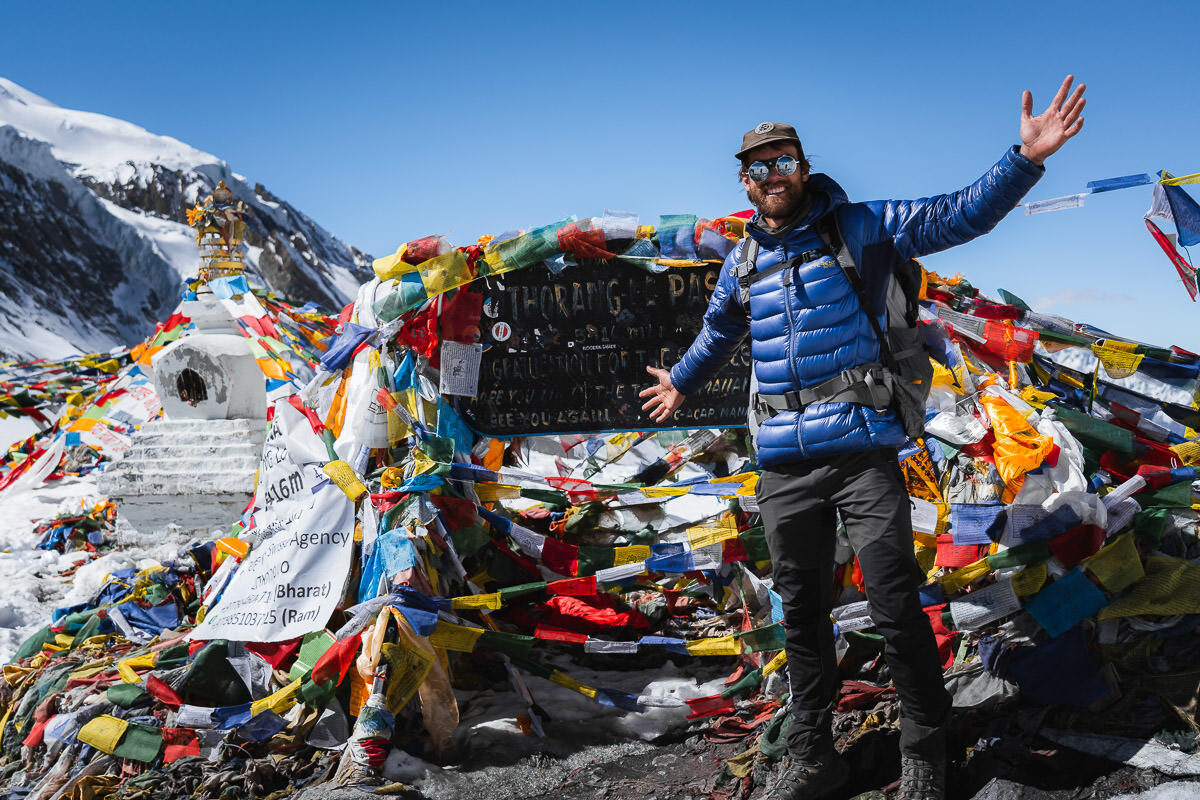
The Annapurna Circuit Trek is one of the most popular expeditions in the Himalayas of Nepal. While Everest Base Camp may be the most well-known trek in Nepal, the Annapurna Circuit Trek is definitely a close second! I’ve done both the EBC and the Annapurna Circuit Trek among many other routes in Nepal.
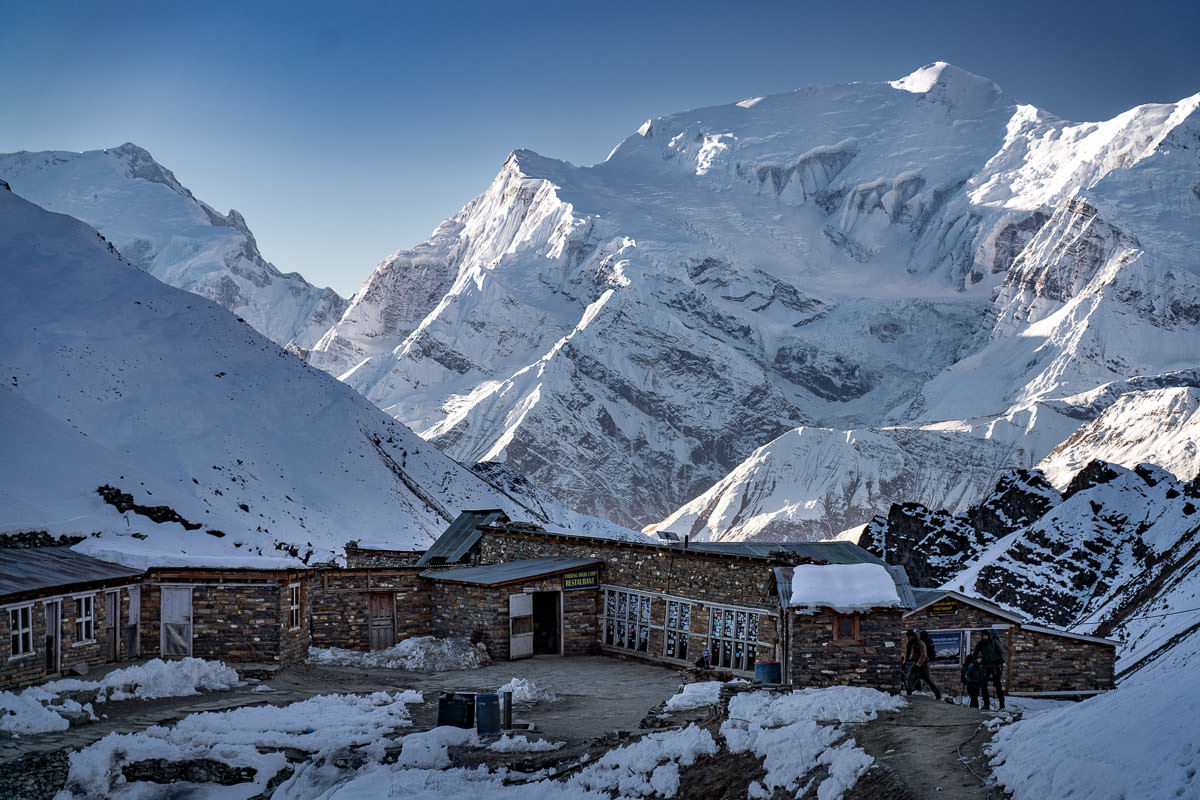
BEST TREKKING COMPANY IN NEPAL
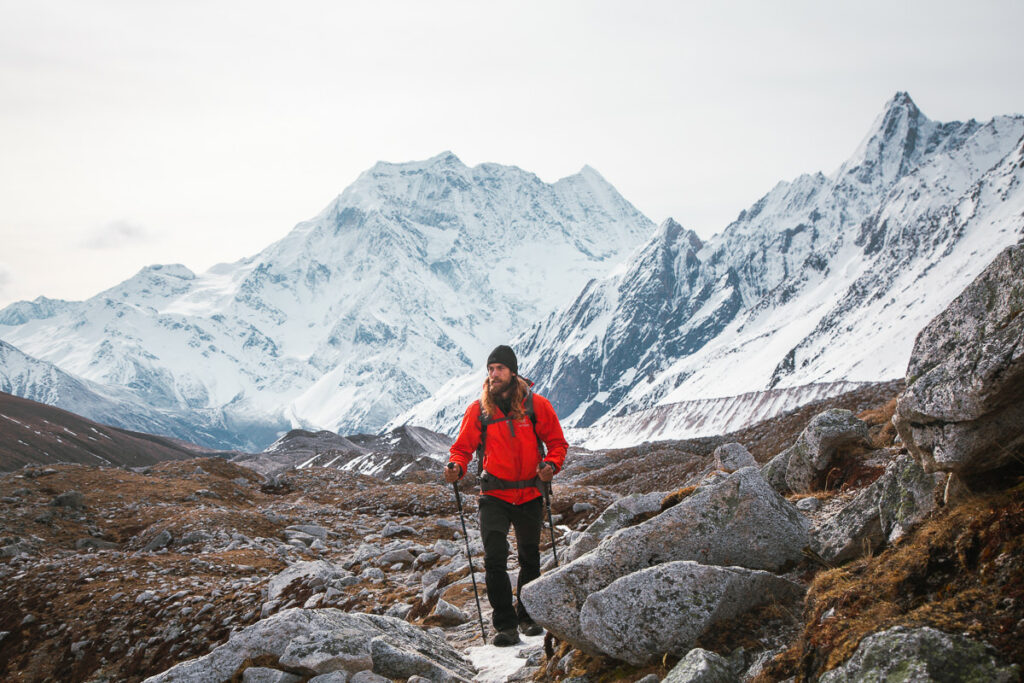
Interested in trekking in Nepal or doing the Everest Base Camp Trek? I recommend booking your trek with Himalayan Masters , which is the company I use for all of my treks in Nepal. Use my code JACKSON5 when you book to receive a 5% DISCOUNT .
In this guide, I will share with you my experience on multiple routes throughout the Himalayas to help prepare you for your trekking experience. Overall I would rate the Annapurna Circuit as the most scenic trek in Nepal from the first day to the last.
We looked at 7000m and 8000m peaks from the first to the last day, had amazing tea house locations, and were blown away by the scenery every single day. However, there are some negatives that modernization and commercialism have brought to the Annapurna Trekking Circuit with roads, infrastructure, and pollution. I’ll cover all aspects of this route to give you an honest insight into what to expect and why you may want to choose this route for your trip.
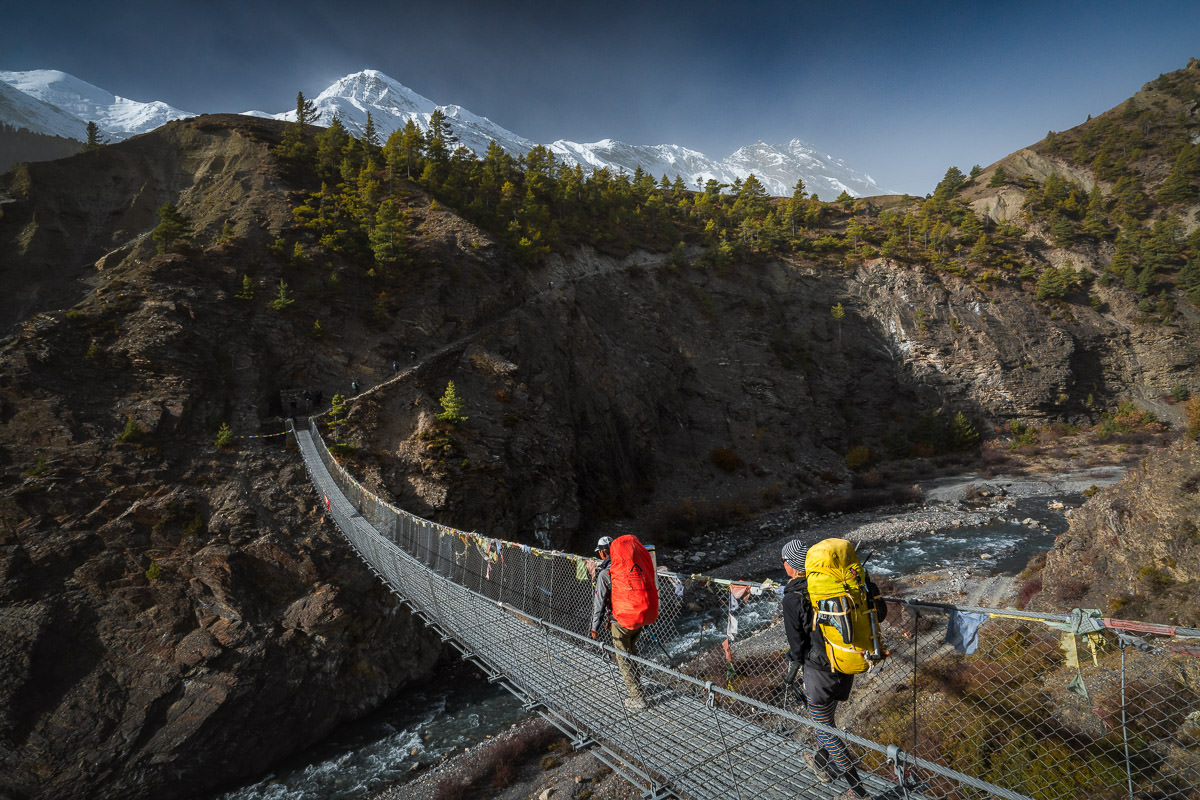
In this blog post, I will cover everything you need to know about the logistics of the Annapurna Circuit Trek. I’ve also created guides for the following treks and climbs in Nepal if you are interested to check those out as well.
- Manaslu Circuit Trek
- Everest Base Camp Trek
- Makalu Base Camp Trek
- Langtang Valley Trek
- Island Peak Climb
- Yala Peak Climb
- Ama Dablam Climb
- Manaslu Climb
- Makalu Climb
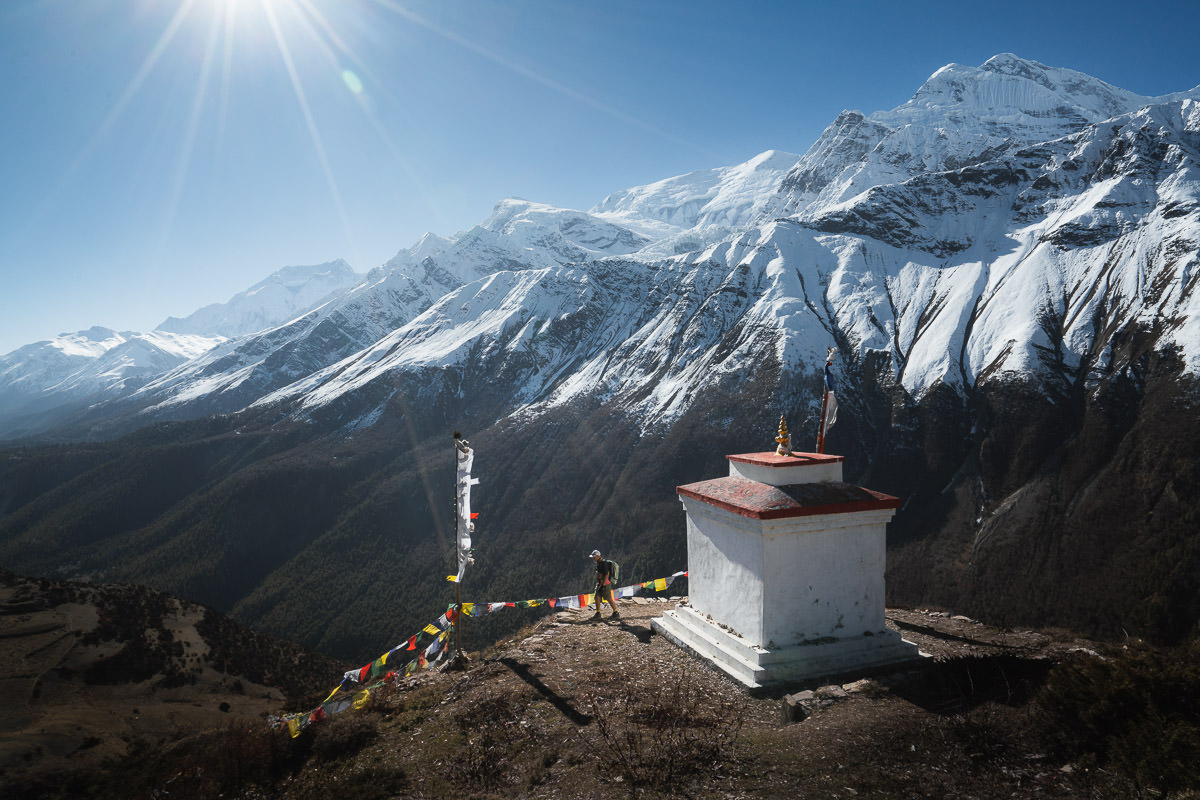
TRY THE 3 BEST TREKS IN NEPAL

Manaslu Circuit : My personal favorite 2-week trek through Tibetan villages and stunning scenery. Less crowded and more authentic.
Annapurna Circuit : The most beautiful & scenic 2-week trek in Nepal although can be crowded at times.
Everest Base Camp Trek : The most iconic 2-week route reaching the famous (EBC) Everest Base Camp at 5,300m.
Table of Contents
A GUIDE TO THE ANNAPURNA CIRCUIT TREK
In this guide, you will find all of the valuable information you need to plan your trek as well as my personal experience on the entire trek including the detour to Tilicho Lake
ANNAPURNA CIRCUIT TREK DETAILS
- Distance : 130km or 80 miles
- Days required : 10-13 days
- Total Incline : 8000 meters
- Total Decline : 7000 meters
- The highest point on the trek : The two highest points on the trek are Tilicho Lake (4,919m) and the Thorong La Pass (5,416m).
- Difficulty : The difficulty of the Annapurna Circuit Trek depends a lot on how many days you have. If you break it up over 12-14 days, it will be similar to the difficulty of EBC. However, we took only one acclimatization/rest day in Manang and the itinerary was quite tough for us given we squeezed into Tilicho Lake. Many days were about 20km of distance with 1000m of incline.
- Permits : You will need a TIMS card and Park Entrance Permit, both can be purchased when entering the park.
- Guide: A guide is not required on this trek. However, the guide manages all of the logistics, distances, directions, and tea houses for your group. I used maps.me to navigate from tea house to tea house and found the paths easy to follow. If it’s your first time trekking in Nepal, I would suggest having a guide.
- Accommodation: Guest Houses, also known as Tea Houses, are available along the way where you will sleep in a comfortable bed and have access to showers (at extra charge) and restaurant facilities. It was very comfortable accommodation and great after a long day of hiking.
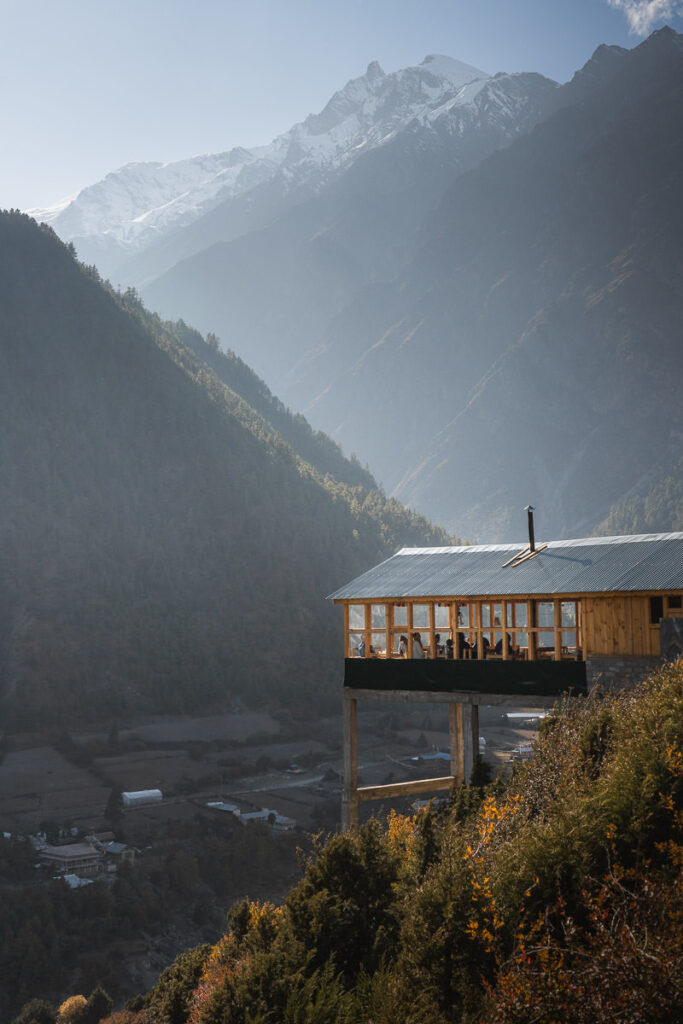
KEY POINTS ABOUT THE ANNAPURNA CIRCUIT TREK
- This circuit is less crowded than Everest Base Camp Trek but still quite busy. Especially around Tilicho Base Camp as many locals just come to trek to the Lake and don’t do the full circuit.
- There are teahouses in each village along the way so each night you get a great sleep in a bed with blankets, have access to showers, eat great meals in a restaurant, and can charge your electronics and cameras.
- The trailhead can be reached by car so there is no need to pay for expensive domestic flights.
- The road reached all the way to Khangsar, which means it isn’t quite as remote, peaceful and natural as you may be expected until the latter stages of the hike. There are side trails most hikers take for better views and to avoid the cars but nonetheless, it can be demoralizing to see a car full of tourists drive past as you eat their dust.
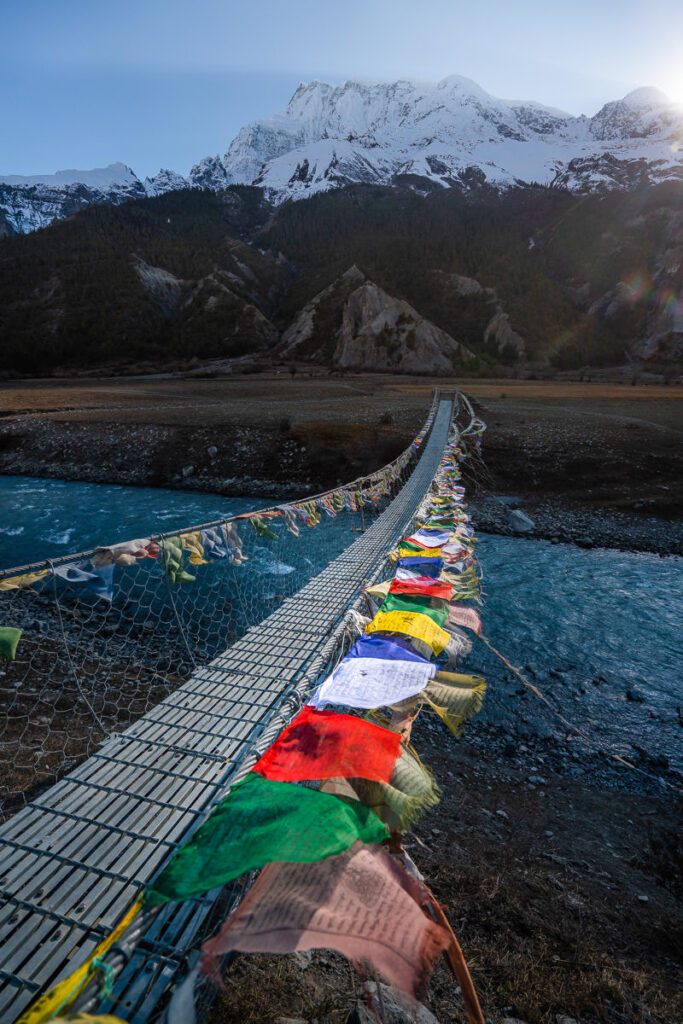
TOP 3 PLACES TO STAY IN KATHMANDU

- Ultimate Luxury: The Dwarika’s Hotel – Luxury, Spa-service, Pool
- Best Value : Aloft Kathmandu Thamel – Swimming Pool, Gym & Great Restuarant
- Budget Choice: Hotel Jampa is easily the top cheap hotel in Kathmandu
BOOKING A GUIDE FOR THE ANNAPURNA CIRCUIT TREK
The Annapurna Circuit Trek doesn’t require a guide but it’s great to have a guide managing the logistics such as directions, tea houses, distances, medical issues, and the overall organization. I’d say 80% of trekkers go with a guide. I did the trek with Himalayan Masters which is one of the top trekking companies when it comes to the Annapurna Circuit Trek.
The trek costs around $1400 USD with Himalayan Masters as of 2022 and includes all transfers, accommodation, meals, drinks, permits, and even the hotel stay before and after the trek at a high-quality hotel. I honestly had a great time on this trek and I can wholeheartedly recommend Himalayan Masters.
You can use my discount code ‘ JACKSON5 ‘ for 5% off the total price of your trek with Himalayan Masters which is a pretty handy saving.
Email: [email protected]
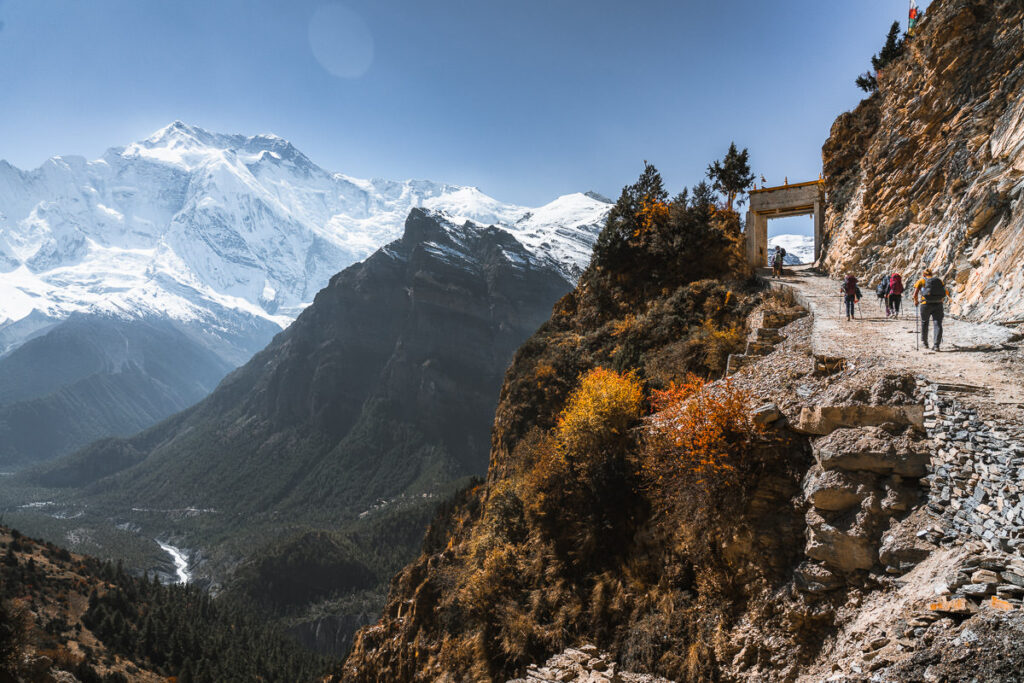
ANNAPURNA CIRCUIT TREK PACKING LIST
I packed pretty light and managed to wash most of my clothes each afternoon/night for the first half of the trip. In the latter stages of the trip, it was pretty cold so we weren’t sweating as much and we wore our warm gear basically nonstop while at the teahouses. There was no real need for multiple outfits.
This is just a guide and it worked quite well for me with no complaints from my set-up. You won’t need a sleeping bag as there are blankets in each guesthouse and when it got cold I just wore my down jacket to bed. This meant I didn’t have to carry a sleeping bag for the entire trek.
- 1 pair of pants that maybe convert to shorts
- 1 pair of shorts
- 1 Warm or thicker pair of hiking pants
- 1 Long sleeve quick-dry shirt
- 1 Long-sleeve thermal shirt
- 2 Short-sleeve t-shirts
- 1 Thermal long underwear
- 4 pairs of quick-dry underwear
- 1 Lightweight down jacket
- 1 Heavy-duty summit down jacket
- 1 Neck Buff
- Hiking boots
- 1 pair of warm summit socks
- 2-3 pairs of regular socks
- Trekking poles
- Water filter
All of this should fit into a backpack no bigger than 50L and should be less than 14kg.
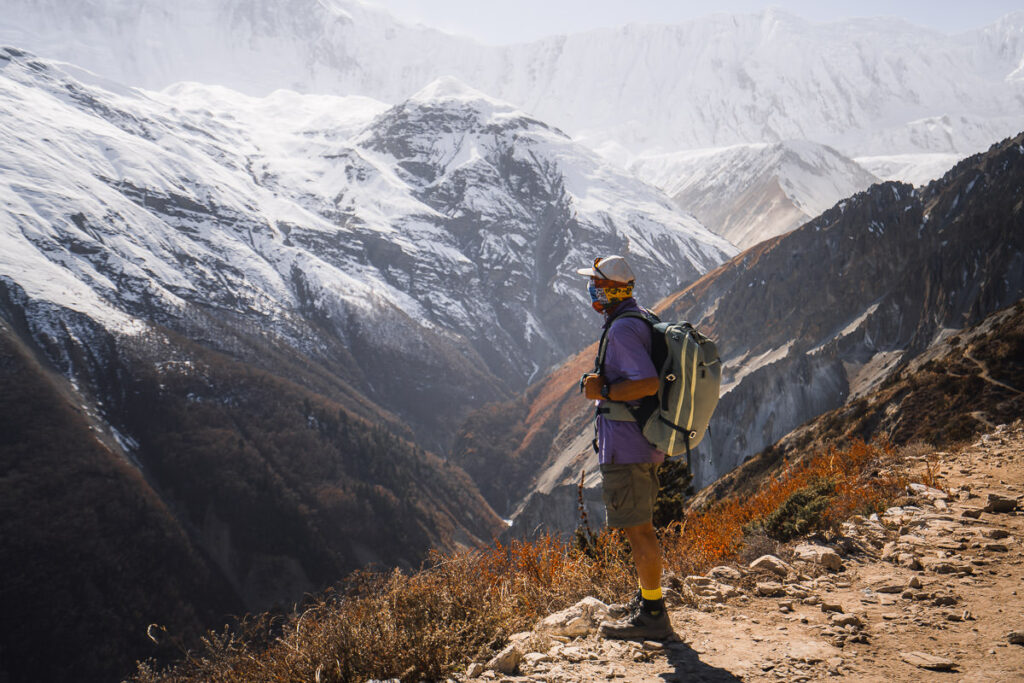
What are my favorite pieces of hiking gear?
There are four pieces of gear that I simply never forget when I go on a hike. These are four items that I using right now and this list gets updated every year! Here are my hiking essentials.
- Arcteryx BETA AR Rain Jacket : This is my go-to rain jacket. It’s super light, folds down into a tiny ball, and protects brilliantly in a storm. This one never leaves my backpack.
- Salomon X Ultra 3 Mid GTX Hiking Boots : For the best ankle support, waterproofing, and durable exterior I’m a fan of tough but light hiking boots like these Salomons for my adventures.
- Black Diamond Head Torch : I can’t tell you how many times, I’ve arrived back from a hike unexpectedly late. I always keep this lightweight but strong headtorch in my bag for the unexpected.
- Darn Tough Socks : These are the most comfortable hiking socks I’ve ever worn and last for years. They also have a lifetime warranty and you just send them in with a hole and they replace it no questions asked.
WIFI/ELECTRICITY AVAILABILITY ON THE ANNAPURNA CIRCUIT TREK
- Wifi: Costs anywhere from $0 to $4 to use wifi at the guesthouses. Buy an NTC Sim before you go. It worked in some spots but after Pisang, the service dropped and it was mostly WiFi until we got across the pass to Muktinath.
- Electricity: You will have to pay anywhere from $0 at low elevations to $5 to charge your power banks, cameras, and phones. I found that most rooms had free electricity powerpoints in the room. The key is to get a big power bank. Pay to charge it then charge everything from your power bank. My power bank lets me charge my phone and four camera batteries before it dies. Most of the places we stayed let us charge our gear for free but when it is busy they usually charge a fee as many teahouses run off gas or solar.
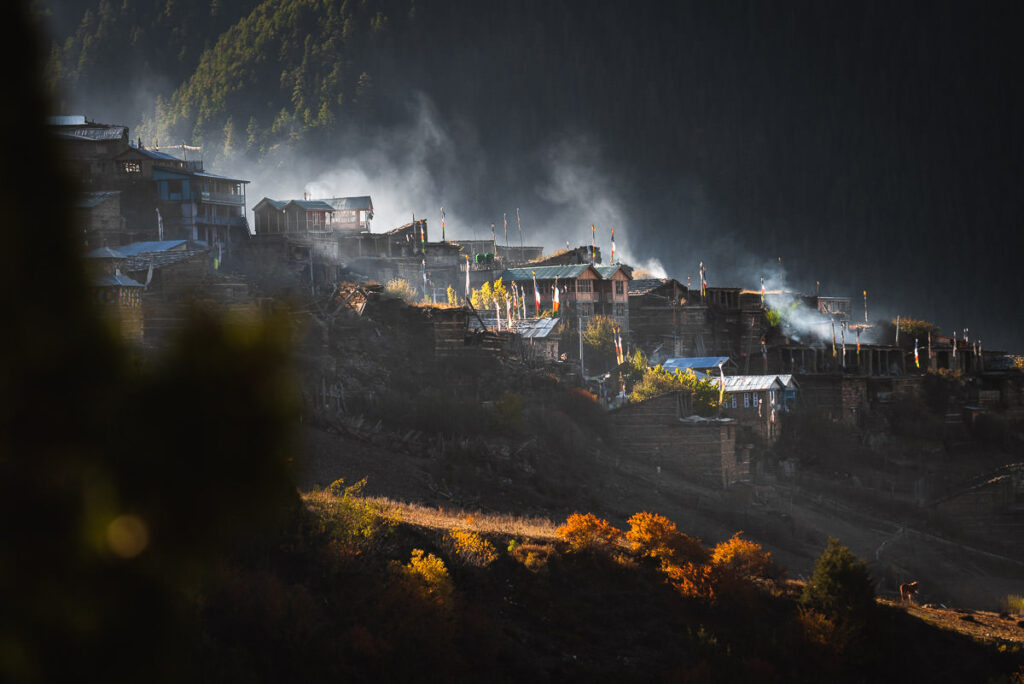
ANNAPURNA CIRCUIT TREK ITINERARY
The below itinerary was the exact journey I did but I would suggest adding in an extra day or two to account for rest days or being able to break up the day when you get up to Tilicho Base Camp. This was quite a strenuous activity. I also recommend not hiking to Dharapani from Besishar as the road is full of trucks and vehicles. Similarly, once you reach Muktinath, I suggest driving to Jomsom as it is quite built up from there with main, paved roads.
- Day 1: Drive Kathmandu to Dharapani (1,960m)
- Day 2: Trek to Chame (2,710m) Duration: 5-6 hours trek
- Day 4: Trek to Pisang (3,300m) Duration: 5-6 hours trek
- Day 5: Trek to Manang (3,500m) Duration: 6-7 hours
- Day 6: Acclimatization Day at Manang
- Day 7: Trek to Tilicho Base Camp (4000m) Duration 6-8 hours
- Day 8: Trek to Tilicho Lake & Trek to Shreekharka (4080m) Duration 10 hours
- Day 9: Trek to Thorong Phedi (4600m) Duration 6-7 hours
- Day 10: Trek to Thorong La & Trek down to Muktinath
- Day 11: Drive to Jomsom
- Day 12: Fly to Pokhara
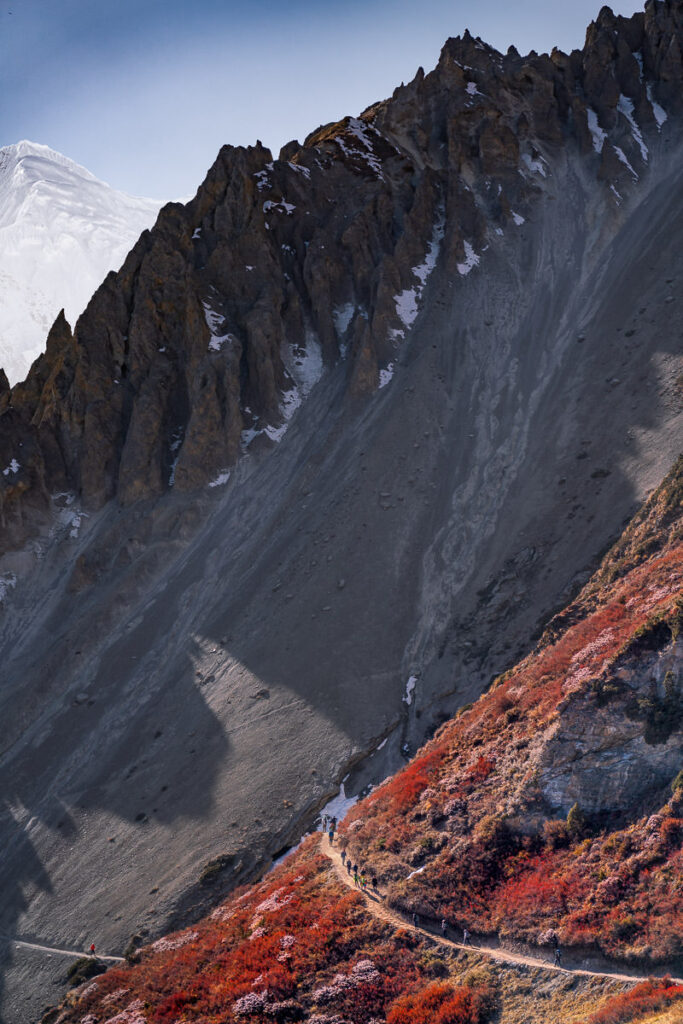
INSURANCE FOR THE ANNAPURNA CIRCUIT TREK
Nepal can be a dangerous place for trekking or hiking because the high altitude can lead to many illnesses, weakness in trekkers, and misjudgments. There is also a risk on trails for falls, avalanches, or other mishaps. Your regular travel insurance probably won’t cover you at high altitudes and won’t cover a helicopter evacuation. There is a solution though .
Need extra protection?
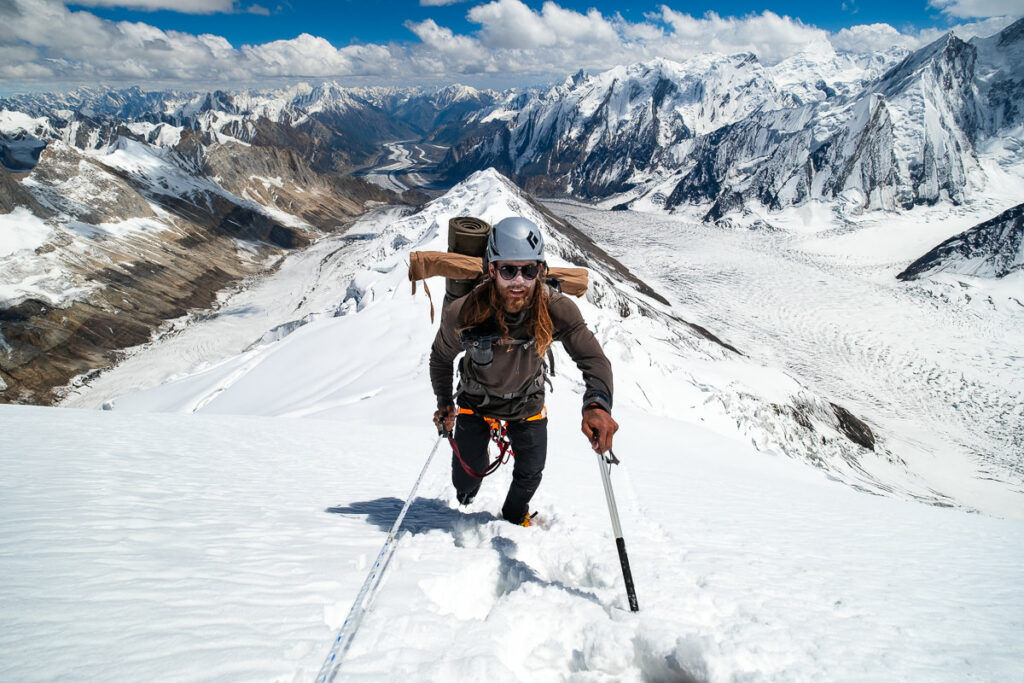
Regular travel insurance is great but won’t cover you for high altitude hikes or for helicopter evacuation. Each year, I purchase a Global Rescue Subscription .
For less than $500 per year or $100 per expedition, you can purchase a Global Rescue subscription and be covered no matter how extreme the hike or how high the climb is.
DRINKING WATER ON THE ANNAPURNA VALLEY TREK
I use the Grayl Ultralight Water Purifier and it is a game-changer for hiking in Nepal, making this super easy and cheap. The Grayl Ultralight Water Purifier removes 99.9999% of viruses of disease-causing bacteria. The best thing about it is it only takes 15 seconds and one press to purify water from any fresh water source. You don’t need to buy bottled water at every tea house contributes to large amounts of plastic waste and costing you $4+ per day.
Along the Annapurna Circuit Trek, we filled up tea houses, rivers, and local village taps. Unlike aqua purification tablets which require you to wait 30 minutes before drinking, you can have rehydrated yourself immediately with the Grayl Ultralight Water Purifier .
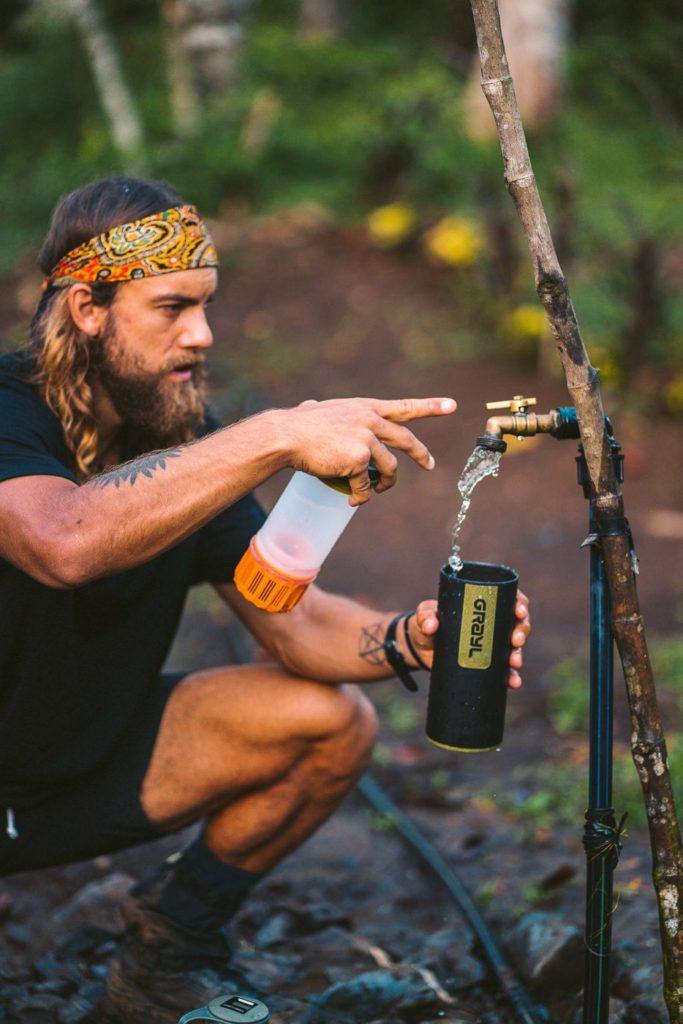
GrayL Water Purifier
- Never pay for water on the trek
- Save 3-4 plastic water bottles a day
- Turns any water into drinking water
BEST TIME AND SEASON FOR THE ANNAPURNA CIRCUIT TREK
The peak season for the Annapurna Circuit Trek is March to April and October to November. The time to avoid this trek is during the rainy season from June to August . Having said that, I often found that off-season or shoulder seasons have been my best (uncrowded) trekking experiences in Nepal
During the winter from December to February, this region gets very cold and there will be snow cover in the higher parts of the trek. Many of the guesthouses actually close up for the winter and re-open in late February to March.
I hiked the Annapurna Circuit Trek in late October/early November and we had 12 days of constant sun. Not a single day with clouds and no chance of rain. Lucky us.
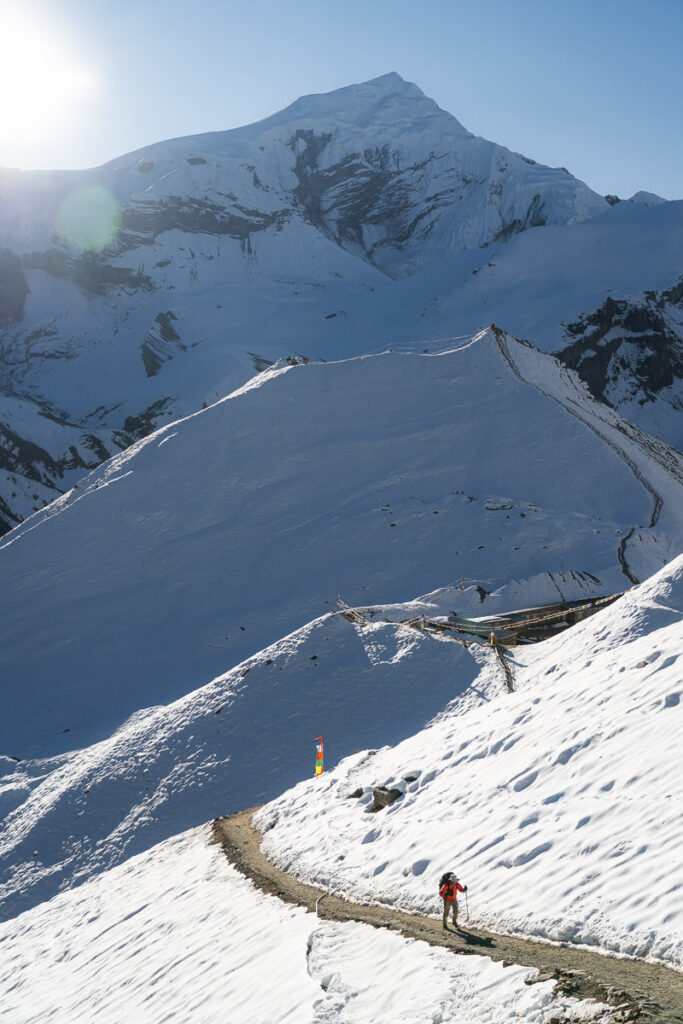
HOW TO GET TO THE ANNAPURNA CIRCUIT TREK
There are two main ways to reach Dharapani, which is the small town at the starting point of the trek. Despite the distance from Kathmandu to Besishar only being 125km, the journey takes a long time due to the traffic and quality of the road.
Jeep: We went by private Jeep organized by our tour company Himalayan Masters. It costs about $180 to hire the vehicle out for the drive so can be split between your group. It’s not cheap but much less brutal than the lengthy bus journey.
Public Bus: The bus costs about $12 USD and can take anywhere from 7-12 hours depending on the traffic and if there are any roadworks or landslides recently. The bus station in Kathmandu is called ‘ New Bus Station ‘.
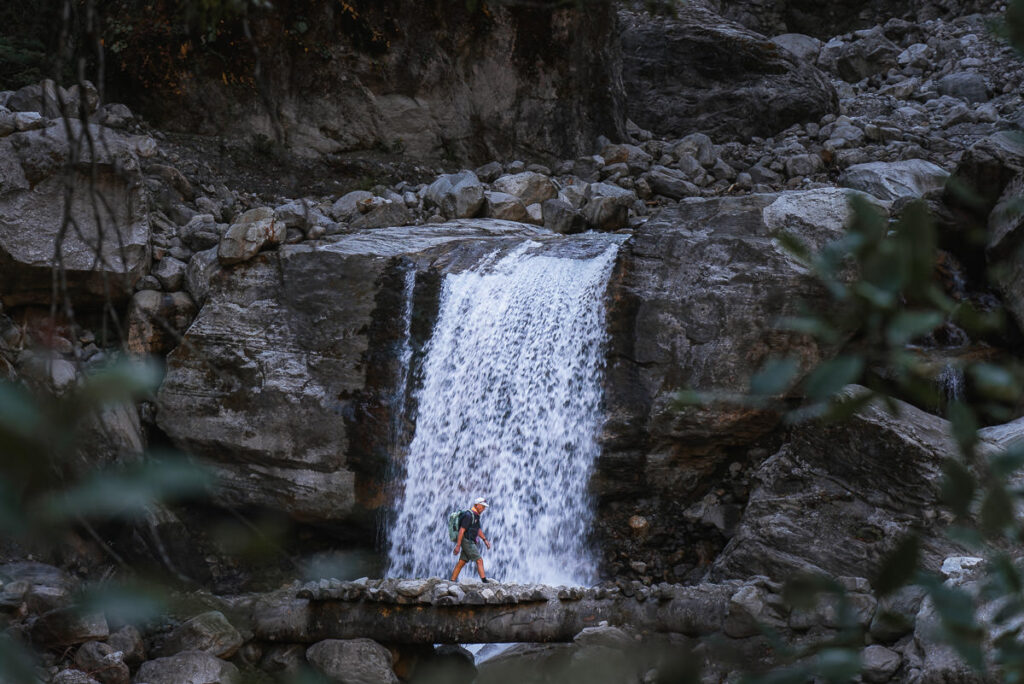
MY EXPERIENCE ON THE ANNAPURNA CIRCUIT TREK
Throughout this section of this guide, I will share my experience with each part of this trek and give my thoughts on the increased level of infrastructure and road access throughout the Annapurna Circuit Trek.
TREKKING FROM DHARAPANI TO MANANG
After surviving the bumpy ride along the cliff-side roads to Dharapani, we spent the night in a small teahouse before beginning our trek the next morning. Dharapani is actually where the Manaslu Circuit Trek finishes, so I had been in this small river-side town on several occasions previously. The trail for the Annpurna Circuit doesn’t overlap with that route at all and actually follows a road for the opening parts of the journey.
The first few days of the Annapurna Circuit Trek, are not the most peaceful or remote. Trekkers will find themselves being overtaken by Jeeps full of tourists driving deeper into the circuit or being dropped closer for a quick summit attempt at Tilicho Lake. I always hate when cars can drive past me while I’m working hard trekking but it’s unfortunately just part of this route now.
Despite trekking on a road for a fair portion of the first day, there are many side trails that quickly immerse you into the natural surroundings. We found ourselves on steep stairs in the forest and walking through small villages as we wound our way on and off of the road throughout the days. The highlights when it came to views early on in the trek was that from the very first morning, we had views of Manaslu (8,163m). This qas quite nostalgic for me and actually pretty incredible to have Manaslu as a constant backdrop given that I’d stood atop the mighty mountain a year earlier.
Chame was our first stop for the night and was probably my least favorite town of the lot. This is often to be expected when you are just getting started on the trail. The second night in Upper Pisang, we had a direct view from the tea house looking towards Annpurna II. They call it the unlucky mountain as it just misses out on being one of the 14 revered 8000ers. At 7,937m, it is an imposing peak, providing an unbelievable view right from the doorstep of the tea house.
Manang was the first town that felt quite remote and had a bit of atmosphere. In Manang there were several bakeries, religious sites, sacred lakes and monasteries. We spent two nights in Manang, as do many trekkers, and used the ‘rest’ day to head up to Chonggen Viewpoint for more incredible views over Manang and the surrounding mountains.
The scenery alongside the trail had become incredible by day three. While cars can still access to Manang, there was much less traffic and that rural, remote feeling had replace the chaotic, touristic vibe from the early moments of the trek.
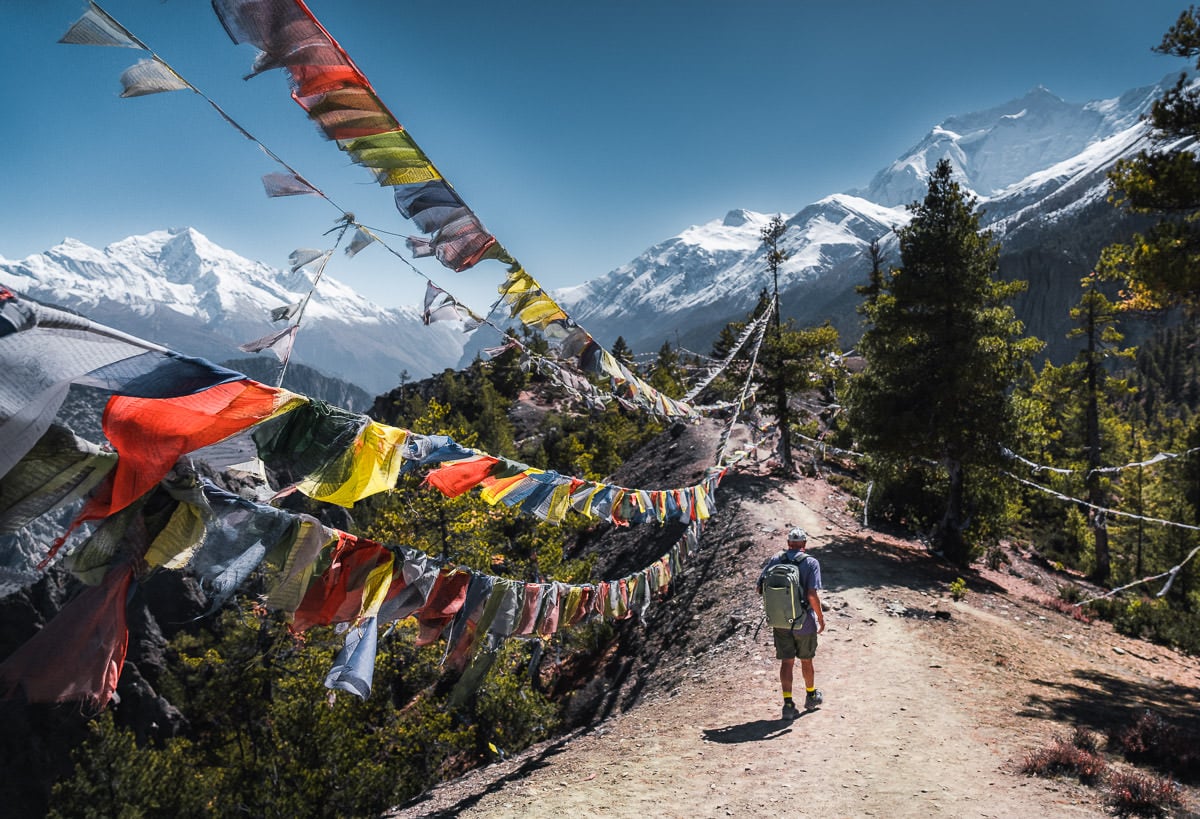
TREKKING TO TILICHO LAKE
After a rest day in Manang, it was time to put in a few ‘big effort’ days as we head some serious distance and elevation gain ahead of us. Many groups head from Manang to Yakharka and continue on to the pass. However, it is possible to make a two-day or preferably three-day detour with a mission of hiking up to Tilicho Lake.
The lake is marketed as the highest lake in the world although given some research, you will find that there are about twenty different lakes that are higher than it such as Lake Titicaca. Others claim it is the highest glacial lake in the world but just across the border at 6,216 meters above sea level is the Changtse Pool in Tibet.
Despite being a bit over-hyped and falsely advertised to pull in more tourism, the lake is an incredible natural site. You might curse me for the extra few days of effort to get there but I think it’s well worth making the detour for a few reasons.
The trek into Tilicho Base Camp was one of the best sections of the entire trail. The vegetation faded away and the terrain began to evolve into an outer-space, moon-like scene. Huge slops of gravel were segregated by rock archways and sharp ridgelines. It was like no other part of the trail.
Once you reach Tilicho Base Camp, you’ll find that it isn’t a town and is an opportunistic collection of tea houses set up to meet the demand of those on a mission to reach the high-altitude lake. Hundreds of trekkers wake early to attempt to climb 900m of vertical gain to almost 5000m for a viewpoint at the rim of the lake. It’s pretty steep and a consistent set of switchbacks make the path a tough route, especially after just a few days at high altitude.
After a few hours, trekkers reach the lakeside to find a small teahouse serving coffee and tea. Taking a seat on the stone wall, it’s truly incredible to look out across the vivid blue water completely surrounded by snowy peaks and ridges.
The tough part about trekking to Tilicho Lake is that it is a 12-kilometer round trip journey with 900 meters of incline to get to the lake and back to base camp. Most itineraries dictate that you will quickly eat lunch and then walk another few hours to Shreekharka. It could be a suggestion to stay another night at Tilicho Base Camp to ease the difficult of the trek itinerary.
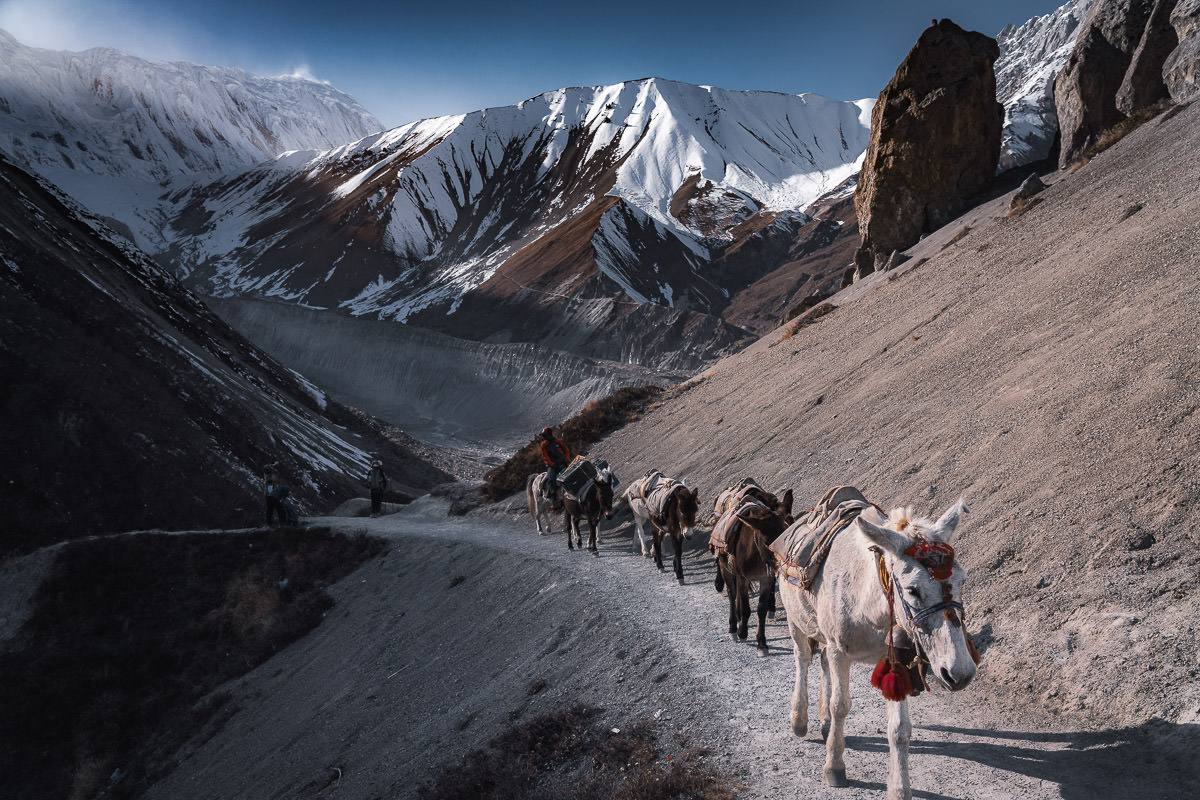
TREKKING ACROSS THORONG LA PASS
The long day up and down from Tilicho Lake and then from Tilicho Base Camp really took it out of us. However, the show must go on and we made a big effort to push all the way through from Shreekharka to Thorong Phedi. This is the base camp for the Thorong La Pass, which is the penultimate point and highest elevation of the trip.
The views continued to be immense on the journey to Thorong Phedi, but a third straight day with a vertical kilometer of incline and 20km of distance took its toll. We arrived late to Thorong Phedi, just before the sunset as you can see in the first image below.
The tea house at Thorong Phedi was buzzing, packed to the rafters. Many groups set off as early as 2:30 am on their quest to cross the path. We decided to bring up the rear and set off an hour before sunrise at around 5 am after a quick breakfast in the tea house.
The journey across the path begins with about 500m of elevation gain while ascending up relentless switchbacks. You can see the switchbacks from the tea house in the image below. After about 1.5 hours, trekkers reach the ‘high camp’, which is actually where many people stay on their approach to Thorong La Pass. It will make the pass day shorter but the prior day longer. It’s all about preference.
After the high camp, the scenery turns from rock to snow. We are now in a white, winter wonderland as we cross the 5000m mark on our journey across the pass. Up a seemingly never-ending slope, we wind our way around each corner.
Secretly, we are hoping to see the prayer flags of Thorong La but they never come. What we do find is a tea house serving overpriced but highly necessary instant coffee and tea. Here we recharge for half an hour before making our final push to the pass.
About an hour further and we make it up to the pass after about six hours of trekking. My dad and his mates are gassed but glad to be at the highest point of the trip. We hang out, take a few photos and even witness a huge avalanche from the seracs on the right side. Luckily it dispersed down to the side of the mountain and not toward us.
The journey down from Thorong La Pass should be straightforward and is only about eight kilometers. However, with icy conditions and slippery rocks, it was slow-going. It is highly recommended to bring micro spikes for this descent and for the descent from Tilicho Lake. Even though you will only use them twice, they are worth bringing along.
Late in the afternoon, we roll into Muktinath after crossing over into the Mustang region from the Annapurna Sanctuary side. It’s beautiful scenery but we are all just glad to make it to the hotel. It was a pretty tough ‘summit’ day all things being said.
Many trekkers will walk one more day to Jomsom before flying to Pokhara. However, we decided to take a Jeep for about $15 per head. It’s only an hour’s jeep ride to Jomsom.
I’d advise taking the Jeep as the trek looked like it went alongside the road in hot, exposed, dry terrain for twenty kilometers. It’s a brutal and unnecessary section of trail to walk but some purists may like to complete the old ‘original’ circuit. If that is you, make sure you walk all the way to Pokhara, and don’t cheat with any planes from Jomsom!
We spent the night in Jomsom and celebrated with a couple of beers. The next morning, we watched as the light planes flew into the airport. It’s a unique landing strip with an amazing backdrop of mountains on all sides. The planes take off and do a full U-turn immediately before flying up and out of the valley with views of Dhaulagiri (8,167m) on the right.
After a few nights in Pokhara, we flew back to Kathmandu to wrap up an incredible journey on the Annapurna Circuit with Himalayan Masters .
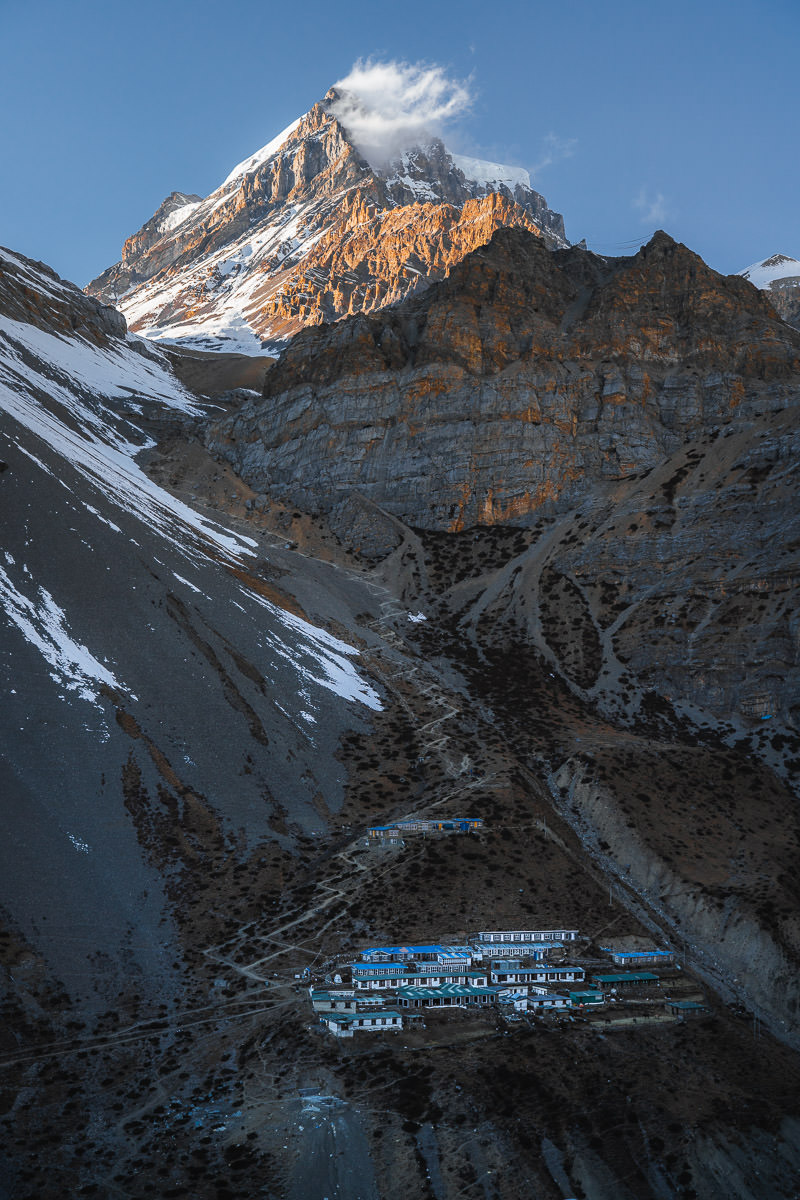
I hope you enjoyed this guide to the Annapurna Circuit Trek in Nepal and have a great experience yourself! To finish up, here is a photo from the epic Jomson airport. Not a bad way to end the trip.
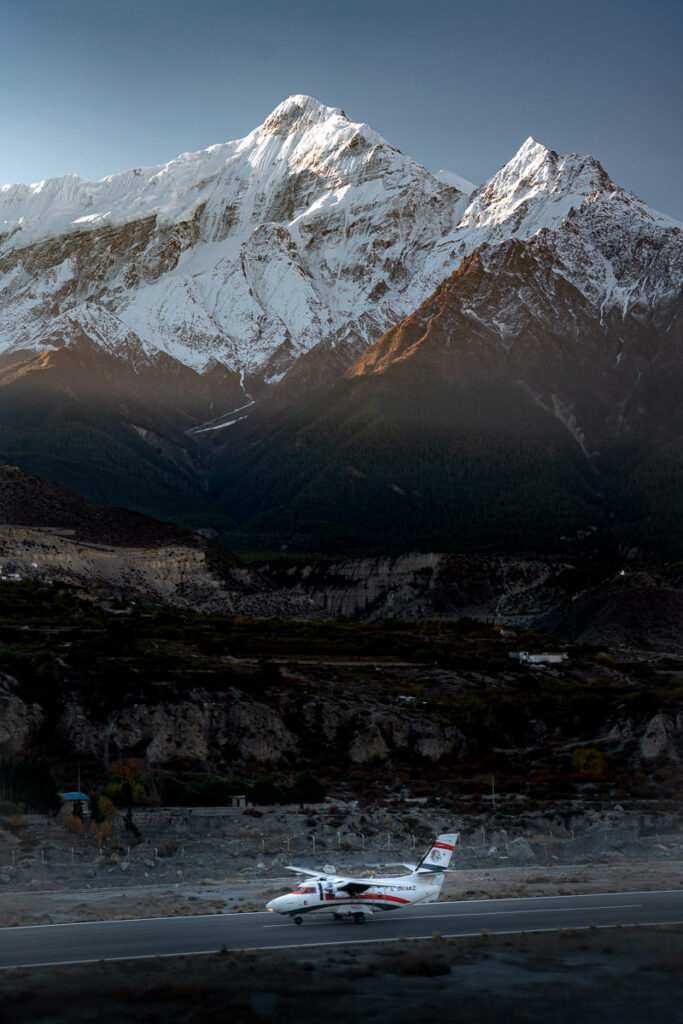
HAVE YOU READ MY OTHER NEPAL BLOGS?
I’ve been lucky enough to have many awesome adventures in Nepal, which you can check out below where I’ve listed some of my favorite blog poss from Nepal.
- The Most Iconic route: Everest Base Camp Trek
- The Most Scenic Route: Annapurna Circuit Trek
- My Favorite Trek in Nepal: Manaslu Circuit Trek
- An Easy Nepal Trek: Langtang Valley Trek
- A great beginner peak: Island Peak Climb (6,165m)
- My Favorite Climb in Nepal: Climbing Ama Dablam (6,812m)
- My first 8000er: Climbing Manaslu (8,163m)
- My toughest climb in Nepal: Climbing Makalu (8,463m)
- Where to stay: 16 Best Places to Stay in Kathmandu

Sunday 11th of June 2023
Hi, I noticed a news that Nepal treks should only be allowed only with a guide, starting from April 2023. Your article seems to be from June 2023. Does it mean that Annapurna Circuit has an exemption? Thanks a lot!
Sunday 2nd of July 2023
Thanks, honestly, this is a reason for me not to even think about Nepal and consider e.g. Patagonia
Sunday 18th of June 2023
Anything above 3000m I believe you need a guide now
Thursday 9th of March 2023
Please tell me more about your photography set up. Camera, lens, gear etc Thank You! :)

Annapurna Circuit Trek
Planning to trek the annapurna circuit in nepal a great decision here's everything you need to know before your annapurna trek, including trekking permits, hiking solo vs in a group, what to pack, when to go, and all the money matters..
Annapurna Circuit Trek is a popular classic trek of Nepal. Each year, more than 60,000 trekkers come for this trek from all around the globe. In this trek, you encircle the Annapurna massif and cover between 110-130 miles by walking.
The Annapurna Circuit trek usually takes about 14–21 days, leaving from Kathmandu with a stopover in Pokhara before returning to the capital. The trail is moderate to fairly challenging and makes numerous river crossings over steel and wooden suspension bridges.
Our 19 days Annapurna Circuit Trek begins from Besisahar. You begin your trek alongside Marshyangdi river all the way to its waterhead beyond Annapurna range. You then enter into Manang, cross the famous Thorong La Pass (5,416 m) and go down to the restricted region of Mustang.
After visiting some popular settlements of this semi desert-like region, you travel a few hours in a bus and trek to Poon Hill viewpoint.
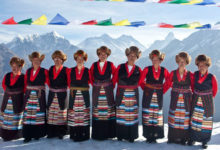
Annapurna Circuit Itinerary has often been voted as the best long-distance trek in the world, as it combined, in its old full form, a wide variety of climate zones from tropics at 600 m asl to the arctic at 5416 m asl at the Thorong La pass and cultural variety from Hindu villages at the low foothills to the Tibetan culture
There are two types of trekking permit required by anyone wishing to do the Annapurna Circuit trek. No matter when or how you’re hiking the Annapurna Circuit, you’ll need to organise both a Trekking Information Management System (TIMS) permit, and an Annapurna National Park Permit (sometimes also known as the Annapurna Conservation Area Permit).
As of 2019, the permits should set you back about USD $50 total: the APC Permit is USD $30 / NPR 3,000 per person, while the TIMS Permit is USD $20 / NPR 2,000 per person.
Since the trail opened in 1977, most trekkers have followed an Annapurna Circuit itinerary that begins in Besishahar and heads in an anti-clockwise direction over the Thorong-La Pass and down into the Jomsom Valley.

Special Note for Annapurna Circuit Trek
Facts about annapurna circuit trek:, annapurna circuit trek highlights.
- The peaceful and pristine nature trip.
- Witness stunning views of Annapurna, Lamjung Himal, Dhaulagiri, Nilgiri and more.
- Stay in tea-houses of small villages.
- Cross highest pass – Thorong La Pass(5,416m).
- Visit Muktinath, other holy temples, and monasteries.
- Explore beautiful villages of Braga, Manang, Kagbeni, Jomsom, and Marpha.
- Gaze at the breathtaking Annapurna range from Poon Hill.
- Natural Hot spring at Tatopani.
- Enjoy the lively evening of Pokhara.
- International & domestic airport transfers as per the itinerary.
- 2 nights accommodation in Kathmandu with Bed and Breakfast plan.
- 2 nights accommodation in Pokhara with Bed and Breakfast plan.
- 18 breakfast, 14 Lunch, 15 dinner during the trip.
- Kathmandu Sightseeing by professional English speaking tour guide.
- Kathmandu – Pokhara – Kathmandu domestic flight.
- Pokhara – Jomsom – Pokhara Flight.
- 3 meals a day during the trip (Breakfast, Lunch & Dinner) as mention in itinerary.
- Accommodation while trekking in twin sharing basis in guesthouses.
- Annapurna conservation area permit and TIMS card.
- Upper Mustang Restricted area permit fee.
- Professional government license holder English speaking trekking guide.
- Sleeping bag and duffel bag during the trek. (Refundable after finish the trip)
- Medical supplies (first aid kit will be available).
- 1 farewell dinner in Kathmandu
- All government and local taxes.
- All entrance fees for sightseeing places
- Alcoholic, hot and cold drinks.
- Your international flights
- Nepal visa fees & airport taxes
- Personal travel insurance (strongly recommended)
- Gear or equipment for your trek
- Personal expenses along the trek
- Tiji Festival Camara fees, and other donation
- If you would like to ride on pony
- Tips for your city guide, drivers, hotels, restaurants, etc.
- Extra night accommodation then mention plan
How difficult is the Annapurna Circuit Trek?
Is annapurna circuit dangerous, do i need a sleeping bag for annapurna circuit, is there any luggage limit for porter, do i need vaccinations for this trip.
When to Go Annapurna Circuit
Monsoon season in Nepal is June through September. That’s when most of the rain falls and when rock and mudslides are most likely to occur. The spring, between mid-March and mid-April, is when the rhododendron forests bloom, but the weather is still wet this time of year and the leeches are a nuisance at lower elevations.
The best time to do the Annapurna Circuit is October, thanks to reliably pleasant weather (80°F and humid at 2,000 feet; 20°F and dry at 17,000 feet) and clear skies.
Annapurna Circuit Trek Difficulty
The path reaches its highest point at Thorung La pass (5416m/17769 ft), touching the edge of the Tibetan plateau. Practically all trekkers hike the route anticlockwise, as this way the daily altitude gain is slower, and crossing the high Thorong La pass is easier and safer.
To be very blunt about it, Annapurna Circuit Trek difficulty level is quite challenging. What make the Annapurna Circuit trek difficulty level so tough is the high altitude that the route covers. The trekking route takes you as high as 5416 m, which is the height of Thorung La, the highest altitude pass in the region.
Accommodation, Food And Drink Facility
All guesthouses have blankets you always can ask for an extra one or two if it’s really cold. You had light summer sleeping bags but most of the time slept without them under the blankets. Even at Thorung Phedi where it will quite cold, you sleep in warm clothes under two blankets.
The facilities at higher altitudes e.g. Thorong Phedi and High Camp are more basic no power outlets in the room, no or very poor wi-fi, no hot shower, etc., to charge your phone or to use wi-fi you pay extra.
All guesthouses are more or less the same there are no fancier hotels to stay on the route like in Pokhara or Kathmandu. Rooms are very basic usually they have two single beds, blankets, sometimes a table and a chair.
Most of the time hikers sit in the dining area it’s the warmest place in a guesthouse; people drink tea, play cards, talk, etc. You go to your room only at night.
Nepal Annapurna Circuit Trek | Documentary
Getting travel insurance
The Annapurna Circuit is a high altitude trek through remote and difficult to access areas of Nepal having travel insurance is highly recommended. In fact, it’s required for getting the hiking permit. Nobody has ever asked us to show our insurances but when you fill the form they ask you to provide the name and the phone number of your insurance company.
There are many insurance company but we’d recommend using one that has experience in covering outdoor activities and working in the region like World Nomads. Nepal is one of their top hiking destinations with thousands of people buying World Nomads insurance policies for trekking here so they know local specific.
Book with Local Operator
Whether it’s a cultural tour, gentle walking holiday or strenuous trek, our holidays in Nepal are led by professionally-trained English speaking leaders. They have an intimate and expert knowledge of the history, culture and nature of Nepal and will make your trip a memorable experience. Thus hurry up and reserve your place to Annapurna Circuit Trek.
Kulendra Baral
Let's stay updated, subscribe my newsletter for new blog posts, tips & new photos., pokhara sightseeing tour, annapurna region, related articles.
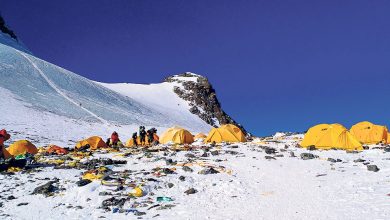
Mountaineering Royalty Nepal
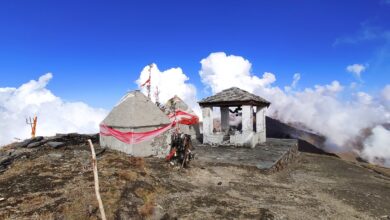
Khaptad National Park Trek
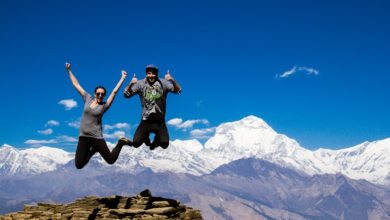
Langtang Valley Trek
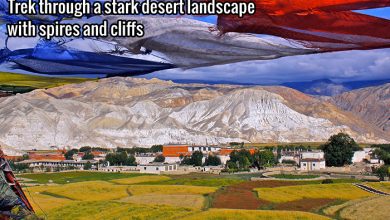
Upper Mustang Trek
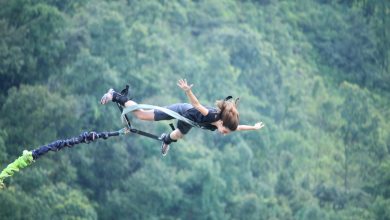
Bungee Jumping
Leave a reply cancel reply.
You must be logged in to post a comment.
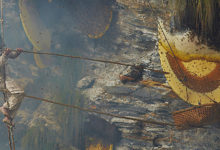
For quick Inquiry: +977 98510 42334
- Everest Base Camp Trek
- Annapurna Base Camp Trek
- Upper Dolpo Trek
- Manaslu Circuit Trek
- Kanchenjunga Circuit Trek
- Langtang Valley Trek
- Ruby Valley Trek
- Makalu Sherpani Col Pass trek
- Everest Khumbu Treks
- Annapurna Treks
- Ganesh Himal & Manaslu Treks
- Dolpo Treks
- Dhaulagiri Treks
- Humla Simikot Treks
- Kanchenjunga Treks
- Langtang & Helambu Treks
- Rara Mugu & Jumla Treks
- Less Touristic Trekking Destination
- Nepal Package Tours
- Day Hike Around In Kathmandu
- Nepal Bhutan Tours
- Nepal Tibet Tours
- Nepal India Tours
- Nepal Bhutan India Tours
- Nepal Bhutan Tibet Tours
- Adventure Sports
- Trekking and Walking
- Peak Climbing in Nepal
- Homestay Trips
- Rafting & Kayaking
- Cultural & Religious Tours
- Mountain Expedition
- Online Payment
Annapurna Circuit Trek - 14 Days
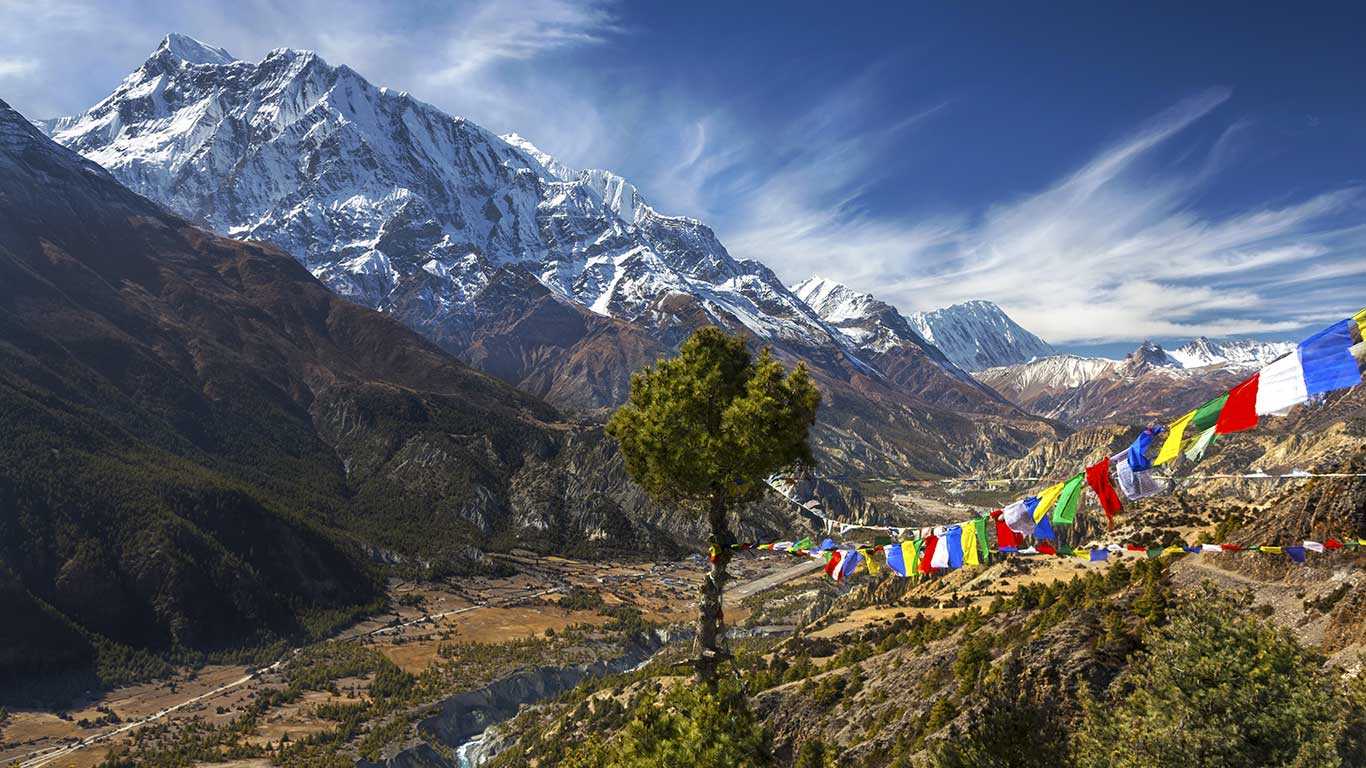

Trip Duration

Max Altitude
Thorong La Pass 5,416 m

Trip Ends At
Annapurna circuit trek overview.
Annapurna Circuit Trek is a very popular trek destination in the Annapurna Conservation Area. The path passes through the beautiful trail over Marshyangdi & Kali Gandaki stream with exquisite panoramic splendor of vast Annapurna mountain ranges.
Also referred to as the Round Annapurna, encircling the trek route, one can observe diverse altitude variations very unlikely to find anywhere else. As the altitude varies, so does the culture and lifestyle, and always accompanied by amazing arrays of floras and faunas widely scattered throughout the region.
The Annapurna Circuit hiking trail comprises a mix of small villages that houses culturally rich ethnic communities like the Gurung, Magar, Thakali, and the Tamangs. The trajectory also precedes you to the Buddhist hamlets and Hindu pilgrimage sites, particularly the famous temple of Muktinath - one of the sanctified sites for Buddhists and Hindus.
Annapurna Circuit Trek unfolds the wonders of nature as it meanders through the paddy fields, river valleys, and gorges and through small mountain hamlets giving you a true enigma of the Himalayan trekking experience. The total length of the route you hike on Annapurna Circuit is somewhere around 150km or (100 miles).
In addition, this route also has been listed as one of the top 10 must-visit places & the best trekking trails numerous times in terms of culture and unique landscape by individual authors, magazines, BBC , Trip Advisor, media companies, and such.
Annapurna Circuit Trek Highlights
- Explore UNESCO heritage sites in Kathmandu
- Descend into the Kali Gandaki , one of the world's deepest gorges.
- Thorung La is the trek's highest point, which is 5,400 meters above sea level.
- Visit Tilicho Lake , a high-altitude lake at 4,919 meters.
- Take a detour into the rugged Nar and Phu valleys.
- This trek can be tailored to your own preferences in a number of ways.
- A fascinating hike along the Round Annapurna Trail and visit Braga - the oldest monastery in this area.
- Take in Nepal's rich landscape and culture.
- Throughout the trail, soak in the spectacular scenery of the Himalayan peaks.
- Enjoy the enthralling landscapes of Manang and Muktinath .
- Magnificent views of majestic Machhapuchhre, as well as unrivaled mountain adventure.
Best Season for Annapurna Circuit Trek
The best season for this trek is in Spring (March to May) and Fall (September to December). During these periods, the weather is almost flawless with moderate warmth & usual cool nights. The Annapurna Circuit is best (and busiest) trekked in the spring and fall, though a shortened itinerary (focusing on the circuit's northern, drier region) is a great choice during the monsoon. It's only in the winter that there are problems, as the Thorung La pass is often closed due to snow.
Difficulty Level of Annapurna Circuit Trek
Since you will be exploring the high-altitude Thorong La Pass at 5,416 m, this trek is more difficult than the Annapurna Base Camp trek (17764 ft.). In addition, this trek is made a little more difficult by the steep climbs and long walking distances combined with minimal facilities.
Because it's a demanding journey, you must be in the excellent physical condition and able to walk for at least 5 to 7 hours per day. Even so, beginners can complete this trek if they have undertaken physical training prior to the trek. Cycling, swimming, acrobatics, hiking, jogging, and aerobic workouts are all good ways to prepare the body for a trek to the Himalayas.
Annapurna Circuit Trek Route
The most convenient way to accomplish this trek is to go counter-clockwise, as this allows for gradual acclimatization as you approach Thorung La. The route generally starts in Besisahar and ends in Tatopani, but road construction has opened up a variety of options at the start and end of your trek.
Road development has made most of the western and eastern parts of the Annapurna Circuit accessible by buses and jeep over the last few years. The roads are bumpy dirt tracks at best, but many trekkers are opting for a shorter version of this trek that starts further up the valley (3-4 days on the conventional route) and finishes as early as Jomsom (taking a bus to Beni or flying to Pokhara).
Permits & Entrance Fees
Before going trekking in the Annapurna zone, you'll need to get a TIMS card and an Annapurna Conservation Area Permit (ACAP). You'll be required to present these at several checkpoints along the way.
Guides and Trek Customization
You will be led by Himalayan Trekkers trek leaders who have been to the base camp and back numerous times. All of our guides are fluent English speakers with extensive knowledge of the mountain, its inhabitants, history, health, hygiene, and, most importantly, your protection.
Because of the road construction, this trek can now be accomplished in as little as 8-9 days by starting in Manang (3,520 m) and ending in Muktinath.
If you plan to skip the first few days of the journey, make sure to stick to an acclimatization schedule before crossing the Thorung La pass. Besides, you can proceed east from Tatopani by following the local village trails along the Ghorepani trek route to Ghandruk, then to Nayapul, where you can take a jeep or bus back to Pokhara. This will extend your journey by 4-5 days. Moreover, if time is not a factor, you might want to go on to Annapurna Base Camp.
Himalayan Trekkers delivers the best value by giving due consideration to your outlook & interest. Our staff members make sure to gratify all your needs keeping safety as the first priority. For further information about this package, please feel free to email or contact us. We are here 24/7 at your service.
- Guaranteed Satisfaction
- Transparent Price
- No hidden fees
- Experience of a More than two decade
- Personal Touch & Professional Service
US$ 1,275 US$ 1,211.25 P/P
Amount: US$ 1,211.25
Bank Charge(4.5%): US$ 54.51
Quick Inquiry
Itinerary details.
Upon arrival at the Tribhuwan International Airport, a representative from Himalayan Trekkers will greet you and transfer you to the designated hotel. After a brief rest at the hotel, you can stroll around the streets of the famous tourist hub, Thamel in the evening. Later, we will gather at an authentic Nepali restaurant for the welcome dinner.
After breakfast, w will spend this day exploring some of the World heritage sites such as Swayambhunath Stupa, Bouddhanath, and Durbar Square in Kathmandu valley. All these sites are UNESCO world heritage sites and truly a gem of Kathmandu and its surroundings.
Today our official Annapurna circuit trek begins. Taking the Prithvi Highway to Dumre, we will take an uneven road by the River Marshyangdi. While on this trail, we pass through the low-lying villages on the banks of the river and the paddy fields that are common in this area.
Following this trail, you will reach Besi Sahar after a drive of around 6 hours. Besi Sahar is the headquarters of Lamjung District and is a small commercial center along the banks of the River Marshyangdi. And from here, will be heading to Syange, which is another 2 hours on the vehicle.
( Note - Apart from the Monsoon season, you can drive till Dharapani reducing one more day as the motorable road has reached Chyamche/Dharapani now. Furthermore, although you can choose the private drive till Synge, you can also walk further 1.5/2 hrs to Jagat / Chyamche).
From Syange, we travel down to Jagat (1.5 hours) and further continue till Chyamche. Also, we will be walking along the banks of the River Marshyangdi descending until the trail reaches the river.
Further, we walk through the lush green forest for an hour and reach the village of Chamje. On treading along a succession of rock-strewn trails, we will descend to a grassy riverbank that leads to Tal. As we hike away from Tal, the path becomes rugged and winding. Then finally we approach Karte, a village in the midst of a deep forest. This is our last destination for the day.
After breakfast, we will continue through the narrow village trail keeping the Dudh Khola to our left. The Dudh Khola originates from the southern face of Manaslu. Further on, the Marshyangdi River enters a gorge and the trail follows the rock-strewn path. We will stop for a while to enjoy the majestic and impressive view of the Manaslu before the inclined ends and the forest of Rhododendron starts.
Walking further up, we will reach the hamlet of Koto, from where we can have the most awe-inspiring view of Annapurna II and surrounding peaks. From here we will walk for nearly one hour until we reach a white gate with a corrugated iron roof, the entrance to Chame, a small village that serves as the headquarters of the Manang District. It is dotted with most of the government offices in the area.
One of the most mesmerizing moments would be when you wake up with the sun rising beautifully over the Lamjung Himal (6,993 m). This is how our 6th-day trek will start. After the overnight rest, we will be heading towards Pisang, which will be your overnight destination for today. On your way to Pisang, you will cross through the barley fields gently swaying in the winds, cross-mountain passes, enjoy the sight of apple orchards and small hamlets on the way to the untouched hamlet of Bratang.
After passing through this village, you will continue your journey enjoying the majestic beauty of Annapurna II, Gangapurna Glacier, and stunning snow-capped peaks. Similarly, after a walk of almost 3-hours, you will arrive at Pisang village.
Our day starts with the journey towards Manang. On the way to this town, we will pass through the beautiful and scenic Manang Valley and have a glimpse of the sky-high Tilicho Peak (7132 m). We can see this while descending through Manang's airstrip, Humde.
After a while, we will reach the spot where the north-eastern face of Annapurna III is visible. Further on, after a while, we keep on walking through the Sabje Khola Valley, from where we also can see the Annapurna IV , which stands at 7525 m, in all its majestic glory.
Further on, you will cross a wooden bridge, as the Marshyangdi Khola gushes below us after which we enter the village of Mungji. We will continue downhill till we reach Manang and experience the awe-inspiring sight of Annapurna II, Annapurna III, Annapurna IV, Gangapurna (7455 m), and Tilicho Peak (7134 m) standing majestically in their full glory as of the backdrop of our trail.
Manang is one of the typical Nepali villages where one can find traditional houses made up of clay with a mix of Manangi and Tibetan culture in addition to the unique lifestyle of the local people.
Today is going to be a thrilling day as we have reached that point in the trek where we will start our ascent towards Thorung La. We will start your walk after breakfast and start climbing uphill to Tengi, and 120 meters above Manang.
Furthermore, we will cross Marshyangdi Valley turning north-west up the valley of the Throng Khola, and continue further to Gunsang (3960 m). This is a small mountain hamlet with houses that have flat roofs made up of mud. We will walk past picturesque meadows and rich forests of barberry, juniper, and other alpine plants.
On the way, we might encounter horses and yaks grazing. This whole scene depicts the picture-postcard perfection also renowned as Yak Kharka. Keeping ourselves on the same track, we will continue walking across the large stream coming down from the Chulu west. You will follow the trail until you reach a rich pasture that is 4000 meters above sea level.
Leaving Letdar behind, we will gradually climb to a ridge before going downhill to the gushing headwaters of the River Marshyangdi. We will then cross the river using a covered wooden bridge. After a short climb up the mountain path on the bank of the river, we will follow a narrow trail across an uneven steep slope and then climb down to Thorung Phedi. Similarly, if time allows, then we will climb to High Camp (4883 m) and stay overnight.
This is the most exciting day of the trek as you will be crossing the Throng La (5416 m), the highest trekking pass in the world. It has been listed as one of the best trekking trails in the world in terms of culture and unique landscape, many times by many organizations, individual authors, Magazines, BBC, Trip Advisor, and so on.
So, we will start early for the climb followed by the downhill trek. The trail is very steep but well defined and easy to track as it has been used by the villagers for hundreds of years. The walk will be uphill and strenuous for the next four hours until we reach a place with prayer flags and a small stupa/chorten.
From up here, we can see the majestic snow-capped mountains, rolling hills of Mustang, and the beautiful Valley of Kaligandaki. After a brief rest, we will start our descent in the direction of Muktinath (3800 m). We will take a path along the Jhong Khola Valley to Muktinath, a popular pilgrimage in the Himalayan region for both Hindus and Buddhists.
Coming down the mountain in the morning we will find ourselves in Jharkot and Khingar, where there are beautiful monasteries. We will experience the culture of the local people which in many ways are similar to that of the Tibetan culture .
One cannot really get over the awesome view of Dhaulagiri and Nilgiri throughout the trail. We hike past Kagbeni to reach Jomsom along the banks of River Kali Gandaki. Jomsom is the Headquarter of the Mustang district and we spend some time here to explore the area and interact with the locals.
Since Jomsom lies in the mountainous region so there is always an early flight to Pokhara because in the morning, the days are clear, and also the flight duration is about 20 minutes. Similarly, Pokhara is also known as the “City of Lake” and is one of the most popular places for foreigners after Kathmandu. There are lots of interesting things to see in Pokhara. So we explore Pokhara's popular landmarks here.
We drive from Pokhara to Kathmandu. The driving might take 7 hours to arrive in Kathmandu and an alternatively can take a flight to Kathmandu ( 25 Mn) to skip the drive and save energy at an extra cost.
You can depart from Kathmandu to your home country or extend the trip and head for another trip within or outside Nepal.
What is included / not included
- International Arrival and Departure transfer as per itinerary
- 3* Standard Category Twin/Double Sharing Accommodations in Kathmandu & Pokhara
- Daily Breakfast at Hotel in Kathmandu & Pokhara as Per Itinerary
- Guide City Tours in Kathmandu as per Itinerary
- All Ground transfers in Kathmandu
- Private Jeep transfer to Syange
- Permits and Entrances Fees – Annapurna Conservation & TIMS
- Domestic Flights and Taxes Jomsom - Pokhara
- Best available Twin/Double Sharing Tea House Accommodations during Trek
- An Experienced Trekking Guide and Required Numbers of Porters during the Trek
- All Wages, Equipment, Salary, Travel Insurance for Guide & Supporting Crew
- Helicopter Evacuation arrangement Services (Excluding Cost of Evacuation) If incase od needed
- Oxygen Saturation Monitoring System(refundable)
- A Comprehensive Medical Kit
- All Meals – Breakfast Lunch Dinner during the trek
- Welcome/Farewell Dinner
- International Flights to/from Kathmandu
- Your Travel Insurance
- Nepal Multiple Entry Visa Fees (Same Cost for Multiple Entry and Single Entry)
- Helicopter Evacuation If Needed
- Meals – Lunch and Dinner in Cities (Except Trekking)
- Local Temple, Monasteries, and other entrance/donation
- Personal Gear and Clothing (Available on Rent)
- Any kinds of Beverages and Extra Cost which is not included in the packages
- Personal Phone Call Internet/WiFI and Laundry
- Tips for Trekking Crew and Supporting team
- Any cost occurred from unfavorable circumstances such as Bad weather, Health issues, landslides, Political strikes, etc.
- Any other services and cost which is not mentioned in the inclusion
Two permits ACAP (Annapurna Conservation Area Project) and TIMS (Trekkers Information Management System) are mandatory for Annapurna Circuit Trek.
The permits are taken care from Himalayan Trekkers team after you booking and is not much that of a concern.
Yes, It is safe to trek to Annapurna Circuit after Covid-19 because this region has and had the least number of local spread.
Yes, it is mandatory to be vaccinated for Annapurna Circuit Trek. The trekkers will also have to bring their vaccination card along with a negative CPR report. Apart from the Corona vaccine, we advise trekkers to consult with a medical counselor and chosen trekking agency for other medications/vaccines.
For the standard facilities and services, it costs USD 1,275 for Annapurna Circuit Trek, however, it depends on the duration, route, interest of the trekkers, and also the facilities they choose.
Ideally, It takes approx. 2 weeks for Annapurna Circuit Trek but also depends on the starting and ending point. If you want to lessen the days, it is also available via customization.
Trekking with a local guide is very safe and comfortable in terms of communication, information, route, and others, so, we always recommend going with a professional guide.
But as per the new rules and policies stated by the Tourism Act of Nepal, having a guide is mandatory for Annapurna Circuit Trek and all other regions as well.
Accommodation
Our packages include 3-star standard category accommodation with the inclusion of breakfast on a twin/double sharing basis in Kathmandu and Pokhara. This accommodation is available in the cities such as Kathmandu and Pokhara. 5-Star resorts, luxurious hotels to comfortable guesthouses, lodges, and homestays are available in Kathmandu, Pokhara, and Jomsom so they can be modified as per the traveler’s interest, budget and availability.
During the trek, we provide the best available, neat, and clean lodges and teahouses. In Upper Pisang, Manang, and Muktinath, more facilitated hotels with private attached bathrooms are available which can be upgraded as per the availability. Most of the places have an attached bathroom. Likewise, a hot shower facility is available throughout the trek.
Meals During Annapurna Circuit Trek
Breakfast is included with the accommodation in our packages. But for lunch, dinner, and other beverages in the cities, we do not include them in our packages. It is rather causal for travelers to choose among the various varieties of cuisine and restaurant, pubs, and bars.
During the trek, all the meals (breakfast, lunch, and dinner) are included in the package and we let our clients choose from the menu according to their liking in the Ala-kat system. Nepali, Indian, Continental, Tibetan, and a few Western cuisines are available during the trek. The meals are prepared from the fresh vegetables and grains grown in the mountains which are full of nutrients making them hygienic and healthy. These meals help us to get energy during our trek.
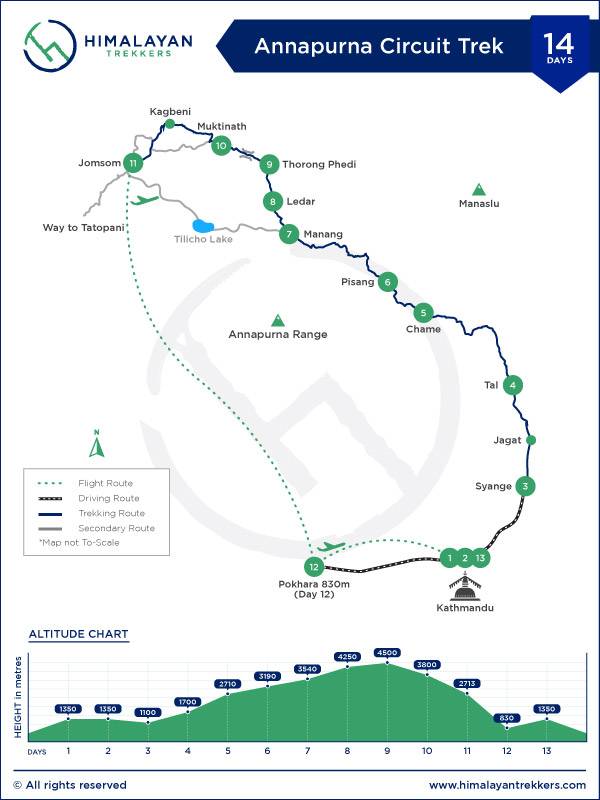
Similar Itinerary
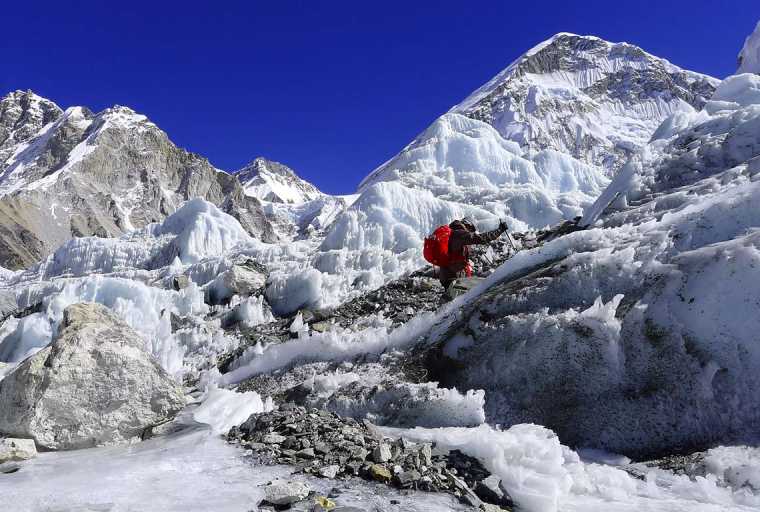
Everest Base Camp Trek | EBC Trekking For 2024/25
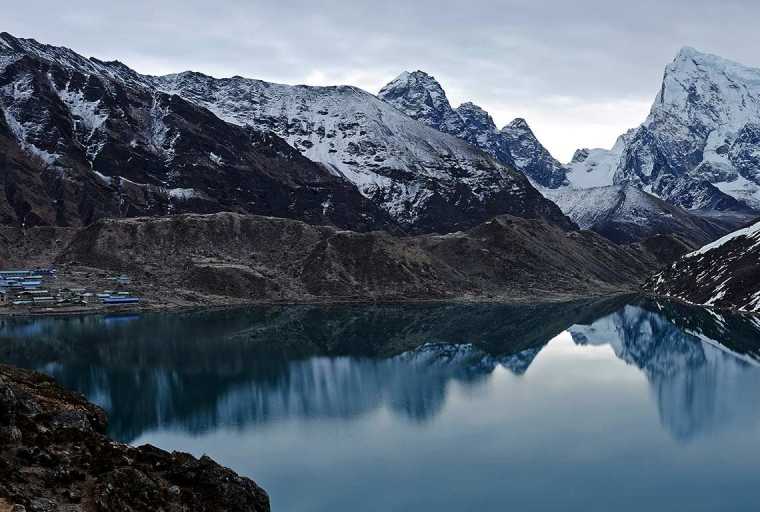
Gokyo Valley Trek

Annapurna Royal Trek
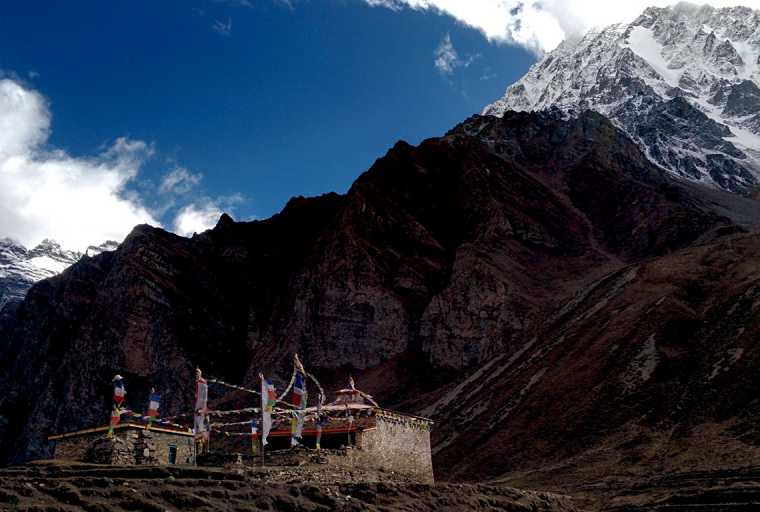
Nar Phu Valley Trek
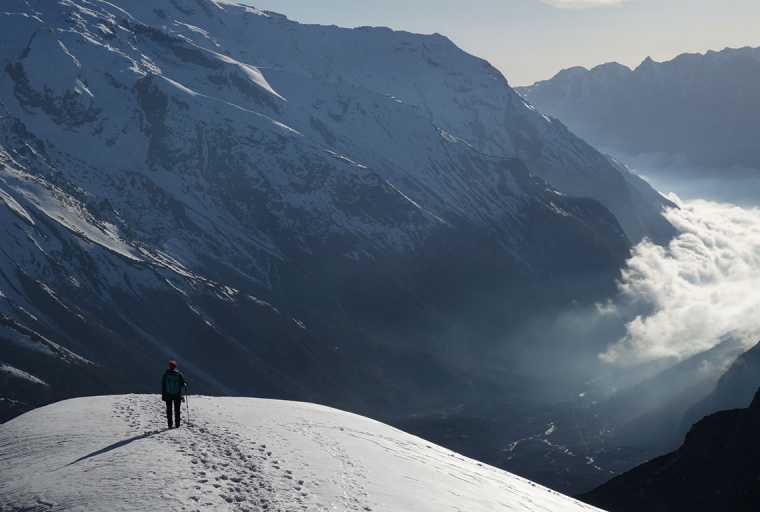
Langtang Trek Itinerary, Guide, and Cost
Customer review.
Martina & Jan
Track around Annapurna
All the organization with Raj was very comfortable and went smooth. Track was well prepared and our experienced guide Tika made few changes according to our conditions. Even we chose quite advanced track through lake Tilicho and Throng-la pass, we felt fine and relax. We felt great support from our guide and all members of the organization.
Thanks a lot.
Victor Alekseyev
I booked my trip with Himalayan Trekkers online. Connected with them and arrived in kathmandu. Everything was organized for the trip and made sure the trip to go well. I hike the Anapurna Circuit and surrounding areas. The weather was not so in favor in the beginning days but after it was quite beautiful.
The throughout experience of the trek was full of joy and unique adventures. The spectacular view of Lake, Annapurna Glacier, Dhaulagiri, Fishtail, and Poonhill were breathtaking.
My guide took proper care of me and made sure of my security and convenience. The trip was customized according to my will and budget. I super recommend them to all.
Great adventure trek in the Annapurna Circuit
Raj and his team made our trip a great experience, different than the typical organised trips. Thanks to them we could enjoy a perfectly organised holidays without having to take care of anything and also we had the chance to have some real local experiences. The adventure mission team rapidly became part of our "family" sharing with us those fun moments. Kind, efficient and extremely helpful, made easy even the most exhausting parts of the treks. We will definitely repeat next year!
perfect holidays
We spent three weeks in nepal and whole our trip was managed by Raj . We did some sightseeing around Kathmandu, then we went to annapurna circuit trekking and finally to Chitwan national park. Everything was fine, without any problems . I would definitely come back. Lucie
I spent 2 months in Nepal and this tour was definitely one of the highlights. Raj and Sadeep looked after me for 3 weeks and they were perfect! We saw a real and authentic side to Kathmandu before completing the Annapurna circuit trek. They were so warm, hospitable and friendly at felt at home even in such a foreign place. I would recommend these guys to anyone no matter which adventure you choose. Duncan
Simona Jackubcova
Stunning Annapurna Circuit Trek
The Adventure Mission Nepal group will always make you feel that you are a member of their family - actually you will become. Since my first visit in Nepal (two years ago - before the earthquake), Raj and his family has been treating me as a close family friend. It is always a pleasure for me to come back and spend a wonderful time with them. This year, me and my friends decided to do the Annapurna circuit, one of the classics, most diverse and stunning tea house trek in the Himalaya. We had a blast - we forgot about all daily duties and just enjoyed a peaceful, heartwarming and real local environment. Our team - Balkrishna (guide), Sisi & John (porters) were really caring, knowledgeable, easygoing and funny ppl, we had with them all the time. "Resham firiri"
Thank you all for a terrific first experience in Nepal. Every service was more than adequate and every request was taken care of. Your genuine honesty, hospitality, and friendship will be memories I treasure of Nepal as much as the mountains, jungles, and food. Hopefully, in the not-too-distant future, it will happen again.
All the best in the future!!
Adam (Melbourne, Australia) November 2011
Martin & Jan
All the organization with Raj was very comfortable and went smoothly. The track was well prepared and our experienced guide Tika made a few changes according to our conditions. Even though we chose quite an advanced track through Lake Tilicho and the Throng la Pass we felt fine and relaxed. We felt great support from our guide and the organization. Thanks a lot.
Associated With

Ways You Can Pay
Quick navigation.
- MultiCountry trek and tours
- Nepal Budgets Tours
- Nepal Motorbike Tours
- Adventure Bike Tours
- Day Hikes in Kathmandu
- Cultural and Religious Tours
- Photography Tours
- Legal Documents
- Terms and Condition
- Privacy Policy
- Gear List for Trekking & Climbing
+977 98510 42334
Thamel-26, Kathmandu, Nepal
+614 516 05387
4/8 Florence St
Coburg, 3058, Melbourne, VIC
© 2024 Himalayan Trekkers. All rights reserved.

- Annapurna Region Guide
Best Time to Trek Annapurna Circuit
If you plan to trek the Annapurna circuit, you should think about a few things, the most important of which are the best season and weather. This is especially important when visiting Nepal, where temperatures and rainfall can vary widely depending on the seasons and regions.
The Annapurna Circuit trek is by far the most popular trip in Nepal’s Annapurna region, and it is widely known as one of the world’s best treks. The journey is famous for its diverse landscapes and climatic changes. The hike begins in Besisahar and ascends through subtropical meadows to the spectacular Thorong La Pass at 5,416m, the trek’s highest point. The trail descends from Thorong La Pass into the wild Mustang region, where the landscape changes to semi-arid.
The northern Annapurna region receives much less rain than the rest of the Himalaya due to its location, allowing for year-round hiking even during the monsoon season. The best time to trek Annapurna Circuit is determined by two factors: weather and crowds. The drier seasons attract many visitors, whereas the wetter seasons are less busy.
The seasons and weather in the Annapurna region can be divided up into four seasons, although the rain pattern is quite different and should be noted before trekking the circuit.
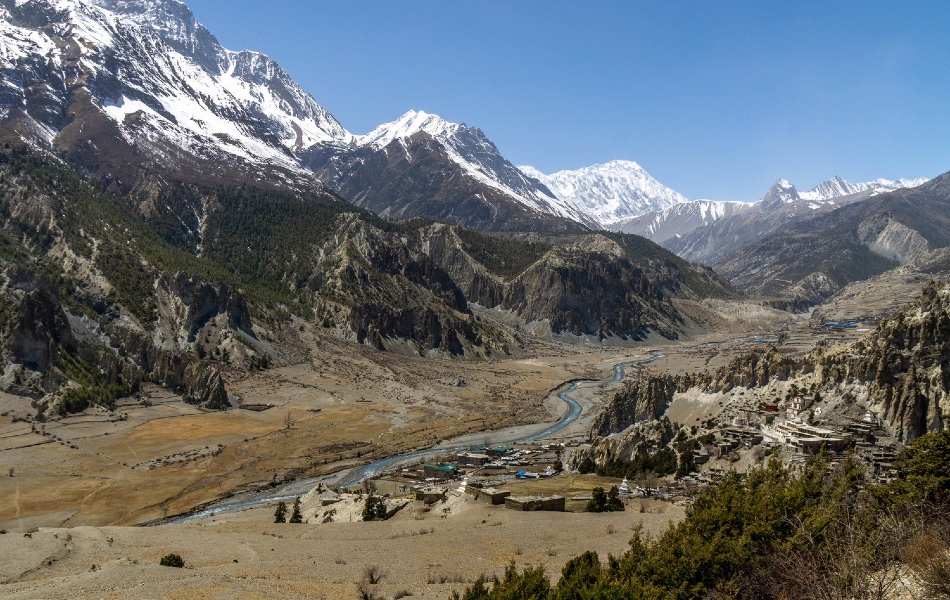
Spring – Crystal Clear Views
As the weather warms, trekkers go to the mountains, making this the second most popular trekking season in the Annapurna region. By April, much of the snow and cloud cover has disappeared, turning the views crystal clear.
End of May brings a strange haze over the mountains, although it is only visible at low altitudes, and the sky clears completely as you reach higher elevations near Thorong La Pass. As the monsoon season approaches, the heat rises around mid-May, and walking at low altitudes, particularly in the Mustang region of the Annapurna Circuit can be uncomfortable.
Trekking in the spring between mid March and mid April , allows you to witness the stunning views of rhododendrons that bloom in the forests surrounding Ghorepani . Rhododendrons are a very spectacular sight, filling entire hillsides with red, white, and pink flames.
You’ll need to dress in layers and drink plenty of water on a daily basis. Because of the popularity of the Annapurna Circuit , this is the busiest time, and tea-houses fill up quickly; thus, we recommend booking with Magical Summits as early as possible.
.jpg)
Summer/Monsoon – Rainy Periods and Quiet
Around mid June, the monsoon season arrives in the Annapurna region. Although torrential rains, leech plagues, and mudslides make the monsoon season less trek-able throughout Nepal this is not the case in the Annapurna Region, where rainfall, especially in the north is much less than in most other places.
During this time, the southern Annapurna region, mainly near Pokhara, gets a lot of rain, and the rhododendron trees around Ghorepani are full of leeches. The northern areas of the Annapurna Circuit, around the Mustang Region, gets almost no rain as it located in the rain-shadow area, where the mountain ranges protect the area from major monsoon forces.
To put that into perspective, Pokhara gets on average of 800mm of rain every month during the monsoon season, but regions like Jomsom and Marpha receive less than 60mm! As a result, if you’re willing to deal with some rain throughout your journey, the Annapurna Circuit is still a great option during the monsoon season.
There are less people during this time of year, and many flora species blossoms, making the trek especially picturesque. Please keep in mind that rain clouds often obscure your views.
Autumn – Popular Trekking
From September through November is the busiest trekking season in Nepal. It is the time just after the monsoon when everything is refreshed, washed clean and vibrant. Even at elevations above 3,000 meters, the weather remains pleasant, and the views of the mountains are usually breathtaking and clear.
Even though night time temperatures will remain below zero, the clear night skies filled with a billion dazzling stars will make up the difference! Because of its popularity, this is the busiest time on the Annapurna Circuit, and guesthouses fill up quickly; thus, we recommend booking as early as possible with Magical Summits.
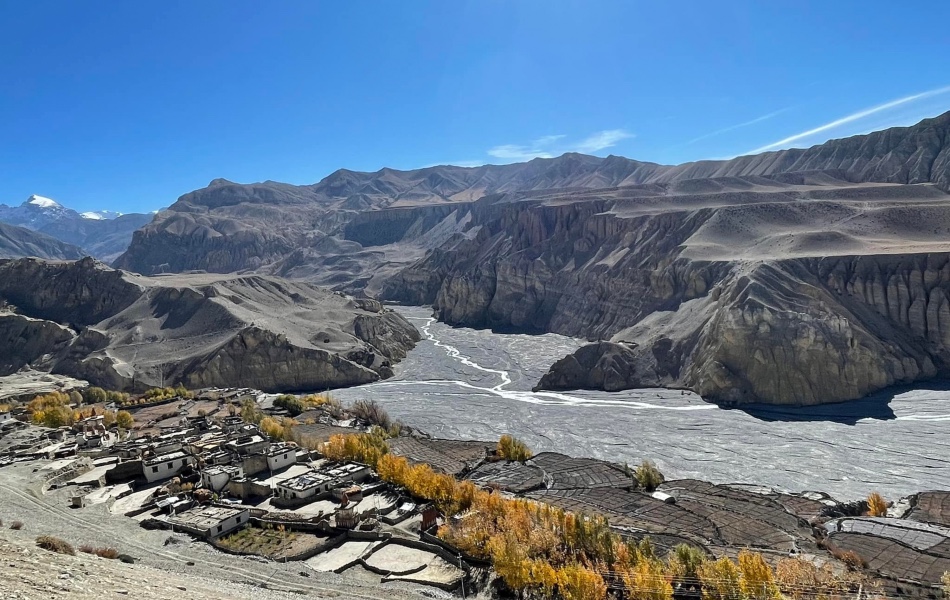
Winter – Coldest Season
Although it is quiet, this is the coldest season in the Annapurna region. Depending on your altitude, temperatures will be cold during the day and much below zero at night.
Thorong La Pass, at over 5,000 m, is often covered with snow and will close for several days whenever happens. Unless the track is closed due to snow, guesthouses are open during this time. However, there are still clear days with stunning views.
Final Thoughts
The Annapurna Circuit hike follows the famous trails that circle the Annapurna massif .
You will have the opportunity to see some of Nepal’s most exotic and remote regions, including Mustang and Manang.
The Annapurna Circuit trek is doable year-round. All you need to do is get the right equipment and supplies.
If you have any questions about the Annapurna circuit trek or any other treks and trips within Nepal, Bhutan, Tibet feel free to contact us .
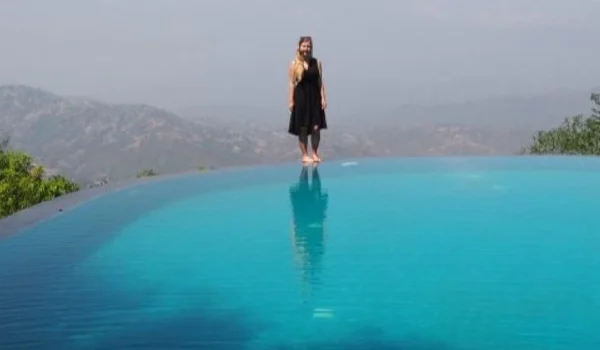
Solo Travel in Nepal
Upper mustang trek difficulty, posts you might be interested in.
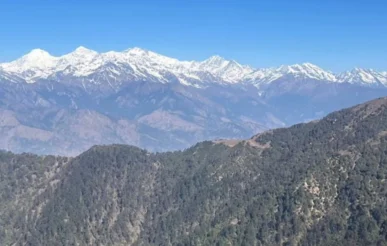
Nepal in June
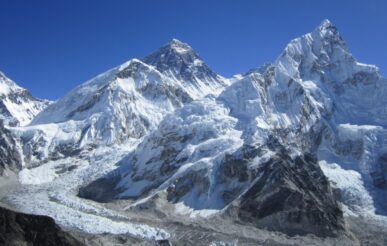
How Hard Is Everest Base Camp Trek?
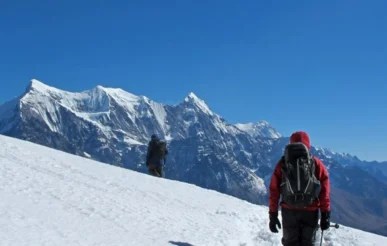
7 Things you need to know before going on a hike in Nepal
Personalize trip.
"I was born and raised in Nepal, nearby Everest region. I am proud to be a native Sherpa, and I have been a Mountain guide over a decade now. Following my passion, I decided to start helping travelers with their travel plans! I think life is a journey, a trip where you collect experiences when you share with other people and with nature."
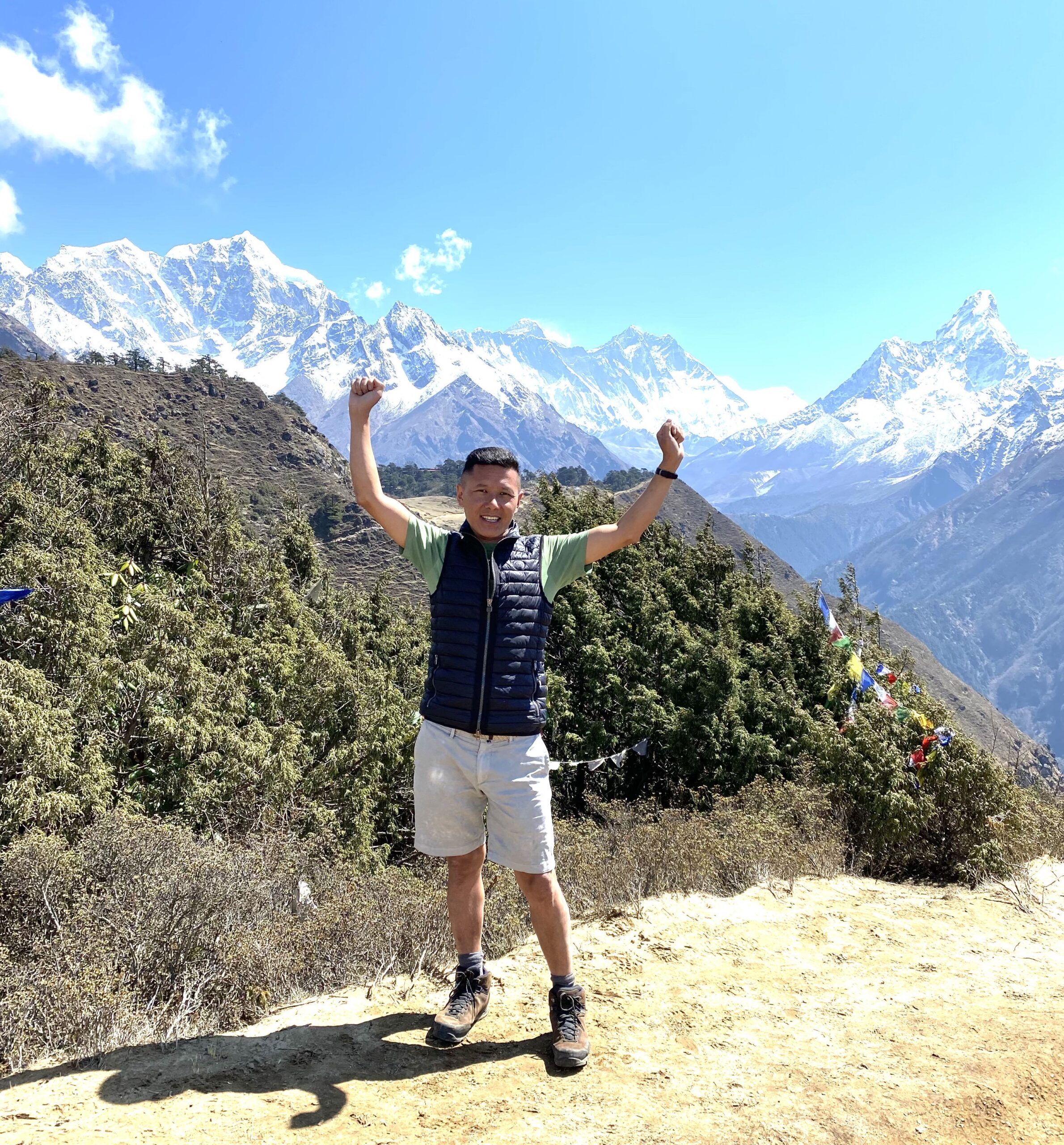
Chhiring Sherpa
We are certified.
- Government Registered No: 113188/070
- Tourism No: 1599
- VAT No: 601221723

Nepal Eco Adventure
Committed To Be Eco Friendly!

- +977 9851170646 (Chhatra)

Annapurna Circuit Trek Best Season
Annapurna Circuit trek is the most popular trekking destination in Nepal full of adventures and amusement to the trekkers.
Annapurna Circuit trek is one of the most diverse trekking routes of Nepal. With good physical strength and proper packing you can go on this trek any time of the year. Yet, Spring and the Autumn season marks the best time for Annapurna Circuit trek.
To give you a better knowledge about the best time you should do the trek, here is a breakdown on its weather conditions and highlights in different seasons of Nepal.
We Have Covered
Annapurna Circuit Trek

The Annapurna Circuit (APC) is the name given to the popular trek within the Annapurna region in Nepal. In short, it is a trek that circles around the Annapurna Massif.
The trek offers one of the most diverse and stimulating trails. It takes you from lush-green pastures and hills to snowy landscapes. It also offers magnificent views of beautiful gorges, rivers, caves, mountain peaks.
Along with these, you also get a closer look at the diversity of culture, lifestyle, ethnicity of Nepal.
The total length and duration of the trek can vary depending on a number of factors.
- The starting point of your trek
- Use of different medium of transportation
- The number of villages you wish to explore along the trails
- The number of acclimatization days
The classic route of this trail takes anywhere between 15-25 days. The number of days vary per need.
- Send us a Quick Enquiry
- Contact Number
- Your Message *
Annapurna Circuit Trek- Best season
The Annapurna region along with the rest of Nepal has 4 different seasons- Spring, Summer, Autumn, Winter. Each season offers trekkers a unique flavor and adventure.
March, April and May marks spring in Nepal.
The weather in the Annapurna Circuit in spring is warm and clear. And offer a high visibility of peaks and landscapes. It is also the best time to visit to cross high passes. It is the second most recommended season to do this trek with its warmer temperatures, and long clear days.

You get to witness the full blossom of the red, pink and yellow rhododendrons in the lower regions of this trek.
The clear weather conditions also make for great panoramic views of the surrounding peaks.
May is the time of the Tiji Festival at Lo-Manthang. This 3 days’ festival takes place on the premises of the King’s palace in Upper Mustang.
You can witness the local culture to its full glory. The local people come in their finest clothes and jewelry. They celebrate the festivals with songs, prayers, drama, and dance.
Nepal experiences wet summers with torrential rainfalls, increased temperatures. Late May or early June marks the beginning of Summer. While August marks the end of Summer in Nepal.
The weather throughout the Annapurna Circuit gets quite hot during this season. But, it gets cooler as you trek to the higher regions with less rainfall.
Most parts of the trail experiences torrential downpour and mudslides. Mosquitoes and leeches making it one of the least desirable months to do this trek.
However, some parts of the trail like Manang, Upper Mustang, Muktinath lies in the rain-shadow area of the Annapurna mastiff. These areas experiences very little to no rain making it the perfect time to visit these areas, any time of the year.
With less number of trekkers, you can continue with your trek at your own pace and not rush to your next destination.
The rainfall brings the best out of nature. You may get lucky and have the opportunity to view the surrounding forests, rivers, gorges, waterfalls in their full glory.
You also get to witness the blossoms of beautiful wildflowers that adorn the surrounding hills and mountains.
Attend the local Yarlung mela or the horse festival that takes place during the full moon in August. This popular, 3 day festival sees horse race, archery, songs, dances and merrymaking in the Mustang.
The perfect time for trekking in Nepal is between the months of September and November. These are the months of Autumn season.
The perfect season mean huge numbers of trekkers in the region. The trails, tea houses, cafes and restaurants are busy and fill very fast. Please book your trek and flights in advance.
It is also the most expensive time to do this trek.
After the monsoon, Nepal welcomes clear and fresh air and skies. The comfortable and pleasant temperature makes for great trekking conditions. This is the ideal season to do the Annapurna Circuit trek.
September still sees light rainfalls and humid weather in the lower regions of the trek. Late November sees slightly colder weather with chilly mornings and nights. It is refreshing and often considered the best months to trek in Nepal.
This season experiences slightly more predictable weather conditions with great visibility of mountain peaks and the surrounding landscapes. You will not require any special gears and equipment to trek during these months.

This season has great visibility making for the most refreshing views of the snow-capped mountains. The Annapurna I, II, III, IV and Dhaulagiri are some range you don’t want to miss.
You also can see the surrounding landscapes, hills, rivers and gorges in their full glory. As monsoon passes it clears the dust and fills the rivers.
Autumn is the season of festivals in Nepal. Majority of Hindus in the lower regions of Nepal celebrate the biggest festivals of the year- Dashain, Tihar during this season.
You have the unique opportunity to see the locals of these regions in their full glory and joy.
December to February marks the winter months in Nepal. The temperature starts to drop during the months of January and February. The mornings, late evenings, and night are colder.
However, you will enjoy the superb panoramas. And a quieter trekking trails with less number of trekkers.
This season is not recommended for trekking in higher altitudes. The weather in the upper regions of this trek is freezing cold.
Some of the high passes and upper regions like Upper Mustang remains closed due to the cold and snow.
But, winter is an adventurous season. You can experience the stunning sunshine and the Himalayan way of life.
Many of the tea houses and lodges in most parts of the trails are still open. They offer fireplaces, hot water, extra blankets to keep you warm. You also get to compare and have your pick of the tea houses, rooms, meals.
You can also enjoy the views of the mountains, remote Himalayan life at your pace.
You can get beautiful snowy scenery of white, snow covered peaks and surrounding hills in the upper regions of the trek.
You have the opportunity to enjoy a truly, snowy Christmas and new year in some of the remotest regions in Nepal.
The locals also celebrate Tamu Loshar, Gyalpo Losar, Christmas and Mageshangrati in the highlands of Nepal. Losar means New year in the local dialect.
The local Gurung community celebrates Tamu Loshar in different parts of Nepal. And, the upper regions of the trek like Jomsom, Mustang, Manang celebrate Gyalpo Losar.
You can witness the locals decked in their cultural dresses visiting monasteries and making merry at their homes, community places.
Major Highlights of the Mustang Trek

- Views of some of the highest mountains in the world- Mt. Annapurna I, II, III, IV and South along with Mt. Dhaulagiri, Nilgiri, Hiuchuli, Mt. Machapuchare.
- Explore some of the most well-preserved and rustic villages in Nepal- Mustang, Manang.
- Some of the parts of trails is also popular for mountain cycling, rock climbing, pilgrimage and cultural tours.
- Explore the diverse landscapes of Nepal from green, luscious forests in the lower regions to the dry, barren landscapes.
- This trek takes you through the traditional trade routes used by people from the 15th century.
- Explore the different natural and cultural beauty of the local regions- many rivers, waterfalls, caves, rocky cliffs, rock paintings, culture, and people.
Additional things to consider
Weather in pokhara and kathmandu.
Every journey in Nepal begins in the capital city of Kathmandu. From here, you will most probably be travelling to your trek’s starting point- Pokhara.
Both these beautiful cities give you a glimpse into the culture and lifestyle of Nepal with their fascinating temples, landmarks and natural beauty.
The weather in Pokhara and Kathmandu gets affected by monsoon with heavy and constant rainfall. If travelling in summer season of Nepal, make sure to leave a day or two for flight delays or cancellations.
Festivals in Nepal
If you are after witnessing the festivals in Nepal, do check in with your agency about the dates of the festivals.
Nepal follows the lunar calendar and hence the dates of the festivals vary from year to year.
Annapurna Blizzard
The weather conditions in any high altitude region is less predictable than the lower regions. Sudden, powerful blizzards can and do happen on high Himalayan trekking routes like these.
Hence, it is important to prepare for extreme weather regardless of the season you travel in.
Physical Fitness
The Annapurna Circuit trek is among a demanding trek and takes you to altitudes above 5000m. Hence, a good level of fitness will help you to complete this trek comfortably.
Final Thoughts
The Annapurna Circuit trek follows the classic trails around the Annapurna mastiff.
You get the opportunity to explore some of the most exotic and remote locations of Nepal like Mustang, Manang.
The Annapurna Circuit trek is doable throughout the year. All you need to do is prepare with the right equipment and supplies.
The best season to do this trek is Spring and Autumn season.
If you have any queries about the Annapurna circuit trek or any other treks and tours within Nepal, feel free to contact us .
Recommended Articles

Trekking in Nepal in February
Are you thinking about trekking in Nepal in February? It’s almost impossible to say what is the best time to explore Nepal. Our little country is simply an amazing year around. In Nepal, winter runs from December to February. December and January are the coldest …

Bhutan Tour Packages
Bhutan is one of the great Himalayan kingdoms of the world. It is a unique destination suitable for all kinds of vacation. So, you can choose from different Bhutan Tour Packages which meets your demands. You can select from the cheap budget tours to private- …

Things to do in Nepal in August
Everyone seems to be afraid of rain havoc in the Summer season while traveling to Nepal. But, the country has so much to offer all round the year. Although it is a monsoon month, there is a list of beautiful things to do in Nepal …

Annapurna Circuit Trek Itinerary: The Best Trek of Nepal
The Annapurna Circuit Trek is one of Nepal’s best treks ever. Here’s the Ultimate Trekking Guide to conquer the Annapurna Circuit including Trek costs, the best season to visit, what to pack, where to sleep and much more!!!
Namaste from Nepal my wonder friends!!! How have you been? Me? I feel very blessed to be back to one of my favorite countries in the entire world.
And hey, did you know that last year I attempted to do the most important parts of the Annapurna Circuit Trek in less than 9 days?
Well, in case you didn’t know I was extremely short of time after the Himalayan Travel Mart Conference but I wanted to see the BEST views of the Annapurna Mountain Range so I arranged a crazy itinerary of wonders for myself.
Spoiler Alert? Acute Mountain Sickness (AMS) got to me eventually and I had to turn back but trust me, the experience was extremely positive and unforgettable.
Here’s my epic Annapurna Circuit Trek Itinerary of Wonders showcasing both the short and the longer versions of the Trek.
Enjoy my wonder friends and Namaste!!!
Annapurna Circuit Trek Itinerary
Day 1: kathmandu to besisahar (760 m) and the tims & acap permits.
Like usual, all great hiking journeys begin in Kathmandu (check out my article about the Best Day Trips from Kathmandu here !!!), the chaotic yet beautiful capital of Nepal.
And of course, this trek, like most of the popular ones of Nepal, require you to jump through a few hoops of paperwork before you even set one foot on the trail.
So, drink a cup of chai tea with an extra dose of patience and take a taxi (or walk for 15 minutes if you’re in the Tamel area) to the Nepal Tourism Board offices located in Pradarshani Marg.
To do the Annapurna Circuit Trek you basically need to buy two separate permits. First is the Trekkers’ Information Management Systems (TIMS) which will set you back around 10 USD plus the Annapurna Conservation Area Project (ACAP) which will set you back 20 USD.
Yes, in theory you can get both permits via an agent or directly at the start of the trail but it is better to do it directly with the Nepal Tourism Board to avoid paying handling fees and to get it done on the very same day (depending on the number of people waiting it can take from 20 to 60 minutes).
Keep these two papers next to your passport and be ready to present them when asked by the rangers of the Annapurna area!!! Once you’re all set, take a public bus from Kathmandu to Besisahar (8 hours, 7 USD) and get some rest.
Tomorrow the adventure begins!!!

Day 2: Besisahar to Chame (2,650 m)
I hope you’re inmune to nausea my friends because today is going to be a REALLY bumpy ride through the lower mountain areas of Nepal since the jeep will ascend from 760 to 2650 meters.
Early in the morning, just walk towards the jeeps that are in the northern area of the town of Besisahar and wait for it to be filled in order to begin your journey to Chame, the most convenient starting point of the Annapurna Circuit Trek.
Prices will vary depending on the color of your skin, your haggling skills and basically how much the driver likes or dislikes you but I recommend NOT paying more than 20 USD for a one way ride.
So wait, Raphael, why didn’t you trek from Besisahar to Chame?
Well, there’s basically two reasons for that. The first one, is of course, time since you need at least 3 extra days to trek the 65KM from Besisahar to Chame which was time I didn’t have.
The second reason? The road from Besisahar to Chame is REALLY dusty since most of the time you will be trekking alongside the road that the jeeps take plus this section is not even remotely close to being as picturesque as the Chame to Manang trek.
My best advice? Even if you have the time, skip the Besisahar to Chame trek and enjoy more day treks once you’re in Manang.

Day 3: Chame to Upper Pisang (3,300 m)
NOW we’re talking!!! After two days of bureaucracy, traffic and bumpy roads it is time to get your legs moving and start hiking alongside the beautiful Annapurna Mountain Range my friends!!!
Today’s altitude gain will be close to 700 meters but unlike other hikes, this hike will be mostly on a open area (I REALLY dislike those forest claustrophobic hikes) which will make every single second more beautiful than the previous one.
There’s close to 14KM separating Chame from Upper Pisang and the recommended time is 4 to 5 hours although my best advice is for you to start at sunrise, get some well-deserved rest mid-way then continue trekking once the harsh sunlight is gone.
And well, if you downloaded any Nepalese Map (personally, I used Maps Me) or have a physical one you will notice that there’s actually TWO towns called Pisang: Lower Pisang and Upper Pisang.
Despite its name, Upper Pisang is ONLY 100 meters higher than Lower Pisang BUT the extra effort on getting there is well rewarded since the views are not only better but it will help you acclimatize faster than if you chose to stay the night at Lower Pisang.
And yes, you can also enjoy sunsets of wonders such as this one as the sun rests behind the Annapurna Mountain Range and blesses our journey. Pretty rad, uh?

Day 4: Upper Pisang to Ghyaru (3,730 m) to Manang (3,519 m)
On the Annapurna Circuit Trek, you have two options to go from Upper Pisang to Manang: the lower shorter path or the high altitude longer path. Today’s altitude gain is not as bad so I really recommend you to try the longer path.
Other than an easier acclimatization process, the main advantage of the high altitude path is getting to know the many Buddhist Villages (did you know that Nepal is 80% Hindu and only 10% Buddhist? Check out more Fun Facts of Nepal here !!!) on the way of which Gyharu stands out as the most emblematic one.
PS. Is it just me or does the architecture of these Buddhist Tibetean towns reminds you a little bit of Macchu Pichu?
The high altitude longer path from Upper Pisang to Manang via Ghyaru will take you 19.5 KM to complete which translates to about 7 hours although, as I said before, I recommend you that you take it easy in order to fully enjoy the views of the Annapurna Mountain Range.
Trekking isn’t a race and the beauty of the Annapurna Circuit Trek is that there’s no such thing as guest house reservations (more on that later) so you can just spend the night whenever you want if you feel tired.
And yes, I recommend you to always look behind you every 10 to 20 minutes: sometimes THE best views can only be appreciated if you turn back your head!!!

Day 5 Manang to the Ice Lakes (4,650 m) and Back
Manang was my last stop in the Annapurna Circuit Trek because even though I wanted to visit Tilcho Lake and conquer the Thorung-La Pass I was short on time and I didn’t acclimatize properly in my rush to see the best Annapurna viewpoints with my limited time.
Was I sad to not be able to complete the Annapurna Circuit? Not at all! During each day of the journey I had this mantra playing on a loop inside of my head:
“Raphael, be the best version of yourself you can be. This isn’t a challenge of you against others, it’s a challenge of the old you versus the new you” .
And yes, on my way to the 4650 meters above sea level Ice Lake near Manang (which is a very good option to get acclimatized if this is your first encounter with high altitude treks and can be done as a day trip from Manang), I fainted.
Truth be told, if it wasn’t for this friendly dog (whom I nicknamed Vishnu in honor of the Hindu God of Preservation) that came to lick my face I don’t know how long I would have spent there on a day where no other trekker attempted this off the beaten path day trip (that’s what I get for traveling in low season with no guide or trekking partners I guess).
In the end, just 2 kilometers away from the Ice Lake, my head began to hurt…A LOT. Breathing got harder and harder. It was time to make a choice: turn back or go ahead and take my chances….
I’m not ashamed to say that I chose to turn back.
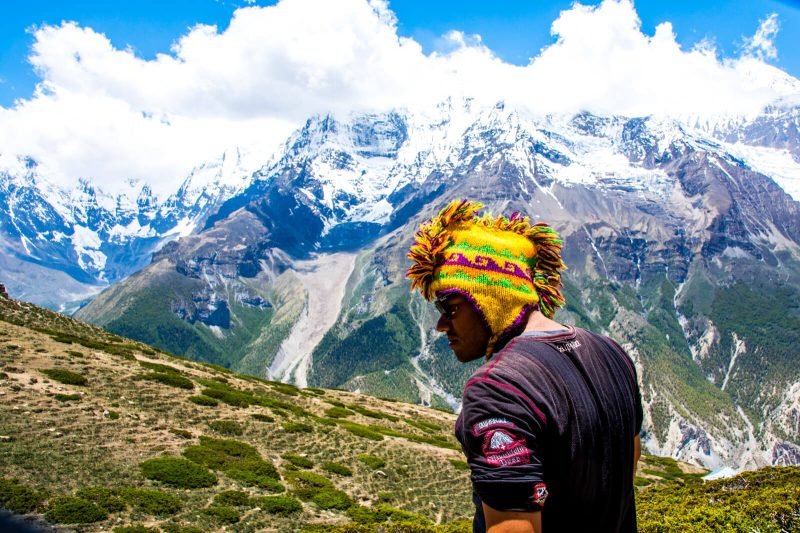
Day 6: Manang to Besisahar (760 m)
My original plan to rush trough the Annapurna Circuit Trek in order to finish in Kagbeni and take a jeep back to Pokhara via Jomsom (complete itinerary included below) had failed and without the privilege of having extra acclimatization days in Manang, I had no choice other than to turn back the very same way I came from.
Luckily, it IS possible to book a jeep from Manang to Besisahar (in theory you can do the opposite by jeep but where’s the fun in that?) for 50 USD, you just need to go to the parking lot at the exit of Manang the day before in order to reserve your seat.
If you’re traveling in low season, you MIGHT have to wait a few days (or pay the driver for a private transfer) and if you’re in a bad weather season the road might be REALLY dangerous for any sane driver to challenge.
And trust me, if you thought the road from Besisahar to Chame was bad enough, the road from Manang to Chame (and then Chame to Besisahar) isn’t really better despite being mostly a straight line so if you have a good responsible driver, be ready to spend close to 10 hours inside a very slowly moving jeep.
After all, safety should always come first so even though I heard it IS possible to be able to catch the last bus from Besisahar to Kathmandu on the very same day you descend from Manang, it is wise to make the assumption that you will have to spend a night in Besisahar and depart to Kathmandu the next morning.
The road from Besisahar to Kathmandu is more curvy than a Mexican Lady so you don’t really wanna drive there by nighttime anyways!

Day 7: Besisahar to Kathmandu (1,400 m)
Finally, it was time for my journey to end and on the long bus ride back to Kathmandu I had time to actually reflect on what happened on that fateful trek from Manang to the Ice Lakes.
You see my friends, there are more important things that pride, hubris and blind ambition…sometimes giving up is the best way to move forwards in order to reach higher goals.
A defeat is nothing more than a motivation in order to win the next time: the mountains might have won this battle but the war is still ongoing.
I have now become the best version of myself that I can be in this specific moment in time and even though this journey ended in a bittersweet note, it has also motivated me to find the endurance to always keep trying and trying even though the first dozen attempts end in a pyrrhic victory.
This 2018 I set myself to goal to embark on as many multi-day treks as possible and even though my Everest Base Camp Trek in Nepal got cancelled due to bad weather, I already made myself the promise to come back this October in order to conquer more mountains of wonders.
Endurance is what will bring you closer to your goals my wonder friends and remember: always aim to be the best version of yourself that you can be.
And I’m proud to say that right now I am.

How to Continue the Annapurna Circuit Trek from Manang Onwards
If you have additional days and you feel comfortable with altitude gains, you can continue from Manang to Tilicho Lake (4,918 m), camp there one night then return to Manang (1 night, 2 days) from which you can continue the Annapurna Circuit to reach the Western Side of it finishing in Pokhara:
- Annapurna Circuit Itinerary Day #6: Manang to Tilicho Lake (4,918 m).
- Annapurna Circuit Itinerary Day #7: Tilicho Lake to Manang (3,519 m).
- Annapurna Circuit Itinerary Day #8: Manang to Yak Kharka (4,035 m).
- Annapurna Circuit Itinerary Day #9: Yak Kharka to Thorong Phedi (4,540 m).
- Annapurna Circuit Itinerary Day #10: Thorong Phedi to Muktinath (3,710 m) via Thorong-La (5,416 m).
- Annapurna Circuit Itinerary Day #11: Muktinahth to Kagbeni (2,804 m).
- Annapurna Circuit Itinerary Day #12: Kagbeni to Pokhara (1400 m) via Jomsom (2,743 m).
However, be warned that THE best views of the Annapurna Mountains Range lie on the Eastern Side of the Annapurna Circuit (Chame to Manang) so adjust your expectations accordingly.

When is the Best Time to Do the Annapurna Circuit Trek
Because of Monsoon season (normally June to August but it can either start earlier or finish later), Summer is definitely NOT the ideal time to attempt the Annapurna Circuit Trek leaving Spring and Fall as the two most popular seasons.
Winter, as it is usual, will be very beautiful because of the snow however some trails might end up being closed so plan accordingly. When I did the Annapurna Circuit Trek it was the end of May/beginning of June and I encountered 0 rain with an amazing visibility during the entire trek.
This year, however, Monsoon started earlier so late Spring is always a risk. My best advice? Do it in the Autumn. You can thank me later!
And yes, I would say that no matter which season you end up choosing, waking up to this view of the Annapurna Mountain Range from my guest house in Manang was one of THE best moments ever.
When exploring a city I can understand waking up at a normal time since everything opens relatively late…but if you don’t wake for sunrise when you’re in the wilderness then you’re doing it wrong.
See you in the Autumn my Himalayas of Wonders!!!

What to Pack for the Annapurna Circuit Trek
No matter how sunny and hot it is during the day, you NEED a windproof jacket (you can buy a North Fake for 15 USD in Kathmandu) in order to be comfortable at night and also to fight off those rare but powerful mountain winds.
Since this was my FIRST multi-day trek I made the mistake of buying SUPER HEAVY trousers thinking that it was going to be always cold. In hindsight, I should have gotten some light rainproof trousers plus thermal leggings, feel free to check out my Torres del Paine W Trek Guide to see how I learned from my mistakes.
When it comes to items to pack, all I took with me for my week on the Annapurna Circuit Trek was a small 25 liter day pack, two walking poles and a tripod (to take photos of myself duh).
What’s inside the bag you ask me? 4 shirts, 6 pairs of underwear and socks, deodorant, toothpaste, toothbrush, my camera and my laptop (workaholic, I know).
No need to pack food since you HAVE to buy it at the tea houses (more on that later) but feel free to bring some chocolate bars or fruits from Kathmandu.
Unless you’re carrying a sleeping bag or a tent (but then again, WHY would you?) there’s absolutely no need for big backpacks that will only slow you down my wonder friends.
During my Annapurna Circuit Trek I even encountered a traveler that had hired a porter to carry her HUGE backpack. What was inside you ask? Clothes, clothes and more clothes!!!
My best suggestion? Leave most of your heavy stuff at Kathmandu (most hotels and hostels can do it for a small fee or even free) and do laundry at Manang (the middle of the Annapurna Circuit Trek) instead of carrying a week’s worth of clothes.

The Free Trehouses of the Annapurna Circuit Trek
Wait, what? Accommodation is free on the Annapurna Circuit Trek? Well, yes and no.
You see, ALL tea houses have an in-house restaurant and the deal is that as long as you buy dinner OR breakfast off them, you get to sleep in their guest house’s dormitory (sometimes even a private room!!!) for FREE.
Each meal will set you back around 5 USD but the portion is going to be so HUGE that you might feel temped to skip lunch altogether and just wait until dinner.
In total, you can do the ENTIRE Annapurna Circuit Trek spending as little as 10 USD per day (plus transportation from Kathmandu to Besisahar to Chame and Kagbeni to Jomsom to Pokhara and 30 USD of the 2 Permits) making it one of the cheapest treks in the world.
The entire Annapurna Circuit Trek is super easy and well marked so you don’t need neither a guide nor a porter so in total you can do the Annapurna Circuit for LESS than 200 USD.
Crazy how some companies can charge up to 1000 USD uh?
Last but not least, don’t forget to use our Booking.com Affiliate Link of Wonders for making hotel reservations in Nepal and all over the world (except in the teahouses of course!!!).
Same price for you and a small pocket money commission for this website of yours.
Sweet deal, uh?
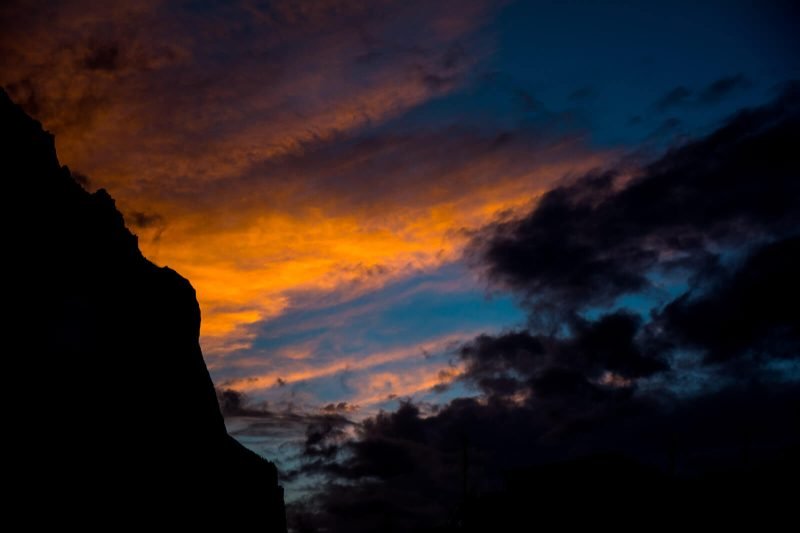
I hope you have enjoyed this article about the Annapurna Circuit Trek. Don’t forget to subscribe in order to get more awesome updates and tips straight to your e-mail!
Have you ever done the Annapurna Circuit Trek? Would you like to? What are some of your best favorite hikes? Share your thoughts and let me know what you think!
Until next time, my friends!
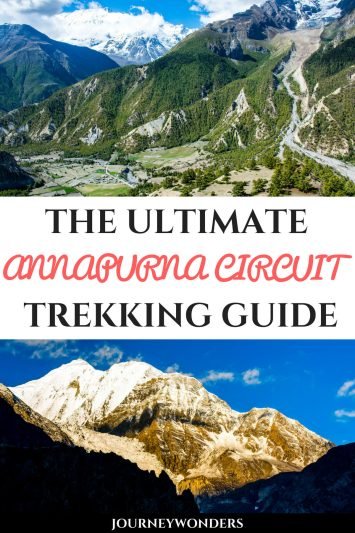

- Why Do you Choose with Us?
- Everest Trekking Routes
- Legal Document
- Term & Condition
- Ghorepani Poon Hill Trek 4 Days
- Ghorepani Poon Hill Trek
- Annapurna Base Camp Trek 5 Days
Annapurna Base Camp Trek 7 Days
- Annapurna Base Camp Short Trek
Annapurna Base Camp Trek
- Annapurna Base Camp Trek 12 Days
- Annapurna Base Camp Trek Solo
- Annapurna Circuit Trek
Mardi Himal Trek 5 Days
Mardi himal trek.
- Khopra Ridge Trek
Annapurna Tilicho Lake Trek
- Jomsom Muktinath Trek
- Australian Camp Hike
- Dhampush Sarangkot Trek
- Ghale Gaun Trek
- Budget Annapurna Base Camp Trek
Nar Phu Valley Short Trek
Nar phu valley trek, langtang trek 7 days, langtang valley trek.
- Langtang Gosaikunda Trek
Langtang Tamang Heritage Trek
- Langtang Valley Solo Trek
- Langtang Ganja la Pass Trek
- Helambu Circuit Trek
- Shivapuri Nagarkot Trek
12 Days Manaslu Circuit Trek
Manaslu circuit trek, short manaslu circuit trek.
- Manaslu Circuit Trek Solo
Manaslu Tsum Valley Trek
- Everest view Trek 7 Days
Everest Base Camp Trek 10 Days
- Everest Gokyo Lake Trek
Everest Base Camp Trek
- Everest Base Camp Trek 12 Days
- Everest Cho la Pass Trek
- Everest Three Pass Trek
- Everest Base Camp Trek 14 Days
- Everest Base Camp Trek Budget
- Everest Base Camp Helicopter Tour
- Phaplu to Everest Base Camp Trek
Upper Mustang Trek
- Upper Mustang Jeep Tour
- Kanchenjunga Base Camp Trek
- Ruby Valley Trek
Rara Lake Trek
Lower dolpo trek.
- Upper Dolpo Trek
- Manaslu Annapurna Circuit Trek
- Arun Valley Trek
- Chepang Hill trek
- Dhaulagiri Round Trek
- Ganesh Himal Trek
- Guerrilla Trek
- Makalu Base Camp Trek
- Manaslu Rupina La Pass Trek
- Rolwaling Tashi Lapcha Pass Trek
- Sherpeni Col Pass Trek
- Kathmandu valley Sightseeing
- Pokhara Day Tour
- Kathmandu Chitwan Tour
- Kathmandu Chitwan Lumbini Tour
- Kathmandu Pokhara Bandipur Tour
- Kathmandu Nagarkot Dhulikhel Tour
- Annapurna Base Camp Helicopter Tour
- Pokhara Muktinath overland tour
- Bungee Jumping in Nepal
- Dhorpatan Hunting Tour
- Family Tour in Nepal
- Helicopter Tour in Nepal
- Mountain Flight in Nepal
Island Peak Climbing
- Chhukung to Island Peak Climbing
Lobuche Peak Climbing
- Dingboche Lobuche Peak Climbing
Mera Peak Climbing
Chulu west peak climbing.
- Chulu East Peak Climbing
- Tent Peak Climbing
- Nayakang Peak Climbing
- Amadablam Expedition
- Pokalde Peak Climbing
- Tourist Visa for Nepal
- Trekking Equipment List
- Jeep Scorpio Rental Service in Nepal
Trekking to Everest Base Camp
Step into the sky: everest base camp trek - where dreams touch the summit, best seller treks.

- Moderate/Hiking

- Moderate/Challenging

- Moderate/Challening

- Challenging/High Pass

Annapurna Circuit Trek 12 Days
- Trip Duration 5 Days
- Trip Grade Easy
- Trip Price USD 390
- Maximum Hight 4000 mtr.
Top Peak Climbing in Nepal

- Challenging/Expedition
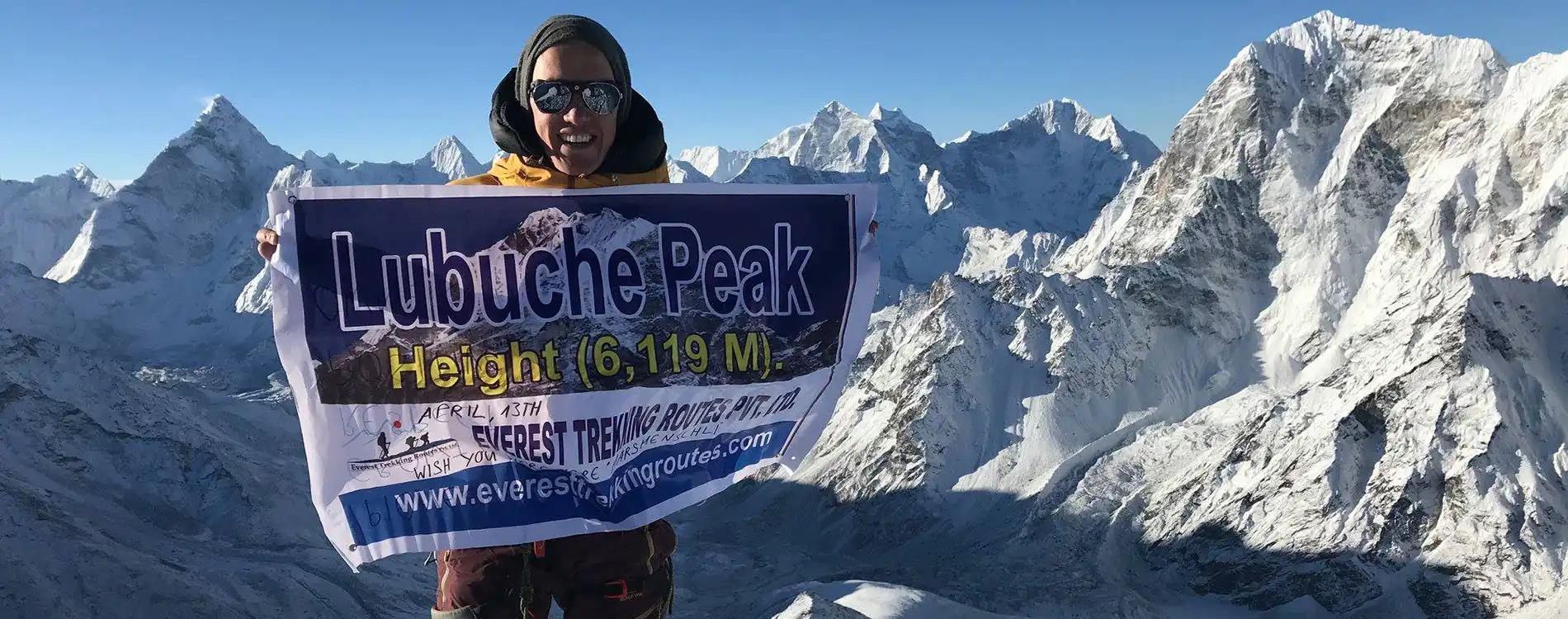
- Challenging

Why Everest Trekking Routes?
We are organizing amazing group, private and tailor-made holidays.
The Everest Trekking Routes Teams are the perfect mountaineering and eco-tourism trained government license holder mountain guide co-operative since 1997 started in the Tourism industry. It is a fully licensed and authorized of Nepal government related to tourism Board Industry is run by a well experienced and equipped team having owned tremendous knowledge on tourism.
- 98% Success Trip Rate
- Local Leader Expert Mountain Guides
- Budget Pricing
- Tailor make trip
Join Upcoming Trips
Make inquiry now and get best deals with share friends, featured holidays in nepal.

- Moderate/High Pass

- Moderage/Hiking

Recent Travel Blog
Travel tips and mostpopular activities around in himalayas. .

Best Times to Trek the Annapurna Circuit
Embarking on the iconic Annapurna Circuit trek reveals an extraordinary odyssey amidst Nepal's captivating landscapes and the majestic Himalayan backdrop. With each season boasting its allure, selecting the perfect time…

Manaslu Trek Nepal
Discover the Beauty of Manaslu Trek in Nepal The Manaslu Trek in Nepal is a journey that unveils the raw, unfiltered beauty of the Himalayas while offering a cultural tapestry…

Upper Mustang Trek Cost
The cost of the Upper Mustang Trek can vary depending on several factors such as the duration of the trek, the trekking season, the services included in the package, and…


Travel Guides & Tips
When is the best time to visit annapurna circuit trek.
Annapurna Circuit Trek is one of the best trekking trails in the Annapurna region of Nepal.
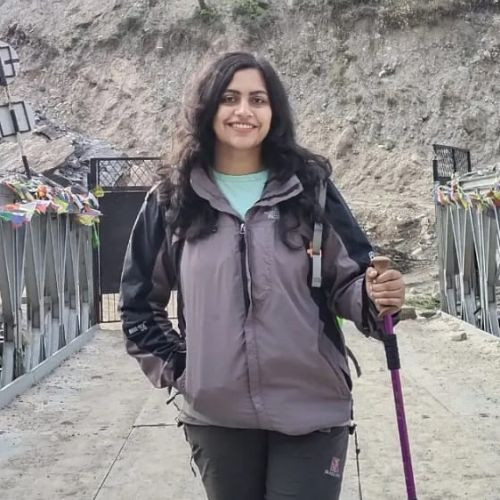
Located within the biggest conservation area of Nepal, Annapurna Conservation Area, and one of the most beautiful circuits of Nepal is the Annapurna Circuit. Composed of unique and beautiful flora and fauna, numerous gorgeous landscapes as well as the mindblowing natural features, along with the wonderful and authentic lifestyle of the local people, Annapurna Circuit is a series of wonders and is considered one of the most beautiful circuits to visit and trek in for the adventurers, nature- lovers and as well as the adrenaline seekers. The Annapurna circuit is one of the most beautiful places to visit, and it is home to some of the best high-altitude trekking.
Annapurna Circuit Trek has been one of the most remarkable and one of the oldest treks that have been very admired by the people of the world. It is by far one of the most wonderful treks that one can ever imagine. The wonderful sceneries that one can look at while doing the trek are just breathtaking. The Annapurna Circuit trek is made up of a variety of magnificent sights, including deep gorges, harsh high mountain passes, Buddhist temples, picturesque farming communities, and all the major peaks in the Annapurna Massif. All these beautiful features and enthusiastic places within the Annapurna Circuit attracts thousands of visitors from around the world and is one of the most legendary trekking routes in the world.
The enthusiastic adventurer seekers can complete this beautiful trek ranging according to their pace of walk and the total places they want to cover in this journey. The itinerary can be made from 21 days to 14 days to 10 days and also to 8 days. According to the places and the preferences of the tourists, they can visit and complete the marvellous trek within the Annapurna Circuit Region.
Beginning from Besisahar and reaching the highest pass at 5416m which is the Thorong La Pass, coming across and visiting different marvellous places such as the beautiful valleys of Manang, Mustang, Jomsom, Tatopani, Tilicho Lake which is the magnificent lake situated at the highest altitude in the world, Annapurna Circuit Trek is a beautiful plethora of surprises and one of the best treks one could ever experience and ask for. It can definitely be one of the treks that one should explore once in his/her lifetime.
Table Of Content
Annapurna circuit facts, best season to visit annapurna circuit trek.
Annapurna Circuit Trek is one of the most diverse trekking routes of Nepal. Every new place that comes throughout the trek brings new excitement and thrill to the journey that you are doing. Annapurna Circuit Trek. Moreover, the season in which you are trekking or traveling to the Annapurna Circuit also differs depending on your type of experience in the circuit and the weather changes that you will be experiencing. The season brings a variety of changes to the nature and lifestyle of the people.

Likewise, changes in season also bring changes in the weather within the circuit, local lifestyle of the people, flora and fauna, nature, and so on. Mainly, the peak and the most accessible & preferred seasons to visit Annapurna Circuit Trek are Spring and Autumn seasons but every season holds its own significance. Hence, the following seasons highlight the changes in the different factors in the Annapurna Circuit Area and the trekkers have to plan for different things according to the different changes in the seasons. The seasons are as follows:
Spring Season
The Spring Season is one of the most breathtaking and lovely seasons of all. The Spring season depicts the blooming of gorgeous flowers, the creation of fresh floras, and the crystal clear blue skies that put a person in a good mood right away. Talking about the context of the Annapurna Circuit trek in the spring season, it is one of the most admired seasons and about 25-30 % of the tourists trek towards the Annapurna Circuit in this season. It's when there is no or little rain, the weather is moderate i.e., and it's not too hot or cold (but it will be chilly at higher elevations.) It's also when you can trek and enjoy the eye-catching landscapes of the different fascinating places within the circuit.
The Annapurna Circuit's spring weather is pleasant and clear. And provide a distinct view of the mountains and terrains. It's also a good time to visit across high passes since the weather is nice and clear.
The mild winter, and spring season, which lasts from March to May, is another lovely season for hiking on these routes. It's the next finest opportunity to go traveling. The days grow warmer, and the national flower of Nepal, the Rhododendron, begins to bloom, turning the trek into a brilliant and luxurious experience. During the spring, therefore, Himalayan vistas are even more spectacular for spectators.
At this time of the year, the flora is in full bloom. At lower elevations, the Rhododendron is more common. Other wildflowers provide a variety of colors, and pine forests at lower elevations will be fragrant and new.
Spring is a time of vibrant colors. The hills and wooded paths are dotted with wildflowers and rhododendron blossoms.
The scent of fresh air, which mingles with the fragrant bloom of nature, is invigorating. Clear blue skies with frequent white and low clouds create mirage effects on the sky. Weather is typically consistent for a long period of time. There are very few possibilities of snowfall or rain in the Annapurna Region during Spring.
The magnificent vistas of Himalayan ranges, valleys, hills, and mountains will amaze you. After the winter comes the season of spring. The creatures and plants in the region rejuvenate after their winter rest during Spring.
The weather that occurs in the early springtime is known as winter weather. You will experience winter weather during the Annapurna Circuit trek from early March. In the first half of the season, it's typically colder. Early Spring trekking to the Annapurna circuit isn't certain to provide clear skies and pleasant weather. On this route, you may encounter some snowfalls during this period.
During the middle of spring (late March to late May), Annapurna is cool and comfortable. While this is going on, the region heats up considerably by day. This is an excellent time for trekkers who don't want to be cold. The flora and fauna are also more active now because of the warming climate. This is the ideal time to go on a trek along Annapurna Circuit in Spring.
The Annapurna circuit is frequently hotter during the late spring. You could even encounter a few amounts of rainfall as you trek lower into the foothills. When Spring approaches, the frequency of rains increases. There's also a chance of seeing storms.
Summer Season
Summer and Monsoon come side by side in the Annapurna Circuit. This means in the Summer, the Annapurna area will be both hot and wet at the same time. In the Annapurna region, you may anticipate frequent rains throughout Monsoon. The summer season is the hottest in Nepal, but it's also the rainiest due to the monsoon. In the summer season, you can expect plenty of rainfall at times for several days.
In the rainy season, it generally rains at night and continues until the next morning. The trails in the rainy season become soggy and slick as a result of frequent rain. Also, due to monsoon rain, water levels in rivers streams, and waterfalls rise. Instead of benefits, there are several more drawbacks during the monsoon season.
In the rainy season, trails are frequently washed away. In certain regions, you can expect rockfalls and landslides. The most hazardous period of the monsoon or summer season is when landslides become extremely perilous. Avalanches are also a problem. The routes in the lowlands or higher elevations are muddy and slick, either by any means or route.
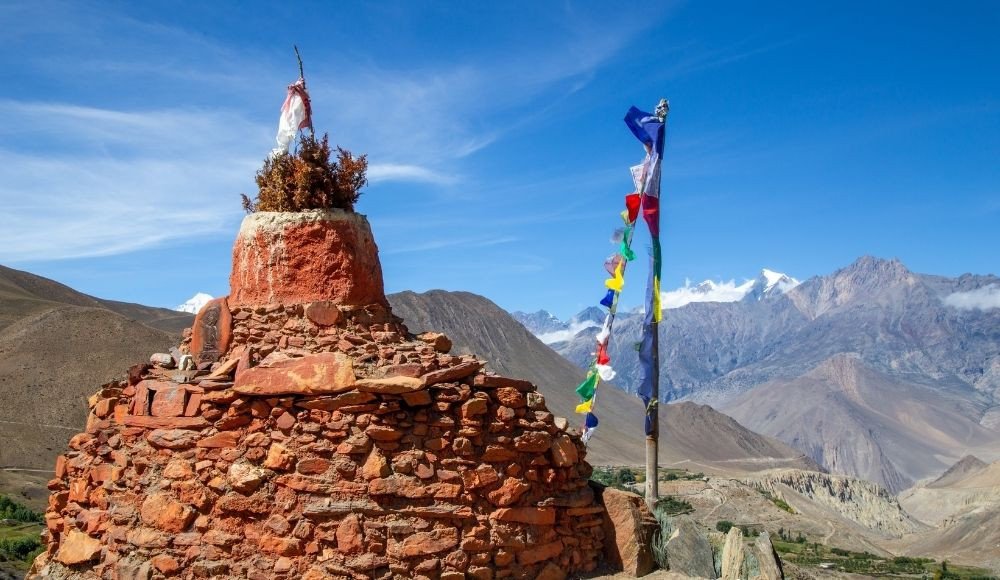
There are several possibilities of receiving leech bites while trekking through the jungles. On the paths, mosquitoes and leeches coexist. It's a good idea to bring some insect repellents with you on your trip.
The stunning vistas are not visible, and due to the weather being overcast and hazy, you may miss out on seeing and experiencing some amazing places. Monsoon season can be an exciting and thrilling month for those who want to go on a journey through nature's full force. The Annapurna Mastiff can also be found in the rain-shadow region of the Annapurna range, including Manang, Upper Mustang, and Muktinath. These regions receive little or no precipitation throughout the year, making them ideal for tourism at any time of year. The number of trekkers is also smaller, making it one of the benefits for people who don't want to be rushed and prefer to go at their own rate.
The rain may surprise you with what nature has to offer. You could be fortunate enough to witness the surrounding forests, rivers, gorges, and waterfalls in their entirety. You'll also see the blossoms of lovely wildflowers that decorate the Annapurna region side.
Winter Season
The Winter Annapurna Circuit Trek isn't as well-known as other seasons, such as Autumn and Spring. Although each year has its own unique set of weather conditions, winter is the coldest period of the year in the Himalayas according to data. The temperature at the Thorong La Pass, which is the highest point of the Annapurna Circuit, is extremely low. As a result, the pass gets covered in snow. Because the pass is trapped within enormous drifts of snow, it remains inaccessible for trekking.
Snowfalls are frequently accompanied by severe blizzards. The residents of higher altitudes migrate to the lower elevations to escape the bleak winter due to the extremely cold, chilling, and unpleasant climate. The temperature becomes considerably colder with height, as can be observed in the lowlands.
The colder the temperature, the greater your adventure will be. Although temperatures during the day are usually above zero, this is not always the case at night or early in the morning when the sun has yet to rise. There are several difficulties to be aware of during the winter season. It does not rain very often, but there's a good chance of snowfall. It is possible for it to snow so much that certain routes will be blocked. Another problem is that not all of the tea houses are open during the winter, many individuals migrate to lower elevations, necessitating a more careful trek in this period.

The principal thing to remember is the safety of the Annapurna Circuit trek, which is very chilly during the winter and quite hazardous due to frequent snowfall and other reasons. Because of the cold and snow, some of the major passes and higher regions like the Upper Mustang and high passes are shut.
However, there are also pros to the cons which include – in the winter, the scenery is breathtaking, and there is no snow to obstruct the view. Spectacular panoramic vistas are visible. In the chilly winter in the Annapurna Circuit Region's High altitude, you will encounter many adventurer seekers who enjoy the thrills and beauty of nature. In the higher reaches of the trip, you may see magnificent white, snow-covered mountains and nearby hills.
Autumn Season
The magnificent and relaxing vistas of the Annapurna Circuit are most appreciated during the Autumn season. Trekkers move to the Annapurna region in this period to walk on popular trek routes like Annapurna Base Camp Trek, Annapurna Circuit Trek, and others.
The year's most constant weather and temperature situations occur during the autumn months. The sky is usually clear, bright, and sunny. The surrounding environment appears to be beautiful and enticing to the eye. The weather is usually excellent, and there are few days when it's truly dark in the evening. Even during the nights, the sky is clear, making Autumn a fantastic time to stargaze.
The chances of rain are essentially zero during the Autumn season. You will enjoy a tranquil atmosphere while walking through the magnificent pathways of the Annapurna Circuit. The trails are not dusty, and the views are limitless. You'll get to discover a whole new section of breathtaking vistas while hiking them. The Annapurna Circuit is a trek through the Himalayas that takes you by stunning scenery painted on an indigo backdrop.
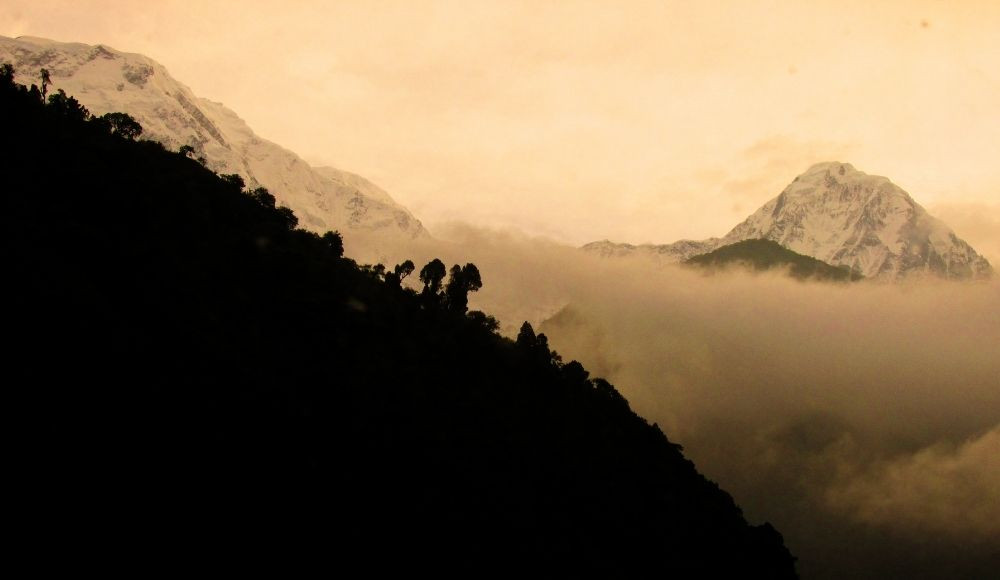
Despite the fact that it becomes chilly at high altitudes, the temperature is pleasant and never uncomfortable. However, the number of trekkers is overwhelming, forcing all available teahouses, restaurants, and lodges to fill up. Because of the aridity in this season, you will not see the lovely flora blossoming as they normally do along the Annapurna Circuit Trek.
When the number of tourists and trekkers begins to rise, so will the prices.
However, when you reach the Annapurna circuit - blue skies, picture-perfect views, lovely pathways - everything else drops from your mind. You may see the surrounding areas, hills, rivers, and gorges at their extremely best.
Best Months to Visit Annapurna Circuit Trek
The Annapurna Circuit Trek is a journey of contrasts, featuring breathtaking natural attractions, awe-inspiring vistas, stressful climbs, and breathtaking views. It's one of the most popular treks for tourists and trekkers from all over the world - both domestic and foreign. Thousands of trekkers go to the Annapurna Circuit Area to see the stunning and magnificent views, as well as explore the beautiful Himalayas and snow-capped mountains.
Trekkers depart in various months in order to visit the magnificent Annapurna Circuit based on their preferences. Each month brings new capabilities, weather, and a different environment to the Circuit.
As a result, the Annapurna Circuit Area features the following twelve months and their various characteristics.
January
The month of January, the second month of Winter, is one of the coldest months in the year. In higher latitudes, the daytime temperature falls between 1⁰C and -8⁰C.
The nights are even more chilly. The temperature on the lower Annapurna Circuit Trek ranges from 8°C to 12°C. Because of the chilling temperatures, Annapurna trails are less crowded. January is ideal for those who like to relax, since they may enjoy the calm routes. Due to the off-season, it is easy to locate accommodations.
During this month, the days and mountain vistas are obvious. It's a wonderful opportunity to take in the spectacular surroundings. The days are shorter, while the nights are longer. You may also see a breathtaking view of billions of stars. To remind you that Thorung La Pass's higher elevations are off-limits to tourists. As a result, you'll have to verify the Annapurna Circuit's weather and terrain before going.The weather in higher regions is extremely variable. The higher regions are generally below 1°Celsius. Because of the cold, most mornings and evenings are too chilly to be out. As a result, you'll need appropriate clothing for this trek in the winter months.
The first few days of February are the coldest weeks of the year. It's quite chilly, with negative degrees Fahrenheit temperatures. There will also be snowfall. Spring begins to show itself in mid-February. During the early weeks of February, there are indications of cloudy days. The snow-capped mountains and hills may be seen during the clear days.
By the middle of February, temperatures begin to rise. You may get all of the advantages of spring without dealing with the crowds. This is a month when you can enjoy the peaceful and quiet aspect of the journey. The temperatures begin to rise in mid-February. You may take advantage of the benefits of spring without having to deal with the crowds. During this month, you may enjoy the calm and quietness of the journey.
The first month of the most pleasant Spring season, March, is a fantastic time to visit Annapurna Circuit. It is the time of the month when flowers and grasses bloom. The hills and fields are typically thick with rhododendrons and oaks. The atmosphere is gradually warmed during the winter, allowing it to depart.
In a temperate climate, there is a low possibility of snowstorms and showers. In early March, you may witness the last of the snow along the path. The winter gradually leaves the atmosphere as the area warms up. There are few prospects of snow and rain in a moderate climate. It is one of the better times to appreciate the Annapurna Circuit's full range of biodiversity.
The temperature in the bottom section of the Valley is about 4°C to -8°C during the day. The daytime temperatures are predicted to be around 4°C to 6°C at higher elevations, but they can reach 10°C or more during midday. Because nighttime temperatures may drop below freezing, you'll need to dress warmly. March's weather is ideal, with snow-capped mountains and flower-covered forests as a backdrop.
Moreover, the vistas of snow-covered mountains and flower-covered woods make March's weather very pleasant.
In April, the captivating spring continues to dominate. It's another high season for doing the Annapurna Circuit Trip. It's easy to trek on the lengthy pathways of the Annapurnas due to the bright sunshine in the clouds. There are great views of the wonderful Annapurna Circuit all around. As a result, the paths are thick with hikers. The entire mountain range is enveloped by beautiful vistas.
The highest regions have an average temperature of -5°C in April. The lower areas, on the other hand, are significantly warmer, with a typical temperature of 20°C. As usual, the nights are significantly chillier. As a result, it's good to bring warm clothing for this time of year.
The weather is ideal for trekking during this time of year. You'll be able to appreciate beautiful views and a fulfilling trekking experience as the weather is quite dry. You'll also get to discover beautiful fauna and a variety of wildflowers blooming during this period. For trekkers heading to the Annapurna region in April, it's a stunning paradise.
The last month of the Spring season might be characterized by mild temperatures. In higher areas, the usual temperature is around 13°C to 0°C. The temperature at the ground is between 17°C and 21°C, which is a good walking temperature. The month of May is the most sultry of all the other spring months, with an average temperature of 4⁰C at night.
In this month, the coldest area on the circuit is Thorong La Pass. There may be fog or clouds around the mountains to obstruct the vista. With those facts in mind, May is typically a very dry month. Only a few rainstorms are anticipated at the end of May. As a result, it's essential to bring waterproof jackets, raincoats, boots, and pants when going trekking in May.
You'll have a chance to explore the untouched views of mountains, picturesque views of the Himalayan ranges, wild and green vegetation, as well as lovely flowers blooming along the Annapurna Circuit Route. The spectacular sunrise and sunset views from the slopes of the mountains will be yours to enjoy. It's more significant for trekking enthusiasts.
This month brings the starting phase of the Summer Season, which is also known as the Monsoon or Rainy Season. The temperature in the monsoon season is generally around 15°C to 28°C. The higher region temperature, on the other hand, hovers around -2°C to -4°C. It's a rainy time of year. The pathways are wet and muddied. However, owing to the rains, the higher regions of Upper Mustang and Manang have remained intact.
The weather during this month is unpredictable, as the rain can fall at any time and for an extended period of time. As a result, the trekkers do not consider this period to be the trekking season.
Despite this situation, many adventure seekers and travel junkies go trek the loop in April. They arrive with all of their necessary gear to keep them dry.
One of the benefits of trekking in this season is that the path is less crowded. There are plenty of active waterfalls and rivers where you may take advantage on them. Due to fewer visitors and trekkers this month than in previous months, the cost factor will be very inexpensive for you since it is in the off-season.
July is the wettest month of the year. The region gets slightly chillier because of the rain, with temperatures ranging from around 17°C to 5℃. Temperatures are approximately 13℃ on average.
The July and Monsoon seasons are characterized by persistent rainfall due to the wind. During this month, the rains come in and obscure the mountain views. There's no assurance of spectacular mountain vistas. Leeches and mosquitoes are common in the trails of the lower sections during the monsoon. The days are usually rainy and damp, therefore trekking requires waterproof clothing, boots, and pants. It is not necessary to put on a lot of warm clothing, and even a few warm ensembles may suffice for both day and evening temperatures.
In this month, food and lodging are both less expensive than in previous months. You may take in the beautiful vistas of the mountains and countryside while relaxing on the veranda. Because there are fewer tourists at this time of the year, special attention and care are provided.
The ending days of the Monsoon season falls on the month of August. The clouds continue to rain down on the ground, making the region chilly and damp. Temperatures remain about the same as they were in July. The temperature begins to rise, reaching approximately 18°C to 23°C.
There can be some periodic landslides and erosion, which might block the pathways. The routes are muddy and slick, making it difficult to walk along. Rain clouds never leave this region throughout the month, so mountain views are not fixed to appear. The downward section of the trek, particularly in comparison to higher regions like Manang and Jomsom - Muktinath areas that are under the rain shadow, receives a lot of rainfall.
Trekking in the rainy season is difficult, but with appropriate safeguards and planning, it is safe and daring. As a result, it's critical to bring the proper rain gear on your trip this month.
September marks the starting of the autumn season which also indicates starting of the peak season when the maximum number of tourists come to visit the marvelous Annapurna Circuit. Every day, the weather grows brighter and clearer as autumn approaches. However, during the first few weeks of September, light showers will fall. By mid-September, the monsoon will be over.
It is from the mid-month Autumn that marks its arrival by making nature crystal-clear. With the rain gone, the temperature starts to fall around 17⁰C to 4⁰C. Thorong La Pass (5416m), the highest reach of the trek, has the daytime temperature near -4⁰C.
The vegetation is, however, completely soaked by monsoon rains and greenery everywhere. You'll take pleasure in the clean and unobstructed territorial vistas. The days are getting longer, and the weather starts to improve. The skies are all clear during late September, and days are bright enough to stroll on.
Besides that, the best time to visit the circuit is in September, when the Annapurna Circuit becomes the most gorgeous. Everything is visible and pleasant including the mountains, rivers, waterfalls, and all the other mindpleasing natural beauties stand out.
It's no surprise that October is a great month to trek on the Annapurna Circuit after the monsoon and second month, which marks the fall season. In October, we can see the climate's stability and accuracy without any or minor rainfalls. No clouds are in front of the mountains throughout the month, providing spectacular mountain views. Due to the warmth and brightness of the weather, the trails are simple to walk on.
The trekking routes are simple and more lovely. The trails are drier and simpler to navigate in the non-monsoon months. Snowfall on the pathways is also extremely rare. October is recognized for having consistent weather as well as cleaner air. You will be able to see stunning and breathtaking vistas of the region, lakes, gorges, and the Himalayas. The weather is unpredictable, so you don't have to worry about it interfering with your trip to the beautiful Annapurna Circuit. October is a quiet and wonderful time when you can enjoy beautiful views of peaceful places.
The cool air rises in a clockwise direction, and the warm air sinks in an anti-clockwise manner. The average day temperature is approximately 15°C at the bottom of the circuit. Temperatures are much colder at the top of the circuit than at its lowest reaches. It is quite chilly during early mornings and late nights.
The temperature at higher altitudes is lower during the days of October, whereas it is greater on the evenings. On nights, temperatures drop below 7⁰C to 8⁰C. The Thorong La Pass is colder than all of the other locations on the route. As a result, it is advised that you bring along multiple warm and thick clothes in your backpack.
The streams and waterfalls provide a beautiful backdrop to the rather chilly mountain environment. The pathways are lined with spectacular flora such as Rhododendron, Pines, Oaks, and Fauna including leopard, Himalayan goat, tahr, jackal.
October is a pleasant and sunny month when people from all over the world come to witness and inspect the untouched vistas of the Himalayas. As a result, the Annapurna thrives with many tourists in October because to that.
The end of the Autumn season and the commencement of the Winter season on November 1st in Annapurna region. November is an excellent month to go trekking around the Annapurna circuit since there is a smaller chance of rain, hazy skies, and snowfall. During November, the weather is usually clear, allowing you to enjoy stunning views of the Himalayas such as Mount Annapurna, Mount Dhaulagiri, Mount Macchapucchre, and numerous other peaks.
During November, the average temperature drops to 2-4 degrees Celsius in these areas.
November's weather and conditions are almost identical to those of October. The brilliant blue skies and warm sun are still visible on November days. There is no such indications of rain or snowfall, making it a simple month.
November is a great month to visit the Annapurna region, since this is when the area's species diversity blossoms. During November, which is one of Nepal's peak trekking months, you may expect to see a wide variety of flora and fauna on the trails leading to the Annapurna Circuit.
It's all fine until late November, when the weather grows colder. So, in this month, you must wear warm thick thermal clothing.
However, due to their popularity, many teahouses and accommodation become packed, forcing you to deal with the problem of room unavailability.
The first month of the Winter Season is December. The Annapurna Circuit's winter season is the coldest. Under a sky clear blue, the mountains are blanketed with snow. Winter is the driest time of year, which means there will be no or little rainfall.The average daytime Annapurna Circuit temperature drops to around 10°C to 5°C during this month. The night temperatures drop as low as -5°C in certain regions. During this month, the weather is tolerable at the beginning of the month. The weather begins to freeze during the final days of this month.
The Annapurna Circuit trek in early December will not present you with any severe difficulties. As a result, you will be able to experience the winter wonderland along the route. December is also when many of the trails are empty, making for a peaceful and quiet holiday in the Himalayas.
In the end, you'll be treated to a stunning view of the snow-covered mountains and sceneries. The trek offers thrilling icy falls, glacial valleys, and snowy glaciers that make it more exciting. The spectacular views of snowy peaks and constant weather conditions are the main attraction of this trip.
Snowfall can occur at any time of the year due to the cold temperatures. Snow makes the trails more difficult to traverse. During the winter season, it's tough to trek this route because of snow. As a result, you'll need all of your winter wear throughout this month's trip.
The Annapurna circuit can be done at any time of the year, but trekking it in late December is more difficult because the weather gets worse and the temperature drops significantly. You may come across significant snowfall. As a result, it's usually advised to only trek the Annapurna Circuit in early December.
Best time to visit Annapurna Circuit Trek
The beauty of nature can be felt on Annapurna Circuit Trek. From beautifully carved mountains to lush forests, there are many different places that one might find while taking this trekking journey through the unique culture in Nepal! If you're interested in seeing local festivals and experiencing unique cultural traditions then I would recommend visiting the beautiful Annapurna Circuit trek during the festive seasons periods because it will allow you to explore new things in your life and it might be a beautiful memory which will be captivated in your heart forever.
In this beautiful land of cultural and ethnic diversity, you will see the local people on the lower regions of the Annapurna trail, rejoice Dashain and Tihar, two of the country's most significant festivals.
Ascending towards the higher altitude of the Annapurna Circuit trek, you will witness diverse and distinct cultural traditions and lovely Buddhist ceremonies, as well as different unique festivals.
The Yartung festival , which is held with much fanfare and joy by the people of Lo Manthang, is one of the distinctive festivals. They ride horses, dance, and sing together in a colourful display of culture and customs that becomes an unforgettable experience for visitors to the region during The Yartung Festival season. The most fascinating aspect is the Horse Riding Festival, where people ride horses and participate in horse riding games while wearing traditional clothes. You may witness and rejoice in the event by donning indigenous clothing. It would be a wonderful memory to treasure for the rest of your life. The celebration is held when summer comes to an end.
There is also Chame's famous Archery Festival , which takes place in April and May. You may play the game, participate in it, and enjoy the lovely and magnificent festival.
The Toran-La , which takes place in March, is a wonderful celebration. This festival is one of the most important festivals for the Thakali people and their forefathers are remembered and chronicled throughout the event. The Thakali New Year is also observed at this time.
The monks prepare for the Dhekep celebration by donning masks and performing their own distinct dances, which is an interesting experience you can examine while trekking the Annapurna Circuit. The people of Marpha, Syang, and Tukche villages of Mustang come to the celebration in great splendour and delight.
Lha - Phewa is another stunning festival that takes place once every twelve years. The people of the Larjung and Kobang regions of Annapurna Circuit commemorate and respect their forefathers on this day by doing various religious rituals and norms, as they come together to remember and venerate them. If you're lucky enough to go at the precise hour of the festival, which happens every 12 years, you'll be able to witness this remarkable ceremony.
There are many other wonderful festivals that you may visit throughout the year and at different times of the year. Lhosar, New Year, and Buddha Purnima are among them.
The Annapurna Circuit can be explored from a religious, cultural, and festival perspective. You will be astonished and intrigued by the local cultures, customs, and way of life. The festivals are an entertaining and observational method to display their distinct culture throughout the Annapurna Circuit.
Related Article: Annapurna Circuit Tilicho Lake Trek
Difficulties during Annapurna Circuit Trek
There are different difficulties that might occur to you while doing the Annapurna Circuit Trek. The different difficulties are as follows:
Inclement Climatic Conditions
One of the difficulties that you can face while ascending the Annapurna circuit trek is the inclement climatic conditions. The climatic conditions will not be the same and moderate as always and sometimes lead to unavoidable circumstances such as extreme cold or wet conditions resulting in heavy snowfall and snow blizzards and many more. Trekking in inclement weather might be a deterrent and ruin the optimum trekking itinerary. It may also put people's lives in danger. The Annapurna Circuit trek should be undertaken during the proper season, taking into account the forecasts and season favorability.
- The difficulties in the trail's visibility are continuous.
- Extreme tiredness and fatigue when climbing higher altitudes and carrying more equipment than usual.
- The reduced ability to keep warm, such as melting snow for water or dampening clothes for warmth.
- The cold and dampness might cause hypothermia, which can be fatal.
Altitude Sickness
Altitude Sickness is another major difficulty that might occur to you while trekking the Annapurna Circuit. It is a type of sickness that occurs to almost everyone who ascends toward a higher altitude. There are different ranges of altitude sickness. Common symptoms such as headache and nausea occur to almost everyone but if the symptoms worsen and start to develop, then it may lead to different fatal circumstances and in the worst-case scenario, lead to death also. The two types of extreme altitude sickness are
- HAPE (High Altitude Pulmonary Edema): Fluid accumulates in the lungs. Symptoms like Breathlessness, Dry cough, Pink or rusty spit, Blue lips/nails/face, Tiredness to a high-level, Low fever, Gurgling breath and drowsiness occur.
- HACE (High Altitude Cerebral Edema): Fluid accumulates in the brain. symptoms like Severe headache, Vomiting, Loss of balance/ coordination, Lethargy, Blurred vision, Slurred speech, Confusion, Behavior in change, and seizures occur.
Trekking Difficulties
It is the next difficulty that mainly the beginners might face referring to all the conditions related to trekking. The walking pace and the need to acclimatize and sustain according to the local climatic conditions are some of the difficulties that one might face while trekking.
In some places, such as the hazardous landslide areas, it might be difficult in those areas to trek efficiently as the trekking trails might be difficult in many paths of the Annapurna circuit. For the experienced, it might not be so much difficult, but for the beginners, it is strenuous for them.
Due to the different climatic conditions along the Annapurna Circuit, visibility might be low, the trails might be covered with a high amount of snow in the case of winter, and in the case of monsoon, the threats of landslides and slippery trails are always there.
Hence, it is necessary to carry proper trekking gear, not to make the excess burden on the backpacks, and acclimatize yourself properly in order to make your trek to Annapurna Circuit a favourable and memorable one.
Health Issue
Health issues are the major things that one should take care of while trekking toward the Annapurna Circuit. If one is not in a stable health condition to trek or ascend towards the higher altitude, then it is best to travel towards the lower region of the Annapurna Circuit rather than ascending to the higher regions for their own health safety. It is best to prevent than face negative circumstances later on.
Related Article: How Difficult is Annapurna Circuit Trek
Packing List Suggestion
One of the important things to keep in mind is about making an effective packing list and doing the essential packing according to that. While packing the essential gear, we should keep in mind the number of days we are travelling and where & when we are travelling. It makes us easy to carry the essential equipment for us such as clothes, trekking gear, type of other necessary equipment.
To remove the extra burden, it is advised not to carry excess things in the backpack such as tents and other culinary equipment with you as we can get all the basic facilities within the Annapurna Circuit. You can carry light snacks and chocolate bars with you to have while trekking through the circuit and they are also available almost everywhere throughout the circuit.
To get more detailed information about the trekking gear checklist, you can check Nepal Trekking Gear Checklist and get all the detailed information about what to carry in your backpack.
Related Article: Annapurna Inner Circuit Trek
Frequently Asked Questions
The best season to visit Annapurna Circuit is Spring and Autumn seasons. These seasons are moderate and calm which provides perfect timing for the adventure seekers to visit Annapurna Circuit.
March, April, May, September, October and November are the best months to visit the Annapurna Circuit. These are the months when the weather is calm, nature is at its fullest when beautiful flowers including rhododendron bloom along the way and making the Annapurna Circuit one of the most admired places to visit.
Yes, you can trek the Annapurna Circuit in the rainy season. But, there might occur many difficulties such as frequent downpours, and slippery and muddy trails which lead to inconveniency in trekking as well as there is the risk of landslides which may lead to various unavoidable risks. With proper gear and safety, we can trek the Annapurna Circuit in the rainy season.
Yes, it is possible to cross the Thorong La Pass during winter if there is no heavy snowfall happening. In case of very heavy snowfall, then the plan of crossing the Thorong La Pass should be skipped.
There are different festivals happening in the different months of the year. Hence, according to your preference, and what type of festival you want to observe, you can visit the Annapurna Circuit.
It is generally during the off-seasons that you will find a cheaper price for all the facilities in the Annapurna circuit. Because, in off-seasons, the number of guests will be low due to which the service providers will take less charge on food and accommodations as well as on other services.
The permits needed to visit through the Annapurna Circuit are:
ACAP (Annapurna Conservation Area Permit) and TIMS card (Trekkers Information Management System)
Certainly, we can. Under the clear blue sky of the beautiful Annapurna region, we can gaze through the billions and billions of stars and enjoy the beauty of the universe. Stargazing is mainly appropriate in the months of Spring and Autumn when the sky is clear and the weather is moderate.
Even though you may get leech bites along the trail mainly in the monsoon season, the leech bites are harmless. If you sprinkle salt, they will automatically roll down and you need not worry so much about the bite.
Yes, Wi-Fi facilities are available in the teahouses and lodges. But you might have to pay an extra charge to get the facility in the Annapurna Circuit Trek.
Yes, the Annapurna Circuit trek is safe for solo trekkers. The local people welcome the trekkers with great enthusiasm and provide them with wonderful hospitality.
BLOGS & TRAVEL STORIES
our first-hand Himalayan travel experience
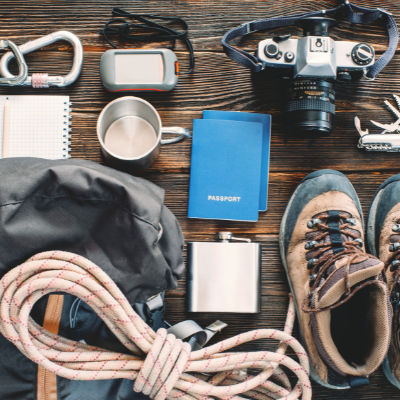
Culture and Festivals
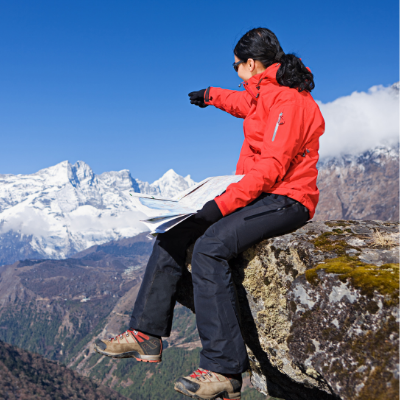
Travel Stories
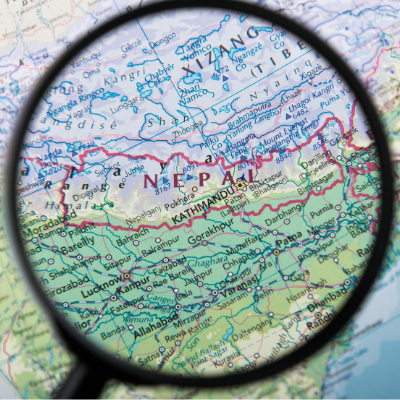
Latest Travel News
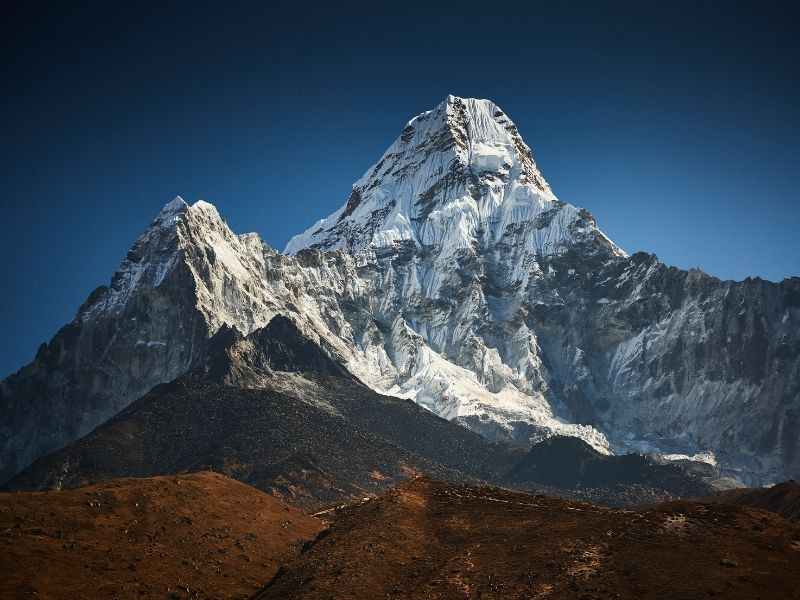
Mount Everest Region
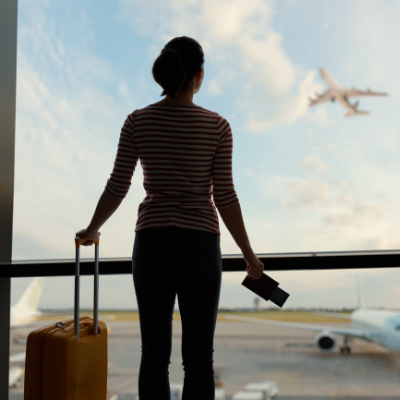
World Heritage Sites
Cookies & privacy policy.
This website uses cookies to improve your experience. Learn More
I'm hiking Nepal for 3 weeks, do I trek Everest Base Camp or Annapurna Circuit?

Feb 22, 2024 • 3 min read
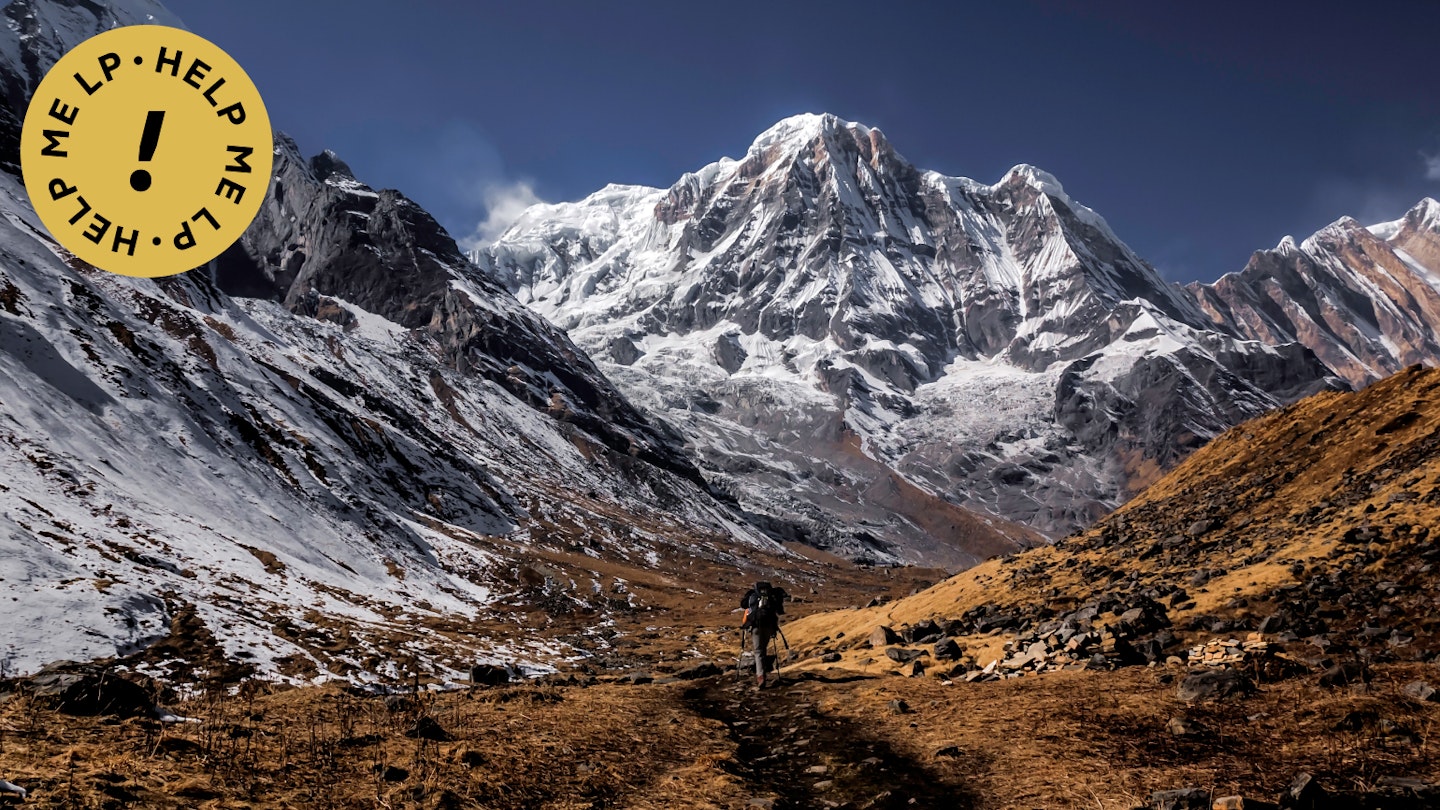
We can help you choose between the Everest Base Camp and Annapurna Circuit treks in Nepal © Russ Nordstrand / 500px
Himalayas specialist Bradley Mayhew, who writes our guidebooks to Nepal, Bhutan and Tibet, answers a question about trekking routes in Nepal.
Question: I have three weeks planned for trekking in Nepal and I can’t decide between the Everest Base Camp and Annapurna Circuit treks. Can you help?
Answer: Ah, so many trails in Nepal, so little time…
Firstly, the Annapurna Circuit and Everest Base Camp treks have some things in common. Both offer excellent lodging in hundreds of trailside teahouses and an infrastructure of shops, bakeries, wi-fi and guides that makes for easy logistics. Both have world-class mountain scenery in valleys flanked by some of the world’s highest peaks, both require acclimatization to altitudes of over 5400m (17,717ft) and both are packed with trekkers in the high season months of October, November and April.
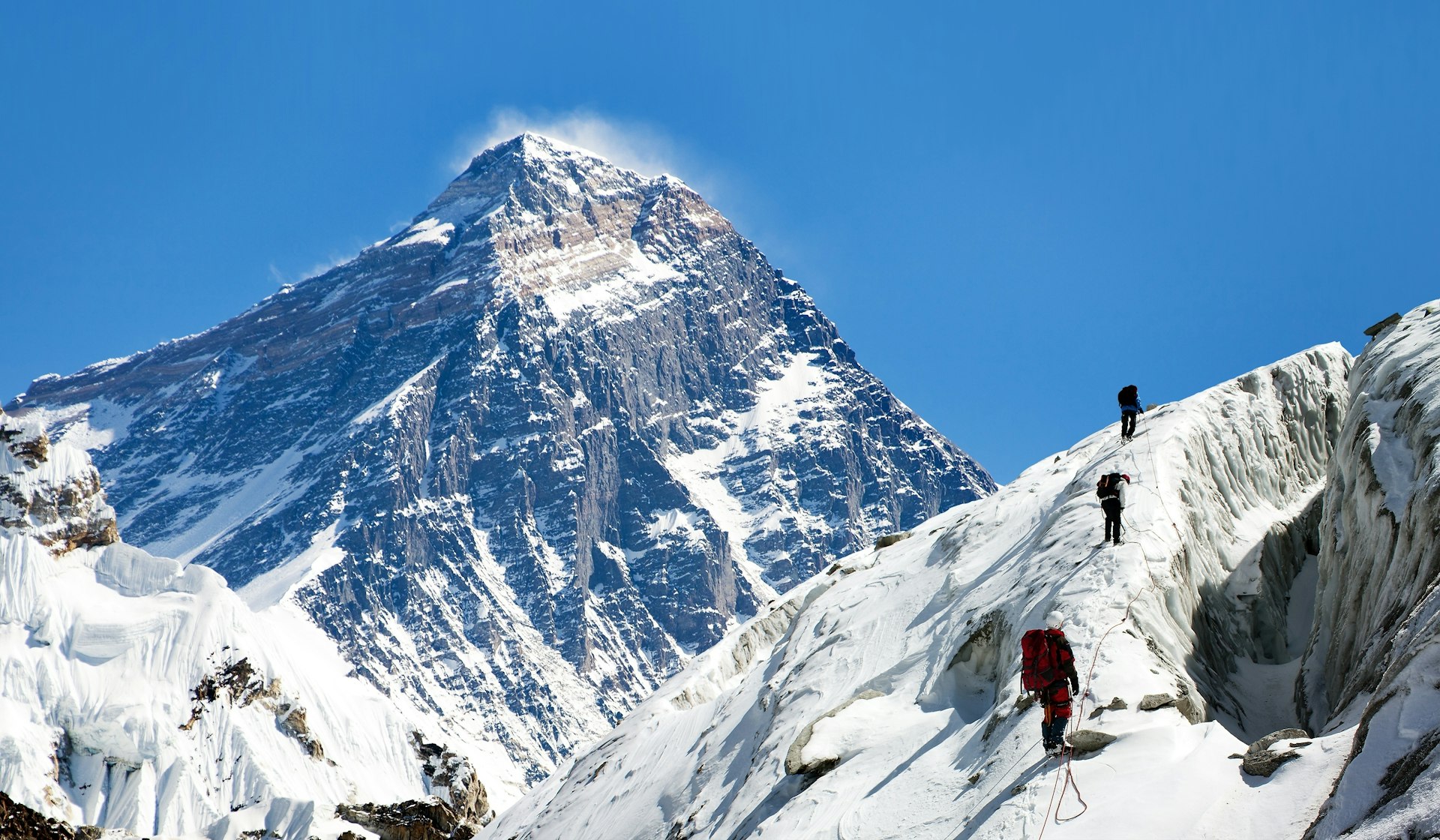
Everest is iconic, but more costly and complicated to reach
There are also differences between the two treks. Everest is a bit more complicated and expensive to reach. Most people fly to the trailhead Lukla and start the trek straight off the runway, which is convenient but expensive (US$430 return) and can present challenges when bad weather grounds flights for days at a time. (Be aware also that during high season flights to Lukla often depart from Ramechhap, not Kathmandu , which adds on a five-hour drive.) The only alternative to flying is a long, punishing ride in shared jeeps, or a weeklong walk (my preferred option, if you have the time).
You need a minimum of two weeks to trek to Base Camp and back, and I would strongly recommend adding up to a week to investigate the quieter but equally stunning side valley of Gokyo. In contrast, the core Annapurna Circuit section to Jomsom can be done in as little as nine days.
Everest has the irresistible lure of the world’s highest peak but you actually don’t see much of it; far more interesting is the climbing literature and the fact that you are walking in the footsteps of the world’s great climbers. The Everest trek gets you closer to the heart of the high mountains than the Circuit, which offers more in the way of traditional village life. Finally, Everest Base Camp is an out-and-back trek, so you’ll repeat some sections, whereas Annapurna is by its nature an A to B loop.

Annapurna's trails are often roadside, but offer greater flexibility
The Annapurna region is a lot more accessible; in fact you can be walking the trails in less than an hour by bus from Pokhara town. The big downside with the Annapurna Circuit (and it’s a big downside) is road construction. A jeep road now reaches as far as Manang on the eastern side, and Muktinath on the western side, which leaves only three days of roadless walking between them. The roads have taken a lot of the charm away from the circuit, so if you do decide to walk it I’d really urge you to read up on the alternative NATT trails that lead you away from most of the dusty road. During the second half of the trek in the Kali Gandaki Valley these side trails and excursions make for some stunning day walks, returning to roadside teahouses. It’s a different kind of walking, but it gives you great flexibility, meaning you can adjust your Annapurna Circuit trek to anywhere between a week and 21 days.
So, which is better?
Both trails offer a fabulous taste of Nepal trekking, but both are busy in high season and reward a bit of research into the excellent alternative trails and side trips which, for me, make these treks stand out. If avoiding the crowds is important to you, consider something different completely: the wonderful Manaslu Circuit teahouse trek, or an adventurous rough-and-ready trek out to the base of Kangchenjunga in the far east. Whatever you choose, your first trek in Nepal will almost certainly not be your last.
Explore related stories
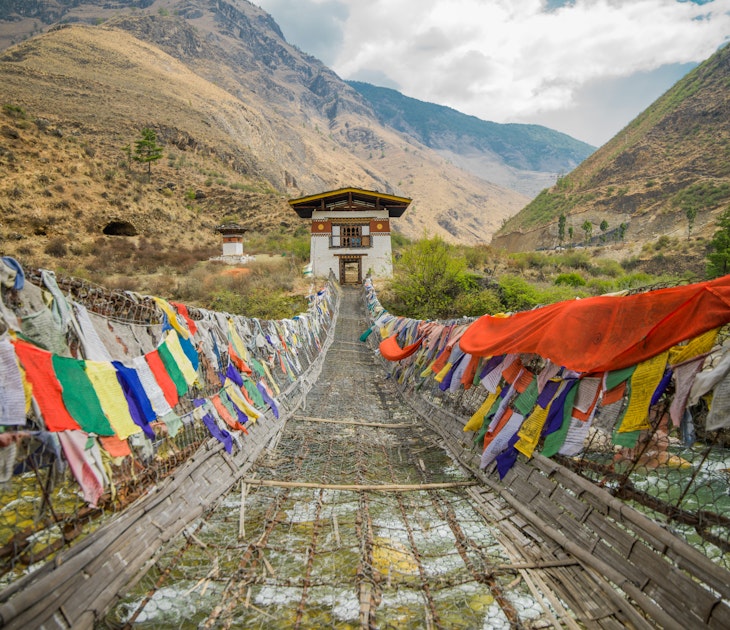
Aug 31, 2023 • 11 min read
When Bhutan reopened after the pandemic, the government raised tourist fees dramatically. Now they are coming back down. Here’s what you need to know.
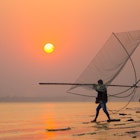
Oct 10, 2019 • 9 min read
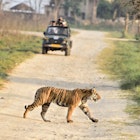
Apr 16, 2024 • 13 min read

Jan 11, 2024 • 4 min read
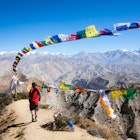
Dec 23, 2023 • 7 min read
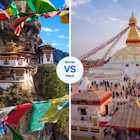
Dec 20, 2023 • 7 min read

Dec 16, 2023 • 12 min read

Oct 15, 2023 • 3 min read
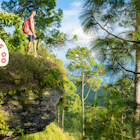
Sep 18, 2023 • 7 min read
- Travel Guides Plan your adventure
- Destinations Our favourite places
- Tours Book a trip
- Travel Companies Independent specialists
- Travel Guides
- Destinations
- Travel Companies
The best Annapurna treks
An expert guide to trekking the annapurna region.
Stuart Butler
Bradley Mayhew
- In this guide
- Remote treks
- Challenging treks
- Everest treks
- Annapurna treks
Upper Mustang treks
- Langtang Valley treks
- Manaslu treks
- Dolpo treks
- Far Western Nepal treks
- Makalu treks
- Kanchenjunga treks
- What to eat in Nepal
- Best Annapurna treks
- Need to know
Annapurna trekking: overrated routes & hidden gems
For lots of visitors, trekking in Nepal = trekking in Annapurna, in particular either the Annapurna Sanctuary or the Annapurna Circuit trek. They’re both spectacular and more than deserve their hype but, in my opinion, they’ve been let down by the tourism industry’s tendency to over-market the already popular highlights at the expense of any hidden gems.
What's more, the Annapurna Circuit trek – for many years described as the single best trek on earth – has suffered so much encroachment from road construction that I’m not sure I could even recommend doing the original route (the new alternative route is excellent however.)
Fortunately there is much more to trekking in Annapurna than these two blockbuster routes. From simple walks in the flowery foothills, to hidden valleys that feel like Tibet and require special permits to visit, there's a huge variety of Annapurna treks that don't make it into the mainstream tourism marketing.
But whatever trek you choose, one thing is for sure: the mountain scenery will blow you away. Standing in the heart of the cirque at the end of the Annapurna Sanctuary trek could move you to tears, and the wilderness around Tilicho Lake will probably be the best mountain scenery you’ll ever lay eyes on
There’s the added advantage that most treks are simple to organise, trailheads easy to reach on public transport, and accommodation and facilities abundant and of a very high quality. So forget the glory of Everest , Annapurna is where it’s at!
Ready to go? Here's my expert guide to the best Annapurna treks.
Get the digested read
Where to begin? When to go? How to plan? So many questions, so little time. That's why we've asked leading Nepal trekking expert Stuart Butler to answer your most frequently asked questions in this handy four-part email series.
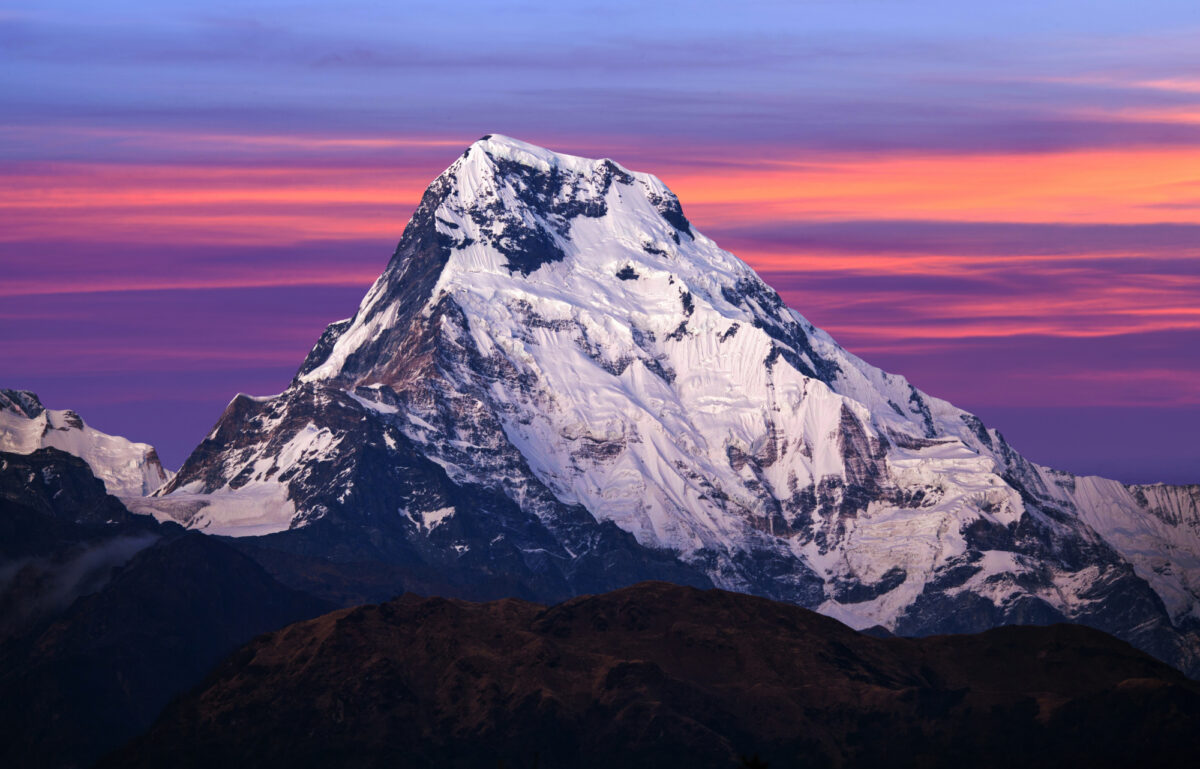
The classic view of Annapurna I
The most famous routes and some hidden gems
Annapurna region.
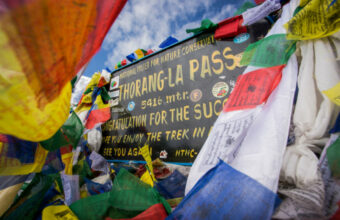
Road-free Annapurna Circuit
- Best trek for: Classic scenery, good facilities
- Difficulty: Moderate to hard
- Trek duration: Nine to 18 days
- Max. elevation: 5,416m
- Accommodation: Trekking lodges
- Start/end point: Dharapani/Jomsom or Naya Pul
This, one of the world’s classic treks, takes you through virtually the whole range of Nepalese landscapes: From sub-tropical valleys where banana plants and gushing, murky jungle rivers are the defining features, through gorgeous woodlands, and across Alpine meadows and conifer forests, to the rock and ice wastes higher up.
Sadly, in the past few years road construction has affected up to 75% of the original Annapurna Circuit route. Life’s too short to trek on roads, so my advice is to avoid the original route and follow the new road-free route instead . If you’re set on walking the Annapurna Circuit, be sure to follow the New Annapurna Trekking Trails (NATT) route that take you away from the road traffic and onto quieter and more scenic side trails – in many cases these new trails offer even more impressive scenery than the original routes. NATT routes are waymarked with signs painted in blue and white, instead of the red and white of the main Annapurna Circuit route.
The high point is the often snow-covered Thorung La Pass (5,416m) with its utterly sensational mountain views. From here you drop rapidly down towards the fascinating Hindu and Buddhist pilgrimage site of Muktinath and then into a drier, region of eroded river gorges, lush oases and castle-like monasteries around Kagbeni and Jomsom (look out for ammonite fossils in the Kali Gandaki river bed — evidence that the top of the world was once at the bottom of a prehistoric ocean).
Many people finish the trek at Jomsom (there are jeeps and buses to Pokhara or scheduled daily flights), but for the devoted, the new alternative trail winds slowly downhill through the dramatic Kali Gandaki valley into warmer, greener and lusher countryside. The sense of satisfaction of walking the entire circuit is second to none.
Facilities along the Annapurna Circuit are excellent with comfortable trekking lodges and good, varied food. Many lodges have hot showers and wi-fi. It’s busy during high season and the demand for beds can exceed supply. You can avoid the problem by joining an organised trip, and miss the crowds by overnighting at midway points between the major stops. See here for our recommended itinerary.
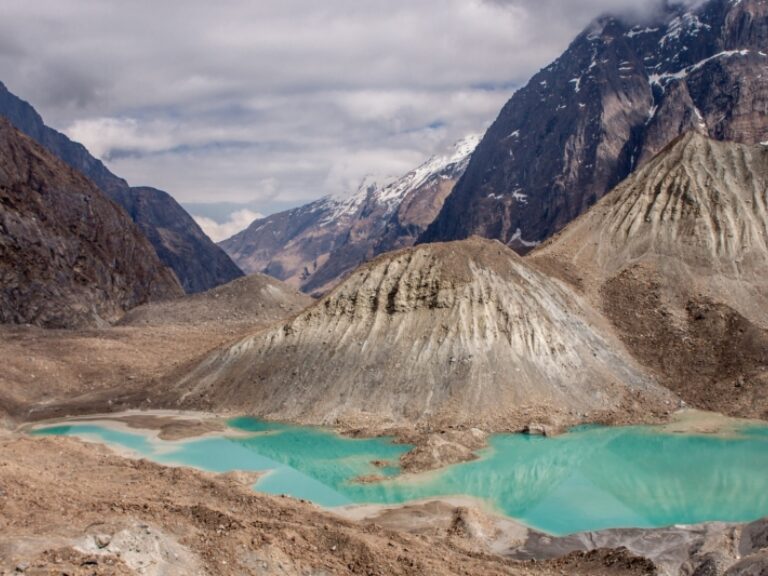
Annapurna North Base Camp
Best trek for: Expedition style camping
- Difficulty: Moderate
- Duration: Five to six days
Max elevation: 4,050m
Accommodation: camping
Start/end point: Tatopani/Sandhi Kharka
New trek routes always get my pulse racing, especially when they follow in the footsteps of a famous old expedition route. This particular trek follows the expedition route of Maurice Herzog’s epic 1950 ascent of Annapurna I (8,091m), the first ever ascent of an 8,000m peak, and it takes you up to an amazing mountain amphitheatre ringed with 7,000m peaks.
Unlike the busy base camps of the popular Annapurna Sanctuary trek, this ‘alternative’ Annapurna Base Camp trek is a true hidden gem that sees only a trickle of well-informed trekkers, largely because you need to camp and be self-sufficient. There are no lodges here and definitely no apple pie.
The trek starts at Tatopani, veering off the Annapurna Circuit to make a dramatic, sphincter-tightening jeep ride up the wild, sheer-sided gorge of the Mristi Khola. The walking starts at the hydroelectric plant at Hum Khola Dovan (2,880m), with overnights at Sandhi Kharka and Bhusket Mela (3,550m), until you finally set up camp in the astounding glacial basin of Narchang Lake (4,050m). This secret spot, surrounded by Annapurna I, Fang, Tilicho and Nilgiri peaks and walled off by the Great Barrier of the Annapurnas, is a classic mountain cul-de-sac, surrounded by glaciers, waterfalls and vertical rock walls.
The opportunities for day hikes here are fabulous, with faint trails leading to Annapurna North Base Camp, Advanced Base Camp and Nilgiri Base Camp via some epic glacier viewpoints. Bring a copy of Maurice Herzog’s classic 1951 Annapurna, and spend the evenings reading his account of the groundbreaking ascent and even more harrowing descent. It’s a day’s walk back to Sandhi Kharka and then half a day to meet your jeep and make the wild ride back.
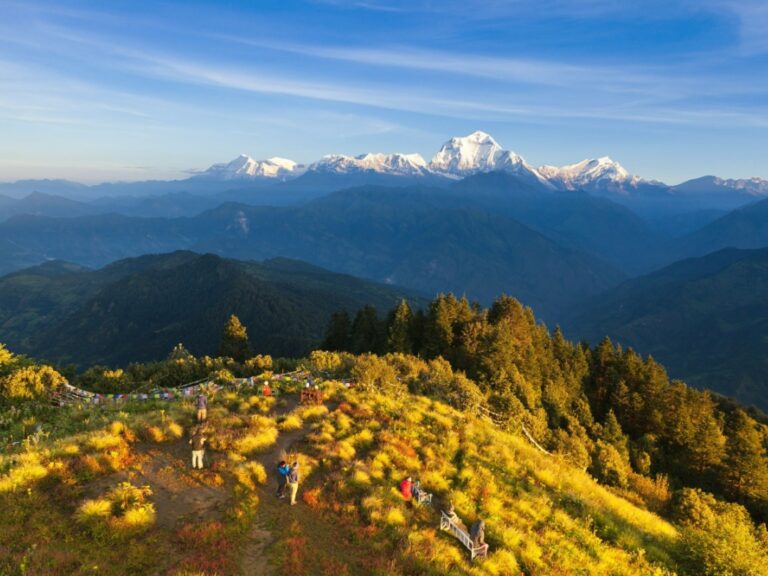
Annapurna Sanctuary trek
- Best trek for: The most popular Annapurna trek
- Difficulty: Easy to moderate
- Trek duration: 10 days
- Max. elevation: 4,130m
- Start/end point: Naya Pul or Dhampus
Rivalling Everest Base Camp for the title of most popular trek in Nepal, the Annapurna Sanctuary Trek is a 10-day extravaganza of non-stop mountain vistas culminating in a great cirque of massive mountain peaks seven to eight kilometres high.
If you’re looking for a short, relatively easy and simple-to-organise trek that doesn’t venture too high (max elevation is 4,130m), and with unusually comfortable accommodation, then the Annapurna Sanctuary ticks all the boxes.
The straight there and back route starts in the lush subtropical hills to the north of Pokhara, taking you through oak, birch, rhododendron and bamboo forests before hitting the Alpine zone on day five around Machapuchare base camp (which is actually a collection of trekking lodges — for religious reasons it’s forbidden to climb Machapuchare).
From here to the Annapurna Sanctuary the views get more stupendous with every corner passed. Once you reach the Annapurna Sanctuary there are a few viewpoints above the lodges which reward with views over glaciers, moraine fields and an amphitheatre of peaks including Machapuchare (6,993m), Annapurna South (7,219m), Annapurna III (7,555m), Gangapurna (7,454m) and, just poking up behind the others, Annapurna I (8,091m), the first 8,000m mountain ever climbed (in 1950 by legendary French climbers Maurice Herzog and Louis Lachenal).
The facilities for trekkers are as good as anywhere in the Nepalese mountains. Most lodges have varied menus, some form of heating, separate rooms, electricity, hot showers and even wi-fi. However, this combination of unsurpassed mountain scenery, great facilities and easy access means that tens of thousands of trekkers can walk this trail each year, causing local culture to be overwhelmed by international trekking culture. Lodges can be booked out in the high season. Try to get to the night stop early, or join an organised trekking tour and avoid the worry of finding a bed. If you’re looking for something quieter, the new Annapurna North Base Camp trek might be for you.
To avoid this being a straight there and back trek, do the Poon Hill trek first and then on day four link on to this walk. That would give a total of about 12 comfortable days of walking. Or alternatively add on the Mardi Himal trek for a similar duration.
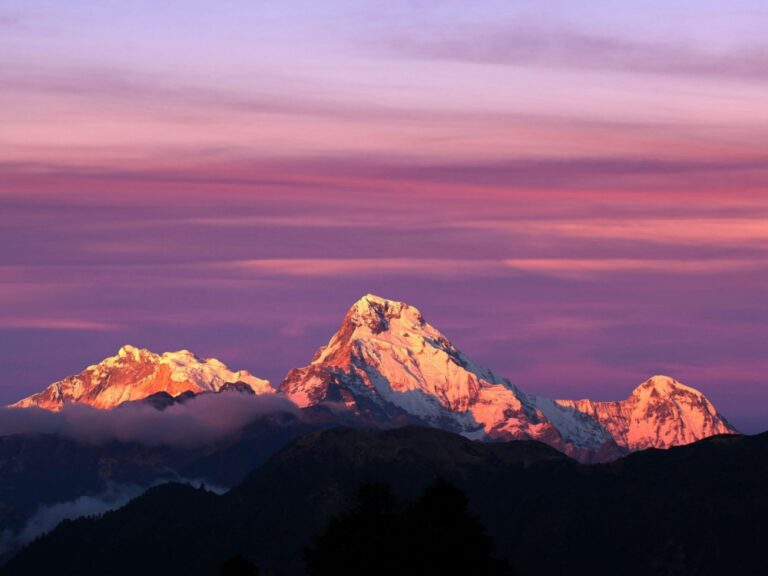
Poon Hill trek
- Best trek for: Easier-going route with classic sunrise views
- Trek duration: Five to six days
- Max. elevation: 3,210m
- Start/end point: Naya Puk/Phedi
Mixing heart-stirring mountain views with enchanting villages and beautiful forests with a thousand blooming rhododendrons, this is a good introduction to trekking in Nepal.
The highlight is Poon Hill itself, an hour’s walk above the village of Ghorepani. Watching the sunrise from here is an almost obligatory Nepalese experience. As the first beams of light shine across a panorama that includes Dhaulagiri I (8,167m), South Annapurna (8,091m) and Nilgri (6,940m), it’s hard not to be moved, despite the often noisy crowds
The trailheads are only about an hour’s drive out of Pokhara and there are excellent trekking lodges along the route plus some luxury hotels. The trek can be done clockwise or anti-clockwise and it makes a good add-on to the more challenging Annapurna Sanctuary trek. It’s also an ideal first time trek for families and those who don’t want to go too high. But do keep in mind that there’s a lot of steep up and downs.
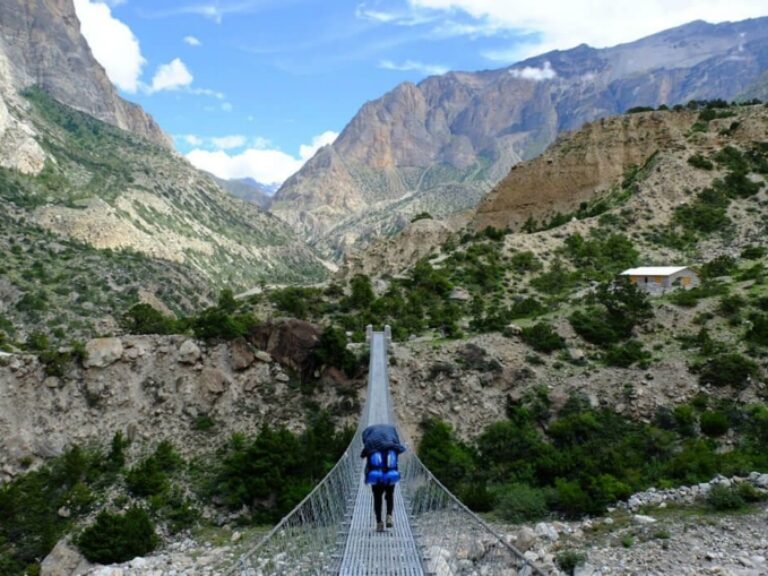
Nar-Phu trek
- Best trek for: Getting well off the beaten path
- Difficulty: Moderate to difficult
- Trek duration: Seven to nine days
- Max. elevation: 5,320m
- Accommodation: Camping and basic trekking lodges
- Start/end point: Koto/Ngawal
Most Annapurna Circuit trekkers heading through the village of Koto won’t know that a trail off to the east leads to a magical, hidden world. The Nar and Phu valleys were closed to tourism until 2002 and when they finally opened up the first trekkers discovered a landscape of narrow gorges, 7km high mountains, timeless stone villages festooned with prayer flags, and a distinct local culture based on yak herding and trade with neighbouring Tibet.
Still rarely trekked (a restricted area permit and camping gear is required), the route follows a dark, deep and shady gorge up to the mediaeval village of Phu, which consists of around 40 or 50 mud and stone houses and red painted monasteries huddled together on the top of a hill. Entry to the village is via a spectacular old gateway.
It’s worth allowing a couple of nights in Phu to explore the upper valley. To leave, you have to retrace your steps halfway back down the valley before veering west up the Nar valley, over yak pastures to the large traditional village of Nar where there are four gompas (Buddhist monasteries) worth visiting. Independent trekkers relying on lodges will probably have to turn back here and retrace their steps to Koto, but camping groups and acclimatised trekkers can make the exciting crossing of the Kang La (5,320m) down to Ngawal back on the Annapurna Circuit.
This trek works well either as an add-on to the Annapurna Circuit or as a short, stand-alone trek in its own right. For adventurous trekkers with all the correct permits on fully-organised camping treks, it’s possible to take a wild, difficult and very rarely walked route from the village of Nar into Upper Mustang via the taxing Teri La Pass (5,595m).
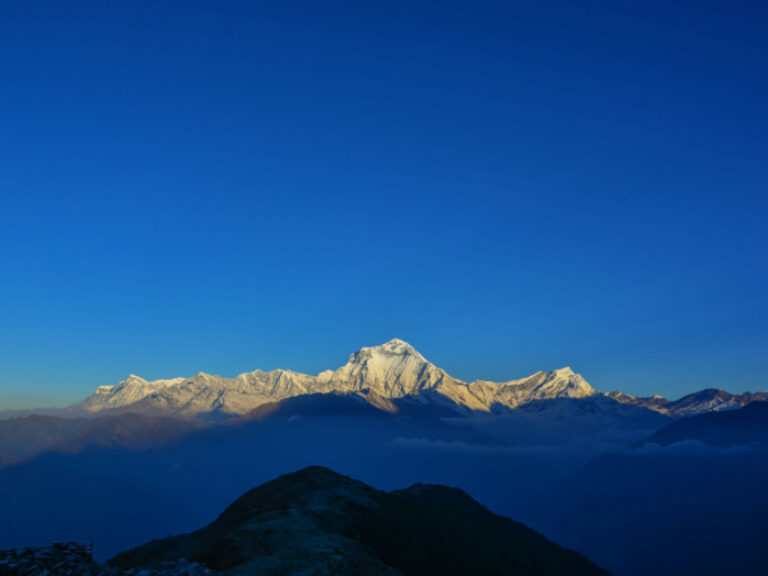
Khopra Ridge trek
- Best trek for: Quieter, less-crowded route
- Max. elevation: 3,660m
- Accommodation: Camping and limited trekking lodges
- Start/end point: Ghorepani/Tadapani
Also known as the Khopra Danda trek, this is well off the standard Annapurna trekking routes and offers a low-key, peaceful trek to lofty viewpoints on the flanks of Annapurna South. There are a number of different route variations but my favourite branches off the Poon Hill trek at Tadopani and climbs to lodges at Bayeli (with its amazing Mulde viewpoint), Chistibang and then Khopra Danda, before descending to Swanta and Ghorepani
The trails pass through charming villages with simple private and community lodges and lots of pretty forests. Khopra Ridge itself is an impressive dome with an exposed trail running along it that feels much higher than it really is (especially when covered in snow). The views across to Dhaulagiri I (8,167m) are unforgettable. From the ridge it’s possible to make a very long and challenging 10-hour day trip to the high altitude Khayer Lake (4,600m). Given the 1,000-metre height gain in a day, plus the beauty of the lake, it’s much more advisable to go on an organised camping trek and sleep on the lake shore.
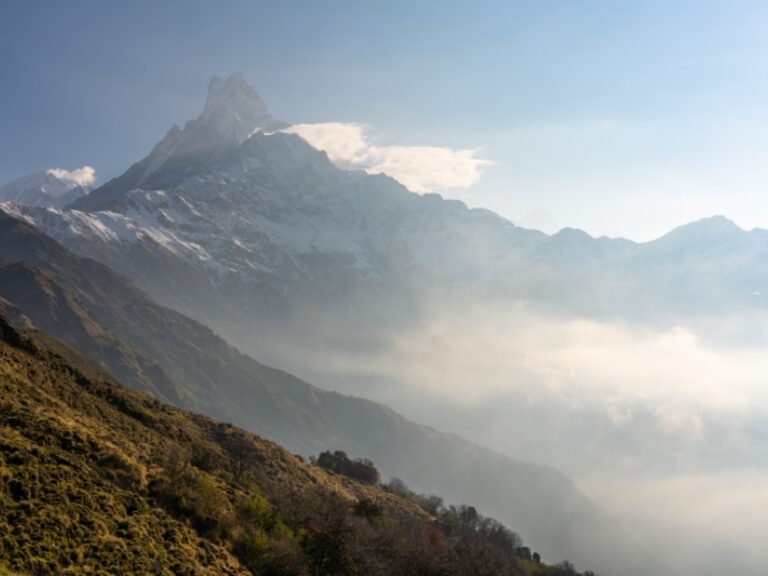
Mardi Himal trek
- Best Trek For: Short trek with great views
- Max elevation: 4,250m-4,500m
- Accommodation: simple lodges
- Start/end point: Khare (Kande)/Sidhing or Landruk
Do you want a taste of the Annapurna region – forests, hillsides of rhododendrons, airy ridge walks and close-up views of big peaks – but can’t afford more than a week? If yes, then I think the Mardi Himal trek might just be for you.
It’s very accessible (less than an hour by bus or taxi from Pokhara), well signed, and the trail will take you past everything from Gurung villages to high Alpine ridges. Not so many foreign trekkers make it here but the lodges are decent (though not as comfortable as other parts of the region). It’s popular with Nepali trekkers, though, so avoid weekends if you can.
The first day or two take you past Australia Camp and the village of Pothana up through the forests of Pitam Deorali to teahouses at Forest Camp, but before long you’ll find yourself above the treeline at Low Camp (2,985m) and then High Camp (3,550m), where the views of fish-tailed Machapuchare, Himchuli and the Annapurnas really open up. Pray for good weather for the amazing final hike from High Camp up to Mardi Himal ‘Base Camp’ West for views of peaks that seem within reach, before returning to Low Camp. From here return to jeep access roads at Sidhing, Galel or Lwang, or hike from Forest Camp to the road at Landruk.
If you are fit (and, crucially, acclimatised) the trek can be done in four days, though five to six is more likely. For an excellent 10-11 day trek link Mardi Himal with the Annapurna Sanctuary route via Landruk.
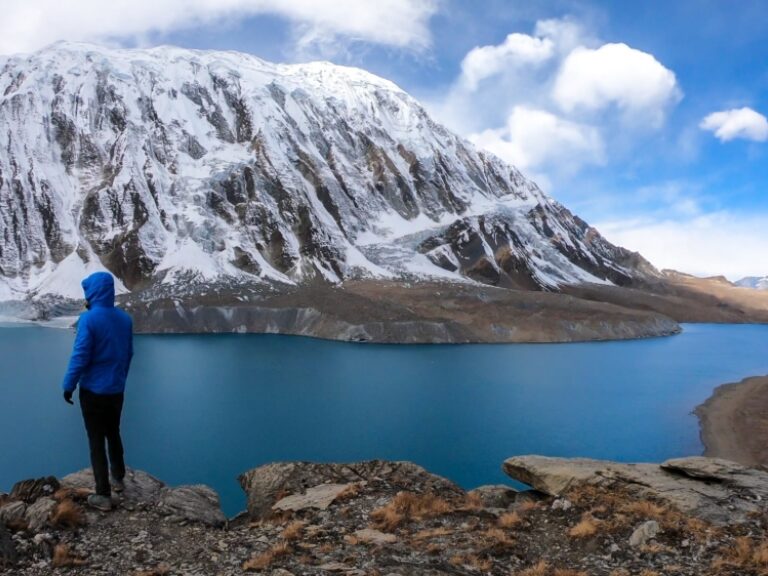
Tilicho Lake trek
- Best trek for: Short but challenging route
- Trek duration: Four to five days
- Max. elevation: 5,005m
- Start/end point: Manang/Manang or Yak Kharka
The short, but challenging hike to Tilicho Lake, one of the highest large lakes in the world, is one of the most impressive Annapurna treks.
It’s a four or five-day round trip detour off the main Annapurna Circuit trail starting from Manang and heading rapidly upwards, firstly through pine forest and then across scree slopes before a final climb to a pass (5,005m) overlooking the lake. Pushed right up against the great wall of the Annapurna range, and with glaciers crashing down into it, the lake is frozen over for months on end and can be a bleak and scary place.
When it is ice-free (normally June to early November), the astonishing turquoise colours of the water clash with the dark rock and white glaciers behind it. For sheer high mountain drama, I find it hard to beat. However, the route up to the lake is not for the faint-hearted.
The path rises very steeply from Manang and altitude-related problems are very common. Also, a large part of the trail is high up on an almost sheer shale slope where rock falls and avalanches are almost daily occurrences. Needless to say it can be very dangerous, especially after rain. People suffering from vertigo will probably not enjoy this trek. Although there are a number of decent trekking lodges along the trail to the lake there’s nowhere reliable to stay on the lake shore. By coming on an organised camping trek you can spend a magical night camping along the lake’s northern edge with only snow leopards for company.
After reaching the lake it’s best to turn back the way you came rather than going all the way back to Manang though you can take a small shortcut that will get you directly to the lodges at Yak Kharka.
Note that many maps and some trekking agencies talk about a route directly from Tilicho Lake to Jomsom via the Mesokanto pass. No matter what any map, sign or trekking agency tells you, this is not a route to be taken lightly. It involves ice-climbing down two huge, vertical glacier walls followed by a hair-raising and utterly exhausting climb up a loose scree slope which makes those you crossed on the way up to Tilicho seem like child’s play. Do not attempt this route without mountaineering experience, ropes, ice-axes and crampons as well as a guide who knows the route — very few do.
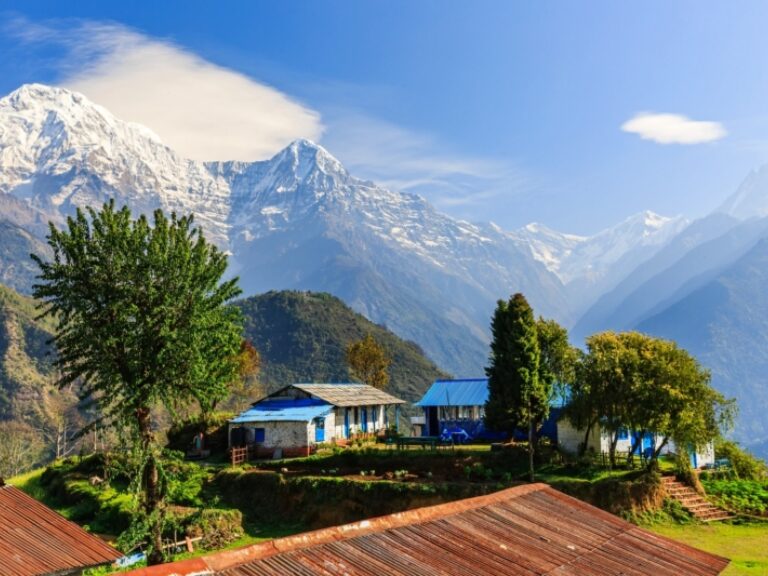
Annapurna luxury lodge trek
- Best trek for: Soft trekking in style
- Difficulty: Easy
- Duration: Six days
- Max elevation: 2,015m
- Accommodation: luxury lodges
- Start/end point: Lumle/Phedi
If you shudder at the idea of overnighting in a wooden room no larger than a prison cell, with the single shared toilet located down a hallway echoing with the thunderous snores of a two-dozen unwashed trekkers (or even worse; a tent!), then you might want to consider a luxury trekking itinerary in the Annapurna foothills. You’ll avoid the discomfort of high altitude and can focus on lovely days spent wandering village trails, safe in the knowledge that a hot shower and happy hour awaits you at the end of the day.
Ker & Downey operates a string of lodges in the foothills north of Pokhara, allowing you to link the Gurung villages of Dhampus, Ghandruk, Majgaun, Landruk and Birethanti in a five or six day loop, with fine views of iconic fish-tailed Machapuchare never far away. This is trekking in style.
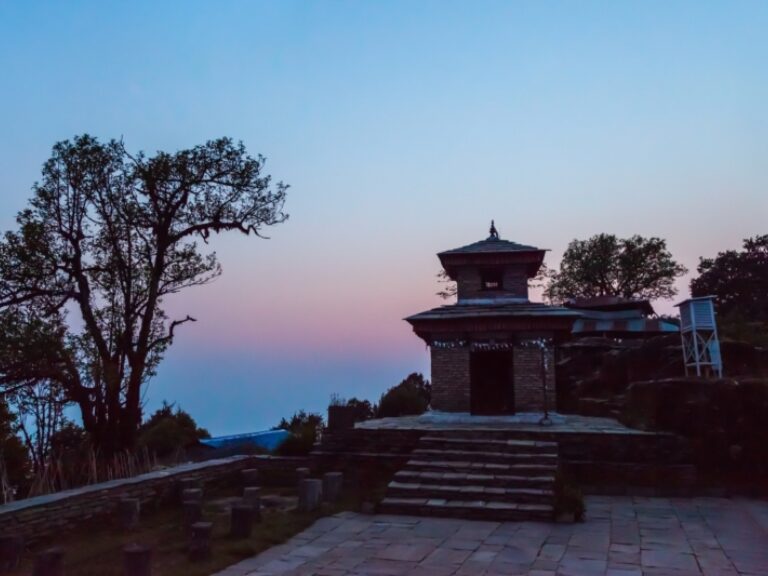
Panchase Trek
- Duration: Three to four days
- Max. elevation: 2,500m
- Accommodation: Teahouse lodges
- Start/end point: Pokhara
This is one of my favourite alternative treks in the Annapurna region. Don't worry if you've not heard of it – most visitors haven’t, which means you’ll enjoy largely crowd-free trails while ascending to magnificent viewpoints at a maximum altitude of just 2,500 metres.
A highlight of this route is the way it begins: you’ll depart directly from the lakeside in Pokhara, boarding one of the city’s colourful boats to reach the opposite shore of Phewa Lake. Your destination on this four-day route is the hill station of Panchase, and you’ll pass through a number of charming Himalayan villages to get there. All told, this is a great Annapurna trek where you won’t have to worry about a long haul on dusty roads. I often recommend it for an acclimatisation trek before embarking on one of the longer and higher altitude main routes.
Road-free Annapurna Circuit itinerary
A new alternative to the classic route, annapurna trekking: need to know, everything you wish you'd known before you booked.
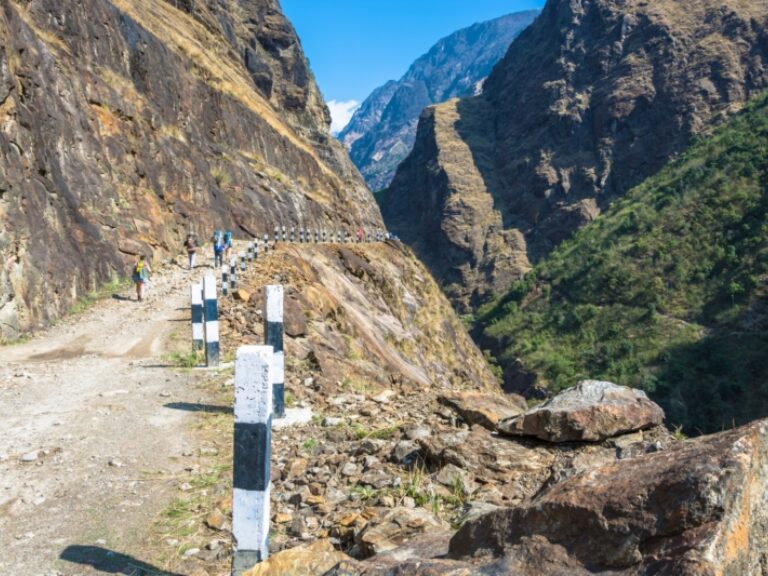
Think twice about the Annapurna Circuit
The Annapurna Circuit consistently tops lists of the world’s best treks – and rightly so. Or rather, it used to be rightly so.
The problem is that these lists are often written by desk-bound editors who’ve never been out there and are rehashing info that's over a decade old. The sad reality today is that road construction has eaten up three quarters of the old Annapurna Circuit trail. The sublime cliff-side paths and mule tracks that I and many others hiked two decades ago are now cloaked in jeep fumes and dust.
My enduring memory of a recent trip to the circuit was seeing a long line of grim-faced trekkers trudging along a dirt road through clouds of jeep dust. It didn’t look like fun, let alone the world’s best trek.
So is the Annapurna Circuit dead? Well, no, not exactly. By choosing smart ending and starting points and following a series of side trails called the New Annapurna Trekking Trails (NATT; with markers painted in blue and white, instead of the red and white of the main trail) you can avoid most of the roads, while soaking up the same astonishing Himalayan views, high-altitude lakes and traditional trading villages that have drawn trekkers here for half a century now.
There’s no denying that the nature of the walk has changed. I still rank the lodges and food along this route as some of the best in Nepal, but many of these are now on the road, and so cater to a different clientele. And while the NATT trails are infinitely better than hiking on the road, they aren’t perfect; you still have to walk some sections on the new road and other dirt roads are eating away even at these detours.
Do your research, stick to side trails and you’ll be a much happier trekker.
Featured Annapurna Treks
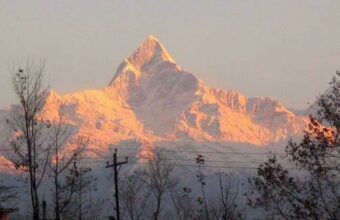
Annapurna Region Treks
Nepal trekking routes.
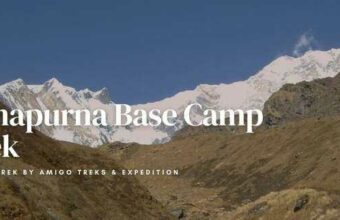
Short Annapurna Base Camp Trek
Mesmerizing views of the annapurna massif,.
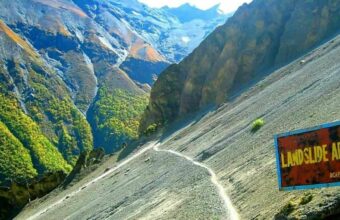
Annapurna Trekking
Nepal footprint holiday.
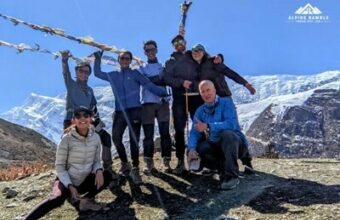
Alpine Ramble Treks
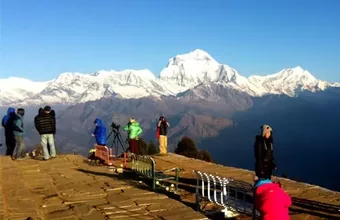
Annapurna Treks
Green society adventures.
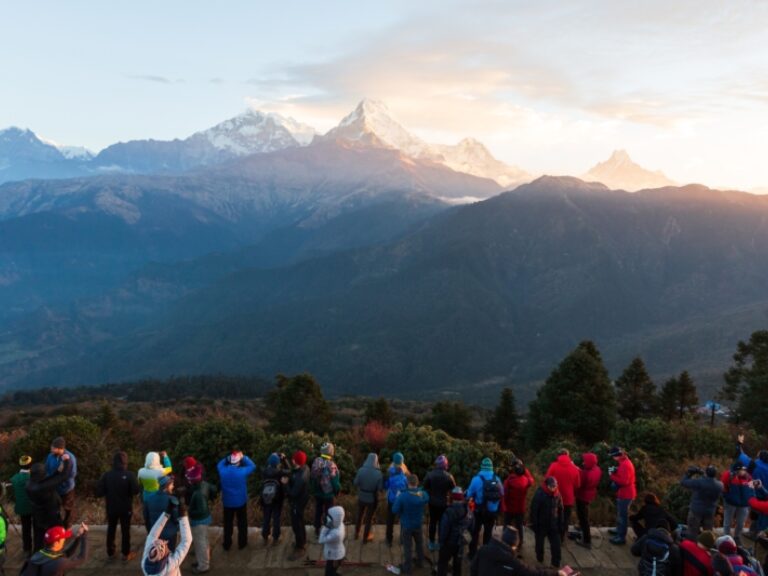
Forget about Poon Hill
I’d argue that Poon Hill is the most overrated viewpoint in the Himalaya.
Pokhara trekking agencies and guides love it because it’s relatively quick, easy and cheap to get to, but it’s just way too busy a spot to provide the ‘sunrise over the Himalaya’ spiritual epiphany you were hoping for. Get better and quieter views of the Annapurna range at Mohare Danda on the Khopra Ridge trek or from Mardi Himal Base Camp, or opt for equally dramatic views of 8,167m Dhaulagiri from the east bank of the Kali Gandaki valley.
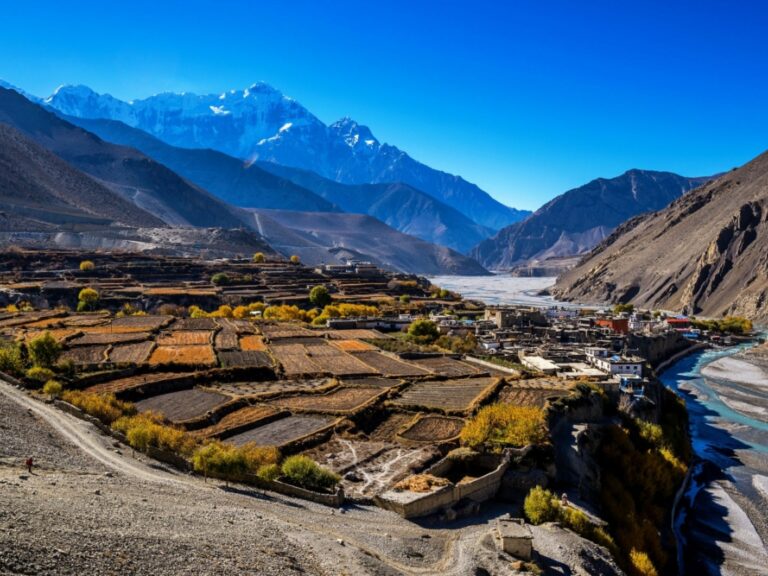
Don't neglect the side trips
The Annapurna Circuit and Sanctuary treks are undeniably busy, so I highly advise building in some spare days to your itinerary. Put the trekking poles down for a day and follow the Hindu pilgrims to the holy town of Muktinath. They’ve come from across the Indian sub-continent to bathe in the freezing spring waters and pray at the eternal flame which lies at the heart of the temple complex. A day’s walk further downhill is Kagbeni, a quiet desert oasis village that you can visit without an expensive permit.
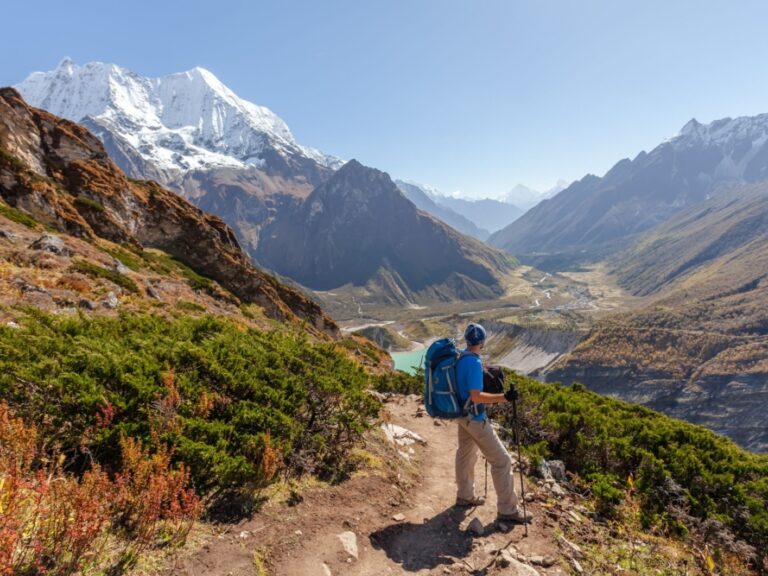
Combine the Manaslu and Annapurna Circuits for a beyond epic trek
It’s hard to imagine a more spectacular trek than combining the best week of the Annapurna Circuit onto the end of the already fabulous Manaslu Circuit . You’ll cross two passes over 5,000m, visit three of Nepal’s most picturesque villages (Sama, Bragha and Kagbeni) and get a taste of traditional Tibetan-influenced culture in the valleys of Nupri, Manang and lower Mustang. This is 18 days of the best teahouse trekking you’ll find anywhere in the world.
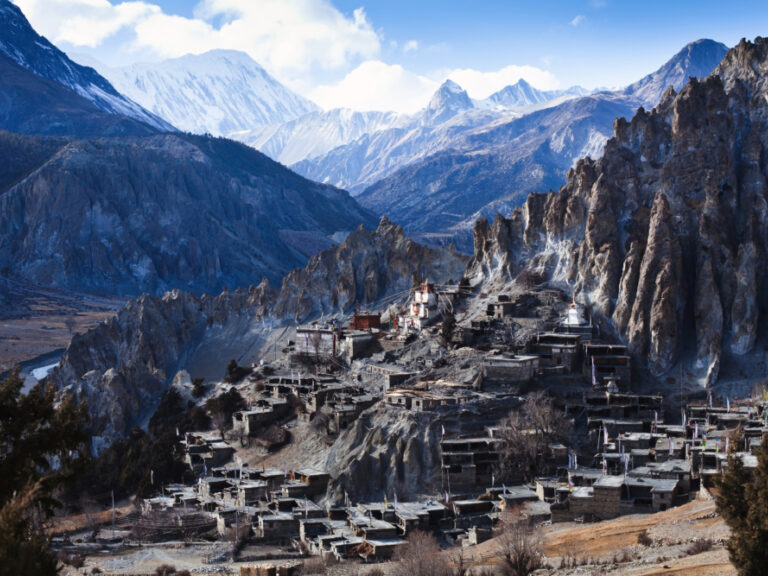
Don’t skip acclimatisation days
Given the pressures of time and budget, I understand it can be tempting to skip those dull acclimatisation days, especially when you arrive at your destination at lunchtime and the itch to push on seems almost irresistible. Skip an acclimatisation day, however, and you’ll almost certainly create problems for yourself later on; you might even have to abandon your entire trek due to altitude sickness. I try to take advantage of acclimatisation days by exploring side trails or hiking higher than the overnight stop, before returning for the night, thus supercharging my acclimatisation by ‘climbing high and sleeping low’.
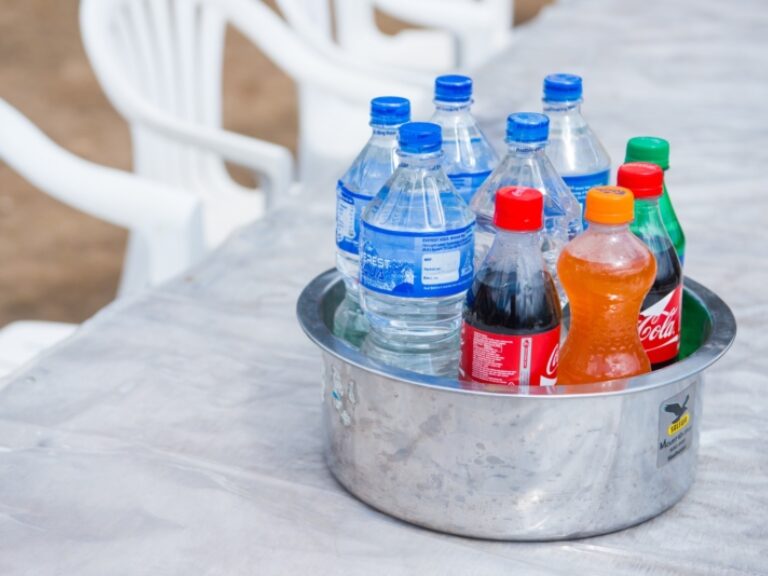
Don’t buy bottled water
Don't contribute to Nepal's huge trash problem by buying bottled water while trekking. Not only are these bottles ridiculously expensive but the non-recyclable plastic ends up strewn across teahouses, villages and trekking trails, giving mountain tourism a bad name. Invest in a water filter like a Lifestraw, UV-light sterilisation like a Steripen, or just pack some good old fashioned chlorine tablets and purify your own water. You’ll save a small mountain of plastic and you’ll have some extra money in your pocket for that extra slice of apple pie.

The stunning Annapurna range from Poon Hill
Annapurna trekking FAQs
Your questions, our expert answers, is there still an option for independent trekking in the annapurna area or do you have to have a licensed guide.
Aside from the Everest region then yes, officially, you do now need an officially recognised guide to hike inside any national park/protected area in Nepal. This would include most of the main Annapurna trails.
However, enforcement of the rule in the Annapurna region has been spotty so far. There are plans (in theory at least) to start enforcing the new rule in 2024.
I would say though that a guide is just a good idea anyway because a good guide (and getting a good one is key) will enhance your trek by giving background information, offering up interesting side routes, translating when required, opening cultural doors and, of course, providing a bit more safety. Not to mention that it gives much needed jobs to local people and in the big picture it costs very little.
What permits are required to trek in the Annapurna region?
All these treks require a TIMS permit (Trekkers’ Information Management System) and an Annapurna Conservation Area Permit. At the time of writing, individual permits cost R 2,000 per trekking route per entry, while group trekkers pay R 1,000 per person. Check the latest prices on the official Nepal tourism board website .
The Nar-Phu trek also needs a restricted area permit (seven days Sept-Nov/Dec-Aug US $90/75, additional days, US $10). You must be in a party of at least two trekkers and be accompanied by a guide.
When is the best time to trek in the Annapurna region?
The best time to trek in the Annapurna region (except for Nar-Phu) is between October and November, and from late February to April. Between late November and early February, it’s very cold at high altitude and the Thorung La Pass will probably be impassable due to snow. The routes to Tilicho Lake will also be snowed in at this time and lodges at higher elevations closed. There’s a real avalanche risk on the Annapurna Sanctuary and Tilicho Lake routes in spring. Avoid trekking most of this area during the monsoon (June-early-Sept)
Nar-Phu is unusual because it lies in the Himalayan rain shadow, and it’s possible to trek here during the monsoon — although you should still expect some rain and obscured mountain views. From November to early March, most valley inhabitants leave for lower and warmer climes and trekking lodges will be closed. The Kang La Pass will also be buried under snow and impossible to cross in mid-winter. This pass can also be complicated in spring with late and/or melting snow and ice. April-May and September-October are great times for Nar-Phu.
What are the Annapurna trekking accommodations like?
The Annapurna Sanctuary and Circuit, the two main Annapurna treks, have numerous trekking lodges of a very high standard., some bordering on luxurious. Hot showers, wi-fi, and international menus are common.
Nar-Phu and Khopra Ridge are earthier with limited and very basic homestay style lodges which fill up quickly. These areas are best trekked on a fully organised camping expedition.
How easy are the trailheads to access?
Access to trailheads for most Annapurna treks is fairly simple and all but Nar-Phu and Tilicho Lake start and end a short bus or taxi ride from Pokhara. An ever-expanding road network is changing routes in this region and many people skip the first couple of days of the Annapurna Circuit by driving up the valley.
An equally large number finish the trek at Jomsom from where there are regular buses and jeeps back to Pokhara as well as early morning flights. However, be warned that landslides can block the road for days on end and flights are frequently cancelled due to unfavourable (ie terrifyingly strong) winds. Allow an extra day or so in your schedule.
Can you recommend quieter alternatives to Everest or Annapurna?
Everest , Annapurna and to some extent Langtang are the favourites for first-timers. These three regions are convenient with easy access, plenty of lodges and good facilities. However, during the 'peak seasons' of mid-March to mid-May & October to November, these regions get very busy indeed.
My personal advice for someone looking for a quieter experience is to look at either the Manaslu or Kanchenjunga regions. The Manaslu Circuit trek has been hailed the "new Annapurna Circuit" and Kanchenjunga North offers some of the best views you'll get without straying into actual mountaineering. Until a decade ago trekking here used to be a full scale, high-cost camping expedition. These days there are some lodges on the routes but still far fewer trekkers, which makes them attractive if you're looking for true wilderness, unspoiled culture and quiet views.
Nothing takes away from the beauty of Everest or Annapurna, but for a different experience, Manaslu or Kanchenjunga get my vote.
Abhi Shrestha
What should i pack for a nepal trek.
My most important advice is – keep things light and minimal. When you’re slogging your way up to a mountain pass you will regret every extra kilo you’re carrying. The following is a list of recommended items, some of which are more essential than others.
Hiking boots
You’ll need boots. Not shoes or trail running shoes. Make sure they’re waterproof, very sturdy and above all, comfortable. Don’t buy a cheap pair. Make sure you break them in before leaving for Nepal. Whatever you do, don’t hire boots in Nepal as they probably won’t be up to scratch and will give you blisters. Nothing will ruin your trek more than blisters.
Winter jacket
A thick, warm, waterproof and breathable but lightweight jacket is another must. It needs to keep you warm as toast in sub-zero temperatures. These can be rented in Nepal but most are inferior knock-offs of respected brands. They’re okay for a one-off trip but if you’re likely to go mountain trekking again, it’s worth buying your own jacket.
Sleeping bag
It gets bitterly cold at night, even at comparatively low altitudes in winter, and the thin, gap-riddled walls of trekking lodge bedrooms provide little protection. Get the warmest yet lightest one you can afford. When a manufacturer says a sleeping bag can be used down to minus-10 degrees the reality is you won’t be comfortable in it below about plus-five. Aim for one that says it will keep you warm down to minus-20 or lower. A really good sleeping bag is expensive. Bags can be rented in Nepal but as with jackets, they’re very rarely of good quality.
Trekking Poles
If you’ve never trekked before then you might consider trekking poles as something that just old people use. Well trust us, if you don’t use them after a few days clambering up and down steep Himalayan slopes you’ll forever walk like an old person… Poles help save energy going up and take the strain off your legs on the way down. They also stop you falling and twisting ankles as much.
Water bottle
Take two of at least a litre each and refill whenever possible. Don’t rely on bottled mineral water. It’s often not available and it’s environmentally unfriendly, particularly up in the mountains where there’s little chance of recycling.
Water purification pills
Get enough to treat at least three litres of water a day. On more popular trekking routes some lodges provide pre-treated water but don’t rely on this always being available.
Two or three thermal tops of different thickness and even a pair of thermal under-trousers are worth their weight in gold.
Two fleeces, one thin and one thick, are vital.
Walking trousers
Don’t try to skip around the Annapurna Circuit in a pair of jeans (yes, we’ve seen people try. And fail). Get some comfortable walking trousers. Two pairs should be sufficient for the longest treks.
T-shirts/shirts
Many people recommend specialist quick-dry shirts designed for trekking. However, we’ve used a combination of these and normal shirts and T-shirts and never noticed much difference. Don’t over pack. You probably won’t change your shirt more than once in a two-week trek!
Specialist hiking socks are supposed to reduce blisters and are worth buying. However, changing your socks frequently seems to reduce blisters as much as any clever equipment. Take at least three pairs for a two-week trek. Also pack a thick, warm pair of ski socks to keep warm when you arrive at camp.
Most people appreciate being able to remove their boots at the end of the day and don some sandals (with or without thick ski socks, depending on how cold it is).
A sun hat is vital for hotter, lower elevations, and a winter hat or balaclava for up high.
Take a thick warm pair of skiing gloves and a thin, cotton pair of under gloves. You won’t be able to use your camera or eat properly with thick gloves but you can with the thin ones, and they’ll keep your hands warm for a few minutes.
Sun glasses
An essential bit of kit at all elevations. The sun reflecting off the snow can quickly frazzle your eyes.
Suncream and sunblock
Slap on lots of sun cream no matter what the weather or elevation. Use total sunblock on lips, nose and ears.
Keep this minimal as you won’t get much chance to wash. A small lightweight travel towel isn’t a bad idea.
A head torch is a must.
The evenings can be long. Bring a good book, not a tablet or Kindle as power sources can be erratic and batteries drain very fast at altitude. Don’t forget a guidebook. We recommend the Rough Guide to Nepal , which covers the country and gives details of the main treks. For specific trekking information try Lonely Planet’s Trekking in the Nepal Himalaya .
Even non-photographers will want photos of this stunning scenery.
Spare batteries
Bring spare torch, camera and phone batteries. Below a certain temperature and above a certain altitude (which vary from product to product), batteries drain very fast or don’t work at all. Above about 3,000m put the batteries in your sleeping bag at night to keep them warm and reduce drainage.
A few biscuits and chocolate bars might give you the energy boost you need to get over that pass.
To carry all this you’ll need a decent, comfortable trekking backpack. Don’t consider any other kind of bag. If you’re using a porter you’ll need a small backpack for your day gear and you’ll have to provide a bag for the porter to carry - a holdall is best.
Travel Insurance
You’d be utterly insane to go trekking in the Himalayas without a decent travel insurance policy. Make sure it covers trekking above a certain altitude and helicopter rescue.
Leave the gadgets at home
Don’t bother taking computers, tablets, etc. They get easily broken on the trail and the batteries probably won’t work at altitude. More importantly, most people don’t want to see fellow trekkers glued to their tablets in a lodge at night.
Now it's no longer possible to do the Annapurna Sanctuary trek solo can you recommend any licensed operators in Kathmandu who can help?
Although I always recommend using a guide, ending solo trekking is such a big change to the Annapurna trekking scene! I can understand why people are disappointed. I can't recommend any individual operator, but there is a list of licensed Annapurna trekking companies here .
We have around 8-10 days trekking in the Annapurna region, but want to avoid crowds. Can you recommend any quieter alternatives to the Annapurna Circuit?
There are lots of alternatives to the Annapurna Circuit in the Annapurna region . With eight to ten days you could combine Nar-Phu and Tilcho Lake. Getting to the Nar-Phu valleys would take about five to six days depending on where you started and how long you stayed in either Nar or Phu village. You could then scoot across to Tilcho Lake (you'd probably need to hop in a car for the short drive toward Manang village where the trail starts) for another four days trekking. This would give a great mix of traditional Tibetan villages in Nar-Phu and spectacular mountain scenery around Tilcho.
Another option is the new Annapurna North. I've not yet had the chance to walk this one myself (it's really only come onto the scene recently) but I have heard good things about it and it's certainly going to be very quiet. I'm not totally sure of the length but I think it fits with your timeframe. I know there are basic teahouses and they have set up an interesting community tourism project to ensure money gets distributed fairly between all villagers.
About the authors
Stuart is an award-winning travel journalist and guidebook author who has been visiting and trekking in Nepal for over thirty years. One of the world's leading authorities on Nepal trekking, he is the author of Lonely Planet’s Trekking in Nepal , the Rough Guide to Nepal , the Tibet chapter of the Rough Guide to China and the Bradt guide to Kashmir & Ladakh . He is also regularly published in The Independent , BBC , Time Out , The Telegraph , among many other UK and international publications.
Bradley is a travel journalist and guidebook author specialising in trekking in Central Asia, Nepal, Bhutan and elsewhere in Asia. He writes for Lonely Planet, Odyssey Guides, Insight Guides, among others.
Why Horizon Guides?

Impartial travel guides
Our guides are written by the leading experts in their destinations. We never take payment for positive coverage so you can count on us for impartial travel advice.

Expert itineraries
Suggested itineraries and routes to help you scratch beneath the surface, avoid the tourist traps, and plan an authentic, responsible and enjoyable journey.

Specialist advice
Get friendly, expert travel advice and custom itineraries from some of the world's best tour operators, with no spam, pressure or commitment to book.
Our guides are 100% impartial and are written by independent, professional travel journalists. We make money by charging carefully-screened travel companies to list their business on our website. Our advertisers have no influence on our editorial content and we never accept payment for positive coverage.
Read more about how we work and what we believe in here .
- Travel guides
- Work with us
Sitemap , Privacy Copyright © 2024 Horizon Guides
No. 1 Travel Blog to give the details travel information about Nepal
Suggestions, best time to do annapurna circuit trek for the best trekking experience in nepal.
Annapurna region is the kingdom of trekking trails because inside this region there are various trekking trails. Those trekking trails are 3 nights 4 days to more than one month long. And the Annapurna Circuit Trek is one of the longest and most beautiful treks inside the Annapurna region. However, to have the best trekking experience need to choose the best time too. Here is the list of the best time to do the Annapurna Circuit Trek for an amazing trekking experience.
All the trekking trails offer the best Mountain View, landscapes, lush forest authentic culture, and traditions of the local people. These elements will make trekking into the Annapurna region is best trekking region in Nepal. Annapurna region is also known as the Annapurna Conservation Area, this conservation area is the biggest and the first conversation area of Nepal.
The best time to do Annapurna Circuit Trek are spring and autumn. Except for these two seasons in another season like summer and winter possible for ACT Trek but you may face unpleasant experiences.
Inside this conservation area, there are different popular treks such as Annapurna Circuit Trek, Annapurna Base Camp Trek, Upper Mustang Trek, Poon Hill Trek . There are some newly opened trekking trails as well such as Mardi Himal Trek, Mohare Danda Trek, Kumai Danda Trek, Kapuche Danda Trek. But the best time to do Annapurna Circuit Trek, Annapurna Base Camp Trek, and all these treks are spring and autumn.
The Nepal government categories two types of trekking normal trekking trail and restricted trekking trail; Annapurna Conservation area also have restricted trekking trails like Upper Mustang and Nar Phu Trek. And Annapurna circuit trek is one of the normal category treks, although it is a category of the normal trek; to have the successful Annapurna circuit trek needs to choose the best times.
The Spring season
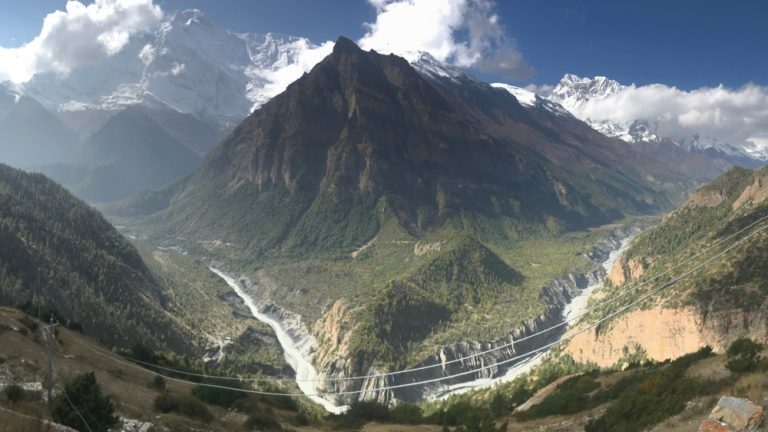
The months of the spring season – March, April, and May
The Spring season is one of the best trekking seasons in Nepal. This season considers the best season because during this season the weather is very clear and offers the best mountain views. Also, temperature-wise during spring is neither very cold nor hot so during this season walking into mountains is perfect.
During the spring season do Annapurna Circuit Trek is not only the best for weather and temperature. Also, the best time to observe the rhododendron flowers in the hilly region. The rhododendron flower is the National flower of Nepal. So that the spring season is the best time to do Annapurna Circuit Trek.
The Autumn season
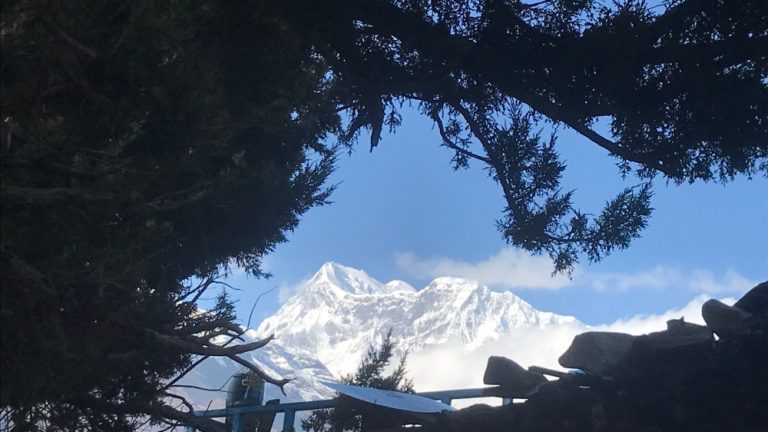
The months of the autumn season – September, October, and November
The Autumn season is the second-best trekking season in Nepal. To do Annapurna Circuit Trekking this season offers the best mountain and landscape scenery. Because, normally the weather, the condition will be clear and can enjoy the blue sky with white snowy peaks.
The second reason why this is the best season for the Annapurna round trek is the temperature in the Annapurna Himalaya. During the autumn season temperature will be cool and fine and that is great to walk in the high Himalayas too. Hance, passing Thorong La 5416m is not that very cold compared to other seasons.
The third reason why this is a great season for ACT trek is festivals. During the autumn season, many festivals will celebrate such as Dashain, Tihar, and Chat. Dashain and Tihar are the biggest festivals in Nepal. So if you are looking for cultural and natural experiences during a trek then choose the autumn season.
Annapurna Circuit Trek during the winter season

The months of winter season – December, January, and February
Well, the winter season is the season of cold and frozen. During this season the mountain region is very clear old and everything is frozen in the mountain. Steam water to reserves water, water in toile to water in tap everything will be frozen. That is why the winter season is not a good time to do Annapurna Circuit Trek.
However, if you are a snow lover, able to play snow, can fight with cold, and have a passion to wait to do something. Then the winter season is for you. I have an experience that I stayed for a week in the high amp because of the snow and was not able to cross Thorong La or back to Manang.
The summer season is also not a good time to do Annapurna Circuit Trek
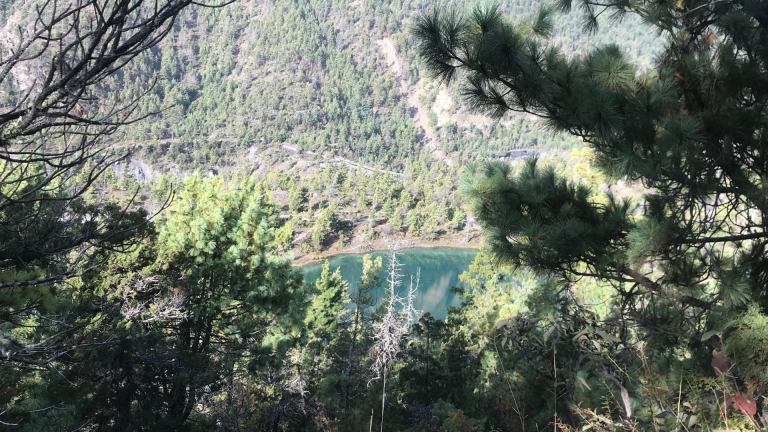
The months of the summer season – June, July, and August
The summer season is the season of hot and wet. Due to hot and cold this is the season of rain and unclear weather. So during this season if you do this journey to Thorong La will not be that good choice. Because you can’t have the best mountain and surrounding views.
Another disadvantage to doing Annapurna Circuit Trek during summer or monsoon season is rain everywhere and wet trails to walk. Leech, the bloodsucker will be the common problem at the lower places. Carrying a raincoat or umbrella is not all the trekkers want.
- Annapurna Circuit Trek Itinerary
This is the standard Annapurna Round Trek itinerary and as a trekking guide, I have walked many times this route. And similarly, I have changed the walking trails and places where the accommodations are available. Therefore this itinerary can be changed as your holiday length and your strength to walk in a day.
During this trek, other side trekking trails can add for more adventure.
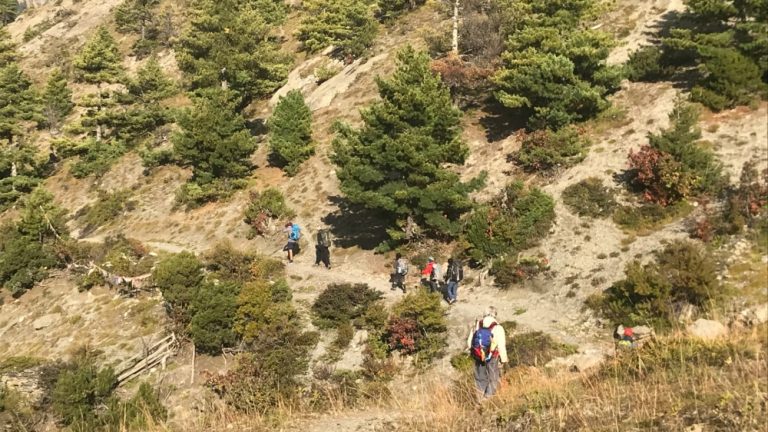
The first one is Nar Phu Trek, Nar Phu trekking trail is a restricted trekking trail and needs a special permit, and that cost a bit more expensive than a normal ACAP permit. But this side of trekking trails is so beautiful and need to pass more than 5000m passes (Kangla Pass)
Addable Nar Phu Trek during Annapurna Circuit Trek
The second option and this is the most common one and most of the trekkers will follow is the Tilicho Lake Trek. During Annapurna Circuit Trek the commonly adorable trek is hiking to the world’s highest Lake. For that, the trekking itinerary goes like this
Require trekking permits for Annapurna Circuit Trek
Annapurna Circuit Trek is a trek inside the Annapurna Conservation Area. So that the first thing you need to do before the trek is buy a conservation area entry permit. This permit can issue from Nepal Tourims Board. It cost 30$ per person and SAARC Nationalities need to pay $15 and for Nepali it’s free entry.
And also need to purchase TIMS Card (Trekking Information Management System Card) for individuals trekkers can buy this permit from Nepal tourism board and for an organize or group trekkers, organizing company will organize everything.
In conclusion,
Annapurna Circuit Trek is a diverse trek so this trek is one of the most popular trekking trails too. This trek starts at a very lower altitude and ends after crossing 5416m Thorong La. This trek can extend with other trekking trails too such as Nar Phu and Tlicho Lake Trek. To have the lifetime trekking experience from the Annapurna Circuit Trek you need to choose the best time of the year. The best season is the spring season and autumn season. I hope reading this article you got some information about a trek to Manang. If yes please comment in the comment section and if not please help me to complete this needed information for the information seekers.
- Best season for Annapurna Circuit Trek
- Best time to do Annapurna Circuit Trek
- Choose the perfect time for a good trekking experience
Leave a Reply Cancel reply
Your email address will not be published.
Save my name, email, and website in this browser for the next time I comment.
You might be interested in

A Comprehensive 11-Day Annapurna Circuit Trek Itinerary
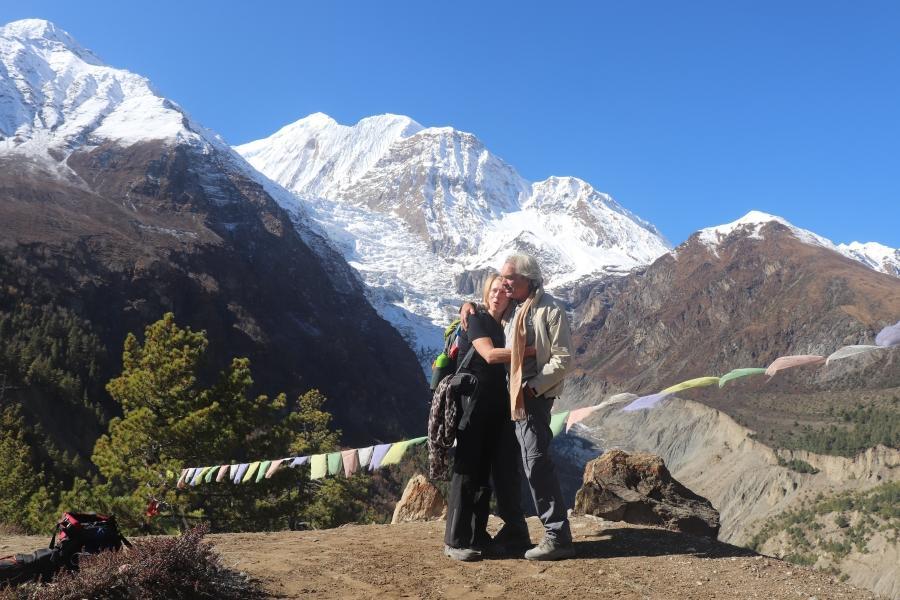
The popular day hiking trail from Manang during Annapurna Circuit Trek
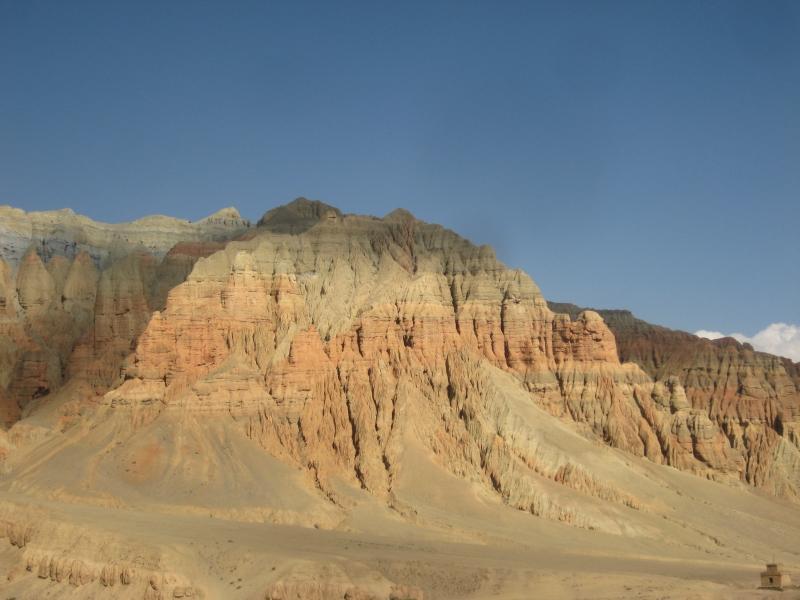
Upper Mustang Trek cost | Outline Itinerary | Difficulties

Passing Thru Travel
The 10 Best Treks in Nepal’s Majestic Mountains 2024
Posted: February 21, 2024 | Last updated: February 21, 2024
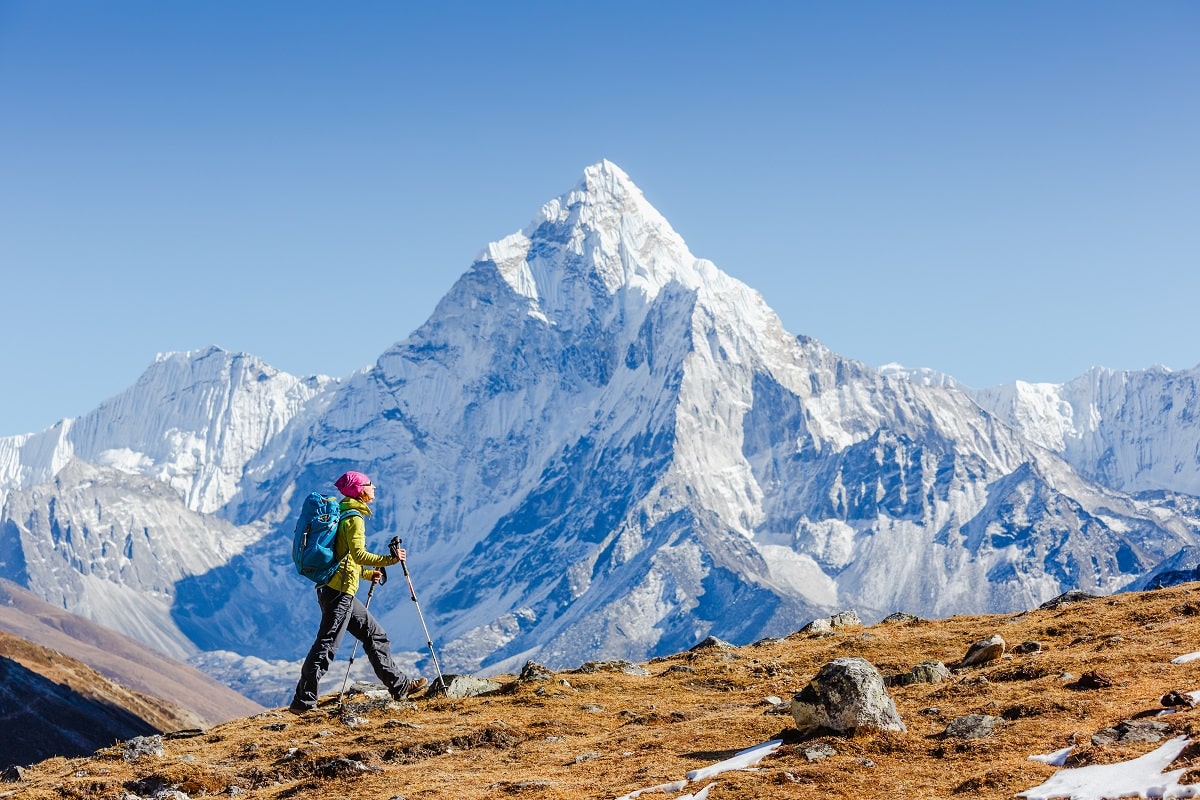
Nestled between the towering peaks of the Himalayas, Nepal is a land of unparalleled natural beauty and a haven for trekkers. From the iconic Everest Base Camp to the serene trails of the Annapurna region, Nepal’s mountains offer a diverse array of trekking experiences, each more awe-inspiring than the last. This guide will take you through 10 of Nepal’s most majestic mountain destinations, providing insights and practical advice for your trekking adventure.
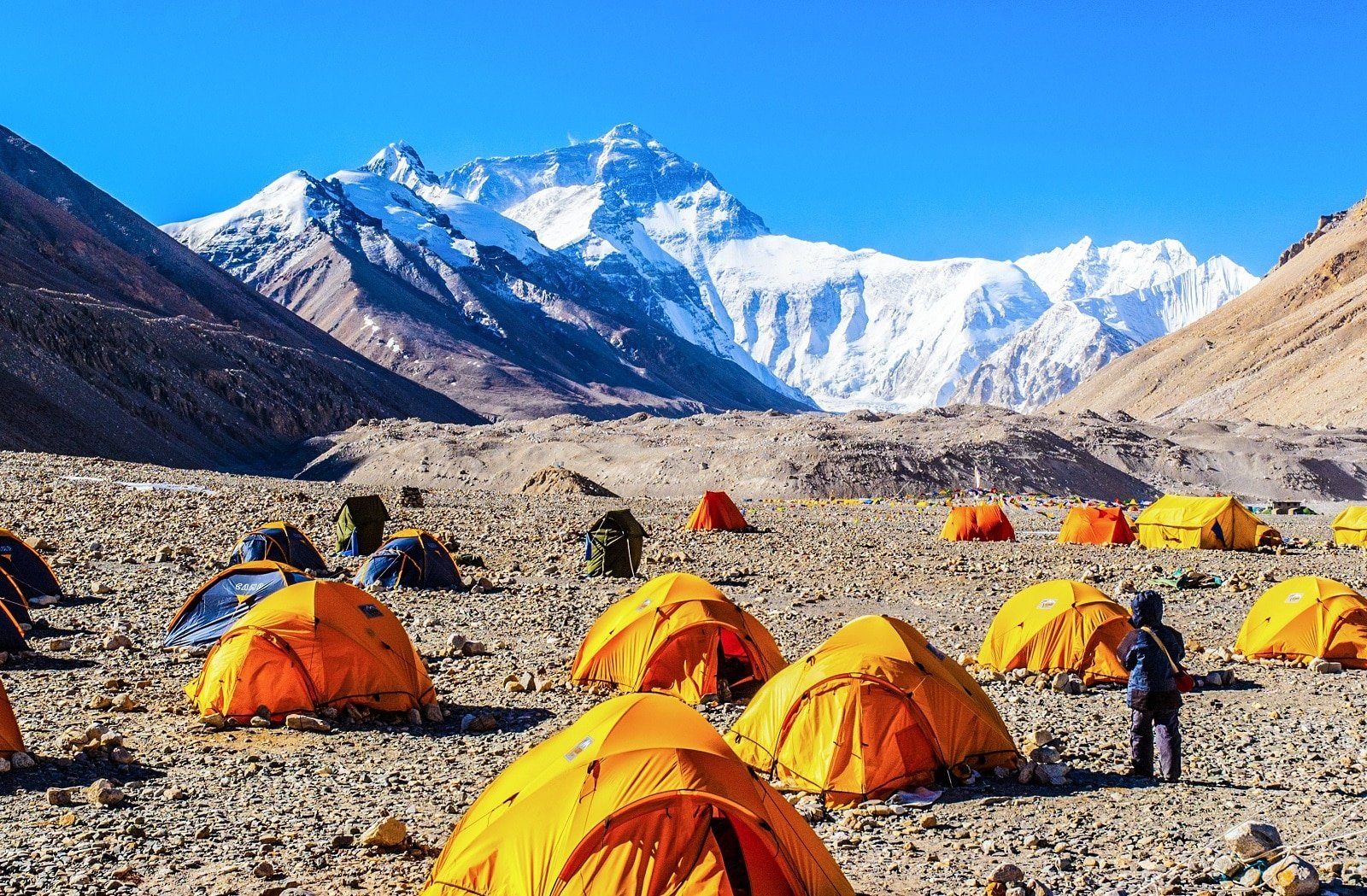
1. Everest Base Camp
Embarking on the Everest Base Camp trek, you’ll journey through the heart of the Himalayas, where the world’s highest peaks, including Everest, Lhotse, and Nuptse, tower above. Starting with a thrilling flight to Lukla, the trek takes you through traditional Sherpa villages, Buddhist monasteries, and along the Dudh Kosi River. The route is challenging yet rewarding, with acclimatization days in Namche Bazaar and Dingboche. The final ascent to Base Camp offers a stunning view of the Khumbu Icefall, making all the effort worthwhile.
Insider’s Tip: Acclimatize properly to avoid altitude sickness.
When To Travel: Pre-monsoon (March to May) or post-monsoon (September to November).
How To Get There: Fly to Lukla from Kathmandu and start your trek from there.
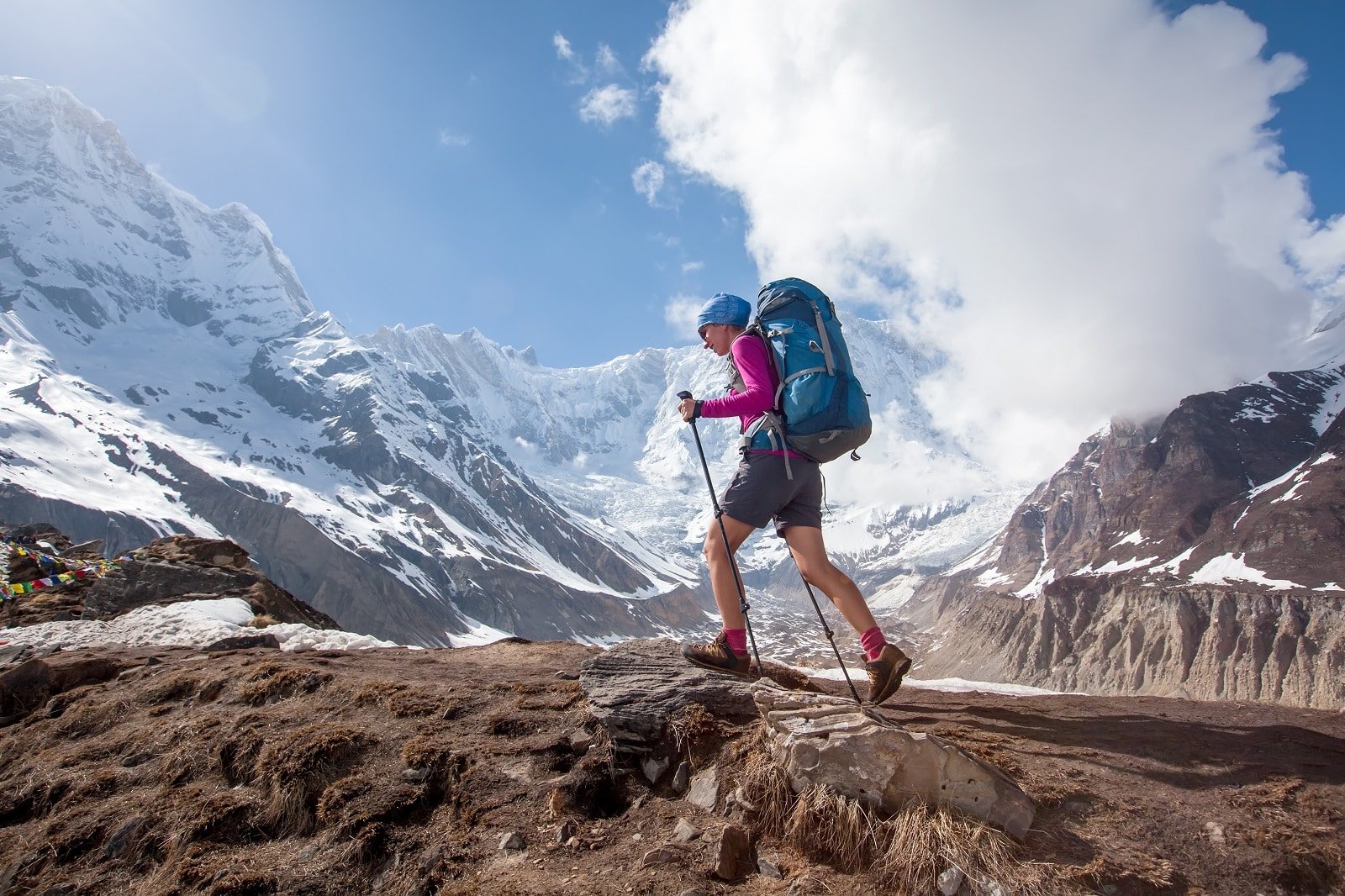
2. Annapurna Circuit
The Annapurna Circuit is a classic trek that takes you around the majestic Annapurna massif. This journey offers a remarkable diversity of landscapes, from the subtropical jungle of the Marshyangdi Valley to the arid, Tibetan-like terrain of the Upper Mustang. Crossing the Thorong La Pass, the trek’s highest point, is a challenging but exhilarating experience. The trek also allows for cultural immersion in the mountain communities of the Gurung and Manangi people.
Insider’s Tip: Take side trips to the ice lakes or Tilicho Lake for additional stunning views.
When To Travel: March to May and October to November for the best weather conditions.
How To Get There: The trek typically starts in Besisahar or Bhulbhule, accessible by road from Kathmandu or Pokhara.
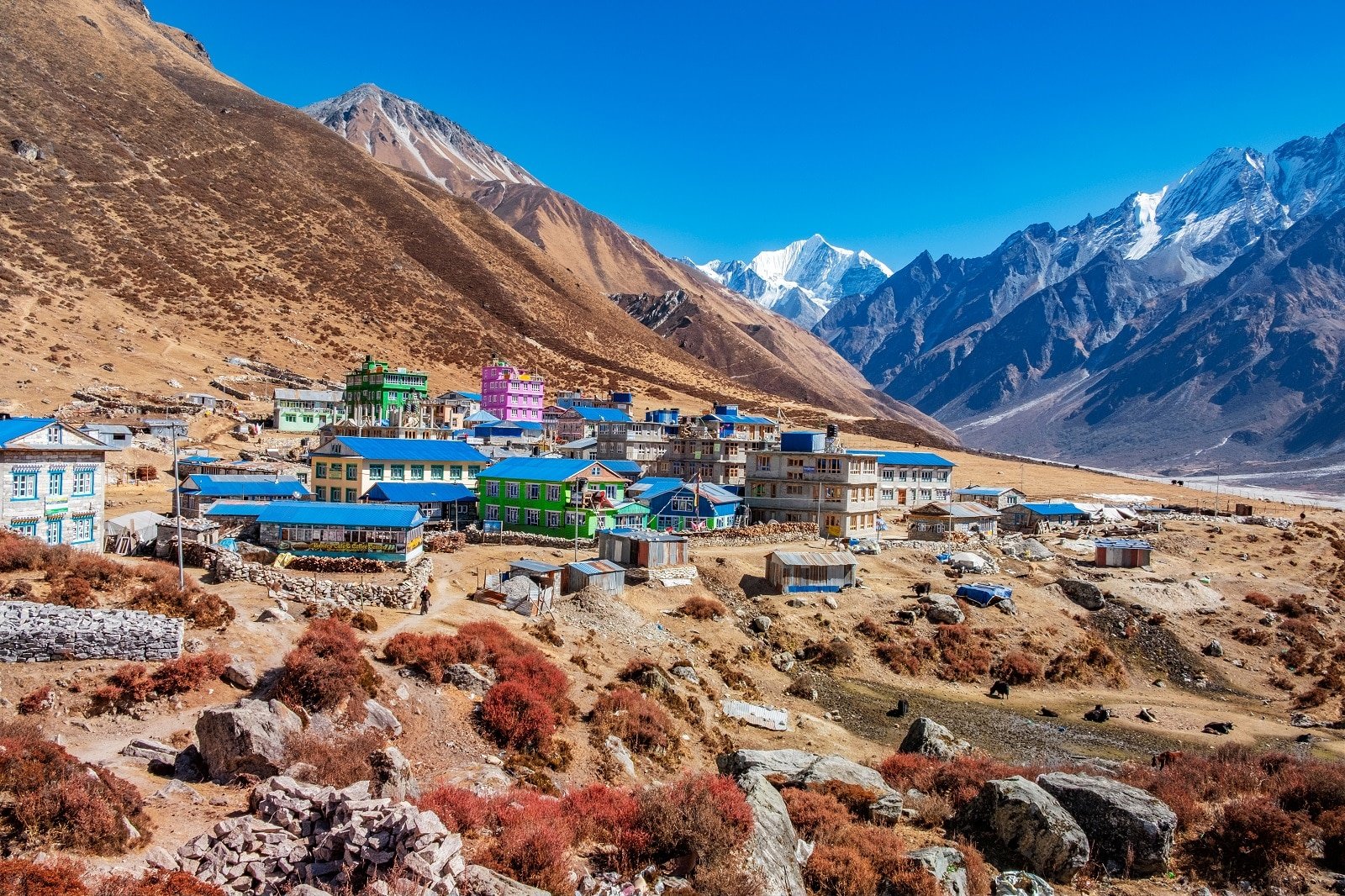
3. Langtang Valley
The Langtang Valley trek offers a quieter, more intimate Himalayan experience. It begins with a drive to Syabrubesi and a trek through forests, pastures, and traditional villages. The valley provides close-up views of Langtang Ri and Langtang Lirung. The trek also includes a visit to Kyanjin Gompa, a significant Buddhist monastery, and an optional climb to Tserko Ri for panoramic mountain vistas. This region was heavily affected by the 2015 earthquake, and trekking here supports local recovery efforts.
Insider’s Tip: Extend your trek to Gosaikunda Lake for a spiritual experience.
When To Travel: March to May and September to November for clear skies and pleasant temperatures.
How To Get There: Drive to Syabrubesi from Kathmandu, the starting point of the trek.
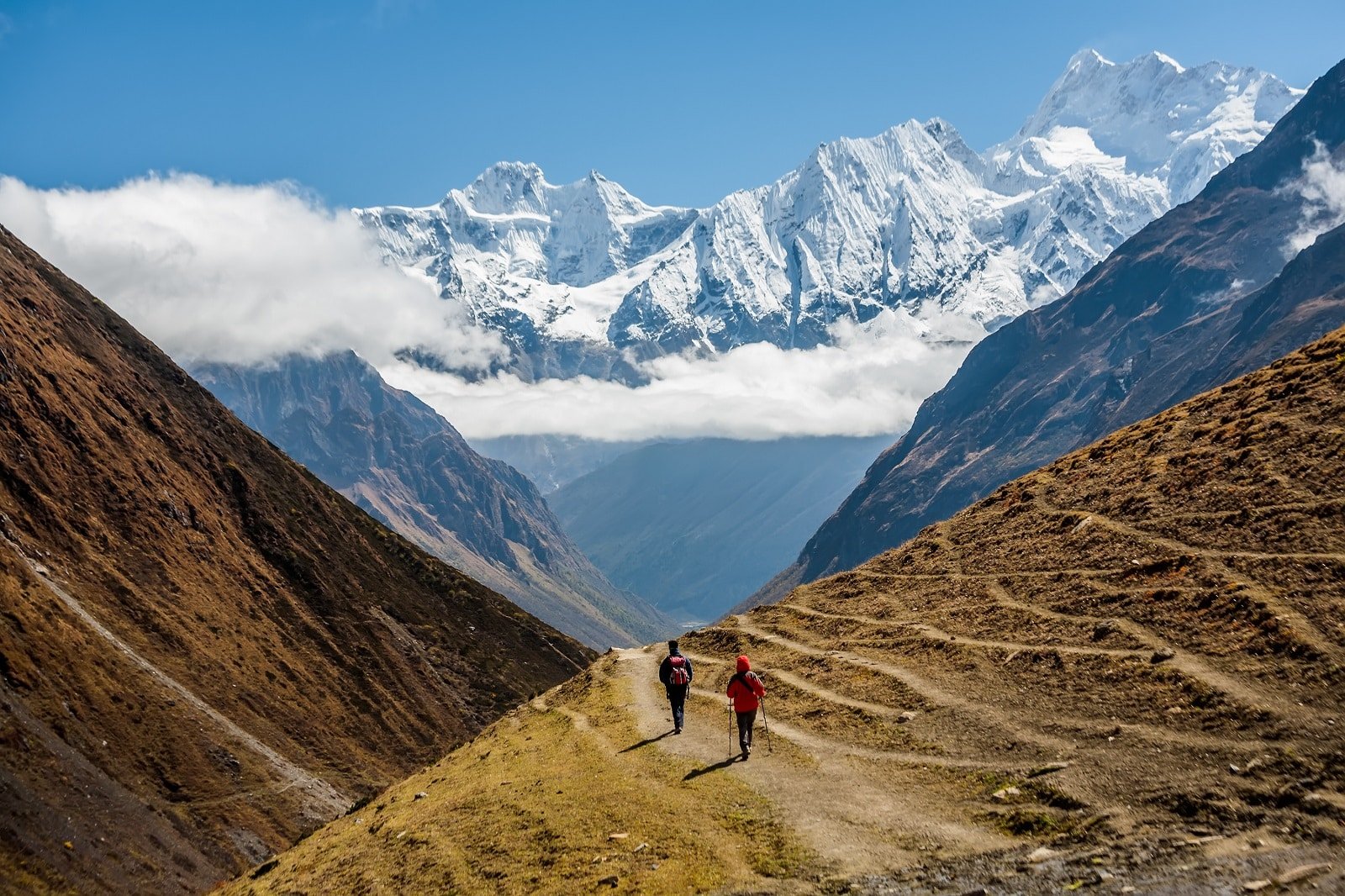
4. Manaslu Circuit
The Manaslu Circuit trek circles the majestic Manaslu, the world’s eighth-highest peak. This trek is less crowded than its more famous counterparts. It offers a look into the untouched natural beauty and culture of the Nepali Himalayas. The trek involves crossing the Larkya La Pass and traverses through Budhi Gandaki Valley, known for its mix of Hindu and Tibetan Buddhist villages. The circuit is a challenging trek, blending cultural richness and scenic splendor.
Insider’s Tip: Ensure you have a guide, as the Manaslu trek requires special permits.
When To Travel: March to May and September to November are ideal.
How To Get There: The trek starts at Arughat or Soti Khola, which can be reached by bus or jeep from Kathmandu.
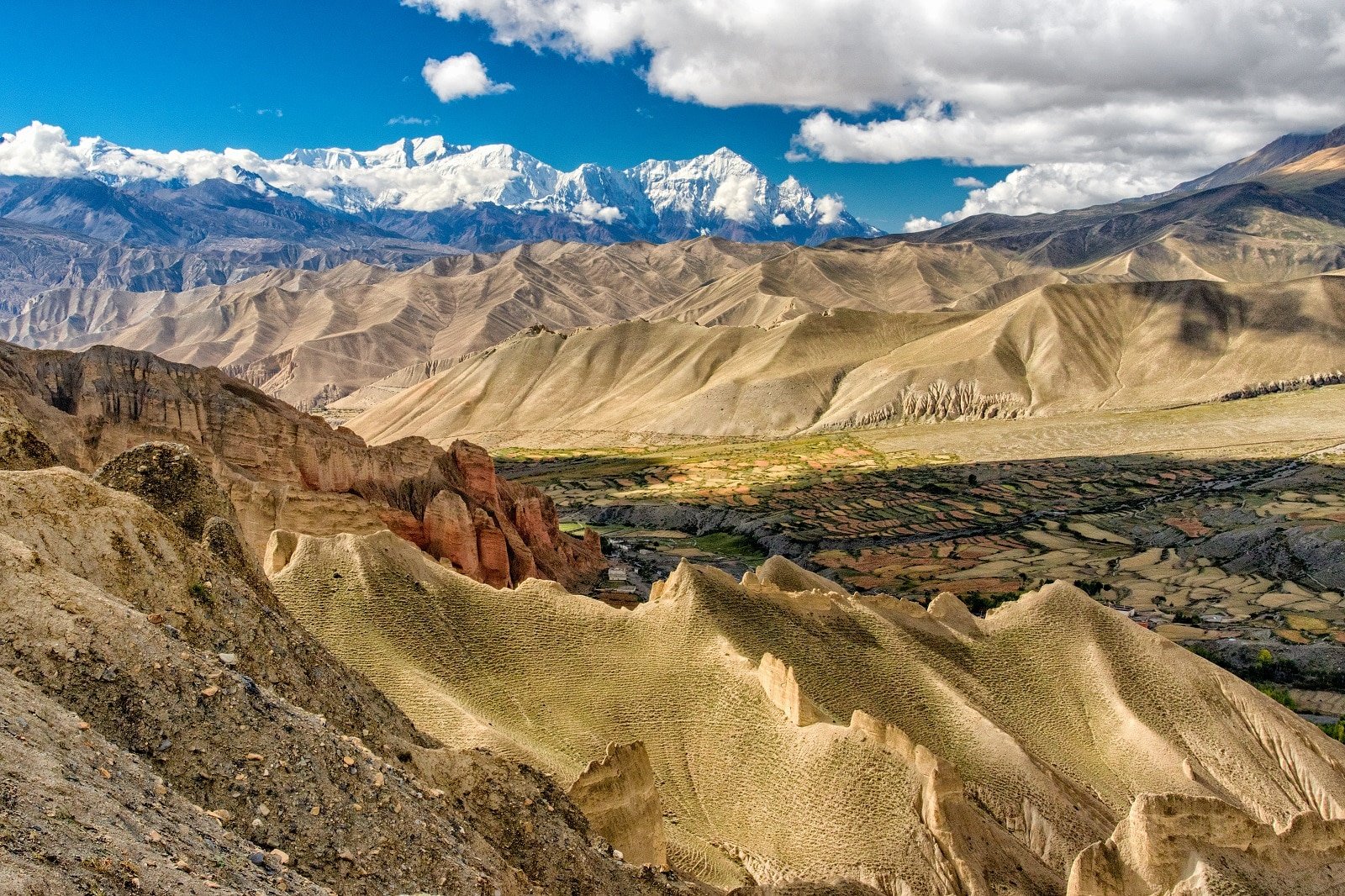
5. Upper Mustang
Trekking in Upper Mustang takes you to a region that was once an independent kingdom. The landscape here is more desert-like, characterized by eroded canyons and colorful stratified rock formations. Lo Manthang, the walled capital, is a highlight, with its monasteries and royal palace. This area is culturally and geographically more akin to Tibet, offering a unique trekking experience distinct from the rest of Nepal.
Insider’s Tip: Visit the ancient monasteries and the royal palace in Lo Manthang. Stay at the beautiful Shinta Mani Mustang.
When To Travel: May to October, as the region lies in the rain shadow area.
How To Get There: Fly or drive to Jomsom, then trek or drive to Lo Manthang.
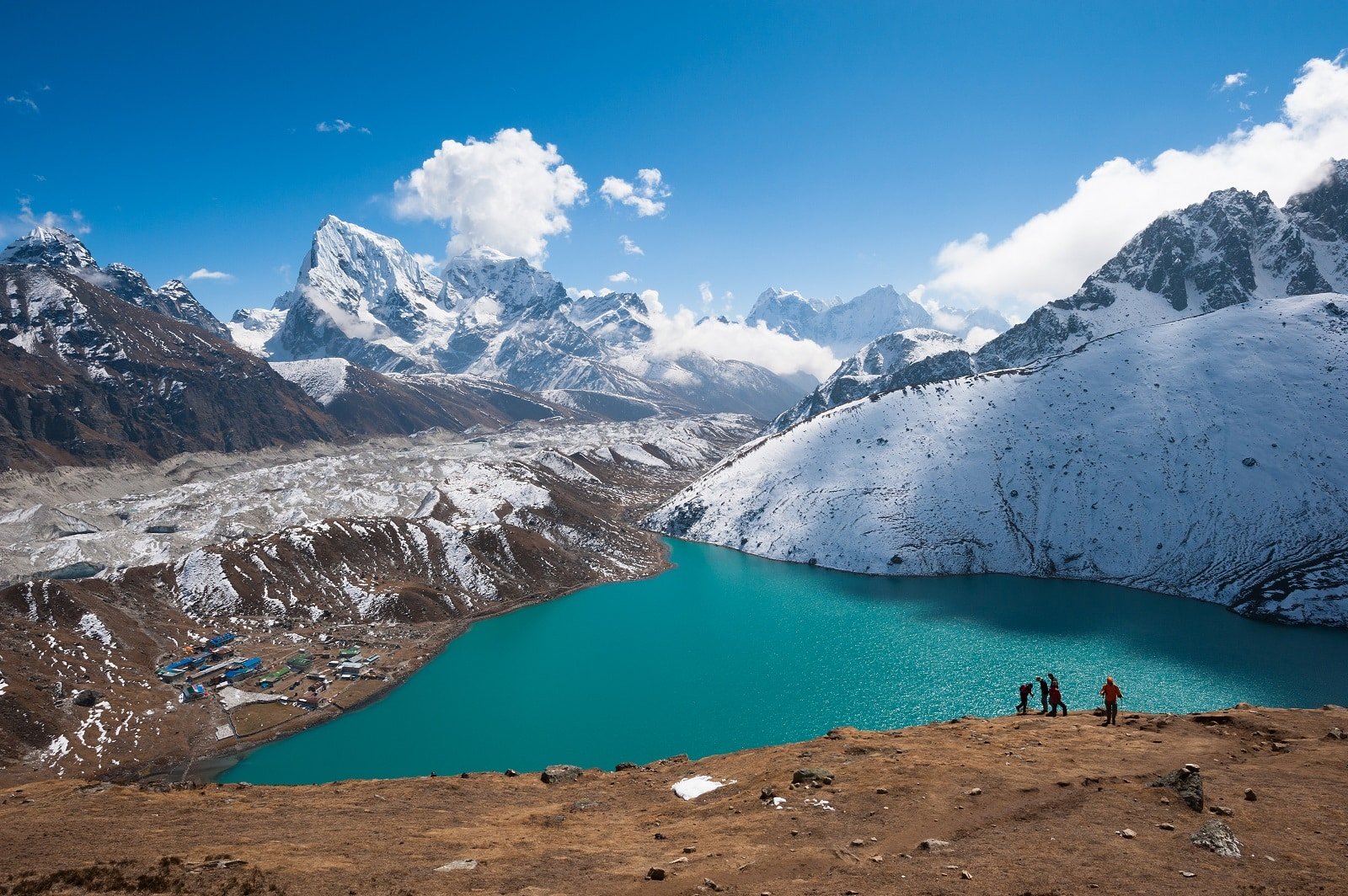
6. Gokyo Lakes
The Gokyo Lakes trek is a fantastic alternative to the Everest Base Camp trek, taking you to a series of stunning high-altitude lakes in the Gokyo Valley. The trek is less crowded and provides spectacular views of Everest and surrounding mountains. Climbing Gokyo Ri offers one of the best viewpoints in the Everest region. The trek passes through Sherpa villages, offering insight into the local culture.
Insider’s Tip: Trek during the full moon for spectacular night views of the mountains.
When To Travel: March to May and September to November for the best weather.
How To Get There: Similar to Everest Base Camp, fly to Lukla and follow a different trail.

7. Poon Hill
The Poon Hill trek is ideal for those looking for a shorter hike in the Annapurna region. It’s known for offering some of the most spectacular mountain views, especially at sunrise from Poon Hill itself. The trek passes through rhododendron forests and Gurung villages, giving you a chance to experience the culture of the central Himalayan region. The trek starts and ends in Nayapul, a short drive from Pokhara.
Insider’s Tip: Carry enough cash, as there are no ATMs on this route.
When To Travel: October to November and March to April for clear skies and good weather.
How To Get There: The trek starts from Nayapul, which is a short drive from Pokhara.
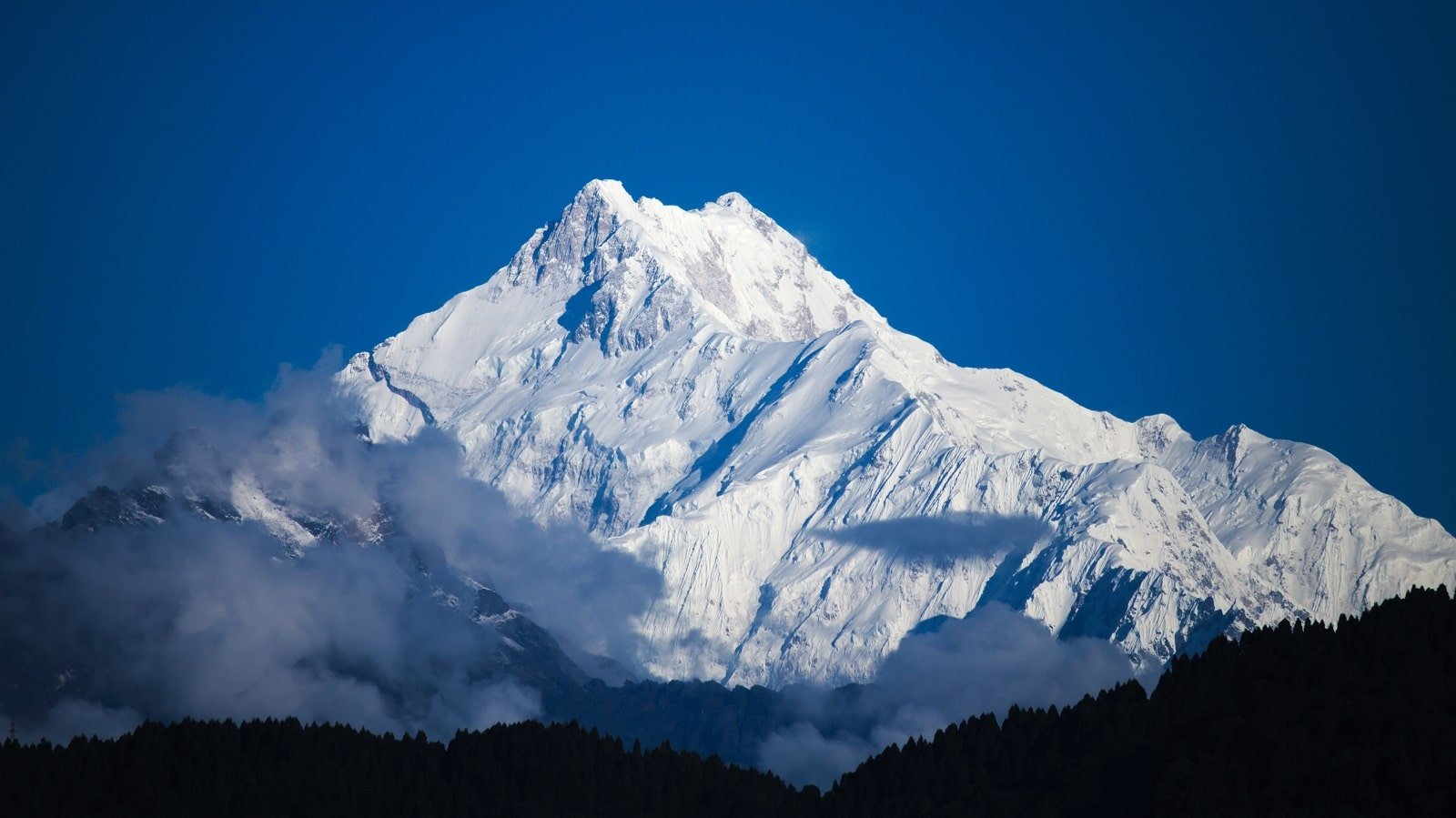
8. Kanchenjunga Base Camp
The Kanchenjunga Base Camp trek is a challenging and adventurous journey to the base of the world’s third-highest mountain. This remote trek offers stunning views of Kanchenjunga and a chance to experience pristine wilderness. The trek passes through diverse ecosystems, traditional villages, and high alpine terrain. It’s a trek for those seeking solitude and unspoiled nature.
Insider’s Tip: Be prepared for basic accommodations and facilities, as this is a less developed trekking route.
When To Travel: March to May and September to November for stable weather.
How To Get There: Fly or drive to Bhadrapur, then drive to Taplejung, the starting point of the trek.
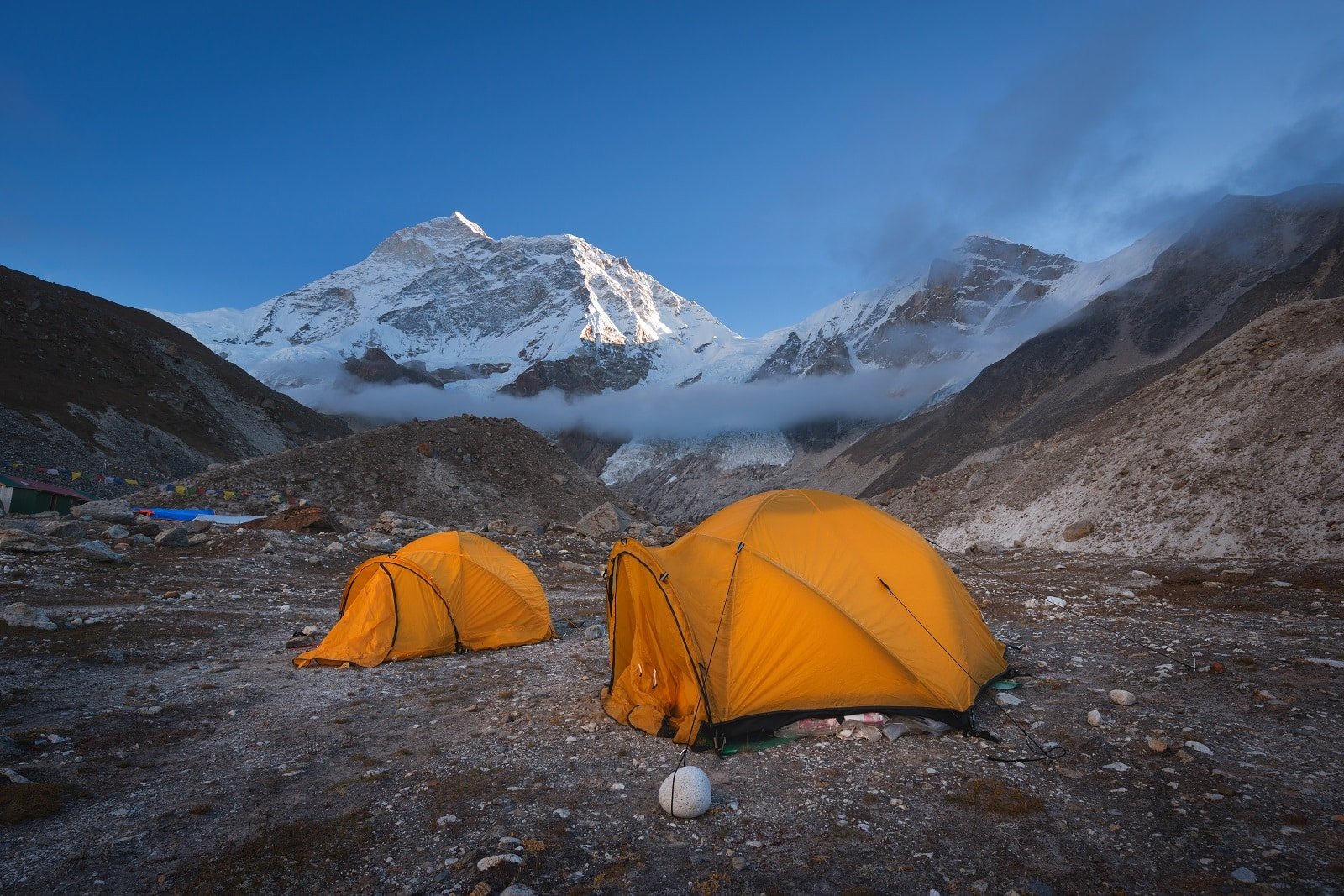
9. Makalu Base Camp
The Makalu Base Camp trek is a challenging journey to the base of Mount Makalu, the world’s fifth-highest mountain. This trek takes you through some of Nepal’s most remote and wild areas, offering stunning views of the eastern Himalayas. The Makalu Barun National Park, through which the trek passes, is a biodiversity hotspot with a rich variety of flora and fauna.
Insider’s Tip: Be physically and mentally prepared for a challenging trek with basic facilities.
When To Trave: Pre-monsoon and post-monsoon periods for the best conditions.
How To Get There: Fly to Tumlingtar from Kathmandu, then drive to Num, the starting point of the trek.
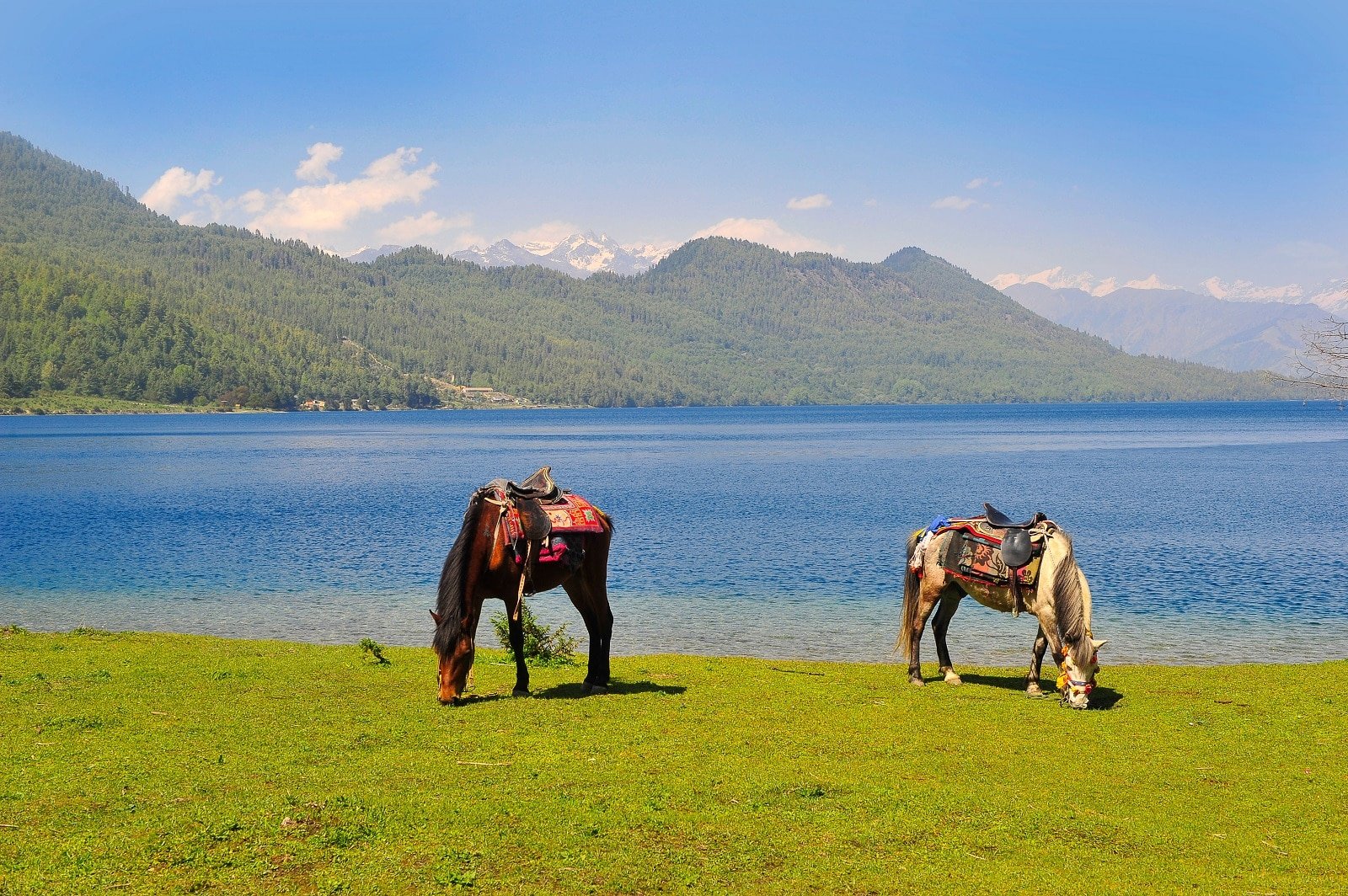
10. Rara Lake
Trekking to Rara Lake offers a serene experience away from the more popular trekking routes. Rara, the largest lake in Nepal, is known for its clear blue waters and scenic beauty. The trek to the lake is an adventure in itself, passing through remote Jumla and Mugu districts. The area around the lake, Rara National Park, is home to a variety of wildlife and offers tranquility unmatched in other parts of Nepal.
Insider’s Tip: Visit the nearby Rara National Park for a chance to see unique wildlife.
When To Travel: September to October and April to May for the best trekking conditions.
How To Get There: Fly to Nepalgunj from Kathmandu, then to Jumla, from where the trek to Rara Lake starts.
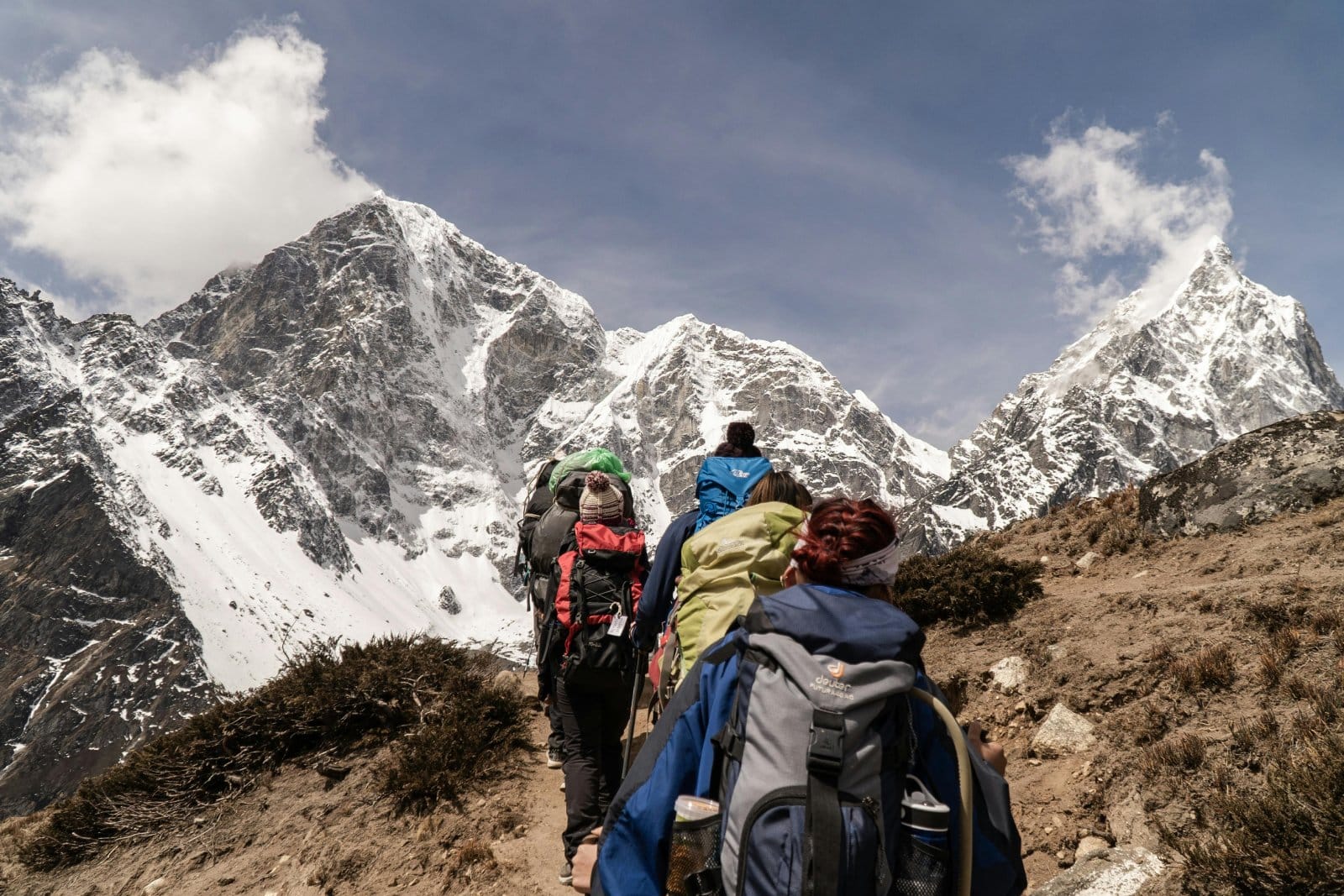
The Bottom Line
Trekking in Nepal is more than a physical journey; it explores some of the most majestic landscapes on Earth. Each destination offers its unique charm, from the world-renowned Everest Base Camp to the tranquil trails of Rara Lake. As you trek through these mountains, you’ll not only witness breathtaking vistas but also immerse yourself in the rich culture and hospitality of the Nepali people. Pack your bags, lace up your boots, and prepare for an adventure that will leave you with memories to last a lifetime.
More Articles Like This…
Barcelona: Discover the Top 10 Beach Clubs
2024 Global City Travel Guide – Your Passport to the World’s Top Destination Cities
Exploring Khao Yai 2024 – A Hidden Gem of Thailand
The post The 10 Best Treks in Nepal’s Majestic Mountains 2024 was republished on Passing Thru with permission from The Green Voyage .
Featured Image Credit: Shutterstock / Olga Danylenko.
For transparency, this content was partly developed with AI assistance and carefully curated by an experienced editor to be informative and ensure accuracy.
More for You
‘A big mistake’: Ex-Trump White House lawyer reacts to Trump’s mention of Charlottesville
Major Steakhouse Chain Closes 41 Locations
Do I have to pay off my spouse's debts when they die? Here's what you're responsible for and what you aren't after a loved one's death
How Much Beer You'd Have To Drink To Equal A Single Shot Of Liquor
Megan Fox Signs With UTA
Here’s Why There Are 10 Hot Dogs in a Pack, But Only 8 Buns
Unsellable Houses' Lyndsay Lamb Says Buyers Are Moving Away From This Color Trend
The most dangerous state to drive in in the US, according to data—plus, see where your state ranks
5 Things the Average Retiree Won’t Be Able to Afford in the Next 5 Years
18 Vintage Boy Names No One Else Is Using Yet
Kid shows off impressive dance moves after having ‘too much’ soda
Martin Lewis issues warning to people choosing air fryer over oven
Why You Should Think Twice Before Pouring Boiling Water Over Ant Hills In Your Yard
Ghosts of the USA: The Most Haunted Places in America
Trump campaign accused of breaking federal law by hiding millions in legal payments
I Lost 100lbs by Following 4 Rules
Here’s What the US Minimum Wage Was the Year You Were Born
NYPD Chief Hits Back at AOC over Columbia Anti-Israel Protests: ‘Self-Entitlement’ Doesn’t ‘Supersede the Law’
Want the Max $4,873 Social Security Benefit? Here's the Salary You Need.
The 10 happiest places to live in the US

IMAGES
VIDEO
COMMENTS
Many people say that the best time for trekking in Nepal is autumn, from September to November, but it is not that easy as every season has several pros and cons. Sure, autumn might be the safest option, and if you are looking for a straightforward tip on the best months to hike Annapurna Circuit, you do not have to read any further.
The No. 1 trekking guide to the classic Annapurna Circuit trek. Find all the information you need about permits, routes, altitudes, and maps. ... Unfortunately these also happen to be the busiest times of the year as they are the best time for Nepal trekking.. ... Unlike the Everest region that gets very wet during the rainy monsoon season, the ...
The best time to trek Annapurna Circuit is spring from March to May and autumn from September to November. These seasons offer moderate temperatures, clear skies, little-to-no rain, and less chance of snowfall. Annapurna Circuit Trek traverses a vast region from tropical to alpine zones, so the trek experiences a wide range of climatic ...
The Annapurna Circuit and Beyond: Ultimate Guide to Hiking in Nepal (2024) Until 1951, Nepal was off-limits for foreign travellers; a secretive, isolated kingdom kept under wraps from outsiders…. But a change of regime gave birth to a new era of travel, and Nepal has remained a magnet for intrepid adventurers for over 70 years.
For these reasons we think that the best time to hike the Annapurna Circuit is in autumn, as this is when the weather is mild and the trek route most secure. The Annapurna Circuit can be trekked all year round. But spring and autumn offer the best trekking conditions - that's February to May, and September to early December.
Best Season. Generally, the best (and busiest) time to trek the Annapurna Circuit is the spring and the fall, although a shortened itinerary (focusing on the northern, drier region of the circuit) is a great option during the monsoon. It's only during the winter that causes issues as Thorung La pass if often closed due to snow. Accessing this Trek
It's one of the world's classic long-distance hiking trails, and still one of Nepal's most popular treks. The Annapurna Circuit, a 12 to 21-day route that begins in the lush green villages of the Himalayan foothills. Taking trekkers over the 5,416m Thorong La Pass and down to the Tibetan-influenced temples and communities of the Mustang ...
Overview of the Annapurna Circuit Trek. Duration: 8 - 21 days (depends on transportation used - see Duration section below) Change in Altitude: 790m at Besisahar to 5416m at Thorong La Pass. Distance per day: 10+ km. Total Distance: 230 km from Besisahar to Birethani. Best season: April-May, September-November.
The weather in Nepal is best suited for any trek during two seasons. The best time to visit the Annapurna circuit is during March-May or September - November. You will find more people trekking during October as this is one of the busiest months in the Nepali Tourist Industry. It is advised to avoid June - August as this is mostly the rainy ...
Days required: 10-13 days. Total Incline: 8000 meters. Total Decline: 7000 meters. The highest point on the trek: The two highest points on the trek are Tilicho Lake (4,919m) and the Thorong La Pass (5,416m). Difficulty: The difficulty of the Annapurna Circuit Trek depends a lot on how many days you have.
The Annapurna Circuit Trek is a true classic in Nepal. Find here your itinerary, cost, map, best season, and more tips. ... When to Go Annapurna Circuit. Monsoon season in Nepal is June through September. That's when most of the rain falls and when rock and mudslides are most likely to occur. ... The best time to do the Annapurna Circuit is ...
The best season for this trek is in Spring (March to May) and Fall (September to December). During these periods, the weather is almost flawless with moderate warmth & usual cool nights. The Annapurna Circuit is best (and busiest) trekked in the spring and fall, though a shortened itinerary (focusing on the circuit's northern, drier region) is ...
The best time to trek Annapurna Circuit is determined by two factors: weather and crowds. The drier seasons attract many visitors, whereas the wetter seasons are less busy. ... From September through November is the busiest trekking season in Nepal. It is the time just after the monsoon when everything is refreshed, washed clean and vibrant ...
This is the ideal season to do the Annapurna Circuit trek. September still sees light rainfalls and humid weather in the lower regions of the trek. Late November sees slightly colder weather with chilly mornings and nights. It is refreshing and often considered the best months to trek in Nepal.
The view of the Annapurna Mountain Range from Upper Pisang, Annapurna Circuit Trek Day 5 Manang to the Ice Lakes (4,650 m) and Back. Manang was my last stop in the Annapurna Circuit Trek because even though I wanted to visit Tilcho Lake and conquer the Thorung-La Pass I was short on time and I didn't acclimatize properly in my rush to see the best Annapurna viewpoints with my limited time.
Trekking the Annapurna Circuit in Autumn Season (September to November) Peak Trekking Season: September to November heralds the arrival of autumn in Nepal, marking the peak trekking season in the country. With comfortable conditions and a festive atmosphere, autumn is widely regarded as the best time to visit Nepal, offering an ideal setting ...
March. The first month of the most pleasant Spring season, March, is a fantastic time to visit Annapurna Circuit. It is the time of the month when flowers and grasses bloom. The hills and fields are typically thick with rhododendrons and oaks. The atmosphere is gradually warmed during the winter, allowing it to depart.
Annapurna Circuit Trek Trip Description. Annapurna Circuit Trek is the 2 weeks over long adventure trekking around the Annapurna massifs and other giant mountains in the Annapurna Region of Nepal. This trekking is also popularly known as Annapurna Circuit Trek. Annapurna Round Trek route goes counter-clockwise from Besisahar to Nayapul reaching its summit in Thorung La Pass at altitude of 5416m.
The wildflowers and other vegetation blooming their best add to the springs' beauty. Annapurna Circuit trek is the Summer/Rainy/Monsoon season. As the summer ends, Nepal welcomes the summer season, which is full of rain. Continuous and heavy rainfall is a major concern for the Annapurna Circuit trek in the Monsoon season.
The Everest trek gets you closer to the heart of the high mountains than the Circuit, which offers more in the way of traditional village life. Finally, Everest Base Camp is an out-and-back trek, so you'll repeat some sections, whereas Annapurna is by its nature an A to B loop. Annapurna's trails start an hour's drive from the town of Pokhara ...
The Annapurna Sanctuary and Circuit, the two main Annapurna treks, have numerous trekking lodges of a very high standard., some bordering on luxurious. Hot showers, wi-fi, and international menus are common. Nar-Phu and Khopra Ridge are earthier with limited and very basic homestay style lodges which fill up quickly.
The Autumn season is the second-best trekking season in Nepal. To do Annapurna Circuit Trekking this season offers the best mountain and landscape scenery. Because, normally the weather, the condition will be clear and can enjoy the blue sky with white snowy peaks. The second reason why this is the best season for the Annapurna round trek is ...
Once in a lifetime trek - Completed the Annapurna circuit trek in November 2023 with Adventure Bound Nepal. Our guide Rabin was unreal and so helpful throughout the whole trek, he went above and beyond daily to entertain and motivate us, as well as providing us with interesting information about the history of Nepal along the way.
2. Annapurna Circuit. The Annapurna Circuit is a classic trek that takes you around the majestic Annapurna massif. This journey offers a remarkable diversity of landscapes, from the subtropical ...
78 likes, 0 comments - annapurnabasecamp on April 26, 2024: " Manaslu Circuit Trek in Nepal ‼️ Booking ... Open 2024/2025‼️ Photo Cardit @unknown ️Manaslu Circuit Trek is...". 🏔️👣10 Best Annapurna Tours & Trips 2024/2025🏔️ | 📍Manaslu Circuit Trek in Nepal 🇳🇵 ‼️ Booking ...
Manaslu Circuit Trek Cost. The permit cost to the restricted area of Manaslu can be quite expensive i.e. around $100 in peak season. Transportation charges to Maccha Khola can range from $10 to ...
66 likes, 0 comments - annapurnabasecamp on October 11, 2022: "‼️ MANASLU TREK BOOKING OPEN FOR 2023‼️ Manaslu Circuit Trek - 17 Days Organized Team : Nepal ...
202 likes, 0 comments - annapurnabasecamp on April 23, 2024: "14 Day's Annapurna Circuit via Thorong pass Trek -Nepal Well, that hike takes 12 days… Voted as one of ...